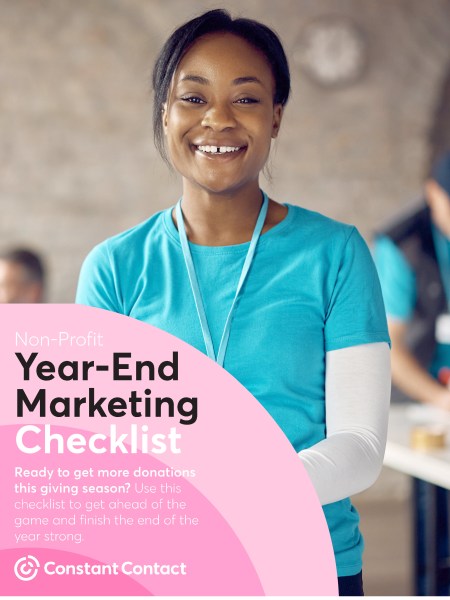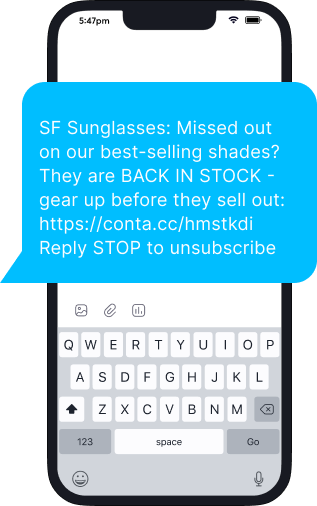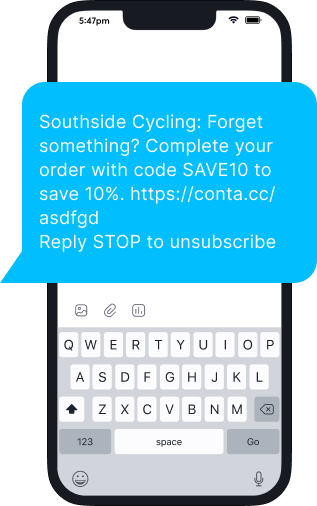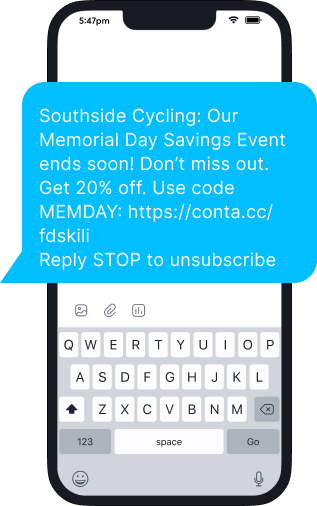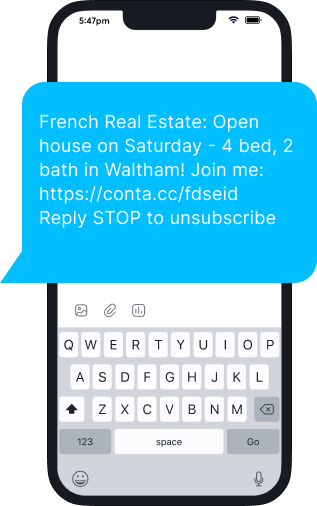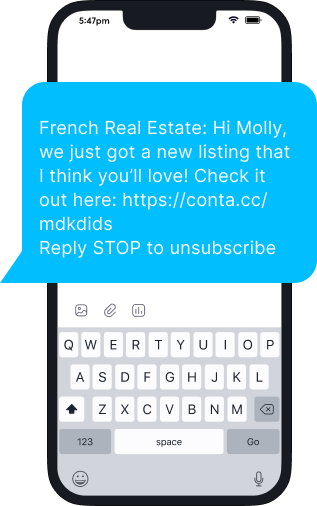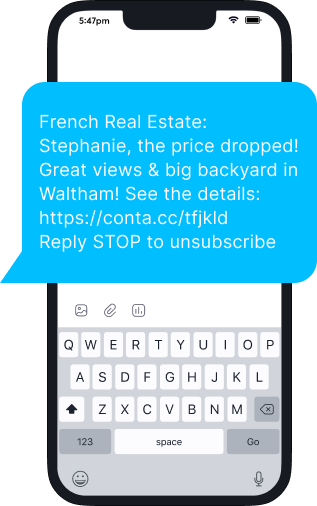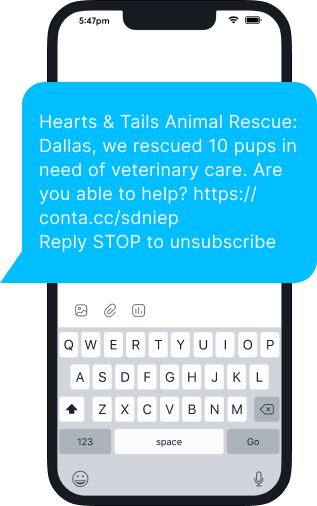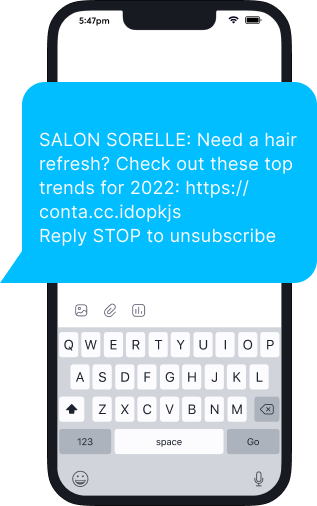Every time you attract a new customer, it’s a win for your organization. However, keeping customers long-term is even better. Your loyal customers are likelier to purchase more frequently from you, increasing their lifetime value.
Companies focusing on customer retention rather than constantly chasing new clients can build a devoted audience that brings in consistent sales. A single happy customer might buy from you multiple times a year, whereas a new client might purchase once and then forget all about your organization.
In this article, we’ll discuss the aspects of a solid customer retention strategy, how to build one, and the three R’s of marketing — retention, refinement, and relationship.
Understanding why customer retention is crucial
Chances are you have a few brands you like to purchase from. Maybe you’re a dedicated Nike fan or drink Diet Coke regularly. Whatever your favorites are, you know you’ll buy from them when needed. You’re a loyal customer, and your purchases are a part of your favorite brand’s regular income stream.
When you try to retain customers, you’ll see steadily increasing revenues. Boosting customer retention by just 5% can enhance profits anywhere from 25 to 95%. And you’ll find it much easier to make sales to existing customers, the probability of which increases by 60 to 70%.
The four stages of customer retention
You can categorize your customer retention marketing strategies into four phases.
- Research: Your first step is to define what your customers want from you. What can you provide them that other companies don’t? What will encourage them to stay with you? Understanding what your clients want can help you meet their expectations.
- Develop your offerings based on research: Use your client’s expectations and feedback to create and refine your products and services.
- Consider a loyalty or rewards program: Offering a loyalty or rewards program may increase customer revenues and lead to a higher customer lifetime value.
- Personalize your retention strategy: Customers want to feel they matter, and there’s no better way to appeal to their emotions than personalization.
Key metrics for measuring customer retention
How do you know whether your customer retention efforts are working? By measuring them! Here are a few metrics that can help you analyze customer retention.
Customer retention rate and how to calculate it
The formula to calculate the customer retention rate (CRR) is pretty straightforward:
CRR = ((Customers at end of the period – New customers during the period) / Total customers at the start of period) x 100
So, say you start the quarter with 500 clients. By the end of the quarter, you have 750 customers and acquire 400 new ones. Your CRR is 70%, or ((750 – 400) / 500) x 100.
Customer churn rate and lifetime value
Customer churn rate and lifetime value are other metrics that help evaluate e-commerce customer retention strategies.
The churn rate is the percentage of people who stop buying from you during a period. It’s frequently used in subscription businesses, where subscribers pay a set fee over specific periods.
Lifetime value estimates how much a customer will spend with your brand over time. For example, a repeat buyer who likes your restaurant’s pizza might make it a bi-weekly household staple. Over a year, they might spend $650, or $25 every two weeks, on a pizza.
Understanding purchase frequencies and repeat customer rates
Purchase frequency refers to the average number of times a client buys from you during a specific timeframe. Repeat customer rates indicate how many clients purchase from you after their initial investment. Understanding both is essential to estimating customer retention rate, lifetime value, and churn. The higher your purchase frequency and repeat customer rates, the stronger your customer retention rate will be.
Proven customer retention strategies
Since high customer retention can dramatically impact revenues, implementing a few strategies to improve your retention rate is vital. Here are a few options to consider.
1. Offering strong customer support and omnichannel reach
Clients want to feel appreciated and valued. Providing robust customer service demonstrates your commitment to their needs. Make it easy for customers to contact you when they have an inquiry. Provide a few channels they can use to request help, such as a dedicated phone line, website chatbot, and email. If you have a physical storefront, train your employees to respond effectively to onsite customer service issues.
2. Personalizing customer interactions and outstanding service
Whenever you communicate with a client, go above and beyond to personalize your interactions and provide top-notch service. One-on-one communications, such as emails, SMS, phone calls, and onsite discussions, should be tailored to meet specific client needs and interests. For example, you can segment your marketing emails to target different customer groups or refer to a client’s past purchases in an SMS text.
3. Incentivizing loyalty and engagement through referral programs
A referral program encourages clients to recommend your brand to their colleagues, friends, family members, and others who may need your products. Customers who participate earn incentives, like free products or services, discounts, or other rewards. Implementing a referral program can boost your sales and customer retention rates since clients know their recommendations will bring value to them.
4. Building customer communities and continuous feedback loops
When you have a loyal audience, they’ll pay attention to your ads, promotions, and content. Your customers will engage with your brand by visiting your website, following your social media posts, and taking action on other marketing materials.
Once a customer buys from you, follow up with them about their experience. Ask for feedback about your products, customer service, and purchase process. If clients mention anything they don’t like, work to resolve the issue so future customers have a positive experience.
5. Innovative program structures to enhance retention
Some companies find they can improve customer retention by adopting a subscription-based business model. Under a subscription model, clients can access your products or services by paying a regular fee, typically monthly or quarterly. Subscription models can substantially increase customer retention since clients only receive products if they continuously pay for them.
If a subscription model isn’t a suitable fit for your business, consider implementing a loyalty program that rewards customers for their purchases. For instance, you might offer clients a discount on future purchases based on the loyalty points they accrue with you.
6. Creating positive experiences and brand ambassadors
Any time someone shops with your brand, give them an end-to-end experience they’ll want to share with others. If people shop with you online, ensure your website is easy to navigate, the purchase process is seamless, and you have helpful customer support tools. Onsite businesses should provide a clean and orderly storefront and pleasant customer service reps.
Customers with a satisfying shopping experience are 72% more likely to tell others about it.
7. Surpassing customer expectations and leveraging consumer behavior
Find ways to go above and beyond to meet your client’s needs. Today’s customers expect only the best from the brands they purchase from and are quick to note if your products or services don’t deliver. From your first interaction with a client to the time following their purchase, give them a unique experience that will keep them returning for more.
Integrating customer retention into business operations
Customer retention requires more than effective marketing and customer service initiatives. For optimal results, incorporate your customer retention efforts into all aspects of your business operations.
Onboarding processes and ongoing customer education
When a new client expresses an interest in your brand, encourage them to sign up for your email marketing and SMS texts. You can invite customers to follow your social media channels and direct mailing lists. Use your marketing platforms to educate clients about your products and services or provide relevant content that fits their interests.
Keeping products and services in customers’ minds
Regularly reminding clients what your brand offers ensures they don’t forget about you. Maintain consistent marketing strategies that cement your company’s name among your following. Send out retention emails and SMS texts steadily (but not overwhelmingly!) and keep your social media channels active.
Utilizing analytics and data for retention improvements
As you implement customer retention strategies, establish key performance indicators (KPIs). Metrics such as customer retention rate, churn, lifetime value, and repeat purchase rate evaluate client satisfaction and retention. Set benchmarks for your target retention objectives and work to meet them. If you fall short of your goals, look for ways to improve your retention strategies.
Retention strategies that work: case studies
There are several brands known for their highly effective B2B SaaS customer retention strategies. Take a look at these customer retention strategies examples.
Amazon
Amazon is known for its easy-to-navigate website that offers millions of products, including household items, books, clothing, and electronics. Customers who create an Amazon account receive personalized shopping recommendations based on their prior purchase history. The brand also offers regular sales for subscribing members, such as Prime Day. Clients can purchase items using their one-click checkout without reentering their billing or delivery details. Some products are available with same-day or next-day delivery services.
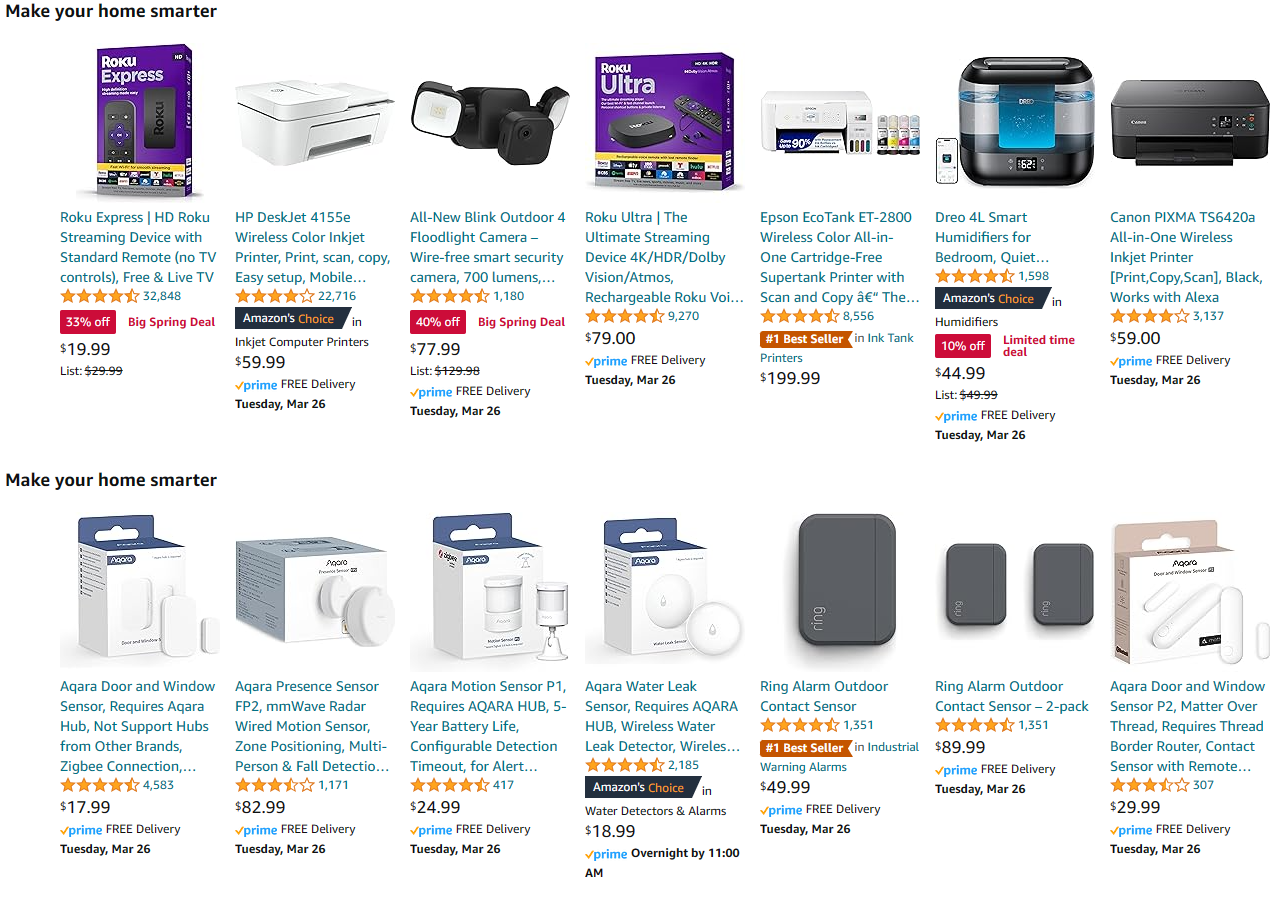
Zappos
Zappos uses several strategies to improve customer retention. First, the company knows ordering shoes online without trying them on can be tricky. It therefore provides a size assessment for every shoe it sells, which tells clients whether shoes are true to size or not. Zappos also offers free shipping and returns on all purchases.
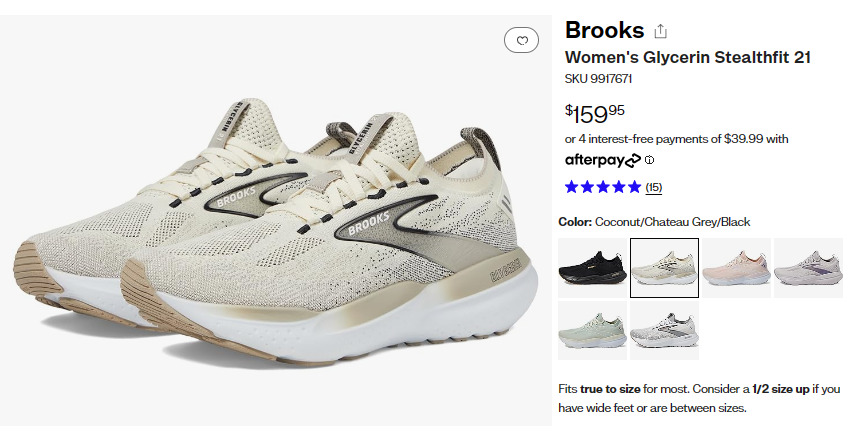
Dollar Shave Club
Dollar Shave Club is famous for its inexpensive razors and blades with custom-fit options. The brand offers one-time purchase or subscription options, including regular razor delivery according to the client’s preferences. Dollar Shave Club’s convenience and subscription offerings result in high customer retention rates.
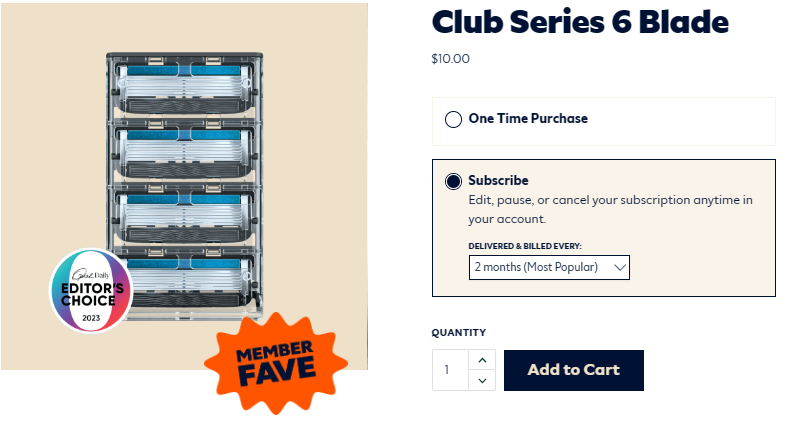
Tips for customer retention program success
Incorporate these tips into your marketing strategy to maximize your customer retention efforts.
1. Keep the customers’ perspective at the forefront
Client interests and needs form the backbone of the best customer retention strategies. Consider the motivating factors that encourage a client to purchase from you and what they most want from your business. For instance, if you sell clothing online, your customers might be more willing to buy if they know they can exchange or return items that don’t fit properly. Offering a free return and exchange policy might make attracting and retaining clients easier.
2. Provide value and relevance to earn customer trust
Customers won’t stick with you long-term if your brand’s products and services lack value. Focus on providing quality products and services that customers benefit from. To keep them coming back, ask for feedback about their experience and use their comments to refine your offerings. Doing so can help build trust with new and established clients.
3. Maintain personalization in digital interactions
Any time you interact with your customers via email or SMS, try to incorporate some personalization so they feel you’re genuinely trying to connect with them. Some elements you might include are their name or location. If they’ve previously purchased from you, include recommendations for products or services they might like or a reminder to schedule their next appointment.
Advanced retention strategies through software and tech
Leveraging technology can seriously boost your retention efforts. Some tech options that can help include:
- Data analysis tools: Software that analyzes your customer’s browsing and shopping habits can help you learn more about what they’re shopping for and what attracts them. You can also use it to segment your customers into categories according to their demographics and interests.
- Customer support automation: Implementing chatbots and AI conversation platforms ensures clients have a resource to turn to when they have questions, even if you’re not available.
- Customer relationship management (CRM) system: A CRM system stores all client interactions in one place. It can identify where your customers are in the buyer’s journey and analyze your customer retention efforts.
Constant Contact offers robust solutions to aid customer retention strategies, including email and SMS marketing tools, in addition to a CRM option for managing client interactions.
The future of customer retention
Developing a comprehensive customer retention strategy early on is vital to building a solid revenue base. Understand what motivates your customers to purchase from you and align your plan to meet their needs. As you implement your strategies, set KPIs to measure your performance. To learn more about customer retention, check out our guide to 5 Effective Ways to Reward Loyal Customers.
Make every interaction count with personalized marketing. Download the guide.
Countless worthy causes need support. Maybe you’re passionate about rescuing animals or helping children get school supplies. Or perhaps you’re ready to tackle climate change, poverty, and other significant challenges. No matter your cause, starting a nonprofit is a great way to make a difference.
Launching a nonprofit can be highly rewarding and impactful. These organizations address significant issues and strive to improve the lives of others. They also raise awareness and inspire more people to take up their causes. But it’s normal to feel intimidated if you don’t know how to start a nonprofit organization.
In many ways, founding a nonprofit is like starting a company. You’ll need the right strategy, marketing tools, and team to achieve your goals. This simple guide will help you turn your vision into reality and drive change.
Understanding nonprofits
A nonprofit is a tax-exempt organization that benefits the public and improves society. Unlike a business, a nonprofit doesn’t share its earnings with private individuals or shareholders. Instead, it invests all its resources into the organization to support the cause.
The Internal Revenue Service (IRS) oversees nonprofits in the U.S. Section 501(c)(3) of the Internal Revenue Code outlines the legal requirements for these organizations. According to these rules, nonprofits must:
- Be operated for exempt purposes, such as advancing education or protecting human rights
- Not take substantial action to influence legislation
- Not distribute profits to shareholders
- Not campaign for political candidates
Nonprofits that qualify as 501(c)(3) organizations don’t have to pay taxes on donations and other income. Donors also receive tax deductions, incentivizing their support.
There are many types of nonprofit organizations, including:
- Animal shelters
- Grassroots organizations
- Humanitarian aid groups
- Museums
- Nonprofit hospitals
- Public colleges and universities
- Religious organizations
- Wildlife conservation groups
- Veterans organizations
- Youth mentoring programs
These groups serve diverse causes and communities. They play vital roles in addressing environmental and social issues worldwide.
Benefits of starting a nonprofit organization
Launching a nonprofit organization has many financial and social advantages.
Tax-exempt organizations can use the money they save to support their cause. For example, you could buy more supplies or expand your programs to reach more people. Donors can also receive tax deductions for their charitable contributions. This incentive may attract more supporters and help your organization grow.
Your nonprofit organization could also qualify for public and private grants. Grants.gov lists over 2,000 federal grants for various causes. Many private foundations also offer grants for nonprofits. This funding can support programs and projects related to your cause.
Starting a nonprofit organization also boosts your credibility. It proves you’re committed to your cause and willing to invest resources. This process also shows that you care about transparency and accountability. As a result, the public is more likely to view your organization as legitimate and worthy of support.
Potential challenges
While starting a nonprofit has many benefits, there are always obstacles to be aware of.
These organizations require significant energy, time, and other resources. You may need to work for many hours before you see an impact. You may find this effort fulfilling if you’re passionate about your cause.
Nonprofits also face fierce competition. Today, the U.S. has over 1.5 million nonprofit organizations. Many groups struggle to stand out in this crowded landscape and earn enough revenue. You can overcome this challenge by developing a unique brand and marketing strategy.
Preparing to start a nonprofit
If you’re interested in creating a nonprofit, you probably already have a few great causes in mind. Follow these steps to lay the groundwork for your organization.
Conduct a needs assessment
Start your nonprofit journey with a needs assessment. This tool helps you identify and measure the needs and goals of your target population. That way, you can fill gaps in existing services and create tailored programs.
A needs assessment involves these steps:
- Define the broad issue you want to solve, such as illiteracy or pollution
- Identify the group(s) you can best serve
- Collect data to determine how the issue affects your target population
- Research competitors and identify gaps in their services
This process can help you determine if there’s an actual need for your nonprofit. For example, say you want to create an organization that trains service dogs for veterans. A needs assessment may reveal that local veterans are in need of mental health counseling instead. You could identify a different target audience that wants service dogs or adapt your plan to meet the veterans’ needs.
Complete a market analysis
Every nonprofit organization needs financial support from donors. Conduct a market analysis to identify potential supporters and funding sources. This process involves gathering data to learn about your target market’s preferences.
For example, you can survey potential donors about their giving habits and charitable interests. You can also research public and private grants that align with your mission.
Research different nonprofit structures
There are several types of nonprofit organizations with different structures and purposes. Common structures include:
- Charitable organizations: These nonprofits serve public interests and don’t benefit their creators or shareholders. They include educational, public safety, and scientific organizations.
- Churches and religious organizations: These organizations are formed for religious purposes. They include churches, mosques, and other institutions that offer spiritual services.
- Private foundations: These organizations have a single, primary source of financial support such as a corporation or family. They typically provide grants to other charitable organizations instead of creating programs themselves.
- Political organizations: These groups aim to influence politics. The IRS considers certain political organizations subject to tax under IRC section 527, including political parties and campaign committees. However, some organizations may qualify for tax-exempt status if they focus on causes instead of supporting specific candidates.
The IRS provides more resources to learn about nonprofit structures and relevant regulations.
Building a solid foundation
Every nonprofit organization needs a strong identity and message. Focus on these three areas to set yourself up for success.
Create a compelling name
Choosing the right name for your organization is essential. An effective nonprofit name relates to the organization’s mission and goals. It should also be unique and short so potential donors can easily remember it.

For example, Feeding America is a hunger relief organization. Its concise name reflects its central purpose: feeding people in need. The word “America” also shows that the nonprofit operates across the U.S.
Develop a mission statement
A mission statement describes your nonprofit’s purpose and overarching strategy. Effective mission statements answer three questions:
- What is your main cause?
- How do you support or address your cause?
- Who do you serve?
Your mission statement should be clear and concise. Create one to two sentences that sum up your main goal and strategy.
Use mission statements from other nonprofits as inspiration. Here are three examples from well-known organizations:
- “The American Red Cross prevents and alleviates human suffering in the face of emergencies by mobilizing the power of volunteers and the generosity of donors.”
- “The mission of the Cystic Fibrosis Foundation is to cure cystic fibrosis [CF] and to provide all people with CF the opportunity to lead long, fulfilling lives by funding research and drug development, partnering with the CF community, and advancing high-quality, specialized care.”
- “The mission of The Nature Conservancy is to conserve the lands and waters on which all life depends.”
These examples use dynamic verbs to explain their purpose and inspire readers to join their causes.
Establish your brand and identity
A distinct brand identity will help your nonprofit stand out from the crowd. It also boosts your reputation and raises awareness of your cause.

Effective nonprofit branding strategies include:
- Creating an eye-catching logo that fits your mission and values
- Using consistent fonts, colors, and other visual elements
- Developing a brand personality that resonates with your audience
- Producing infographics and reports to highlight your impact
Developing a business plan
You won’t earn a profit from your charitable organizations, but you still need a business plan. This document outlines your purpose, goals, and key strategies. It’s a valuable tool to guide decision-making and communicate with stakeholders.
Follow these steps to create a solid business plan.
Chart out the executive summary, programs, and services
The executive summary introduces your organization. It should include:
- Mission statement
- Summary of what your organization is and why it was founded
- A description of your programs and services
- An overview of your target audience
- An outline of future plans
Develop a marketing plan
Once you have completed a marketing analysis, it’s time to develop a marketing plan for your business. Your assessment will have help you to identify your audience and determine how to reach them. Use this information to help you develop a strategy and inform the types of marketing content that will work best to encourage engagement, donation, and support.
Develop an impact plan
An impact plan explains how you’ll use your resources and programs to advance your cause. It also describes the outcomes you hope to achieve. This section can persuade donors to support your organization.
Legal formation and compliance
People often wonder, “How long does it take to start a nonprofit?” The answer depends on several factors.
Many nonprofits apply for tax-exempt status. The IRS estimates it takes around 100 hours to collect records for and prepare Form 1023. Once you submit this paperwork, you’ll need to wait several months for the IRS to process it.
Some organizations elect a board of directors. These members should include people with different areas of expertise related to your mission. They can create bylaws to govern the organization’s activities. This process can take a few weeks, depending on how many members you elect.
Fundraising and financial management
How much does it cost to start a nonprofit? The costs vary significantly but may include:
- Incorporation fee: Some states require charities to register and pay an incorporation fee.
- Tax-exemption status application fee: The IRS charges a $600 filing fee for large organizations that apply for tax exemption with Form 1023. Smaller nonprofits can apply with Form 1023-EZ, which costs $275.
- Attorney fees: Some nonprofits hire an attorney to help them understand and comply with regulations.
- Fundraising platforms: Many organizations use fundraising platforms to collect donations. These platforms typically charge processing fees.
You may wonder how to start generating funds for your cause and to keep your nonprofit organization at the center of positive change. Consider applying for grants, hosting fundraisers, and asking for donations via social media, email, and in your locality.
Building a nonprofit team
You can start a nonprofit by yourself if you want to take on all the responsibilities. But many organizations recruit teams of experts and volunteers to share the workload. This collective effort can help you expand your impact and offer more services.
Aspiring leaders often wonder how to start a collective nonprofit. These strategies can help you build an all-star team:
- Network with like-minded people at events related to your cause.
- Use social media to recruit volunteers.
- Hire experts for leadership and marketing roles.
- Collaborate with other organizations.
- Offer training for employees and volunteers.
Operational strategies
The right software can help you manage your operations. Constant Contact’s digital marketing tools help you create content and reach supporters. The platform also integrates with fundraising tools to make it easy to collect donations.
Additionally, Constant Contact offers customer relationship management software. Use this tool to manage leads and collect donor information.
Getting the word out
You can use many channels to promote your nonprofit and raise awareness of your cause. Here are a few popular marketing strategies:
- Start a blog about your cause and programs
- Send an email newsletter with updates about your organization
- Connect with supporters on social media
- Share testimonials from people you’ve helped
- Partner with an influencer
- Host community events and workshops
It helps to create a content calendar to coordinate your marketing efforts across channels.
Next steps and future planning
Starting a nonprofit is an exciting venture. To set yourself up for success, create a detailed road map. This plan helps you shape your organization’s future and achieve sustainable growth.
Once you’ve developed your plan, take the next step by joining fundraising movements. Campaigns like #GivingTuesday can help you connect with donors and promote your organization. You can also network with other nonprofit leaders and share valuable resources. These simple steps will allow you to maximize your impact and make a real difference.
Are you looking for an innovative, low-cost way to attract more customers to your brand? Or, are you a marketer interested in generating a new income stream? Digital affiliate marketing might be the solution you’re looking for.
Digital affiliate marketing connects brands with creators who work to promote a company’s products and services. With more people than ever looking to influencers and other online content creators for recommendations and lifestyle advice, affiliate marketing is a critical tool in any marketer’s kit.
Here’s what you need to know about affiliate marketing.
The basics of digital affiliate marketing
Affiliate marketing for digital products isn’t new. It’s been around for several decades, and Amazon is credited with introducing it in 1996 through its Associates Program.
Since then, further developments like cookies, which track an individual’s browsing history and activities, and additional affiliate networks have turned affiliate marketing into a $14.3 billion industry.
But what is affiliate marketing in digital marketing?
Essentially, affiliate marketing is a strategy where bloggers, social media influencers, and other creators work to promote a brand’s products or services to their audiences. They earn a commission from the brand every time a consumer takes a specific action.
The action might be signing up for an email list, downloading an app, visiting a website, or making a purchase. Typically, there is no guarantee of payment from the brand unless the creator delivers quantifiable results.
Affiliate marketing is a great way to get your brand in front of interested consumers without building an audience yourself. For creators, affiliate marketing is an opportunity to earn unlimited passive income.
The 3 models of affiliate marketing
There are three main types of affiliate marketing. Understanding each can help you decide which is right for you, whether you’re a creator or a brand.
1. Unattached
Unattached affiliate marketing occurs when there is no connection between the brand and the creator. The creator isn’t familiar with the brand’s products or services and is simply trying to earn some extra cash.
Typically, unattached affiliate marketers run pay-per-click (PPC) campaigns, hoping that consumers will click on a link and convert to customers.
2. Related
In related affiliate marketing, a creator is an authority in a specific niche or industry. Brands seek to leverage the creator’s audience and authority by asking them to recommend their products or services, even if the creator hasn’t used them before.
Related affiliate marketing typically generates more income for creators, but it does pose a reputational risk if the brand’s products or services aren’t of high quality.
3. Involved
Involved affiliate marketing is a partnership between a brand and an influencer who firmly believes in the company’s products and services. The creator has a loyal following that trusts their recommendations and uses their influence to promote the company’s products and services.
Involved affiliates receive a commission on sales, clicks, or other conversions.
Participants of affiliate marketing
There are four parties involved in affiliate marketing.
- Affiliate: The individual promoting a brand’s product or services
- Merchant: The brand selling products or services
- Affiliate network: An intermediary that oversees the business connection between affiliates and merchants
- Customer: The person who takes action on an affiliate’s promotional material
Sometimes, affiliates and merchants partner directly with one another without the help of an affiliate network. However, affiliate networks provide a platform for affiliates and merchants to connect without lots of legwork.
Common affiliate marketing payment methods
There are several different affiliate marketing payment structures, and it’s important to know how each one works before striking up a new partnership.
- Cost per action (CPA): The affiliate receives a commission whenever a customer takes a specific action, such as signing up for an email newsletter or a trial.
- Cost per click (CPC): The brand pays the affiliate whenever a customer clicks on a promoted link.
- Cost per lead (CPL): An affiliate earns a commission whenever their promotion results in a new business lead for the brand.
Brand affiliates can use the earnings per click (EPC) metric to measure the average amount of money they make every time a customer clicks on their promotional links.
Getting started with affiliate marketing
Affiliate marketing can offer major benefits to everyone involved.
By leveraging an affiliate’s expertise or influence, brands can save money and time. Plus, they’ll get the opportunity to get their products and services in front of an audience, which may lead to a revenue boost. Affiliate marketers, on the other hand, benefit from passive income generated through their recommendations or CPC strategies.
Whether you’re hoping to integrate affiliate marketing into your brand’s marketing strategy or you’re an online creator looking to get into becoming an affiliate, there are a few key steps you should take to get started.
1. Select a niche and target audience
There’s tremendous competition in affiliate marketing. As a new affiliate, you’ll have much better luck if you specialize in a topic you are passionate or knowledgeable about. Being seen as a reliable voice in your field is important, especially for related and involved affiliate marketing.
As a brand, you’ll want to look for creators whose audiences align with yours. Pet stores, for example, should look for popular accounts that post about their dogs. The more specific the niche, the more likely the affiliate’s followers are to give your business a try.
2. Find suitable affiliate products to market
Once you define your niche and target audience, choose the most relevant e-commerce products to promote.
Affiliates should search for items or services that relate to their niche. For example, if your niche is fitness, you could promote exercise machines, running shoes, or personalized training services.
Brands, on the other hand, should decide which particular products or services to highlight. Giving a clear call-to-action (CTA) and a specific conversion target will often yield better results than general brand awareness.
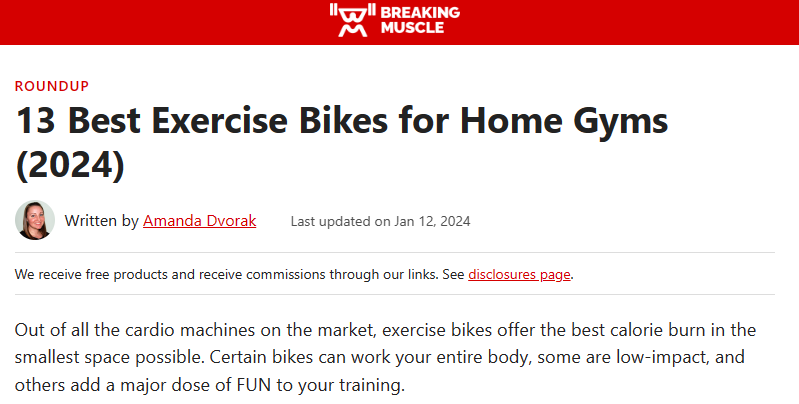
3. Join digital marketing affiliate programs
Joining an affiliate network makes it easier for brands and affiliates to get connected. Several well-known networks include ClickBank, Amazon Associates, and Etsy Affiliates. Most are open to anyone who wants to join but check program requirements to determine your eligibility.
4. Build your affiliate marketing strategy
Determine your affiliate marketing strategy based on how you plan to build your audience.
If you or your affiliate already has a large social media following, you can focus your efforts on those existing networks. If you’re starting from scratch, you may want to start with blogs or long-form articles to capture search engine traffic.
5. Set up your affiliate marketing website
Making a website devoted to your niche and writing relevant content for it can give creators plenty of opportunities to link to promotional products. It’s also a great place to share a portfolio of past material, if you have some.
Content creation guidelines for affiliate marketers
Affiliate marketers rely on content to promote a merchant’s products or services. Content marketing can include blog posts, articles, videos, pictures, emails, and anything else a consumer can view.
Including promotional links within your content is the meat of any affiliate marketing strategy. Make sure that links are clearly visible and include a strong CTA that encourages a reader to click.
Advanced affiliate marketing strategies
As you build your skills as an affiliate marketer, you can incorporate more advanced strategies into your marketing toolbox. Here are a few to consider.
Influencer marketing
You’ve probably seen celebrities and others recommending products they use on social media or other channels. That’s known as influencer marketing, and it’s a very profitable income stream for people with large followings. To become an influencer, focus on creating content that attracts followers. As your audience grows, your marketing opportunities will too.
Blogging and content marketing
Blogging is an effective way to build an audience if you stick with it. Choose a niche to blog in, and regularly create related content that attracts readers. As you build an audience and increase clicks, you can start promoting products for merchants and earn affiliate income.
Email marketing
Email remains a fantastic tool for connecting directly with followers. Use other platforms to promote your email marketing list, then send promotional messages to your subscribers. Be sure to include lots of content related to your audience’s interests so your emails are valuable to them even if they don’t act on your affiliate links.
PPC and paid advertising
PPC affiliate marketing aims to generate clicks and conversions from paid ad placements on search engines and other channels. It’s a great way to get a new partnership off the ground and start driving traffic to an affiliate website.
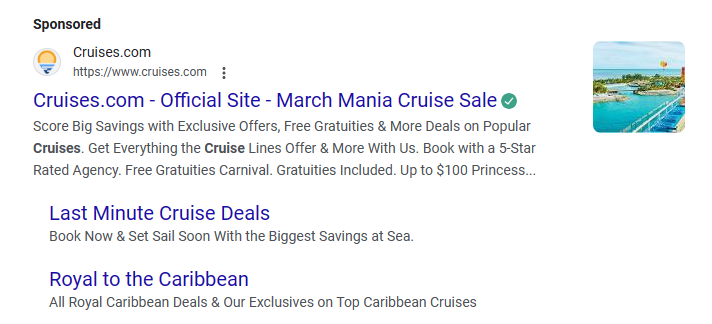
Video marketing and webinars
You might consider video affiliate marketing or webinars if you’re a credible authority in a niche and feel comfortable talking on camera. Both channels allow you to pre-record content and share it with followers.
During your video or webinar, you can recommend merchant products or services and include links for your audience to take action.
Coupons and deals to enhance affiliate offers
Few people will turn down the opportunity to save money or score a free product, especially if it’s for something they need or want. Ask merchants if they’ll let you promote their products with a coupon code or deal. If they approve it, you may see higher audience engagement.
Product reviews and demonstrations
Affiliate marketers who use the products or services they’re promoting can craft reviews and share them with their followers. Their honest feedback can encourage consumers to take action and further investigate products.
Maximizing affiliate revenue
Affiliate marketing is a numbers game. The larger your audience, the higher your click-throughs and earning potential.
However, even if you’re starting from scratch, you can still make a respectable income from affiliate marketing. You’ll see the best results if you define your niche marketing strategies and work on developing a following. If you’re just getting started and are still building your audience, consider PPC or paid advertising affiliate marketing.

Common challenges and solutions
You may run into a few issues as you navigate affiliate marketing. Here are a few common ones and how to address them.
Dealing with competition and market saturation
Certain industries and markets have a lot of competition, and you may find it an uphill battle to compete against others with large audiences and followings. Don’t let that discourage you.
Instead, carve out a niche within your chosen market. The more defined your niche, the easier it will be to generate an audience.
Navigating legal considerations
Whenever you recommend a product or earn a commission from a link, it’s essential to disclose that in your content. Most social media platforms, including Facebook, Instagram, and YouTube, require disclosures when sharing affiliate marketing links. You should also include a disclosure on any blogs or articles you write.
Building trust and credibility
Don’t spam your followers with product recommendations and affiliate links. Too much promotion and they’ll stop paying attention and may unfollow you. Focus on delivering valuable content that connects with your audience. By building trust, your audience will take your recommendations seriously.
Tools and resources for affiliate marketers
Affiliate marketers seeking to maximize their income can benefit from software and tools designed to optimize campaigns.
One solution is Constant Contact, which includes email, SMS, and social media tools designed to streamline your marketing processes. Constant Contact also includes a customizable analytics tool to measure performance.
Whether you’re a business owner searching for help promoting your products or an aspiring affiliate marketer, there are plenty of tools to support your efforts. Here are a few to check out:
Take the next step with affiliate marketing
Affiliate marketing is an amazing way to earn passive income or elevate your brand’s revenues. It has unlimited earning potential, and for growing companies, it’s an easy way to get your products in front of an audience that will appreciate them.
To learn more about freelance digital marketing vs affiliate marketing, check out Constant Contact’s guide to digital marketing. Or, go one step further and join Constant Contact’s business partner program to get access to all the tools you need for successful affiliate marketing.
Picture this: you put all your creative energy into writing a great marketing email. You choose every word carefully and create a beautiful design to appeal to your target audience. Finally, you hit the send button, sit back, and sip your coffee, ready for the responses to pour in. But your inbox stays empty.
Sooner or later, this scenario happens to every business. You might wonder if you made a mistake with your email. (Maybe that pun-filled subject line wasn’t as funny as you thought?) But even the best emails can get overlooked or lost in crowded inboxes. In fact, 80% of customers ignore marketing emails at least half the time.
An automated email follow-up helps you re-engage people who missed your first message. You can also use these messages to gently remind customers about your brand. Read on to learn about the benefits of automated follow-up emails and how to set them up.
What are automated follow-up emails?
An automated follow-up email is a pre-scheduled message sent to a prior contact. Businesses often use these messages to reconnect with people who haven’t responded to their emails.
A typical workflow for follow-up emails might look like:
- You send an email about a new product to your mailing list.
- A subscriber clicks the link to view the product but doesn’t buy it.
- Three days later, you send the subscriber an automated follow-up email.
- A week later, you send another automated follow-up email with an exclusive discount.
Automated follow-up emails are essential to business success. They help you build relationships with people who might not be ready to buy when you first contact them. These messages also remind potential customers about your products and services.
Benefits of automating your follow-up emails
An automated email follow-up has many advantages for small and medium businesses, including:
- Better lead nurturing
- Higher conversion rates
- Increased customer engagement
- Increased brand awareness
- Less time spent sending manual emails
- Streamlined marketing workflows
Understanding automated follow-up emails
You don’t need to write code or invest in expensive software to automate your follow-up emails. There are many simple and affordable email marketing automation tools available. These platforms help you design, pre-schedule, and manage your messages. That way, you can spend less time sending emails and more time engaging customers.
Here are a few considerations to help you choose the right marketing automation tool:
- Customization: The best platforms let you tailor every step in your automation workflows.
- Features: Some tools have advanced features that increase efficiency. For example, Constant Contact offers AI content generation and hundreds of email templates.
- Integration: Save time by picking a tool that integrates with your other technology.
- Scalability: Look for a platform that adjusts to your business’s changing needs.
- Support: Some vendors offer training and resources to help you get the most out of the platform.
Creating your automated email follow-up strategy
Follow these steps to add automated follow-up messages to your email marketing campaigns.
Define your objectives for follow-up
Start by establishing clear goals for your follow-up emails. This step will help you decide when and how to reconnect with your audience.
Here are a few common goals for follow-up emails:
- Convert leads
- Get customer feedback
- Grow revenue
- Increase the customer lifetime value (CLV)
- Keep existing customers
Let’s say you want to use follow-up emails to improve CLV. You can send follow-up messages to upsell customers with upgrades and relevant products. You can also send exclusive offers to re-engage inactive clients.
Segment your audience for personalized follow-ups
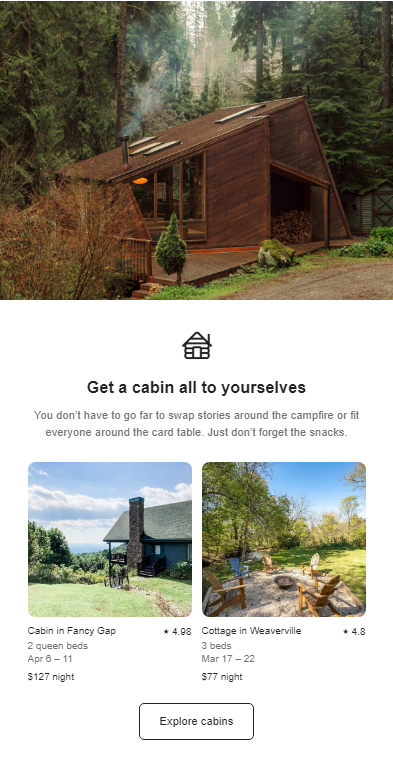
This follow-up email from Airbnb uses the customer’s browsing history to offer personalized recommendations. Source: Airbnb.
Use customer data to personalize your follow-up emails. You can segment your audience based on behavior, demographics, preferences, and other criteria.
Say you notice that 50% of website visitors abandon their carts. Send them follow-up emails to encourage them to complete the sale. You can even offer coupons or discounts for extra motivation.
Streamline the design process with templates
Designing a professional email from scratch takes time and skill. Streamline this process with email marketing templates that let you add content and customize the design in minutes.
Constant Contact offers hundreds of email templates for every industry and purpose. These layouts are mobile-responsive and easy to personalize.
Customize your emails
Add a personal touch to your follow-up emails with customized elements. Here are a few popular ways to personalize messages:
- Use the recipient’s name in the subject line
- Give product recommendations based on the customer’s past purchases
- Send location-specific news and offers
- Personalize the images based on the customer’s age and gender
Decide on the timing and frequency
Consider scheduling follow-up emails based on specific events and triggers. For instance, you can send a follow-up message after a customer’s free trial expires. This strategy helps keep customers engaged and moving along the sales journey.
You should also drip emails to avoid overwhelming your audience. Wait a few days for time-sensitive emails and a couple of weeks for longer sales cycles.
How to set up automated follow-ups in Gmail and other platforms
Gmail has limited capabilities for sending automated follow-up messages. The platform can suggest emails to follow up on, but this strategy will only work if you have a small mailing list. You can also use templates to create follow-up emails, but you’ll need to send them manually.
Luckily, you can use third-party tools to set up automatic follow-up emails in Gmail. GMass is one of the most popular platforms. It lets you send automatic emails based on your audience’s behavior and responses.
Check out Microsoft Power Automate to automate follow-up emails in Outlook. Additionally, ShopMagic is a popular tool for WooCommerce automated follow-up emails.
You can also integrate third-party automation tools with other services for enhanced functionality. For example, you can combine Gmass and Google Sheets to create personalized messages.
You can also use Constant Contact to send follow-up messages and mass emails across all platforms.
Best practices for email follow-up automation
If you want to know how to automate follow-up emails, here’s our how-to strategy section.
Create relevant and valuable follow-ups
Follow-up emails should offer as much value as other marketing messages. Research your target audience to understand their interests and needs.
For example, your leads may want to learn more about your products before buying them. You could send follow-up emails with customer testimonials and demonstration videos.
Read more: Maximize Engagement with Effective Post-Purchase Emails
Use a professional and polite tone
Being pushy or rude won’t win you any favors with customers. Always keep your tone friendly and polite when sending follow-up emails. Use encouraging language and avoid demanding phrases like “last chance!”
Read more: Best Practices for Email Etiquette: Make a Great Impression
Use analytics to improve your follow-up sequences
Analytics provide valuable insights into how customers engage with your follow-up messages. This information allows you to improve your follow-up emails over time.
Here are three email marketing metrics you can gather to boost performance:
- Unsubscribe rates: Send fewer follow-ups if you notice more people unsubscribing.
- Conversion rates: Track which follow-up emails have the best conversion rates.
- Click-through rates: Pay attention to which types of calls-to-action get the most clicks.
Avoid common pitfalls in email automation
Email automation is convenient and efficient, but comes with some potential challenges.
One of the biggest pitfalls is the lack of personalization. Avoid spamming your customers with generic or irrelevant emails. Instead, use dynamic content blocks and audience segmentation to tailor your messages.
Another common mistake is not optimizing your emails for mobile devices. You can overcome this obstacle by using responsive templates. These layouts adjust to different screen sizes so customers can read your emails easily on any device.
Test your email sequences for the most impact
Use A/B testing to analyze the effectiveness of your follow-up emails. This process involves separating your audience into groups and sending them similar emails with small variations. Compare which version gets a better response to improve future emails.
Advanced features and customization
Here are four advanced features and strategies to take your follow-up emails to the next level.
Personalization tactics that make a difference
Here are three personalization methods to impress customers:
- Use geographic data to add cultural references to your content.
- Give personal product recommendations based on the customer’s browsing history.
- Send follow-up emails based on the customer’s behavior, such as requesting a free trial.
Tip: Email list segmentation helps ensure the right content reaches the right audience. Learn tactics and criteria for a successful email list segmentation strategy by reading our article: Email List Segmentation From A (as in Age) to Z (as in Zip Code)
Use dynamic content
Dynamic content changes based on the recipient’s behavior, interests, and other factors. For example, dynamic subject lines can reference the recipient’s location or pets. Similarly, dynamic images can reflect the customer’s hobbies.
Insert custom fields
Custom fields are another tool for personalizing follow-up emails. Start by using an email marketing platform to collect relevant customer data. This information can include names, job titles, hobbies, and other information. Insert these custom fields into your emails, such as “Dear [Name]”. The platform will automatically populate the fields for each customer.
Creating engaging content for follow-ups
Follow email marketing best practices to generate compelling content.
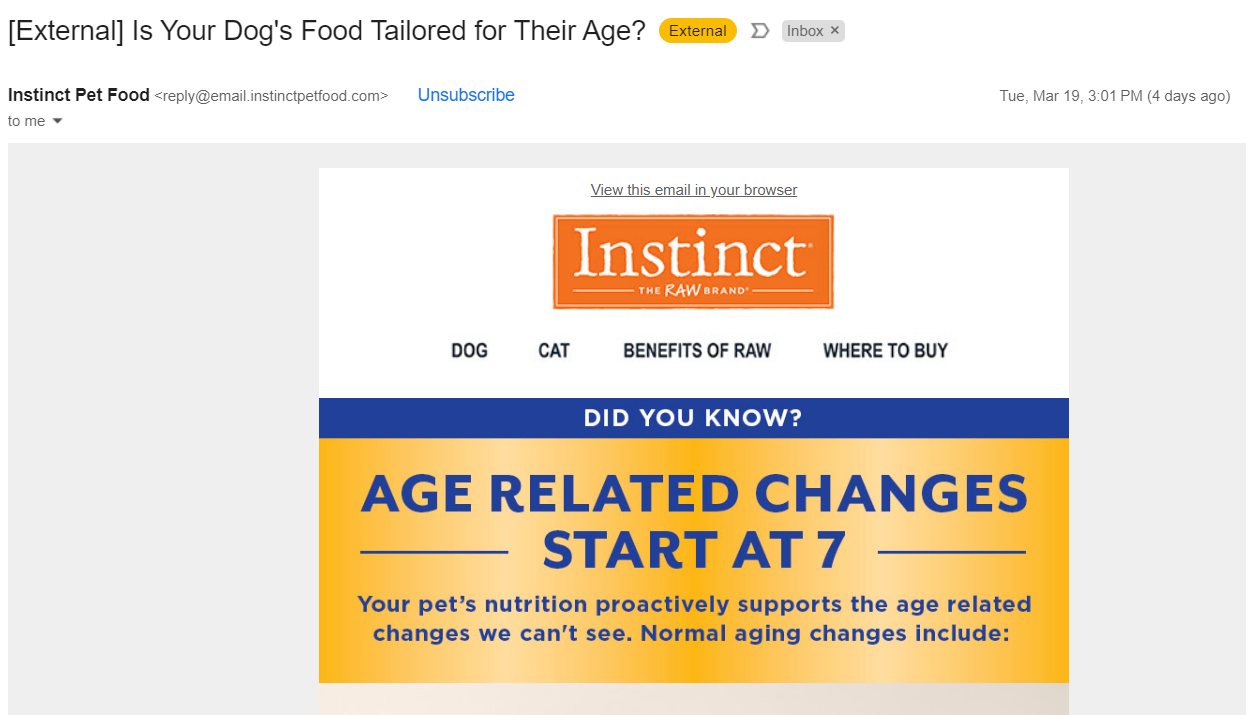
All follow-up emails should have an engaging subject line of four to seven words. For example, this follow-up email from Instinct asks, “Is Your Dog’s Food Tailored for Their Age?” You can also use a pun, appeal to the reader’s curiosity, or evoke a sense of urgency.
Effective follow-ups also use visually appealing templates. Use headings and different background colors to structure your content. You should also choose easy-to-read fonts.
Finally, include a clear and actionable call to action (CTA). This phrase should direct the audience to the next step. Two examples of strong CTAs are “Download your exclusive offer” and “Become a member today.”
Managing follow-up interactions
Customers may reply to your automated follow-up messages with questions or concerns. A software solution like Constant Contact can help you manage these interactions. The platform sends all replies to your Reply To email. You can also analyze responses with Constant Contact’s reporting tools.
Respond to all emails within 24 hours to keep customers satisfied. You can use pre-written templates to speed up this process.
Compliance and considerations
Respect user privacy by following relevant laws for automated follow-up emails.
The CAN-SPAM Act requires commercial emails to have accurate subject lines and headers. These messages must also clearly explain how to opt out of future communications.
The General Data Protection Regulation regulates emails sent to European Union citizens. Companies must get consent before sending marketing emails and explain how they use customer data.
Taking your automation further
Create smarter follow-up emails with artificial intelligence and machine learning. This technology can analyze customer data to create personalized content. It can also predict how clients will respond to your emails so you can improve your content.
You can also combine your automated email follow-up software with a customer relationship management tool. This integration lets you sync client data and nurture leads more effectively.
Frequently asked questions
What is the most effective number of follow-up emails to send?
Send two to three follow-up emails to keep customers engaged.
Can I personalize my automated follow-up emails for each recipient?
Yes, you can easily personalize your follow-up emails with a marketing platform. Constant Contact lets you add dynamic content blocks, personal subject lines, and more.
Which metrics are important to track for follow-up emails?
These metrics can help you understand and improve your follow-up email performance:
- Bounce rate
- Click-through rate
- Conversion rate
- Open rate
- Spam complaints
- Unsubscribe rate
- Website visits
How do you write an automated email?
Use an email marketing solution to create an automated email. First, design the message’s content using a responsive template. Next, schedule the email to be sent at a specific time or when activated by a certain trigger.
What are common mistakes to avoid when setting up automated follow-ups?
One of the most common mistakes is not including a clear CTA. Be sure to tell your customers what you want them to do to increase engagement and conversions. You should also avoid sending follow-up emails too frequently, which can result in unsubscribes.
Expand your outreach with automated follow-up emails
Stay on your customers’ radars with automated follow-up emails. These messages are an effective way to nurture leads and maintain customer loyalty. They also let you keep delivering value after clients interact with your brand.
Keep learning about automated follow-up emails with these additional resources:
- How to Use Automation to Make Emails More Relevant
- How to Write an Event Follow-Up Email That Drives Results

I am Batman!
Okay, not really, but May 1st is Batman Day. While not an official May holiday, Batman Day is just one of many fun and zany reasons to celebrate this month. With holidays like Intergalactic Star Wars Day (May 4th), Eat What You Want Day (May 11th), and Frog Jumping Day (May 13th), there’s no reason to feel jumpy about your marketing this month.
May has a plethora of occasions to share with your customers — from public holidays like International Workers’ Day (May 1st), VE Day (May 8th), and Memorial Day (May 27th) to “weird” holidays like National Cellophane Tape Day (the 27th). Yep, that’s a thing.
Seriously though, May is definitely a month to celebrate.
From May Day (May 1st) to National Smile Day (May 31st), May is a month about… well, creation, fresh starts, and new beginnings. The transition from dark to light, from winter to summer, from nothing to something.
As a matter of fact, the month of May is National Creative Beginnings Month and National Inventors Month. So, now is the time to be creative and inventive in your marketing.
Get started by taking a look at some May holidays, newsletter ideas, and subject lines that you can use to share the hope, excitement, and promise of the month of May.
May holidays — 2024
- April 28th – May 4th — National Small Business Week.
- May 1st — National Loyalty Day. For the patriot in all of us.
- May 2nd — International Harry Potter Day. Remember the battle of Hogwarts!
- May 3rd — National Space Day.
- May 11th — National Twilight Zone Day. Dare to enter.
- May 11th — World Fair Trade Day. Support your fellow small business owners around the world.
- May 12th — National Fibromyalgia Awareness Day.
- May 12th — Mother’s Day.
- May 16th — National Do Something Good for Your Neighbor Day. Large or small, do good.
- May 17th — National Endangered Species Day.
- May 19th — National Devil’s Food Cake Day. I couldn’t help myself. Can you?
- May 21st — National Talk Like Yoda Day. Hard it is not. Do it, you can.
- May 22nd — Harvey Milk Day. Keep the hope going.
- May 24th — National Scavenger Hunt Day.
- May 26th — National Paper Airplane Day. It’s not origami, but it flies!
- May 29th — Learn About Composting Day. Why not compost your business’s waste?
- May 31st — Autonomous Vehicle Day. Are you ready for this?
Of course, there are a lot more holidays in May, but let’s move on to some May newsletter ideas.
May newsletter ideas
With all the holidays there are to celebrate in May, it seems that Mother’s Day always seems to dominate. So let’s start there.
Mother’s Day newsletter ideas
Mother’s Day is a time to appreciate all kinds of mothers — from birth mothers to foster mothers, from godmothers to grandmothers, and even mothers whose only children are covered in fur and walk on paws (or fly, or swim…).
To me, Mother’s Day is a celebration of unconditional love, incredible strength and fortitude, and seemingly endless patience.
This Mother’s Day, create an email campaign that makes a positive impact on you and your subscribers with these newsletter ideas:
- Make sales. It doesn’t matter if your demographic is filled with moms or single men. Share a discount code or special offer your readers can use or share with the moms in their lives.
- Build relationships. Tell a story about something great your mom did for you. Then share it on Facebook and encourage your readers and followers to do the same.
- Build trust. If it fits your brand and your audience, share some “mom hacks” that you’ve learned or seen used over the years. *Bonus if you saw a mom use it when visiting your business and you tell the story.
- Be a reliable resource. If you’re a mom, share an article, website, or social media channel that you’ve found particularly helpful over the years. Be sure to let your readers know why you like it and why you’re sharing it with them, then link to the source.
Remember, any of these ideas are good for both moms of human children and moms with furbabies. So do what’s right for your brand.
Tip: Make your Mother’s Day newsletters really count by segmenting your audience and personalizing your newsletters and offers to fit the segment. Start with segmenting by gender, parental and pet ownership status, and even age. If you haven’t done a demographic survey of your subscribers yet, get a jump on it now.
May newsletters for fun and fantasy
While they may seem a little niche, holidays like Batman Day, International Harry Potter Day, and Star Wars Day can be a lot of fun while still being effective.
Movie-themed newsletter ideas
- Build relationships by entertaining your readers. If your brand allows, create a themed newsletter. Think image overlays, trivia that you can take to social media, and quotes or sentence structure to match the theme. Do it, you can.
- Drive traffic to your website. Ask your team members their thoughts on Star Wars (or Batman or Harry Potter…) and share a quick snippet of a “get to know the team” story with the full story posted on your website blog or landing page.
- Gather more information. Use a themed survey to obtain more information about your subscribers for better segmentation. For example, if I wanted to do a Batman theme, I might ask a basic demographic question using a multiple-choice, single-answer question like:
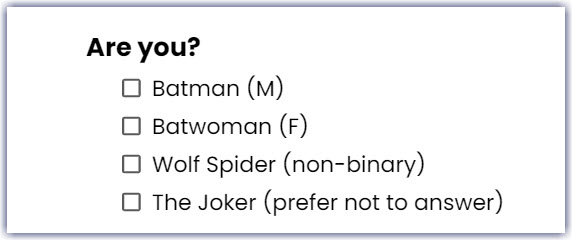
Okay, I know that Wolf Spider is really associated with Batwoman, but unless you’re in the comic business, odds are your subscribers probably won’t know that. And here’s a bonus: If several readers reach out to correct you on one of your themed questions, add them to a new segment for niche targeting fans of that theme.
National Limerick Day newsletter ideas
If you’re feeling creative and bold
And your goal is for more than just gold
Then give it a try
And if you are spry
Your readers’ attention you’ll hold
River Cartie
- Create a buzz. Create a limerick challenge by starting the limerick in your email campaign and then challenging your readers to add a line or finish it on your preferred social media channel
- Engage your readers while making sales. Offer an exclusive discount to readers who come into your business and recite a limerick at checkout.
- Bring in donations. A month-long variant of the aforementioned limerick challenge. The challenge is to write an original limerick and submit it with an entry fee. The winner(s) will receive a prize and be featured in your next newsletter and on your social media pages. Proceeds go to your nonprofit.
As always, if you run a contest or challenge where money and/or prizes will change hands, make sure you follow all local and state regulations.
TIP: Whatever holiday you highlight in your newsletter this month, whether you issue a challenge, offer advice, or ask your readers to share, include a branded hashtag and a custom hashtag — along with a corresponding post on social media — so you can easily find and like what they post!
May newsletter subject lines
- “Here’s your password for savings” — World Password Day (May 2nd). This is perfect for sharing a discount code.
- “Orange you glad to hear from us?” — Preheader: “You will be!” National Orange Juice Day (May 4th). This one is great for sharing good news or sales and discounts.
- “May the fourth be with you” — Star Wars Day (May 4th). It’s the required greeting for the day.
- “Fresh Squeezed… ” — National Lemonade Day (May 5th) Tack on whatever matches your newsletter content.
- “Eat what you want” — International No Diet Day (May 6th) and National Eat What You Want Day (May 11th). If you run a restaurant or cafe, don’t miss out on this.
- “Embrace your inner glutton” — International No Diet Day (May 6th) and National Eat What You Want Day (May 11th). If you own a bakery, this is a great opportunity to make some extra sales by offering a “baker’s dozen” deal.
- “In remembrance of all lost socks🧦” — National Lost Sock Memorial Day (May 9th). This may be fairly niche, but it could be a lot of fun.
- “How many times do I have to tell you?” — National Clean Your Room Day (May 10th). Create your preheader based on your business. This would be great for cleaning services or supply stores, professional organizers, or parent bloggers.
- “Feeling jumpy?” — National Frog Jumping Day (May 13th). This is a good start for any business that specializes in relaxing its customers.
- “Jump on in” — National Frog Jumping Day (May 13th). Perfect for a newsletter that wants to encourage customers to come into a brick-and-mortar location OR for suggesting your readers start something new.
- “Let’s get this 🍕 party started!” — National Pizza Party Day (May 17th). Whether you own a pizza shop or want to invite your readers to a pizza party, this line will definitely get your email opened.
- “Open this you will. ” — National Talk Like Yoda Day (May 21st). Use ‘The Force’ to create your subject line.
- “You won’t have to hunt for these savings” — National Scavenger Hunt Day (May 24th). Perfect for offering a discount or announcing a sale.
- “There’s a hole in our bucket🎵” — Preheader: “Help us plug the leaks!” National Hole In My Bucket Day (May 30th). Use this to explain where your money is going and to solicit donations.
For more May holidays and ideas on what you can do to share them with your customers, download the graphic below. Or, plan out the rest of your year with our Online Marketing Calendar, complete with a free template and a list of holidays you can use to plan a successful year.
May 2024 Marketing and Holiday Planning infographic
Email marketing is one of the most popular marketing channels, and for good reason. Every dollar brands spend on email marketing earns $36 in return. With those numbers, it’s no surprise that more than 90% of marketers say email marketing is key to their company’s success.
Many factors determine the effectiveness of your email marketing campaigns, but email deliverability is among the most important. In this guide, we’ll discuss how to improve email deliverability for more successful campaigns and, ultimately, more revenue.
Introduction to email deliverability
So, what is email delivery vs. email deliverability? Email delivery is the number of messages you successfully send to recipients without them bouncing. In contrast, email deliverability is the number of emails that reach the recipients’ inboxes.
You can have a high email delivery with low email deliverability. Why? In this case, your message is probably getting dumped into spam folders. It’s not bouncing back, so delivery is high, but it isn’t landing in inboxes, so deliverability is low.
Factors influencing email deliverability
Your email deliverability rate comes down to many different factors. Some examples include:
- Your email volume
- Your sending frequency
- Your email subject line and body content
- Your reputation as a sender
- The quality of your email list
- Your IP address reputation
- Spam complaints
With these factors in mind, which strategies can you use to improve your deliverability performance? Let’s break down some best practices to improve email deliverability in your email marketing.
Best practices for email deliverability
If you’re not happy with your current email deliverability rates, there are probably some things you can change to see improvements. Try these tips:
Authenticate your email domain
Your reputation as a sender has a huge influence on email deliverability rates. Protect your reputation and prevent bad actors from taking control of your email domain through email authentication.
The three most common email authentication methods are enabling Sender Policy Framework (SPF), Domain Keys Identified Mail (DKIM), and Domain-based Message Authentication, Reporting, and Confidence (DMARC). Use these methods to prove you are who you say you are. Doing so will show internet service providers (ISPs) that you’re more reliable.
But does DKIM improve deliverability? Setting up DKIM, SPF, and DMARC will protect your sending reputation and thus increase your odds of high email deliverability.
Maintain a strong IP reputation
Similarly, you need a strong IP reputation for the best email deliverability rates. If you’re sending 25,000 emails per day or more, consider setting up a dedicated email address. You’ll need better email infrastructure to handle this larger-scale email program.
When you set up a new dedicated IP address, you’ll have to warm it up by sending messages to a smaller subset of your email list before sending them to everyone. Doing so will show the ISP that you’re trustworthy and sending wanted messages, not spamming people.
If you damage your IP reputation or end up on email sender blacklists, your email deliverability will plummet. ISPs will suspect spam and prevent your emails from going through to your recipients. Ensure this doesn’t happen by keeping a strong IP reputation.
Manage opt-in processes
How you create your email list is key in determining your email deliverability rates. Ideally, your list should only contain people who are engaged and interested in the messages you send. If you send messages to people who aren’t interested, they’re likely to report you as spam. Too many spam reports will jeopardize your sender reputation and possibly keep ISPs from delivering your messages to any recipients.
Keep your email list full of engaged users with a double opt-in process. In a double-opt-in system, users have to provide their email addresses and confirm they’re interested in your messages by clicking a link in your message. This process ensures no one accidentally ends up on your list.

Clean your email lists
Even with a double-opt-in system, you should still regularly clean up your email list. People who were interested in your messages months or years ago may no longer be engaged. Regularly go in and weed out any people on your list who haven’t interacted with your messages lately. If they never respond to your emails, open them, or click on the included links, consider taking them off your email list.
You can also implement segmentation strategies to improve engagement. For example, sending a special discount code or offer just to people who haven’t interacted with your messages lately can pique their interest again.
Content and design best practices
Beyond more technical approaches to improving email deliverability, you should also examine your message content and design. Recipients prefer well-designed, well-written emails. If you’re consistently sending emails with great content and design, they’re much less likely to report you for spam.
Focus on crafting non-spammy subject lines. Avoid phrases like:
- Free
- Winner
- #1
- Fast cash
- Guaranteed
- Giveaway
- Miracle
- Prize
Instead, create subject lines that engage audiences and honestly reflect the content of your message. Not only will strong subject lines boost your deliverability rates, but they will also improve your email open rates. It’s worth taking your time to write the best possible subject lines.
Spend time getting your email design right, too. Using videos or images can make your emails more engaging and likely to convert. Incorporate headers and lists to break your text into lengthier messages and avoid overwhelming readers. The better your email design is, the better your email deliverability will be.
Email testing and monitoring
Even if you incorporate all the best practices in email marketing, no email campaign is perfect. You should always test your emails ahead of time to narrow down what works and what doesn’t. Send small batches of the same email with minor tweaks to see which works better, then send the higher-performing email to your whole list.
When you test emails, focus on the preview text — the snippet of the message that appears after the subject line in recipients’ inboxes. Intriguing preview text helps your message stand out and prove it isn’t spam, improving deliverability rates.
Remember to monitor your email analytics regularly. Changes in key email metrics like open rates, click-through rates (CTR), and spam complaints can dramatically affect your email deliverability rates.
Advanced email deliverability techniques
Once you’ve tackled basic email deliverability best practices, there are some more advanced techniques you can use to boost your deliverability even further. Try these techniques:
Setting up feedback loops
To protect your deliverability rates, you must monitor complaints and concerns from email recipients. Luckily, feedback loops can help.
Most email service providers offer feedback loops that notify you when your recipients mark your emails as spam. If you use feedback loops, your email provider will send you reports when they receive complaints about your emails. Use the data from these reports to create better emails, avoid future complaints, and improve email deliverability.
Avoiding spam traps and filters
Spam traps and filters exist to catch people sending unwanted emails and stop those messages before they reach recipients. You need to avoid these traps to keep your email deliverability high. Ensure you send to engaged users and never purchase email lists to avoid these traps.
Managing sending frequency and scheduling
Constantly sending messages will frustrate your recipients and ultimately reduce your deliverability rates. Manage your sending frequency to keep readers engaged without overwhelming them. If you’re not sure how often that is, provide a preference center where they can select email frequency.
The schedule of your emails also matters. Avoid sending emails far outside of business hours because this can annoy recipients and make them more likely to flag your message as spam.
Personalized and behavioral email targeting
You may wonder which strategy will improve email deliverability the most. One possible answer is personalization and behavioral email targeting.
Instead of sending the same email to everyone on your list, segment your audience based on their interests and behavior. For example, send re-engagement emails to people who haven’t interacted with your brand lately, and send thank you messages to people who make a purchase.
Targeting and personalizing your emails makes them more appealing to readers, improving your reputation and email deliverability over time.
Email deliverability and marketing impact
Email deliverability is only part of email marketing and marketing as a whole. The strategies you implement to improve email deliverability should align with your broader marketing goals.
For example, companies hoping to increase customer retention should focus on segmentation and behavioral targeting. Sending targeted emails to existing customers will make your messages more relevant — boosting deliverability — and encouraging customers to stick with the company.
If you want to get more out of your email marketing drip campaigns, use strategies for improving deliverability that align with your marketing goals.
Email deliverability tools and software
Email deliverability tools and software can also help you increase your deliverability rates. Email automation platforms like Constant Contact include a variety of tools to improve your email marketing campaigns, including their deliverability rates.
Constant Contact, for example, uses AI to craft engaging email subject lines and body content with just a few keywords. The improved content keeps readers happy, improving your email deliverability.
Email deliverability tools also help with the following:
- Segmenting your email list to send more targeted emails
- Running tests to determine the best emails
- Sending automatic emails in response to user behaviors like abandoning a cart
- Identifying inactive users on your email list to filter out
This software allows you to track and analyze the performance of your emails to gain insights into what you can improve.
Common issues with email deliverability
Negative actions taken by recipients are a common problem that lowers deliverability rates. If your recipients consistently report your messages as spam, your reputation will suffer, and your deliverability will, too. Address this by removing uninterested users from your email list and only sending well-designed, relevant messages.
Similarly, to mitigate high bounce rates, test your emails before sending them to see if there’s any issue that could prevent your message from reaching recipients. Something as simple as a poorly-formated image or an attachment could be the culprit.
Finally, it’s crucial to understand and take steps to rectify clone phishing attacks. Clone phishing is a type of scam in which a scammer imitates a legitimate brand and sends fake emails to customers in an attempt to steal sensitive information or send malware. Clone phishing is considered harder to detect than spear phishing because emails generally include similar or the same details as the business’s real communications. If you become aware of a clone phishing attempt that impersonates your business, alert your customers and report the attempt so that your legitimate email deliverability does not suffer.
Monitor your email deliverability and other key email metrics on a regular schedule to check for sudden changes that can indicate a problem. If your email deliverability isn’t as high as you’d like, investigate which of these issues may be the cause.
Legal and ethical considerations
Regulations exist to prevent companies from spamming people with unwanted emails. The General Data Protection Regulation (GDPR) in the European Union and the CAN-SPAM Act in the United States both outline how companies can use personal data and send commercial messages.
Violating these email regulations can lead to fines and other actions against your business. Understand your obligations as a commercial email sender to avoid these legal problems.
Why purchased email lists are a risk
Purchasing an email list is a quick way to add more email recipients, but you should avoid this practice. When you buy an email list, you have no way to know whether those users will be interested in your messages. Sending them emails is a great way to get mass reported for spam and damage your sender reputation beyond repair.
Conclusion and next steps
Your email deliverability rates tell you what percentage of your emails are actually reaching recipients’ inboxes. The higher this rate is, the better your email marketing campaign will perform. Implement best practices like using a double opt-in feature, cleaning up your email list, and setting up feedback loops to improve deliverability.
Keeping your deliverability rates high is an ongoing task. Always look for new ways to improve email deliverability, whether that’s through new email marketing software or new approaches to crafting your emails. Sign up for Constant Contact for free to see how the platform can help you get your messages in more inboxes.
Every day, millions of users log in to social media to connect with family, friends, and businesses they care about. There’s a tremendous opportunity for you to grow your small businesses, nonprofit, or personal brand on social media, but to look professional, you’ll want to make sure you’re familiar with the correct social media image sizes.
But don’t worry about keeping track of every platform’s preferred photo and post sizes! We’ve compiled an updated list of the correct social media image sizes for each platform below. Simply click on the platform you’re interested in or scroll for the full list of preferred image dimensions for Facebook, Instagram, Pinterest, and more!
Facebook image sizes and dimensions
Facebook cover photo: 820 x 312 pixels
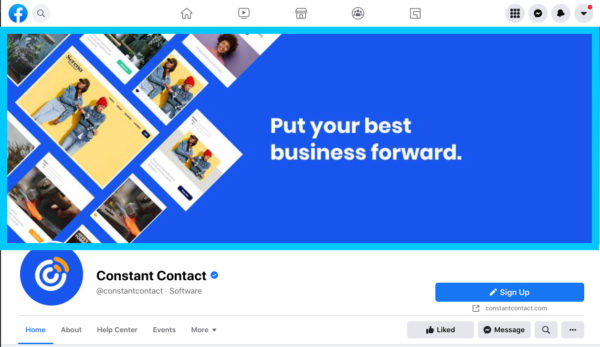
Your Facebook cover photo is the banner image that appears at the top of your page. Try to keep this image at 820 x 312 pixels and beware that anything smaller will be stretched to fit.
Stuck on what to choose for your cover photo? Check out these Facebook cover photo ideas.
Facebook profile photo: 170 x 170 pixels

Your profile picture appears just under your cover photo on your page. It also shows up next to every post and ad you publish, so when it comes to your profile photo, make sure to use an image that represents you or your brand. It should be at least 170 x 170 pixels.
Facebook post image size: 1080 x 1080 pixels
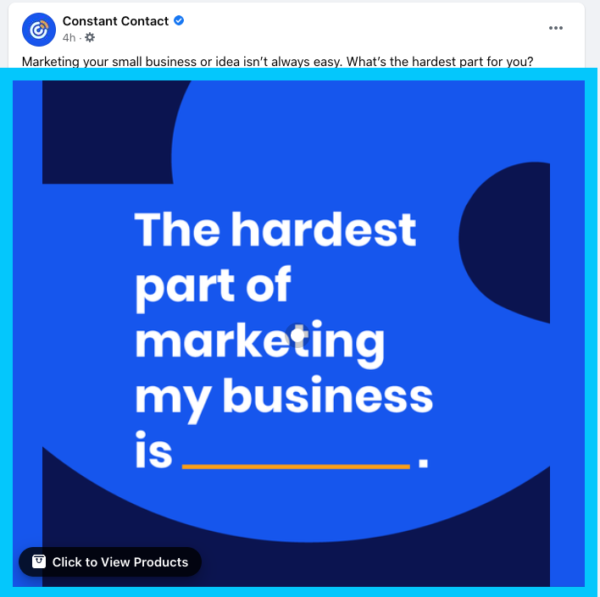
Want to share a post to your brand page that includes an image? Images that are shared in a post have a recommended size of 1080 x 1080 pixels. This square format (also called a 1:1 ratio) will look the best on both the desktop and mobile Facebook feed when you’re trying to primarily showcase a picture.
Pro tip: Use your Facebook Page to really showcase your brand and create a cohesive, identifiable profile. You can do this by using your company logo as your profile picture and a photo that speaks to who you are as a brand for your cover photo.
Read our tips for how you can promote your Facebook page.
Facebook Event cover photo size: 1920 x 1005 pixels
Creating a Facebook Event is a great way to generate awareness for your upcoming event, whether it’s in-person or virtual. When creating your event listing on Facebook, you can upload a cover photo to provide context for the event. Cover photos for Facebook Events have a recommended size of 1920 by 1005 pixels.
Instagram image sizes and dimensions
Instagram profile picture size: 110 x 110 pixels
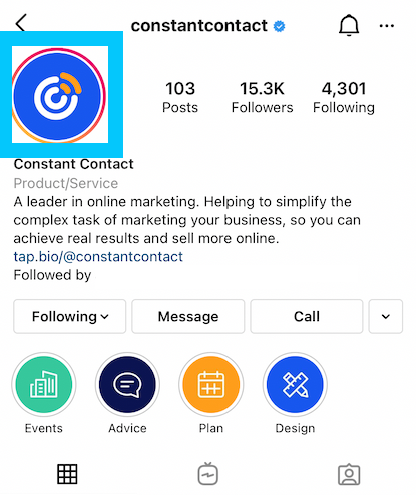
Instagram is all about images, so it’s important to get things right. For your profile picture, use an image that is 110 x 110 pixels. Keep in mind that this will be cropped as a circle, so be aware of any details that may be lost at the edges.
Instagram post size: 1080 x 1080 pixels
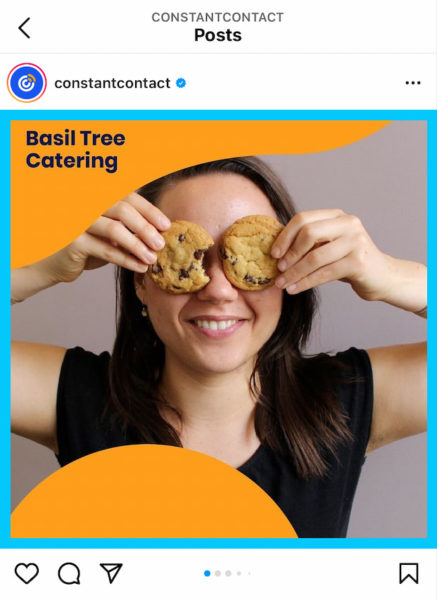
Uploaded in-feed images on Instagram can be square (1080 x 1080 pixels) or rectangular (4:5 ratio). The thumbnails that preview your uploads on your profile appear as 161 x 161 pixels.
Instagram Story size: 1080 x 1920 pixels
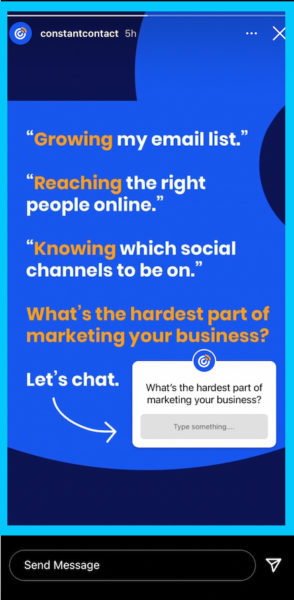
Instagram Stories are one of the best ways to engage with your followers with full-screen content. When posting to Stories, be sure to use the recommended resolution of 1080 x 1920 pixels or an aspect ratio of 9:16.
Instagram Reels size: 1080 x 1920 pixels
Instagram Reels are a full-screen video experience. That means you’ll want to aim for the same dimensions as Instagram Stories — 1080 x 1920 pixels, or a 9:16 aspect ratio.
Pro tip: Short content is in on Instagram! With more than 300 million daily users, Instagram Stories and Reels are a good place to focus this year when creating short-form content. Check out our tips for how to get started on Instagram.
Pinterest image sizes and dimensions
Pinterest profile image size: 165 x 165 pixels
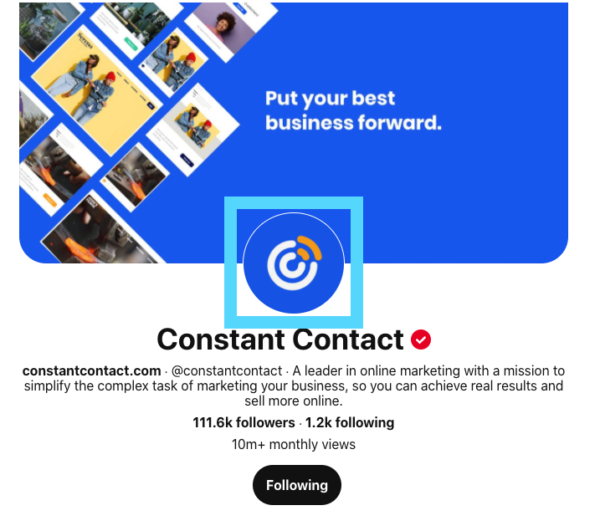
Your Pinterest profile image helps users recognize your brand. Profile images on Pinterest appear at 165 x 165 pixels on the homepage.
Pinterest post (or Pin) image size: 236 pixel width OR 660 pixel height, or a 2:3 aspect ratio
Each individual post on Pinterest is called a Pin. Pins on the main page, or on a board, will appear at 236 pixels wide with a scaled height. Once expanded, Pins have a minimum width of 660 pixels with a scaled height.
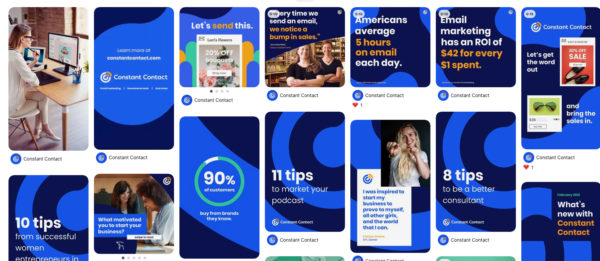
When creating a Pin for Pinterest, it is recommended to use a high-quality, vertical image with an aspect ratio of 2:3 (such as 1000 x 1500 pixels).
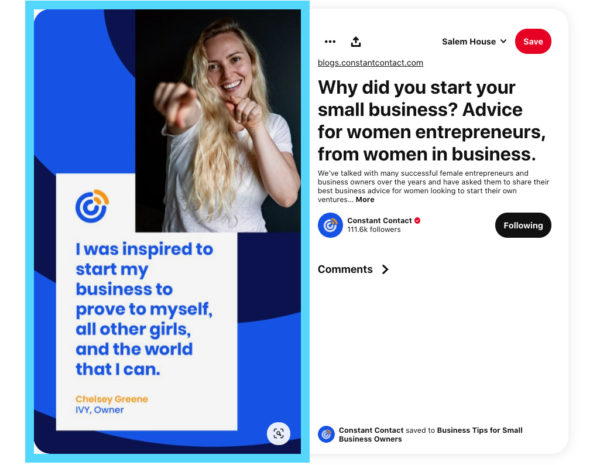
Pro tip: Pinterest is all about organization. When creating boards for your profile, be sure to keep content relevant. For example, a board on home decor should not include recipes. Be sure to choose a relevant thumbnail photo for each board as well to entice your audience to click.
Next: Read our tips for how to get your Pins seen on Pinterest.
YouTube image sizes and dimensions
YouTube profile image size: 800 x 800 pixels
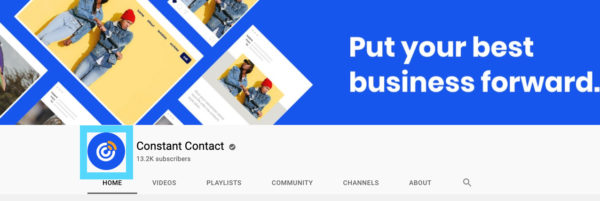
Your YouTube channel profile image shows a user whose channel they are on. Your YouTube channel profile image should be 800 x 800 pixels and should use either your company logo or a photo of yourself so people can easily identify your brand.
YouTube cover photo size: 2560 x 1440 pixels

YouTube allows you to upload a cover photo for your channel, further building your brand identity. The minimum image size for your cover photo is 2560 x 1440 pixels with an aspect ratio of 16:9.
YouTube cover photos can be tricky, to say the least. Although YouTube requires a very large image for your cover photo, only a sliver of this photo will be visible on desktop and mobile devices. Make sure to check your photo and adjust the crop using YouTube’s channel art tool before publishing to avoid any awkward cropping.
YouTube video thumbnail image size: 1280 x 720 pixels

When uploading videos to YouTube, custom thumbnails can be very useful in garnering attention for your content. Custom YouTube thumbnails for your videos should be 1280 x 720 pixels.
Next: Read our tips for how to get started on a YouTube channel.
LinkedIn image sizes and dimensions
LinkedIn company profile photo size: 300 x 300 pixels
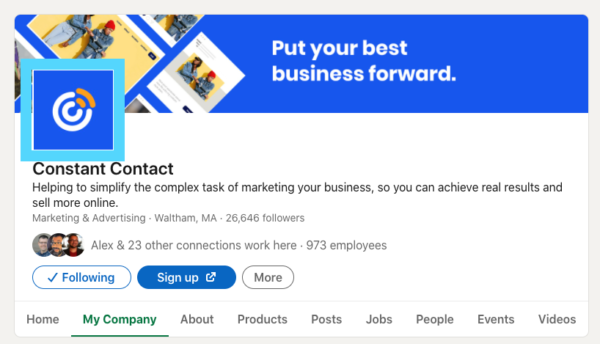
Uploading your company logo as your business page image ensures that customers, employees, and others can easily identify your profile. Your company logo image should be 300 x 300 pixels.
LinkedIn company banner photo size: 1128 x 191 pixels
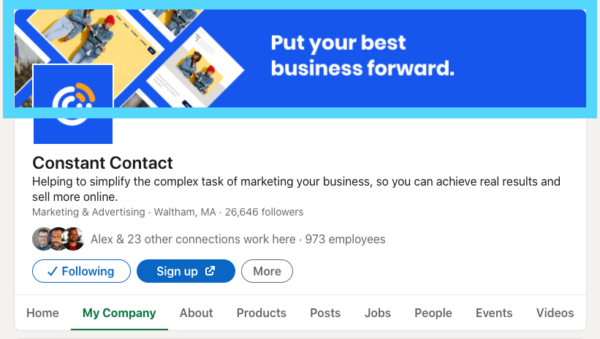
LinkedIn’s company business background image covers the entire top of the page. It is recommended to upload an image around 1128 x 191 pixels.
LinkedIn post image size: 1200 x 1200 pixels
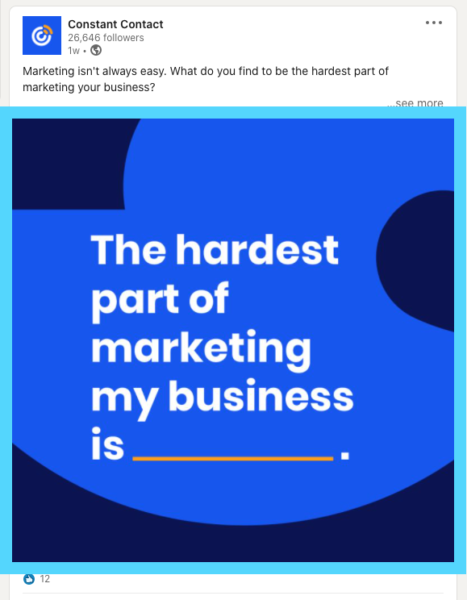
Posting to your business page on LinkedIn is a great way to share exciting company news or updates. If you’re going to include an image in your post, use the recommended size of 1200 x 1200 pixels.
LinkedIn is the world’s largest professional network — so keep it professional. Make sure that your posts, and images, are appropriate for the audience and focus on building relationships with industry leaders or finding new employees rather than driving traffic or prospecting for new customers.
LinkedIn profile picture size: 400 x 400 pixels

Make sure your personal profile is connected to your company page, is filled out, and represents you well with a nice profile picture. The recommended LinkedIn profile picture size is 400 x 400 pixels.
Next: Learn how to use LinkedIn Groups.
Why it matters to use the correct social media image sizes and formats
Did you know people can recall 65 percent of the visual content they see almost three days later? This statistic is especially impressive when you compare that to written content, of which only 10 percent is recalled three days after it’s read. Hopefully, you won’t forget this blog post in three days!
It’s clear that you shouldn’t ignore the power of visuals when it comes to social media marketing. However, it’s a challenge to keep up with the ever-changing image size guidelines for social media. The impact of posting visuals goes down when you post one that is awkwardly cropped or can’t be viewed on certain devices, so it’s important to get it right.
That’s why we’ve created this social media image size guide for Facebook, Instagram, Pinterest, YouTube, and LinkedIn. Be sure to bookmark this page so you can refer back to it as you create content throughout the year.
Free tools to create eye-catching social media images with the correct dimensions
Photography and photo editing not your forté? No worries. Image tools such as Canva, Stencil, Snappa, PicMonkey, Pablo, and Adobe Spark make it easy. They even have customizable social media image templates perfectly sized for each platform!
Constant Contact also makes creating custom images easy. Our image editor allows you to easily crop images and add text, stickers, or overlays to spice up your visuals. You can also add your edited images to your Library and then save them to your computer.
Additionally, our integration with Shutterstock provides access to a stock image gallery with millions of professional quality and royalty-free stock images. Images are available for free, or to purchase, and can be added to the Library to be used in your emails, events, and surveys.
Download our free social media image sizes cheat sheet
Download and save our handy social media image size guide below so you can quickly reference the correct image dimensions for Facebook, Instagram, Youtube, Pinterest, and LinkedIn. (Click image to open full-size in a new tab.)
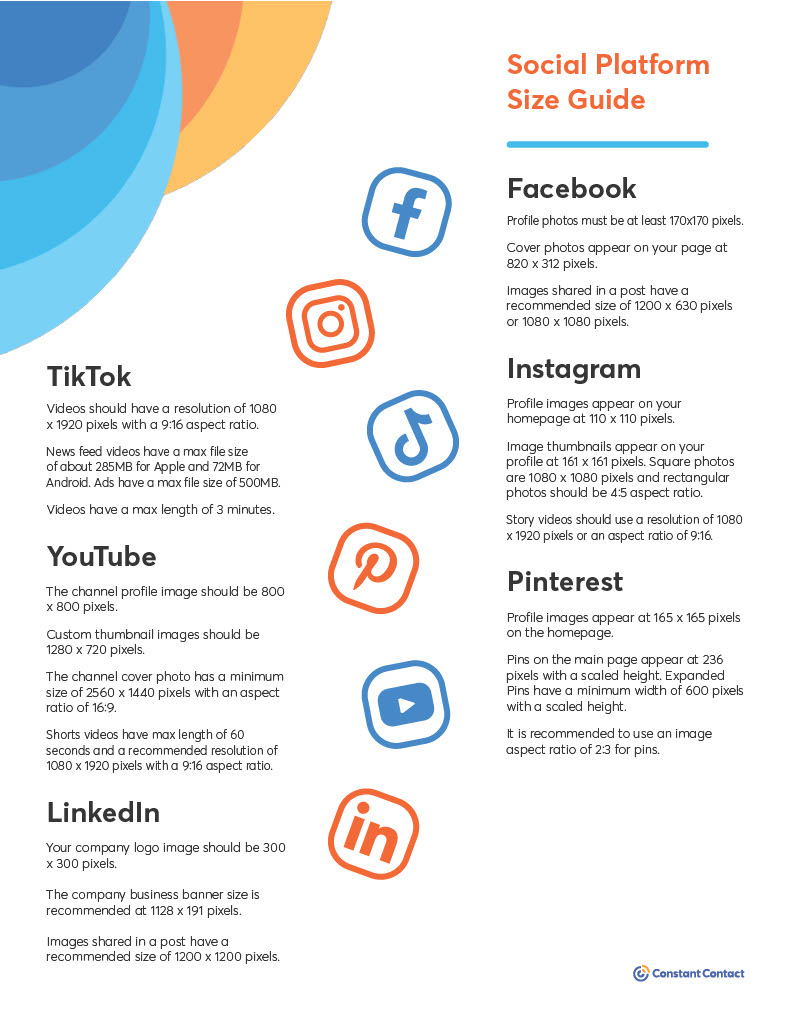
Obtaining a new customer is nearly always good news. After all, you need clients for a functioning business. Without them, you’d lack the necessary cash inflows to support company operations. However, customer acquisition usually requires some monetary outlay in marketing and advertising, which dilutes the initial profit.
Calculating your customer acquisition cost (CAC) tells you exactly how much you spend on marketing and advertising to attract a new client. CAC is an essential metric to evaluate the health and efficiency of your customer acquisition strategies. Maintaining a CAC in line with your budget sustains business profitability.
Understanding the components of CAC
In digital advertising, calculating customer acquisition cost starts with identifying your total marketing expenses used to attract clients. Typically, customer acquisition expenses fall into several categories:
- Ad spend: The cost of running ads through your various marketing channels
- Employee wages: The amount paid to employees and contractors working on your advertising campaigns
- Technical costs: Expenses associated with any marketing software you use, such as email and SMS subscriber platforms or reporting tools.
- Creative & Production costs: Expenses used to produce ads, such as a camera to produce quality pictures for a print ad
- Inventory maintenance: The cost of maintaining your physical or digital product inventory, such as storage fees or product updates
Step-by-step breakdown of the CAC calculation
The general formula for how to calculate likely customer acquisition cost is:
CAC = Money spent on sales and marketing / Number of customers
To calculate it, follow these steps:
- Determine the time period for your evaluation.
- Add up your marketing and sales expenses.
- Divide the number of new customers acquired during the defined period by your total sales and marketing costs for that period.
Choosing the right time period for CAC calculation
The first step of calculating CAC is deciding on the time period for your calculations. The time period can be a month, a quarter, several quarters, a year, or even longer. You can evaluate your CAC over time by calculating several different periods and comparing the results.
For instance, say you want to compare your first quarter CAC to last year’s first quarter CAC. You could pull data from each time period to calculate the CAC and compare the results. If your most recent CAC drops compared to last year, your marketing strategies are becoming more efficient.
The CAC calculation process
There is a general formula for calculating CAC and several others that can be used for a more focused or in-depth evaluation. Here’s what you need to know about how to calculate the cost of customer acquisitions.
Standard customer acquisition cost formula
The standard customer acquisition cost formula is calculated as:
CAC = Total marketing and sales costs / Number of new customers over a period
So, let’s assume you’re calculating CAC for the quarter. You have $500,000 in marketing and sales costs and have acquired 1,000 new customers. Your CAC is $500, or $500,000 / 1,000.
Fully loaded customer acquisition cost formula
The fully loaded CAC formula includes additional expenses besides sales and marketing costs, such as:
- Overhead expenses like office space for marketing employees
- Legal services associated with marketing, such as advising on sales terms or creating customized contracts
- Discounts on products and services, especially for new customers
To calculate fully loaded customer acquisition costs, apply this formula:
Fully loaded CAC = All costs associated with customer acquisition / Number of new customers
The fully loaded CAC formula helps determine the scaling potential of your organization. It’s beneficial for investors and founders seeking to raise capital.
Paid customer acquisition cost formula
Paid CAC evaluates acquisition costs associated with paid ads and other paid marketing channels. It specifically excludes certain expenses, such as employee salaries and overhead expenses. Total acquired customers are limited to those obtained through paid mediums.
The formula for Paid CAC is:
Paid CAC = Marketing and sales expenses (less salaries and overhead costs) / Number of new customers obtained through paid channels
Let’s take an example. Assume you run a paid Google ad for one month, with a total expense of $5,000. Your paid ad results in 100 new customers. The paid CAC for your ad campaign is $50, or $5,000 / 100.
Calculating CAC for different business models
The CAC calculation can vary across business models. Here are some examples.
Example 1: CAC for a SaaS B2B organization
SaaS companies run on a subscription model, where customers pay a set fee over various intervals. Subscriptions may be monthly, quarterly, annually, or some other cycle. Here’s how to calculate customer acquisition cost for SaaS B2B customers:
CAC = Total marketing and sales costs for SaaS product / Number of customers who sign up for new SaaS product
Assume your marketing and sales costs for attracting new SaaS customers are $50,000 monthly. Over that timeframe, 200 new B2B customers sign up for your SaaS product, and your CAC is $250. You can apply the same formula for how to calculate customer acquisition cost for tech startups.
Example 2: CAC for a special event
Sometimes, companies use events like conferences or webinars to draw in new clients. An event is a great way to showcase your products, establish credibility, and connect with potential customers. Here’s how to calculate customer acquisition cost for events:
CAC = Total marketing and sales costs for the event / Number of clients who attend the event
Let’s say you host a webinar for your service business. You spend $5,000 to promote your webinar, which is available live and via recording for people who plan to watch it at a time convenient to them. The total number of attendees is 1,000. Your CAC is $5 for the webinar, or $5,000 / 1,000.
Example 3: CAC for a manufacturing company
Manufacturing companies create goods for resale or as components for other products. To calculate the CAC for a manufacturing company, use this formula:
CAC = Total marketing and sales costs for a product / Total new customers
Assume you run a tire manufacturing company. You produce a specific tire for SUVs, which you market to dealerships and car repair shops. Your total marketing expense for the tire is $10,000, and your total new business customers are 500. Your CAC is $20.
Lifetime value to CAC ratio
Hopefully, the first time a customer purchases with you won’t be the last. Some clients will become repeat customers and return again and again whenever they need something your organization offers. Thus, it’s useful to calculate their projected lifetime revenue with your company and compare it to CAC.
You can determine customer lifetime value (LTV) using a few components:
- Average purchase value: The average revenue of a sale in a specific period
- Purchase frequency: The number of times the average customer buys from you in a time period.
- Customer value: Calculated by multiplying average purchase value by purchase frequency
- Average customer lifespan: Length of time the average customer stays with your company
Once you have data for all four components, you can calculate lifetime value. The formula for LTV is customer value multiplied by the average customer lifetime. The result tells you how much revenue you can expect from each customer you acquire over the time they buy from you.
You can compare LTV to CAC as a ratio. For instance, assume you calculate $300 as your LTV and $150 as your customer acquisition cost. Your LTV to CAC is $300:$150, or 2:1. For every customer you acquire, you can expect an average profit of $150 — double your marketing investment.
Importance of LTV to CAC comparison for business health
Comparing LTV to CAC helps assess whether you’re recouping the cost of your marketing investment and by how much. The higher the ratio, the more efficient your marketing strategies are and the more revenue you generate from your client base. A low ratio like 1:1 indicates that the revenue you’ll earn from each new client just covers your marketing costs, which can lead to future solvency issues.
CAC and business metrics
It’s possible to examine CAC in many ways. You can subdivide it across multiple segments, time periods, and channels. Here are a few ideas for establishing a set of business metrics using CAC:
Channel metrics
- Advertising channels, such as online PPC ads vs. commercials
- Subchannels, such as Facebook vs. Instagram ads
- By advertising campaign
- Keywords used in PPC ads or content marketing
Segment metrics
- Profitability of an SMB versus an enterprise client
- Geographical, such as by city or country
- Specific product or service CACs
Industry benchmarks for CAC
How do you know if your CAC is satisfactory or needs work? The clearest answer can probably be found by comparing it to your LTV. The higher your LTV compared to your CAC, the more effectively you’re spending your marketing dollars.
You can use industry benchmarks for CAC and LTV and compare them to your own results. First Page Sage has an extensive set of industry CAC and LTV benchmarks, a few of which include the following:
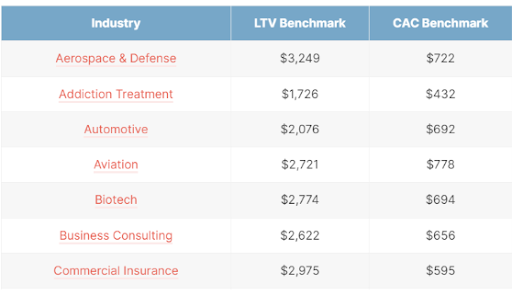
If you find your CAC lags behind your target goals, take action to improve it. Here are a few ways to do so:
1. Analyze marketing data to optimize spending
You likely use a variety of platforms to advertise to your target audience. Monitor them closely to evaluate CAC on each one. For instance, you might calculate CAC for your PPC ads and again for email marketing messages. If you find one channel performs better than others, determine why. It may be more effective and cost-efficient to invest more in a high-performing CAC channel than a lesser one.
2. Use A/B testing to improve conversions
Sometimes, a slight tweak to your marketing message can make a big difference in conversions. Try testing different aspects of your advertisements to see if your changes impact results. For instance, you might switch subject lines on marketing emails or swap pictures in a social media post.
3. Get customer feedback
Your customers are your most valuable source of feedback. Ask them about their shopping and product experience whenever possible. Incorporate their comments into your product development and marketing efforts, and see whether that improves your LTV and CAC over time.
4. Use effective pricing strategies
Pricing products effectively is key to improving your CAC. If your prices are too low, it will be challenging to increase your CAC. Analyze your industry to determine whether your product pricing is reasonable. If it’s not, try adjusting your prices to raise your CAC.
Software solutions and tools for CAC calculation
Several different marketing software platforms include features to calculate CAC, among other metrics. Here are a few to consider for your organization.
- Google Analytics: Google Analytics offers a fully customizable web analytics platform for tracking CAC, conversions, clicks, mobile traffic, and other events. It’s entirely free to use and doesn’t require much effort to set up.
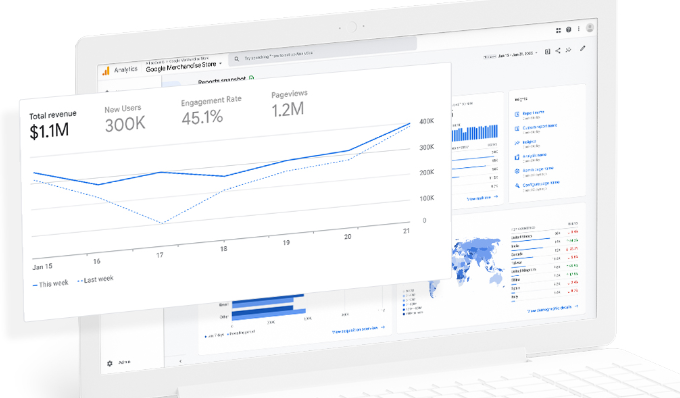
A customized Google Analytics dashboard with various marketing metrics. Image Source: Google Analytics
- HubSpot: HubSpot is a CRM platform that supports marketing and sales and offers extensive analytics. It’s ideal for large businesses with extensive marketing activities and campaigns to track.
- Salesforce: Salesforce is another CRM that supports marketing and sales activities. It includes functionality to track customer acquisition metrics like CAC and LTV.
- Constant Contact: Our CRM is an excellent option for SMBs who want a powerful marketing analytics platform that tracks CAC, LTV, and other key acquisition metrics.
Additional considerations in the context of CAC
The longer your customers stay with you, the more likely they are to purchase more than once. Lengthier customer retention times generally lead to a higher LTV, which is ideal for profitability. Remember that the higher your LTV to CAC ratio, the more efficiently you’re managing your marketing spend.
Sales costs are a component of CAC, just like marketing costs. In your CAC calculation, consider any sales expenses you incur, such as commissions, travel and entertainment, and networking costs.
Final thoughts and additional resources
Assessing your customer acquisition cost is essential to understanding how much money it takes to land a new customer. With that data, you can determine whether your spending is aligned with your budget and whether your marketing strategies are effective. As you continue your marketing journey, stay informed of the latest trends and practices with Constant Contact. Check out some of our other articles that can help you build a robust marketing campaign, like Using The Customer Journey Map to Personalize Email Marketing or How to Increase Average Order Value.
There’s a lot of competition among e-commerce retailers. Increasingly, getting your products or services noticed means anticipating customer needs and meeting leads where they are — that’s where targeted email marketing excels. When done right, it can increase conversions, encourage repeat sales, and help customers build a more personal relationship with your brand.
What is targeted email marketing?
Targeted email marketing involves creating email campaigns that send messages to subscribers based on demographics or interests. Rather than sending the same content to every subscriber, a targeted email campaign differentiates its messaging based on customer segmentation.
Customer segmentation is the process of grouping new leads or existing customers based on characteristics like age, location, gender, occupation, and purchasing patterns. Creating these groups involves gathering customer data either by requesting it from customers directly or by analyzing website visits and previous purchases.
These groups can be as broad or as detailed as you want them to be. You can start small by defining two or three different customer segments, then widen your segmentation into additional groups as you gather more data. Gathering more detailed data can take more time and effort, but the more detailed the segmentation is, the more relevant your message will be.
Benefits of targeted email marketing
Email marketing revenue is on the rise and is expected to continue increasing in the coming years. Every company can benefit from email marketing, but for e-commerce businesses, it’s an essential tool to keep your brand top of mind.
Here are a few of the perks you can look forward to when you embark on a targeted email marketing campaign.
Improving email relevancy and ROI
Your subscribers are more likely to act on messages that relate to their needs. Use segmentation to create target messaging that speaks to their interests. The greater your email’s relevancy, the more likely they are to read it and take action.
Building better customer relationships
Targeted email marketing helps you develop stronger relationships with customers. Rather than sending generic emails to your entire subscriber base, customizing your message for different segments gives your marketing a personal touch, and tells customers that you care about their needs beyond selling a product.
Enhancing customer retention
When segmenting based on purchasing patterns, you can appeal to existing customers by sending timely reminders about products you know they’re interested in. By anticipating their purchases and offering products tailored to their tastes, you can dissuade them from switching to the competition.
Increasing response and revenue
Customized emails will increase your response rate in the form of more opens and clicks. Higher response rates mean more subscribers moving down the sales funnel, which results in more conversions down the line.
How to create a targeted email campaign
Developing a targeted email campaign strategy starts with identifying your goals.
What are you hoping to achieve with your email marketing? More site visitors? More purchases? More demos? Decide what outcomes are most important to your business strategy, then build your campaign around them by following these steps.
1. Define your customer segments
The first step in creating targeted email marketing lists is defining how to segment your audience. Typically, marketers divide their segments into several different categories:
- Profile data: A customer’s profile data includes identifying information about them, such as demographics, age, gender, and location.
- Campaign activity: Marketers can separate subscribers based on their prior engagement, such as open rates and click rates.
- Shopping behavior: Your customer’s shopping behavior includes previous purchases, browsing activities, and abandoned cart items.
You can create multiple segmentation categories based on the data you have.
2. Gather necessary information for targeted marketing
To begin your targeted bulk email marketing efforts, you’ll need information about your subscribers. Use any data you’ve accumulated from their interactions with your brand to initiate the process.
One option is to include requests for a few key pieces of demographic information in your email list sign-up form. This helps subscribers self-segment into your targeted email content. You can also ask for customer details when they make a purchase. If you allow your clients to create an account on your website, you can track the pages they interact with to learn more about their interests.
Once you know who your customers are, you can segment them into different groups based on the details you have.
3. Use a CRM to manage customer data
A customer relationship management (CRM) system helps manage all your customer information in one place. You can connect it to all of your different marketing channels, including social media accounts, email messaging platforms, text messaging services, and other tools.
Your CRM can help you in the segmentation process, allowing you to securely and conveniently store customer data and use it to develop your campaign.
4. Create buyer personas for each customer segment
A buyer persona outlines the characteristics of your customer base, including their demographics, motivations, pain points, potential objections, and interests. Once you’ve gathered enough data from your customers, you can develop these personas to help you better understand their needs and goals. You can use the insights from buyer personas to create targeted email campaigns that align with your subscribers’ needs.
5. Choose the right email marketing service
There are many different targeted email marketing services on the market, so it’s important to choose one that offers the tools you need to craft effective emails. Some helpful features to look for include:
- Pre-designed email templates: Email templates speed up the time it takes to produce your emails. They also make your emails appear more professional and streamlined.
- Mobile optimization: A large portion of your subscriber base will read their emails on mobile devices, like phones or tablets. Look for an email marketing service that provides support for mobile optimization.
- Robust analytics: Reviewing the results of your email marketing campaigns allows you to determine if your strategy is working or if you need to make adjustments. Choose an email marketing service that offers tracking and analysis tools as part of the package.
- Third-party integrations: Some email marketing services integrate directly with third-party apps and subscription services, saving you manual effort and streamlining your marketing processes.
- Automation: With automation tools, you can establish email sequences and schedule your campaigns in advance.
6. Develop personalized content for target segments
Customizing your content for each client segment helps you develop stronger bonds with your customers. Include messaging that speaks to your client’s specific goals or needs. To understand what those needs are, you’ll need to gather data about your customer’s interests, demographics, and how they engage with your brand.
You might offer product recommendations based on a customer’s browsing history or prior purchases. Recognizing important dates — such as your subscriber’s birthday or anniversary — is another good way to connect with customers. It also helps to personalize your email’s subject line using their name or other personal details.
7. Launch automated marketing campaigns
Automation can significantly streamline your email marketing efforts, enhance your customer relationships, and boost subscriber engagement. You can establish automated email sequences triggered by your subscriber’s actions. For instance, you might send a welcome email when they subscribe to your targeted lists for email marketing and initiate a drip campaign to gently push them toward making a purchase.
Automation tools allow you to schedule emails in advance, and you can use them to personalize your messages. For example, you might set up automated emails for special birthday discounts or anniversary congratulations.
Constant Contact provides a comprehensive email marketing platform that includes automation tools for drip campaigns, email creation, and scheduling. Use it to manage your entire email marketing campaign from start to end.
Segmenting your email list
Developing targeted lists for email marketing starts with understanding who your typical buyers are and what motivates them to buy. These are just a few possible categories you can use to segment your audience.
Location
Geographic segmentation involves categorizing customers according to their location and language. It’s helpful if you have customers in different cities, states, regions, or countries. For instance, if you have customers in Canada and Mexico, you could tailor your content to regional and language preferences.
![]()
Example of customer segmentation by categories or tags. Source: Constant Contact
Lifecycle
Lifecycle segmentation is the process of targeting subscribers based on where they are in the buying process.
If a subscriber is new to your mailing list, you might send them a welcome email and information about what they can expect from your brand. People who have already purchased from you might receive discount coupons or recommendations for other products.
Behavior
Behavior segmentation involves classifying customers according to their interactions with your brand.

Example of segmenting by user behavior: setting rules based on contacts who opened prior emails. Source: Constant Contact
Website activity, prior purchases, buying frequency, and recent customer engagement are all tools you can use to separate subscribers into various groups. For example, you might send a reminder email to a customer when their subscription is about to expire or recommend a complementary product for a recent purchase.
Gender
Gender-based segmentation is helpful if you have products tailored exclusively for men or women, such as clothing. It can also be useful if your data indicates that your customers are primarily men or women, so you can focus your efforts on the group more likely to make a purchase.
Preferences
Preference-based segmentation involves classifying clients according to their specific preferences. For instance, you might provide subscribers with the option to select how frequently they hear from you and segment them accordingly.
Purchase frequency
Purchase frequency segmentation is helpful for clients who purchase at different intervals from you. For example, if you have a SaaS product offering different subscription lengths, you can remind customers of their renewal based on their purchase terms.
Devising pre-segmentation and post-segmentation strategies
Typically, email segmentation falls into two categories: pre-segmentation and post-segmentation. Your pre-segmentation email strategy concerns the content you share before learning about your audience’s interests and demographics. It can include things like welcome emails and general information about your company.
You can incorporate post-segmentation strategies after you learn more about your subscribers and decide on how to categorize them. Your post-segmentation strategy will move away from generalizations to more personalized content.
Measuring your success
You won’t know whether your campaign strategies are working unless you evaluate your results. Establishing key performance indicators (KPIs) that align with your goals for the campaign can help you analyze results and determine whether they’re meeting your expectations.
Analyzing your email campaigns
Analytics can help you review the results of your campaign. Evaluating your open rates, click-throughs, and conversions will help you understand your performance. You can compare your results against pre-established benchmarks to determine if you’re meeting your expectations.
Conducting A/B tests for optimization
A/B tests are a great strategy for targeted bulk email marketing. Try changing different aspects of your messages, such as your subject line or images, and send different emails to a small portion of your subscribers. You can send a wider group the email that generates the best response from your A/B test.
Reaching your full potential
Targeted emails require more than just segmentation to be effective. The following methods will help your digital marketing strategy soar.
Use a CRM
Consider using tools like a CRM platform to manage your email campaigns and subscriber data. Constant Contact’s lead generation CRM can help you attract more clients — and ultimately, generate more sales — through email digital marketing.
Drive high ROI with targeted email marketing
Targeted email marketing is one of the best ways to drive ROI. Since you’re tailoring your content to each subscriber’s interests, buying motivations, demographics, and other factors, they’re more likely to open it, read it, and take action. When your subscribers convert, it results in a higher campaign ROI.
Know when to target subscribers for conversion
Most customers won’t convert when they first learn of your brand. Instead, you’ll need to warm them up by providing them with informative content and reasons to purchase from you.
Initiating a drip campaign can help you attract their interest and learn more about what motivates them. As you gather more information about their needs, you can take a more sales-oriented approach to your email strategy.
Advanced techniques and considerations
Once you’re familiar with the ins and outs of building a targeted email campaign, consider these more advanced techniques for maximizing its effectiveness.
Optimizing for ultimate success
Your work doesn’t end once you’ve fully implemented your targeted email campaign. Instead, continue to review your results, compare them against your benchmarks, and tweak your strategies and content as needed. Regularly assessing your performance can help you optimize for continued advancement.
Focus on click-through rates
Ultimately, open rates and read rates don’t determine the effectiveness of your campaign; a conversion does. Experiment with different tactics and messaging strategies to increase your click-throughs. Time-sensitive offers and valuable collateral can help encourage more subscribers to click through. Track, analyze, and adjust your campaign strategies overtime to achieve positive results.
Legal and ethical considerations of email marketing
When developing any email marketing campaign, it’s important to ensure compliance with laws about data collection and use. They vary by state and country, and you should familiarize yourself with them to avoid breaking regulations.
When building your subscriber list, be sure to get your customers’ consent to receive marketing materials from you. Sending a verification email after they opt-in provides additional confirmation that they want to receive your messages.
Focus on growing your list organically through ethical means. While it may take some time and effort to build your subscriber list, you’ll end up with a genuine, attentive audience that wants to hear from you.
Resources:
Strengthen customer relationships with targeted email marketing
Targeted email marketing campaigns for e-commerce are some of the best ways to develop strong customer relationships and boost your sales. To run an effective campaign, you’ll have to get to know your audience — who they are, what they want, and how they like to be approached. The effort will pay off in the form of stronger brand loyalty and more conversions.
Constant Contact provides tons of materials that can assist you in your efforts. Check out our comprehensive guide to email marketing for small businesses to hone your skills, our lead gen and CRM product features to manage sales, and download our automation guide to help you run smoother campaigns with less manual effort.
I’m picky when it comes to my email. I only sign up for mailing lists that fit my interests and offer great content. And I’m quick to unsubscribe from emails that seem spammy or I can’t remember signing up for. This approach keeps my inbox squeaky clean and focused on my favorite topics: dogs, books, and hiking.
Opt-in emails are one reason why I have such a tidy inbox. Businesses send these messages to people who have shown interest in their communications. Recipients who “opt-in” permit the companies to send them promotional emails.
Opt-in emailing gives customers more control over their inboxes. It’s also legally required in many countries. Read on to discover everything you need to know to write strong opt-in emails.
What is an opt-in email?
An opt-in email is a message sent to people who have consented to receive promotional materials. Businesses only send opt-in emails to people who voluntarily provide their contact information.
The process typically looks like this:
- A prospective customer visits your website and wants to learn more about your brand.
- They fill out a web form to sign up for your email list.
- You add the prospect to your mailing list and send them marketing emails.
This simple process builds trust by letting customers control the content they receive. It also helps reduce the amount of spam in their inboxes.
Opt-in vs. opt-out emails
Opt-in and opt-out emails sound similar, but there are a few key differences.
Brands send opt-in emails to people who have already expressed interest. This process lets people choose whether to start receiving emails. If the person doesn’t opt-in, they don’t get any messages.
Opt-out emails take the opposite approach. These messages assume consent until the recipient explicitly opts out of future communications. Companies often send opt-out emails to potential customers as cold — or unsolicited — messages.
Opt-in email marketing helps companies create an engaged audience. When your subscribers opt-in, you know that they genuinely care about your content.
By contrast, opt-out emails assume consent until the recipients actively say no. Some people may view these emails as pushy or unwanted, which can hurt your brand reputation.
Legal considerations for opt-in emails
Many countries have created laws regulating commercial emails. In the U.S., businesses must follow the CAN-SPAM Act. This acronym stands for the Controlling the Assault of Non-Solicited Pornography and Marketing Act of 2003.
The CAN-SPAM Act defines commercial emails as “any electronic mail message the primary purpose of which is the commercial advertisement or promotion of a commercial product or service.” This definition includes business-to-consumer (B2C) and business-to-business (B2B) emails.
According to the CAN-SPAM Act, opt-in emails and other commercial messages must:
- Use accurate header information
- Avoid using deceptive subject lines
- Disclose that the email is for marketing purposes
- Include a valid physical postal address
- Give the recipient a way to opt out of future marketing emails
You must also follow the General Data Protection Regulation (GDPR) if you have subscribers in the European Union. This law requires companies to get permission to send emails and sets strict rules about data privacy.
Companies that don’t obey these regulations can face hefty penalties. Make sure you fully understand and follow all relevant laws before sending emails.
The role of opt-in emails in digital marketing
Opt-in emails are a key part of any digital marketing campaign. They allow you to only contact people who have given their express permission. That way, you can build an email list of eager and willing subscribers.
Opt-in email marketing also helps you personalize your messages. You can use your sign-up form to collect relevant demographic data. Many companies also let customers opt-in to receive certain types of messages. This information allows you to tailor your emails for the most impact.
Best practices for opt-in emails
Building opt-in email lists can sound complicated and scary. You may ask, “How do I know if I have permission to send messages? What if no one wants to sign up? What if customers give permission but change their minds later?”
Don’t worry. By following these best practices, you’ll master opt-in email marketing in no time.
Keep sign-up processes simple and straightforward
Don’t make customers jump through hoops to join your mailing list. Follow these steps to make your sign-up process fast and easy:
- Explain what the subscriber is signing up for.
- Give clear instructions.
- Only ask for essential information, such as their name and email address.

Chewy offers a great model of an effective sign-up form. They include a catchy slogan in bold font to grab the reader’s attention as they scroll down the page. Chewy also summarizes its email content in one sentence for easy skimming. Finally, Chewy only asks customers to share their email addresses so they can sign up in seconds.
You don’t need a computer science degree to create your own registration form. Constant Contact has many tools to help you collect permission-based subscribers, including:
- Banner sign-up forms
- Pop-up sign-up forms
- Sign-up landing pages
- Facebook and Instagram lead ads
- Text-to-join options for in-person signups
Email sign-up tools increase your reach by letting you offer more than one way to subscribe.
Ask for feedback to improve opt-in email content
Feedback helps you continuously improve your opt-in emails. There are many ways to ask your subscribers for their opinions, such as:
- Email surveys
- Feedback forms
- Focus groups
- Social media polls
Say you want to create more relevant content for your subscribers. You could send them a survey about the types of emails they enjoy receiving and ask them to recommend new content you should cover. This approach helps you tailor your content for your audience, meet their expectations, and make them feel part of your community.
Encourage subscriptions with incentives
Offering an incentive is one of the best ways to get email marketing opt-in. The gift doesn’t need to be fancy or expensive. But it should be something that your target audience finds relevant and valuable.

For example, the publisher Simon & Schuster offers new subscribers a free ebook. This exclusive offer gives potential customers immediate value when they opt into the company’s email marketing.
Here are other incentives you could offer subscribers:
- Audiobook
- Discount or coupon
- Free trial for a product or service
- Online course
- Webinar
- Video
Let subscribers customize their preferences
Many subscribers only care about certain types of content. For example, a customer may love educational content but not want to read product updates. Respect these preferences by letting subscribers control the content they receive.
For instance, you could allow subscribers to choose from these options:
- All communications
- Weekly newsletters
- Industry updates
- Exclusive event invitations
- Discounts and promotions
- Updates on new products and services
- Surveys and feedback requests
Giving options lets customers customize their email preferences based on their interests. They can adjust these settings as their needs change. This strategy increases engagement by allowing customers to receive relevant and meaningful content.
Maintain subscribers’ permission over time
Subscribers can choose to opt out of your emails at any time. If you want to keep them on your mailing list, you’ll need to give them a reason to stay loyal.
Creating compelling, high-quality content will help you maintain permission. Keep your audience engaged with meaningful content tailored to their needs. For example, you can send educational articles, exclusive discounts, and how-to videos. Producing diverse content will allow you to offer value to everyone on your list.
You can also maintain subscribers by offering periodic rewards. These incentives could include free gifts, loyalty points, and access to special content. This technique gives customers a reason to stay engaged after they opt-in for emails.
Types of opt-in emails
There are two sign-up methods for opt-in emails: single and double.
Single opt-in emails
The single opt-in method only asks for permission once. The process is simple. The subscriber fills out the sign-up form, clicks the submit button, and gets added to the mailing list.
Single opt-in is the fastest and most accessible way to get new subscribers. Consumers can sign up in a few seconds and receive emails immediately. But this method could lead to spam complaints if consumers give incorrect or fake email addresses.
Double opt-in emails
The double opt-in email requires subscribers to give permission twice. First, they’ll give you their contact information. Next, they’ll receive an email asking them to click a link to confirm their subscription. If they don’t opt-in both times, they won’t get added to the mailing list.
This approach lets you confirm that you’re sending messages to the right inboxes, reducing bounce rates. Subscribers also need to work harder to receive double opt-in emails, which increases engagement. But the higher barrier for entry can lead to fewer subscribers in the long run.
Opt-in email marketing in practice
Opt-in emails offer many benefits for companies in all industries. They help businesses comply with the GDPR and other regulations. This method also makes it easier for customers to distinguish legitimate messages from spam.

Looking for inspiration? Study real-world examples of successful opt-in email strategies. For instance, author Elizabeth Spann Craig includes a banner sign-up form at the top of her website. She offers subscribers free ebooks, recipes, and other incentives.
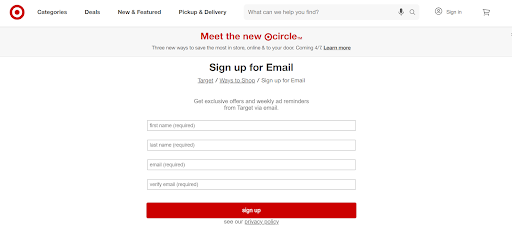
Target is another notable brand that uses opt-in emails. The company offers subscribers exclusive deals and weekly ads.
Designing effective opt-in emails and forms
There are many strategies and tools for creating effective opt-in emails. Follow these tips to get started.
Use email and sign-up form templates
Save time by using templates to create your opt-in emails and sign-up forms. These layouts let you create consistent, professional designs in minutes. Look for a platform that allows you to customize pre-designed templates with your brand logo and colors. Constant Contact offers hundreds.
Place opt-in forms in the right spots
Catch the attention of potential subscribers by putting your opt-in forms in the right places. Some companies put these forms in their website headers so visitors see them immediately. Other effective locations include the sidebar and pop-up boxes.
Don’t forget to include a link to your sign-up form in your social media bios. This technique will help you attract customers who may discover your brand through Instagram and other platforms.
Use pop-up forms strategically
Popups can be a highly effective way to promote sign-up forms and get new subscribers. But you need to use this tool carefully to avoid disrupting the user experience.
Keep popups simple and small so users can absorb them quickly. You should also include a noticeable “X” so visitors can close the popup and return to your website. Finally, consider creating exit popups that only appear when users try to leave your website. This method gives departing visitors one last opportunity to engage with your brand.
Boosting opt-in rates
Many marketers struggle to consistently grow their opt-in email lists. These tips can help you achieve success:
- Research your audience’s interests so you can create irresistible offers.
- Use case studies, testimonials, and other social proof to build trust.
- Post consistently on social media to boost your online presence and attract more opt-ins.
- Organize giveaways to entice new subscribers.
- Add calls-to-action to blog posts and other content.
- Host virtual events and ask attendees for their email addresses.
Opt-in email and permission-based marketing
Opt-in emails are a core part of permission-based marketing. This strategy asks customers for consent to send them promotional materials.
Permission–based marketing has many benefits. Asking consumers for consent builds trust and makes them feel respected. This approach also increases the quality of leads by letting you focus on prospects who have already expressed interest.
Empower your customers with opt-in email marketing
Opt-in emails are essential for ethical marketing. This technique prioritizes consent and demonstrates that you respect your audience’s preferences. It also boosts engagement rates by ensuring you only contact people who are interested in your emails. Get started by creating a sign-up form for your website. As your opt-in email list grows, you can engage your new audience with compelling content. You can also design an email drip campaign to connect with subscribers regularly. With these strategies, you’ll empower your clients and build stronger relationships.
As a marketer, it’s essential to understand what a sender score is and how it impacts your email reputation. A sender score evaluates whether you’re a spammer or are sending legitimate, authentic emails that people want to read. Working toward a high sender score is crucial to keep your marketing emails out of the spam box.
Email providers use two measures to evaluate the sender score, which combine to form your email sender score and impact email deliverability:
- Domain reputation gauges the credibility of your domain.
- IP reputation evaluates the legitimacy of your IP address.
Understanding your sender score
Here’s what you need to know about your sender score.
How is the sender score calculated?
In addition to domain and IP reputation, email service providers determine the sender score based on several factors, including the following:
- Recipient engagement with your emails through opens, clicks, unsubscribes, and spam complaints
- Frequency, volume, and consistency of emails
- Whether your domain passes authentication checks
- Quality of your email contact list
Domain reputation and its role in sender score
Domain sender score represents how reputable your email’s domain is. Your domain follows the @ in your email address, such as @company.com. Possessing a high-ranking domain improves your sender score, reducing the likelihood of your emails going to spam.
You can find your domain sender score using tools like senderscore.org. Simply entering your domain will retrieve a numerical assessment between 0 and 100. A sender score between zero and 69 is considered poor, while a score of 70 to 79 is fair. Anything over 80 is good. The higher your score, the more authoritative your domain is in the eyes of email service providers.
IP reputation and its impact on sender score
Every email address has an assigned IP address. Email service providers evaluate your IP address’s credibility when determining your sender score. The higher your IP reputation, the better your sender score will be.
In the early stages of building your email subscriber list, your IP address will have a low score. Your score will naturally increase as you attract more subscribers, send quality content, and stick to a regular email frequency.
Checking your sender score
Your sender score determines whether email service providers believe you’re a spammer.
How to check your sending reputation
You can use any of these tools for a sender score reputation check:
- Sender Score: A free measurement tool that evaluates your sending reputation.
- Barracuda Central: This tool lets you check your IP and domain reputation lookups.
- Customer URL Ticketing System from McAfee: You can assess your domain’s email and web reputation with McAfee’s tool.
- Postmaster Tools: You can track data on high-volume email batches to your Gmail accounts using this Google tool. You can also analyze email performance, routing, delivery errors, feedback loops, and other factors.
- Microsoft SNDS: Through Microsoft SNDS, you can view your IP sending reputation and spam complaint rate, among other factors.
Improving your sender score
There are several ways you can improve your sender score.
Strategies to improve your email-sending reputation
There are a few proactive measures you can take to build your sender score:
- Remove subscribers who don’t engage with your emails.
- Confirm the address of new subscribers with an email verification tool.
- Only add new subscribers who voluntarily consent to hear from you.
- Stick to a consistent email frequency and schedule.
- Implement authentication checks.
- Create high-quality content for your subscribers. When your emails provide value to your recipients, they’re more likely to open them.
- Avoid purchasing email addresses and focus on growing your list organically. Recipients who receive unsolicited emails from you will likely unsubscribe, complain, or report your message as spam.
Role of email list hygiene in reputation management
Over time, some of your subscribers may disengage from your email list. If you see that happen, consider implementing a customer winback campaign to reconnect with subscribers before they unsubscribe.
If you receive hard bounce alerts for email subscribers, remove them from your list entirely. A hard bounce indicates the subscriber’s email address is no longer valid.
Authentication methods: DKIM, SPF, and DMARC
Once you set up your new email address from which to send your marketing messages, authenticate it to help prevent your emails from going to spam.
DomainKeys Identified Mail (DKIM), Sender Policy Framework (SPF), and Domain-based Message Authentication, Reporting & Conformance (DMARC) are all authentication methods designed to prevent spammers from taking over an email address they don’t own.

Maintaining a strong sender score
As your sender score improves, it’s crucial to manage it. Here are a few steps you can take.
Regular review of email statistics and performance
Routinely analyze your email statistics to assess your performance. Evaluate your open rates, click-throughs, and conversions and compare them to your target benchmarks. See where you can improve if your email campaigns don’t meet your expectations.
Best practices in list management and cleaning
Maintaining a clean email subscriber list means paying attention to engagement and bounce rates. If subscriber engagement drops, analyze your campaign to see where you might tweak it and reattract your audience.
Hard bounce notifications indicate something is wrong with a subscriber’s email address, and it can no longer receive messages. A soft bounce means a temporary message delivery issue.
Removing email addresses that hard bounce helps protect the integrity of your email sender score. A soft bounce generally won’t impact your sender score unless there’s a problem with the recipient’s email address.
When adding new subscribers, ensure you get their consent to receive your messages. Including double opt-ins — where the subscriber provides their email address, then verifies their subscription through an extra step to confirm they want to receive your messages — helps keep your list clean.
It’s important to authenticate your email address before sending messages. Authentication protocols like DKIM, SPF, and DMARC validate your address and prevent spoofers or other nefarious actors from hacking it.
How and when to remove inactive subscribers
People won’t always read every email you send. They may scroll past messages that don’t relate to their interests or draw their attention.
If you notice a subscriber is inactive for an extended period, you can attempt to bring them back through a winback campaign. However, not every subscriber will respond favorably. If they continue to ignore your messages, consider removing them from your list.
There are no strict rules on when to remove inactive subscribers. Every marketer sets standards based on engagement expectations and other factors, like sending frequency.
For instance, an email marketer who sends only a handful of emails every few months may not remove inactive subscribers for a year or longer. You can set a timeline for removing inactive subscribers that suits your business model.
To remove an inactive subscriber, simply delete their email address from your list. Once removed, the individual will no longer receive your messages.
Preventing and removing spam traps
A spam trap is an email address that service providers use to identify senders who fail to adhere to email best practices. At one time, they may have been valid email addresses, but the recipient has abandoned them.
You can identify potential spam traps by tracking your subscriber’s open rates. If a subscriber hasn’t read your emails in over a year, the address may be a spam trap, and you might want to remove it from your list to protect your list credibility.
Consistent email-sending schedules
A well-designed email marketing strategy has a consistent sending schedule. Sending regularity demonstrates you’re a reliable marketer who wants to interact with your subscribers consistently. Once you set an email-sending schedule — whether it’s communication every few days or weeks — stick with it.
Essential aspects of a robust email infrastructure
Your email infrastructure consists of the tools used to deliver your messages. It includes email reputation management tools, IP addresses, mail servers, and other components.
When building your email infrastructure, it’s important to choose tools that facilitate seamless interactions and allow you to monitor all aspects of your email reputation, including domain sender score, email sender score, and return path sender score.
Potential issues and resolutions in sender reputation
It will take time and effort to build your email sender’s reputation. You may encounter a few issues along the way.
Some of the problems to look out for include:
- Bounce rates: Too many email bounces can harm your sender’s reputation. Removing subscribers when you receive a hard bounce is vital since the address is no longer valid.
- Sender history: Your email sender history considers the frequency and volume of your sent emails. Maintaining a consistent sending schedule adds credibility to your email campaign and improves your sender score over time.
- Unsubscribe rate: People may unsubscribe from your email list if they don’t find your content relevant or valuable. While that’s normal, it’s vital to take action if you see a rise in your unsubscribe rate or reduced engagement.
- Engagement rate: Your engagement rate includes open and click-through rates. Maintaining a high engagement rate helps improve your sender reputation. Focus on providing quality content to your subscribers to keep them engaged.
Avoiding pitfalls in email sending
There are a few mistakes you can easily avoid when designing your email marketing campaign.
Common mistakes that hurt the sender’s reputation
A few of the most common errors typical among email senders are:
- Unsolicited emails: Only send marketing messages to subscribers who consent to receive them. Sending unsolicited emails can harm your sender’s reputation.
- Too many complaints: Unhappy subscribers may complain if they receive too many emails from you or no longer want to receive your messages. If you receive subscriber complaints, address them promptly and take the appropriate action.
- Typos: If you receive hard bounce notifications for a new subscriber, review their email address to check for potential misspellings. If you find any, correct the error and try resending your message.
Software and tools for managing sender score
There are various tools you can use to gauge your sender score. An email testing service helps eliminate common email errors, ensuring they deliver properly no matter what email service provider your subscribers use.
Email verification tools — SPF, DKIM, and DMARC — protect your email address from nefarious actors who may try to spoof your email address or intercept your messages.
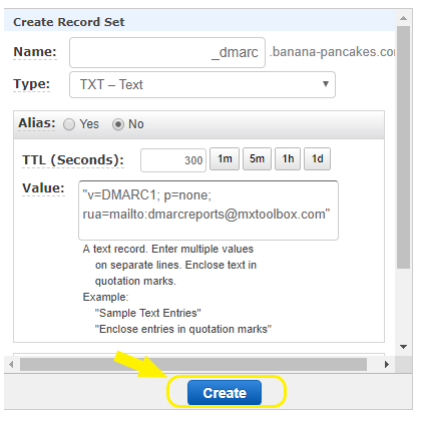
It’s important to regularly evaluate your email marketing campaigns using a robust analytics tool. Constant Contact provides comprehensive analytics you can use to review your email campaign performance.
Advanced topics
There are a few more things to know about sender scores.
How to recover from a bad sender score
If your sender score isn’t what you want it to be, work to improve it:
- Scrub your email list regularly to remove inactive subscribers.
- Authenticate your email address to enhance your credibility.
- Work on improving subscriber engagement by providing quality content.
Email sender reputation across different email clients
Your email sender’s reputation may vary across service providers. Use a tool to check your sender score with each client, and work to maintain a positive score to minimize email deliverability issues.
A solid sender score improves email deliverability
Building a solid sender score is vital to email marketers, especially as you continue to grow your customer base. When you have a high sender score, your emails are less likely to end up as spam. Instead, they’ll go directly to your subscribers, making it easier to connect with your audience. Constant Contact’s email marketing platform provides tools to help you strengthen your sender score, including automation features and analytics. For more resources, make sure to subscribe to our Hints & Tips Newsletter.
When budgets are tight, online marketing might be the first expense you look to cut.
Let me stop you right there.
While traditional advertising methods are costly and hard to measure, there has never been greater access to cost-effective, trackable marketing tools for how to market your small business, like email marketing, for example. The best way to market your business might be a lot more accessible than you think.
While traditional advertising methods are costly and hard to measure, there has never been greater access to cost-effective, trackable marketing tools for how to market your small business, like email marketing, for example. The best way to market your business might be a lot more accessible than you think.
The power of online marketing for small businesses
Almost 94% of the U.S. population is online, and that number is growing. By 2028, it will be close to 98%. Whatever you sell, your potential customers are out there on social media sites, checking their email, and Googling your industry.
Small business internet marketing connects you with those audiences. It sets up channels for people to discover your business and to get to know you, all without significant expenses on your part.
It’s something you don’t want to miss out on. Here are the top digital marketing tips for small businesses to get you started.
How can I advertise my business for free?
To get your business off the ground check out these free marketing tools and channels for advice on how to market your small business.
Social media marketing
Social media marketing is 100% free for advertising small business. Social media is also a great way to help your business compete and hopefully stand out amongst similar businesses. Create business accounts on social media channels like Facebook, Instagram, Linkedin, Twitter, etc. to foster brand engagement and loyalty through likes, comments, shares, website visits, and purchases. Showcase products and services, keep loyalists engaged, and to give followers a heads up about upcoming events, recaps of previous ones, and access to contests, freebies, valuable content.
If your budget allows, consider investing in a social media tools to help you craft and schedule content. Social scheduling software allows you to schedule content across social media platforms in advance, giving you back time and high-level visibility into your social media campaigns.
Email marketing and social media marketing stand to provide major benefits for your business. Is email better than social media? Is it the reverse? Try out both tactics and see what works for your business.
Search engine optimization (SEO)
According to a 2022 consumer survey, people find new brands via search engines versus any other channel or medium. A Google search is even more popular than asking a friend for a recommendation.
The higher you rank on a search results page (SERP), the more clicks you’ll get. Digital marketers call this the click-through rate, or CTR — essentially, how many web searchers click on your link after seeing it on a SERP. As you’ll see in the chart below, you get more traffic as you climb the page:
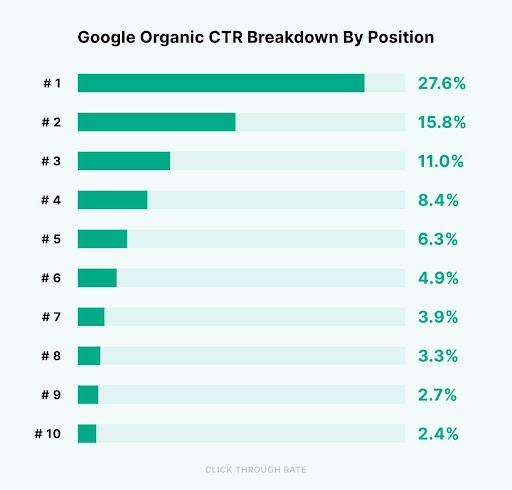
SEO improves your website’s design, structure, and content to impress search engine algorithms. If search engines like Google see your site as a relevant and high-quality match for a search term, they’ll put your business higher on the SERP.
To improve your SEO, start by working on one of the following key elements:
- Keyword optimization: Make sure your content includes the words and phrases you want that page to rank for on the SERP.
- Organization: Each page should have a clear title, and pages with multiple sections should have headers to organize them.
- Mobile-friendliness: Your content should be accessible and responsive on mobile devices.
- Variety: Provide both text-based and visual content.
- Functionality: Pages should load quickly, and all links should work.
Make sure to connect your website to your Constant Contact account so you can track your SEO success. SEO often takes time to show results, so be patient!
Content Marketing
Like SEO, content marketing is an essential element of any online marketing plan for small businesses. It engages audiences who might not already know about your business — people at the top of the sales funnel, to use a popular marketing term.
Content builds relationships by offering valuable information without pushing a sale. While ads go straight for the pitch, content eases people into the relationship by helping them and providing a good user experience before asking them to buy.
Showcase what your company has to offer by crafting website pages for products and services. Additionally, provide value by way of blogs and gated content, like ebooks and white papers.
Good content marketing will help your business do the following:
- Build awareness for brand
- Grow organic traffic
- Show your industry expertise
How to craft high-quality content
Google identifies quality content as “helpful, reliable, [and] people-first.” That means the content does all of the following:
- Provides original information or analysis
- Offers a comprehensive view of the topic
- Adds value to any content it draws from
- Organizes data into sections with descriptive headings
- Aims to be error-free and well-written
- Includes the input of subject matter experts
For best results, use the checklist above on every project in your content strategy.
Tip: Make sure to include calls to action throughout your website to encourage visitors to subscribe to your mailing list, check out a blog, and to purchase products and services. Calls to action can be short pieces of directive text like “Learn more,” “Subscribe,” and “Purchase now” placed on buttons, banners, or hyperlinks. Check out this blog on How to Write Content for a Website to help you craft value-driven, engaging content to promote your business.
Online directories and review platforms
It is important to make sure people have the ability to easily find information about your business and see how your business compares to businesses in your niche and local area through customer reviews. Add your business to online lists like Yelp, TripAdvisor, Yellowpages, and Angi to group your business among competitor businesses and similar businesses in your area.
Create a Google Business Profile so people can see a quick overview of important information like address, operating hours, images, reviews, menu, identification badges like “LGBTQIA+ owned business”, “woman-owned business”, and “veteran-owned business”. Your Google profile will also allow you to collect reviews for your business. Make sure to respond to reviews, especially negative ones, to build transparency and credibility for you business. You can learn more ways to harness reviews by reading our blog on How to Grow Positive Reviews on Google.

Craft an elevator pitch
You should be marketing all the time — wherever you are. Therefore, you need a compelling elevator pitch.
Research shows the average attention span of an adult is about six to eight seconds. That’s all the time you have to grab someone’s attention.
If you successfully engage them, then you only have a little over a minute to really sell them on your product or service. Invest the time to craft a killer elevator pitch. The return on your investment will pay huge dividends in terms of creating business opportunities.
Leverage your community
You don’t have to think big when it comes to your marketing efforts. Think locally. What’s going on in your community?
Sponsor a Little League team or a 5k charity walk/run. Print bookmarks and leave them at the local library. Get to know your ideal customer and think about how and where they spend their time.
Then search for opportunities to get in front of your customer with your marketing message.
Collaborate
Put together a group of synergistic, non-competitive businesses in your area and agree to cross-promote.
You can use coupons, fliers, reciprocal website links, bundled promotions or social media platforms. By collaborating with each other, you can expand your customer base because you’ll be reaching new people.
Network
I’m a huge fan of networking. I don’t think there is any better way to build a business than to get out there, shake some hands, and get to know people.
Networking requires a time commitment and it doesn’t provide instant gratification, but a strong network is one of the greatest assets any business person can have.
Give a speech
A lot of people hate public speaking. However, there are many organizations looking for qualified, subject-matter experts who can present to their groups.
Take a deep breath and volunteer. You don’t have to be a pro as long as the information you share is helpful to the audience. And the upside — the more you do it the easier it gets. Plus, it positions you as a credible authority in your field.
Create buzz
I started my corporate career in the field of public relations and the business has changed significantly because of technology.
Today, a small business owner can accomplish a lot without hiring a professional firm. Subscribe to Help a Reporter Out. You can respond to reporters’ queries that are looking for story ideas and resources. Some are small media opportunities, but others are major media outlets that use this service too.
Ask for referrals
Don’t be shy about asking for customer referrals. The majority of people say they are willing to provide a referral if asked, but very few take the initiative to do it on their own.
Referrals make it easier to get in the door with new customers. If you aren’t asking for them, you are missing opportunities.
Relatively inexpensive ways to advertise your business
If you have room in your budget to your boost your marketing efforts through paid means, try these tactics and channels.
Paid advertising
While your business might not have a big enough marketing budget to use paid advertising regularly, it is worth it to allot a small portion of your budget to test out paid advertising through social media and search engines. Paid advertising allows you to target and segment your audience based on behaviors, interests, demographics, etc. ensuring that your content is seen by the right people.
Google ads (Formerly Google Adwords): Google ads uses a pay-per-click model which means you only pay for the amount of clicks your ad receives. The cost of your ad will vary depending on the popularity/competitiveness of your keyword. Bidding on a keyword will help place your URL at the top of the search engine results page (SERPs).
Ads manager (Facebook ads and Instagram ads): Similar to Google, Facebook and Instagram use a pay-per-click model for advertising. Create image, video, and carousel ads on Facebook and Instagram to reach your target audience. Use Facebook lead gen ads to generate interest for a particular product or service and to lead users to sign-up for your business’ email list to learn more.

Email marketing campaigns
Email marketing is a cost-efficient and highly beneficial marketing channel to help you advertise your business. In fact, “Email is considered one of the most effective channels for marketing, with 79 percent of marketers placing it in their top 3.” (Constant Contact) Begin by collecting email marketing contacts by placing a sign-up form on your website, social media, and through in-store forms (if applicable). Having a healthy list of consenting email subscribers lets you have greater control over your audience, making sure you are not limited by a third party platform – like social media – in order to reach subscribers and to communicate effectively.
Once you have a general list of subscribers, you can segment your lists to better target your audience based on their interactions with your business and information they have provided you in the their email sign-up form. Craft informative, stylized, and personalized marketing emails to send to your subscribers.
Create a welcome email series to introduce your business, products, and services to potential customers. Craft automated email triggers to send warm wishes to subscribers on their birthday or to remind shoppers of their abandoned carts. Send a regular newsletter to keep your audience informed. Not sure what to send? Here’s a list of 30 email marketing ideas.
Consider investing in a top-tier email service provider (ESP), like Constant Contact, to give you greater control and visibility into the effectiveness of your email marketing efforts. View important reporting metrics like open and click-through rates, conversions, attrition rates, heat maps, and bounce rates to give you insight into campaign performance and to make data-driven improvements. In terms of return on investment (ROI), email marketing has an average return of $36 for every $1 spent. That’s major.
Join business associations or apply for business awards
Increase credibility and name recognition for your business by joining local or national business associations and applying for local, national, and international business awards.
Joining a business association in your community or on a national/international scale can help you build positive relationships with business owners and the potential for partnerships and collaborations. Business associations can also provide your business with valuable resources and learning opportunities like workshops, lectures, and networking events. Business associations also have a hand in shaping policy, adding your voice to the conversation will help your business interests.
Business awards and recognition will help you stand out from your competition as a source of expertise and excellence in your field.
Offer coupons
Coupons are a good way for many businesses to attract new customers. Research shows that people will go out of their way to use a coupon, proving that this method is successful in expanding your customer base.
Coupons can also generate return visits. For example, if you give a customer a coupon for a discount to use on future business, there’s a high probability they’ll be back.
Give it away
If someone has the opportunity to experience your product or service, chances are they will want to purchase more.
Don’t be afraid to give someone a free trial or a sample. In today’s economy, people are more comfortable purchasing something they have been able to experience first.
These inexpensive marketing strategies will help you engage customers, build relationships, and ultimately keep your brand awareness top-of-mind. It’s not always about the money you have to spend on marketing, it’s about the time and effort you put into it and above all, the relevance it has for your customers.
Looking for more ways to market your business?
Sign up for Hints & Tips, Constant Contact’s bimonthly newsletter with practical, actionable small business marketing tips to help you build your brand, promote your business, and gain new customers.
Climate change and pollution are often on my mind. I constantly see these topics in my social media feeds and on the news. This content has made me think more deeply about the environmental impact of my actions. I’ve already taken small steps to make a difference, like becoming a vegetarian.
This awareness has also made me more conscious about the brands I support. I want to give my money to companies that help the planet, not harm it. And I’m not the only customer who feels this way. Harris Poll research reports that 82% of shoppers want brands to share their values. Many of these customers will stop buying from companies they view as unethical.
Businesses can use cause marketing to demonstrate their values and make a difference. This technique lets companies and nonprofit organizations unite forces. The business makes a charitable donation to the charity and improves its reputation. In exchange, the nonprofit organization helps promote the partnership. It’s a win-win situation for everyone.
This guide examines the meaning, benefits, and challenges of cause marketing. We also explore tools for developing campaigns and building your contact list.
Introduction to cause marketing
Cause marketing is a partnership between a business and a nonprofit organization. This collaboration allows both parties to promote themselves and expand their reach. The company improves its image and proves its commitment to social responsibility. Meanwhile, the nonprofit gets exposure to new audiences.
This marketing technique has a long history in the United States. In 1983, American Express created the first formal cause marketing campaign. The company raised $1.7 million in three months to renovate the Statue of Liberty. This campaign also raised national awareness of the American Express credit card.
Cause marketing campaigns have proliferated in the last two decades. In 2004, businesses spent $990 million on cause sponsorship. In 2020, cause sponsorships surged to $10 billion due to the COVID-19 pandemic. This trend will likely continue as companies cater to customers who are passionate about social causes.
Cause-related marketing can significantly impact brand identity. These campaigns strengthen companies’ relationships with their communities and customers. They can also boost a brand’s reputation and attract new customers who care about the cause. Cause marketing is also an effective way to stand out from competitors.
How to develop a cause marketing strategy
You may feel tempted to partner with the first exciting nonprofit you find. But the most effective cause marketing campaigns take careful planning and consideration. Every aspect of your campaign must align with your values if you want to succeed.
Choose your cause
You can start by identifying a single cause that fits your brand identity and mission.
Consider these questions:
- What values and principles does your brand represent?
- What issues concern your customers?
- What causes do your employees feel passionate about?
- What causes are relevant to your industry or community?
- What type of content could you create to promote the cause?
Your campaign will feel more genuine if you pick a cause that gets you and your audience fired up. Promoting a cause with an obvious connection to your brand or products is also easier.
For example, suppose your company sells athletic equipment and wants to increase accessibility to sports. You could partner with a charity that helps people with disabilities play soccer. Or you could choose a nonprofit that supports young athletes from disadvantaged groups.
Align the cause with brand values
Your cause marketing campaign should go beyond surface-level engagement with a nonprofit. Consider how you can align your values and products with your chosen cause.
If your company partners with a nonprofit for athletes with disabilities, build on this campaign by making accessibility and inclusivity central to your mission. For example, you could include people with disabilities in your marketing materials. You can also design accessible sports equipment for athletes with disabilities. These efforts will create a culture of inclusivity far beyond your marketing campaign.
Determine your contribution
Many companies donate money to their partner organizations. But you don’t need to drain the company’s bank account to give support. Here are three ways you can give back:
- Organize events. Plan a fundraising event to raise money and connect your partner with new donors. For example, you can host a food festival or a 5K race.
- Create an email marketing campaign. Send your subscribers marketing emails about your cause. These messages can include educational content and information about the nonprofit. They should also have strong calls to action for donations or volunteers.
- Have an employee volunteer day. Clear your company’s schedule so your staff can volunteer for your cause. For instance, they could deliver food to a homeless shelter or run a charity event.
Get your audience involved
Inspire your audience to engage with your cause marketing campaign. You can encourage them to follow your nonprofit partner on social media and donate. You could also invite them to participate in charity events.
Implementing cause marketing campaigns
Once you’ve picked your cause, it’s time to implement your marketing campaign. These three strategies will help you achieve your goals and make an impact.
1. Use case studies for inspiration
Start by researching successful cause marketing examples. This step lets you learn about effective strategies and incorporate them into your own campaign.
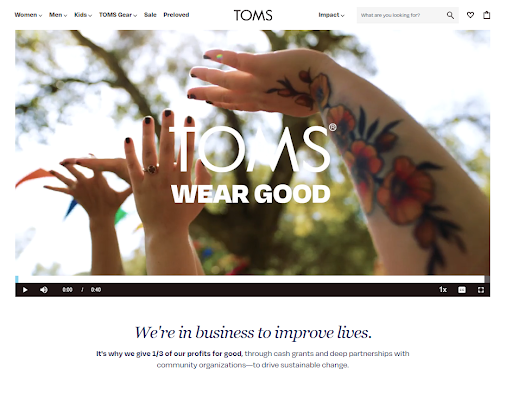
For example, the shoe brand TOMS donates ⅓ of its profits to community organizations. The company partners with nonprofits that reflect its values of diversity, equity, and inclusion. TOMS markets this campaign through website pages, annual impact reports, and videos.

Two Blind Brothers is another helpful case study. As the name suggests, this clothing company was founded by two brothers with visual impairments. The business donates 100% of its profits to charities and researchers supporting the blind community. Two Blind Brothers promotes their cause through an animated film, blog posts, and social media.
These case studies show the importance of choosing a cause aligned with your company’s values. They also highlight some of the strategies marketers use to advertise their causes.
2. Co-promote your campaign with your partner
Your nonprofit partner is your greatest ally for your campaign. Together, you can develop strategies to co-market the cause to your audiences.
These techniques could include:
- Creating Instagram Collab posts
- Collaborating on content like e-books and webinars
- Developing a shared landing page for the campaign
- Partnering with influencers
- Co-launching a year-end fundraising campaign
3. Measure your performance
Track your campaign’s performance to see how audiences respond to your content. Your goals can help you determine which metrics to use.
If you want to raise awareness of your nonprofit partner, measure donations and social media engagement. If you want to boost your brand’s reputation, track brand sentiment and customer satisfaction.
Other valuable metrics include:
- Click-through rates
- Return on investment
- Sales
- Share of voice
- Social media impressions
- Website traffic
Benefits of cause marketing
Cause marketing has many advantages for businesses of all sizes. Many consumers expect brands to address environmental and social issues. Supporting a cause helps you meet this demand and builds customer loyalty.
This strategy can also improve your brand’s public perception. Your audience will view your company as ethical and socially responsible. This view may persuade them to choose you over competitors. Media outlets may also spotlight your campaign, leading to more positive exposure.
There are also many cause marketing benefits for your nonprofit partner. Nonprofits often have limited financial and human resources. Your company can provide valuable marketing support to help them reach new audiences. Your campaign may also inspire consumers to donate to your partner.
Common challenges of cause marketing
Cause-related marketing has many benefits but can come with unique challenges.
Some brands struggle to find the right cause. Overcome this obstacle by defining your values and mission. Look for nonprofit organizations that align with these principles. You can also research your audience’s interests to identify relevant causes.
A poorly planned campaign can also put your brand reputation at risk. Some businesses choose controversial causes that offend their target audience. Companies may also face backlash if they use insensitive messaging.
For example, Pepsi drew controversy in 2017 after it released a commercial featuring the white model Kendall Jenner. The ad shows Jenner defusing a protest by handing a police officer a can of Pepsi. Time called the commercial “a glaring misstep” that trivializes real protests like the Black Lives Matter movement. Pepsi quickly withdrew the ad and issued an apology.
Avoid this risk by choosing partners and causes that have positive public perceptions. Hiring a sensitivity reader can also help create tactful and respectful messaging.
Advanced cause marketing tactics
Expand your campaign’s reach with digital marketing. This approach involves sharing your message through digital channels. Many brands use social media and blog posts to promote their causes. Email marketing also lets you share messages about your campaign with subscribers.
Content marketing can also help you engage audiences. This strategy lets you tell persuasive stories about your cause and nonprofit partner.
For example, you could create videos and infographics about your partner’s impact. You can also share campaign updates on your blog and website.
Integrating cause marketing with other business areas
Combine cause marketing with other business areas to amplify your impact.
Your sales department can create promotions related to your cause. Customers could get exclusive discounts if they donate to your partner.
You could also develop co-branded products. For example, BrewDog created a limited-edition beer called “Street Dog.” Each can features an adoptable dog. The brewery donated the sale proceeds from this beer to animal charities.

Cause marketing businesses should also integrate this strategy into their website operations. Create a landing page that shares information about your collaboration. You should also include calls to action to encourage visitors to donate or learn more.
Legal and ethical considerations in cause marketing
Cause marketing raises more ethical and legal dilemmas than other practices. Marketers must focus on accountability and transparency to maintain customer trust. Always explain how your partner uses donations and ensure they follow through on their commitments.
Businesses must also follow relevant regulations for cause marketing. These requirements vary by state but may include:
- Commercial coventurers for charitable purposes. Several states require cause marketing companies to register as commercial coventurers. These laws may apply if your company gives a percentage of its sales to charity.
- Marketing transparency laws. The federal government requires businesses to create truthful and evidence-based advertisements. It also forbids deceptive and unfair marketing.
Finally, businesses should avoid “causewashing.” Companies that engage in this unethical practice support causes to make money, not to make a genuine difference. Causewashing often occurs when businesses try to take advantage of a popular cause.
Create authentic campaigns by focusing on causes that fit your mission. You should also commit to your cause for an extended period instead of jumping on the latest fad.
Tools and software to support cause marketing
There are many resources to help cause marketing agencies create effective campaigns.
Customer relationship management (CRM) software is an essential tool. Constant Contact’s CRM helps you promote your campaign to your ideal audience.
You can build custom landing pages and email campaigns to reach potential supporters. The platform’s simple contact management features also make it easy to create a shared mailing list for you and your partners.
Constant Contact’s marketing automation tool also streamlines messaging. The platform automatically sends emails, social media posts, and other content. This feature saves time and helps you reach supporters at the right time. You can also watch your campaign performance with built-in data analytics tools.
Make an impact with cause marketing
Raise awareness about environmental and social issues with cause-related marketing. This strategy lets you support important causes while improving your brand reputation. It’s one of the best ways to build trust with young customers and other audiences. Plus, you’ll get to help exciting nonprofits make a bigger impact.
Start your cause marketing journey by clarifying your values. Next, look for a nonprofit that resonates with your mission. Get in touch to see if they’re interested in collaborating and start building a relationship.
With a little effort, you can work together to drive social change.
Companies have used marketing newsletters to keep in touch with customers for decades. My parents used to get snail mail newsletters from the local comic shop and other companies. These pamphlets often had coupons, product features, and invitations to events. (I always looked for the dates for the comic book trivia nights.) They were an excellent way for businesses to keep in touch with clients and market their brands.
Newsletters remain as popular as ever, but most modern companies send them digitally. In 2023, 69% of B2B marketers used email newsletters to share content. It’s easy to see the appeal of this approach. Marketing newsletters are an affordable and simple way to connect with your audience. They let you deliver valuable content and build long-term relationships with your subscribers.
Of course, creating effective marketing newsletters is easier said than done. You’ll need the right content, a stylish layout, and personal touches. Marketing automation tools and other technology can streamline this process.
This guide explores strategies and tools for creating engaging marketing newsletters. We also cover best practices and common mistakes to avoid.
Introduction to marketing newsletters
A marketing newsletter is a collection of updates about a brand. Consider it a highlight reel of essential or exciting content. Companies typically send this type of email every month or quarter.
Marketing newsletters contain a broad range of content, such as:
- Announcements about new product lines
- Case studies from clients
- Event invitations
- Exclusive deals
- How-to guides
- Industry news
- Sales announcements
- User-generated content
Obviously, you wouldn’t include all this information at once — it’s a newsletter, not a novel! Aim to include two to five different types of content per newsletter. Your January edition could feature a case study and an invitation to a webinar, then in February, you could announce a new product launch and share industry trends. Mixing up your content will keep your newsletter fresh and offer the most value for clients.
Marketing newsletters vs. traditional newsletters
Digital marketing newsletters have many benefits over traditional newsletters. They’re cost-effective and let you reach subscribers much faster than snail mail. Plus, you won’t have to make a trip to the post office and worry about your newsletters getting lost.
Most email platforms also have built-in analytics tools. This technology lets you watch every newsletter’s performance and make adjustments. Say you notice that only 20% of subscribers open your newsletter. You could create catchy subject lines and see if they boost open rates.
The impact of marketing newsletters
Newsletter marketing is one of the best ways to engage customers. Every newsletter is a friendly reminder about your brand and the value it provides. This approach builds relationships by keeping clients informed and connected. Newsletters also invite readers to engage by clicking links, sharing content, and more.
Businesses also use marketing newsletters to deliver personalized content. You can curate content for each client based on their behaviors, interests, and needs. Say a customer buys a software package from your brand. Send them a newsletter with software tutorials and user testimonials about accessory products. New subscribers could get a special offer and a video introduction to your brand. This personalization ensures customers receive timely and relevant content.
The essential elements of a marketing newsletter
All effective marketing newsletters have three essential elements. Focus on nailing this formula every time to engage your subscribers.
Craft attention-grabbing subject lines
Customers see your subject line first when your newsletter lands in their inbox. A catchy heading may entice them to click on your message to see more. But a confusing or uninteresting subject line could leave your email unread — or dismissed to the spam folder.
Personalization is one of the best ways to create intriguing subject lines. Choose an email platform that lets you add dynamic fields. For example, your subject lines could include the recipient’s name or a product they bought recently.
You should also make your subject lines brief yet captivating. Many people check their inboxes on their phones, so stick to 40 characters or less. You’ll also want to include enticing language or timely references. These small details can increase the chances that recipients will open your newsletters.
Here are a few examples of strong subject lines for digital newsletters:
- We’ve Got Thrilling News to Share
- Get Inspired With the Latest Trends
- Coming Soon: New Accessories and Rewards
- Reflecting on Our Year: Awards and Updates
Design an impactful newsletter layout and visuals
Your newsletter’s visual design matters as much as the content. According to Statista, readers spend an average of 10 seconds reading brand emails. An accessible layout helps readers find relevant content as they skim your email.
These tips will help you design the most appealing newsletter:
- Organize content with headings.
- Place the most important content at the top of the email.
- Use professional fonts in easy-to-read colors.
- Insert high-quality infographics, photographs, and other visuals.
- Include your brand colors and logos.
- Create a responsive layout that adapts to different screen sizes.
Save time using an email template instead of designing your newsletter from scratch. Constant Contact has hundreds of eye-catching templates you can customize for your brand.
Include a compelling call to action
A call to action (CTA) invites the reader to complete a task after they read your newsletter. Businesses typically hyperlink CTAs to their websites or social media. This approach can boost engagement and drive conversions.
Like subject headlines, calls to action should be concise and intriguing. It’s also best to use active verbs and direct language to convey a sense of urgency. Aim to inspire the reader to act before they close the newsletter and stop thinking about your brand.
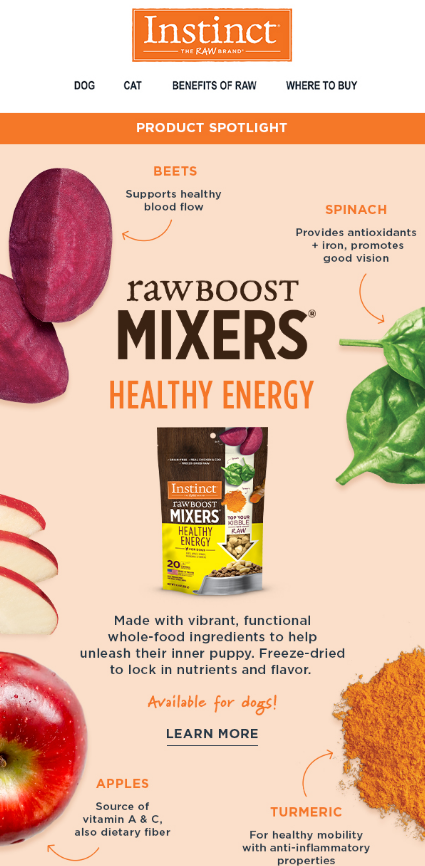
Effective calls to action include:
- Explore clearance items
- Find my store
- Get a free quote
- Learn more
- Sign up today
Content creation for marketing newsletters
Content creation is an essential part of every B2B email marketing campaign. Here are three ways to produce valuable content your subscribers want to read.
Use storytelling techniques to boost engagement
Storytelling humanizes your brand and strengthens your connection with readers. For example, you can include client success stories and testimonials. You could also share your company’s origin story and interview industry leaders. Focus on telling authentic stories that subscribers find relatable or inspiring.
Make readers feel special with personalized content
According to McKinsey & Company, 71% of customers want brands to provide customized experiences. Meet this demand by adding personalized content to your newsletters.
Start by segmenting your mailing list based on company size, goals, or other factors. Then, tailor your content to each group’s interests and pain points. Suppose your business sells plastic packaging to food manufacturers. You could spotlight your recyclable products for customers who have bought sustainable packing.
Balance educational and promotional content
This may seem counterintuitive, but your marketing newsletters should focus on educational content. That’s because most subscribers join mailing lists to learn about important topics.
Help them gain knowledge by providing informative and relevant content. For example, you can share best practices and industry news. You can sprinkle in some promotional content, but it shouldn’t take over the newsletter.
Strategies for subscriber growth
There are many ways to reach new audiences and grow your subscriber base. Start by including a subscription form on your website. This form should entice readers by describing the benefits of joining your newsletter. You can also allow users to sign up for certain types of newsletter content.
Additionally, many companies offer incentives for joining their mailing list. These perks can include coupons, free e-books, and early access to new products.
You can also integrate social media with your website to capture new subscribers. Promote your newsletter on social media platforms and link to the signup webpage.
Tools and software for newsletter creation
A newsletter platform lets you design the layout, add content, and send the newsletter. Many companies offer free services, but they often have basic features. You may also only be able to send your newsletter to a limited number of subscribers.
Paid platforms offer more advanced features and scalable solutions. Constant Contact is one of the top digital newsletter platforms. This provider offers hundreds of email templates, simplifying the design process. It also has email analytics so you can measure your newsletter’s success.
Artificial intelligence (AI) and automation tools can also improve the newsletter process. Generative AI makes it easy to create tailored content. You can also use automated drip campaigns to send pre-written newsletters to subscribers at scheduled times.
Best practices for newsletter marketing
Follow these best practices to optimize your marketing newsletters:
- Create a consistent publishing schedule.
- Proofread content for grammar mistakes and spelling errors.
- Use an appropriate tone and language for your target audience.
- Keep the text concise but impactful.
- Use A/B testing to finetune your subject lines, CTAs, and other elements.
Common pitfalls in newsletter marketing
Businesses often struggle to use digital marketing newsletters effectively. Many companies send newsletters too often and annoy subscribers. Others publish their newsletters at random times, which can confuse readers. Avoid this mistake by sending newsletters on a consistent but not overwhelming basis.
Not testing emails is another common pitfall that can lead to embarrassing mistakes. For example, you may realize your newsletter has a glaring typo or an upside-down image. Catch these errors by sending test emails and having a trusted colleague check your work.
Compliance and legal considerations
Research the laws governing email marketing before you send out your first newsletter. This knowledge will help you ensure you follow all relevant rules.
The most prominent laws include:
- CAN-SPAM Act: This law regulates commercial emails in the United States. It requires companies to use accurate headers and subject lines. You must also include an unsubscribe button and allow recipients to opt out of all future emails.
- General Data Protection Regulation: The GDPR applies if you’re sending emails to residents of the European Union. This law requires you to get consent from recipients and protect their data.
- Canada’s Anti-Spam Legislation: CASL requires you to get consent before sending commercial emails to Canadian residents. You’ll also need to identify yourself and provide an unsubscribe option.
The future of marketing newsletters
Emerging trends will transform newsletter marketing and the broader sphere of email marketing.
Some companies have started including user-generated content in their emails. Future newsletters may include client social media posts, surveys, reviews, and more.
Businesses can also leverage data and advanced segmentation for tailored content. For example, you could analyze customers’ behavior to send them hyper-personalized product recommendations.
Case studies and examples
Spend time researching the top email marketing newsletter examples. These newsletters can help you identify the best strategies and brainstorm content.
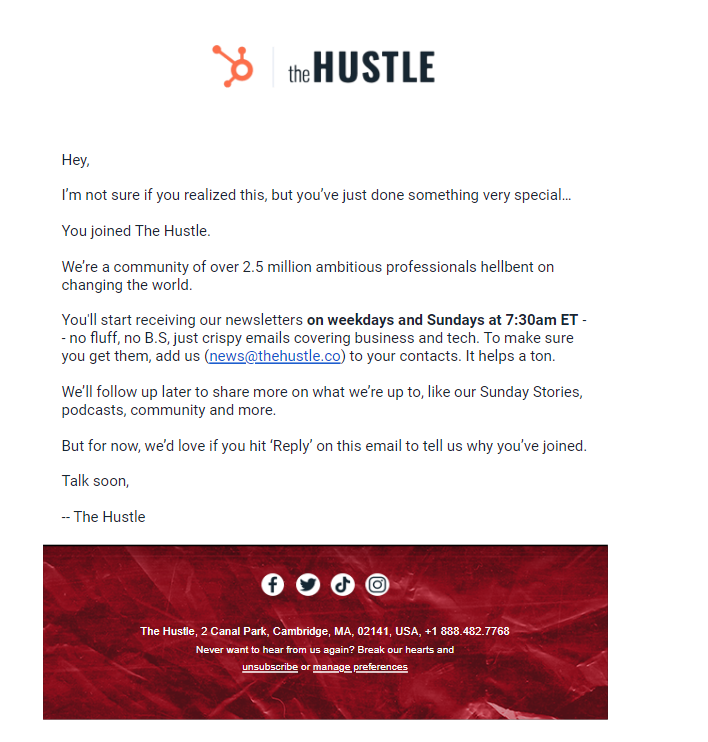
The Hustle is one of the most famous marketing newsletters. This daily newsletter shares the latest news from the business and tech industries. It includes three to five articles with infographics, data, and other educational content.
Interactive features within newsletters
Increase engagement by adding interactive features and multimedia to your newsletters. These elements can include:
- Countdown timers
- Gifs
- Interactive infographics
- Polls and surveys
- Videos
These features make your newsletters more fun and unique. They also encourage readers to engage with your brand in new ways and share your content.
Resources for further learning
Many websites have resources to help you take your marketing campaigns to the next level.
Coursera and edX have free courses on data analytics, social media marketing, and other concepts. These classes can expand your knowledge and teach you new marketing strategies.
Online communities let you network with other newsletter marketers and share tips. One of the most popular groups is Newsletter Creators on Facebook.
Share your insights with newsletter marketing
Companies in business, tech, and other industries use marketing newsletters to reach subscribers. Aspiring newsletter creators can invite existing clients to join their mailing lists. Once you have a small audience, publish a monthly newsletter with two or three types of content. You can bump up your production schedule as your audience grows and you get the hang of the process. Remember that the most effective newsletters focus on engaging and educational content.
Email newsletters for a new raw dog food brand started appearing in my inbox a few months ago. At first, I paid them little attention — I didn’t even remember signing up for the mailing list. Then, Instagram ads for the brand showed up in my feed, and my favorite TikTok pet influencer reviewed it. All of this content presented the food as healthy, high quality, and backed by science.
I ordered a bag.
Like many customers, I had been persuaded by an integrated marketing campaign. These campaigns share a consistent message across many marketing channels. This strategy helps businesses make a strong impression on target audiences. It also allows companies to develop a cohesive brand image.
Integrated marketing campaigns combine different types of traditional and digital marketing. Read on to discover how you can make this strategy work for your small to mid-sized business. Our simple tips and tricks will help you reach new customers and boost sales.
Introduction to integrated marketing campaigns
Let’s start with the basics: What is an integrated marketing campaign?
An integrated marketing campaign communicates a unified message across many platforms. This method creates a coherent brand voice in different contexts and channels. That way, the audience can identify and connect with the brand no matter where they see its marketing.
This approach comes from the integrated marketing communications (IMC) theory. Northwestern University professor Don Schultz developed this theory in the early 1990s. He described IMC as a way to look “at the whole of marketing communications, rather than concentrating on each of the parts separately.”
In the 1990s, companies relied on traditional marketing methods for IMC. They reached customers through direct mail, television commercials, press releases, and other channels. But, this marketing was mostly one-way and didn’t allow customers to interact with brands. Businesses also couldn’t easily track how people engaged with their marketing.
Modern marketers have expanded the integrated marketing campaign definition. They combine email and SMS, social media, content marketing, and other digital channels that allow companies and customers to interact in real time. They also let marketers gather data to track how their campaigns perform.
Integrated marketing is the future of effective branding. This method enables companies to speak with one voice across all their channels. That means many customers will encounter the same brand identity in many forms. This consistency helps the audience understand the brand’s message, personality, and products. It also builds familiarity and trust over time.
Developing the integrated marketing strategy
Many companies publish similar content through blogs, social media, and email. But an integrated marketing communications campaign goes beyond adapting content for different platforms. This approach is a coordinated strategy to share a message across many channels.
Start developing your strategy by making a campaign plan. This process involves these basic steps:
- Create a campaign goal. Decide what you want your campaign to achieve. Possible goals include building your brand, increasing engagement, and entering a new market.
- Research your target audience. Gather data to understand potential customers’ interests, needs, and values. This information will help you tailor your content and pick the right platforms.
- Define your brand voice. Figure out how you want to present your brand across channels. The brand voice includes personality, tone, language, and messaging. These elements should align with your company’s values and target audience.
- Choose your marketing channels. You can market your brand in many ways, from elaborate events to simple emails. Focus on the channels that your target audience engages with most.
- Align your team and departments. An integrated marketing campaign often involves people from many departments. Spell out your goals and have regular meetings so everyone is on the same page.
Selecting the right marketing channels
An integrated marketing campaign combines two or more channels. Here are the five types of marketing channels that you can combine to expand your reach.
Advertising
Advertising is paid media that shares persuasive messages about a brand. Companies use these channels to promote their products and services to broad audiences.
Traditional advertising includes billboards, print ads, and radio and TV commercials. Marketers also use digital channels, such as pay-per-click and video ads. Digital advertising often targets more specific audiences than traditional methods like billboards.
Digital marketing
Digital marketing uses online channels to engage audiences and raise brand awareness. Businesses often combine paid and free methods to achieve their digital marketing goals. Popular digital marketing channels include email, social media, search engines, and content marketing.
Direct marketing
Direct marketing is one-on-one communication to share messages with consumers. This category often overlaps with digital marketing. It includes emails, phone calls, text messages, and direct mail. Direct marketing allows you to deliver personalized content tailored to your customers’ interests.
Public relations
Public relations uses communication and medical channels to manage a brand’s image. It focuses on creating positive perceptions of a company in the eyes of the public. There are many ways marketers can use public relations in integrated marketing, such as sponsoring community events and collaborating with social media influencers.
Sales promotion
Businesses use sales promotion to increase demand for their products or services. Promotions are typically temporary incentives that give customers a sense of urgency. These activities include discounts, free trials, and rebates.
Defining your buyer personas by channel
Choose two or three broad channels to begin your integrated marketing strategy. Next, pick specific methods to reach your target audience. Creating buyer personas will help you determine which content resonates with potential clients.
A buyer persona is a character who represents a segment of your audience. You can develop these characters by collecting data on your existing clients. This information should include behavioral data, demographics, and details about their interests. Use the data to create personas and determine how these groups engage with content.
Best practices for omnichannel marketing
Let’s be honest: Sharing a consistent message across many platforms is not always easy. But these best practices can help you master omnichannel marketing:
- Use automation tools. Marketing automation software publishes content across many channels automatically. This tool saves time and makes it easier to coordinate your marketing efforts.
- Personalize your marketing across channels. Marketing technology allows you to personalize your content based on customer behavior. Say a potential customer puts a product in their shopping cart but doesn’t finish the order. Marketing software can kick in to display ads for the product on their social media and send email reminders.
Read now: Personalized Emails: Boost Customer Connection with Tailored Strategies
- Create a consistent experience at every touchpoint. Your brand should deliver the same message and experience through every channel.
Content creation for integrated campaigns
Content is the cornerstone of every integrated marketing campaign. It’s the vehicle that you use to carry your message to your audience. Without it, you won’t have a way to engage with potential customers.
Focus on creating adaptable content and messaging for your campaign. This content should have a core story about your brand that you can tell in many ways. For example, you could highlight how your product helps customers overcome challenges. You can tell this story through case studies, paid video ads, and client testimonials.

You can also study integrated marketing campaign examples for inspiration. Sony Pictures’ promotion of Spider-Man: Across the Spider-Verse is one excellent case study. The company released movie trailers and posted about the film on social media. They also created a 3D billboard in Times Square. This cross-channel marketing raised brand awareness and got fans excited about the film.
The Spider-Man campaign highlights the importance of brand consistency across channels. Sony used the same characters, font, and visual style in all its marketing. Your small business may not have the budget for a 3D billboard, but you can still use similar techniques to build brand identity.
Implementation and execution
Ideally, your campaign should launch across all your channels at once. You may find it helpful to create enough content for a few weeks or months before you start your campaign. That way, you’ll have plenty of material ready to go.
Integrated marketing campaign management will help you share this content efficiently. Create a content calendar to organize your campaign across channels. You can use cross-channel marketing software to schedule when this content appears. You should also hold regular team meetings to address issues and promote collaboration.
After your campaign starts, measure your success with key performance indicators (KPIs). These metrics will help you track how your target audience engages with your content. Relevant KPIs may include:
- Click-through rate
- Conversion rate
- Customer acquisition cost
- Email open rate
- Number of generated leads
- Social media engagement
- Video views
- Website traffic
Analyzing integrated campaign examples
Nike is one company that has used integrated marketing with great success. The company’s “Just Do It” campaign uses many channels to inspire its audience and encourage physical activity.
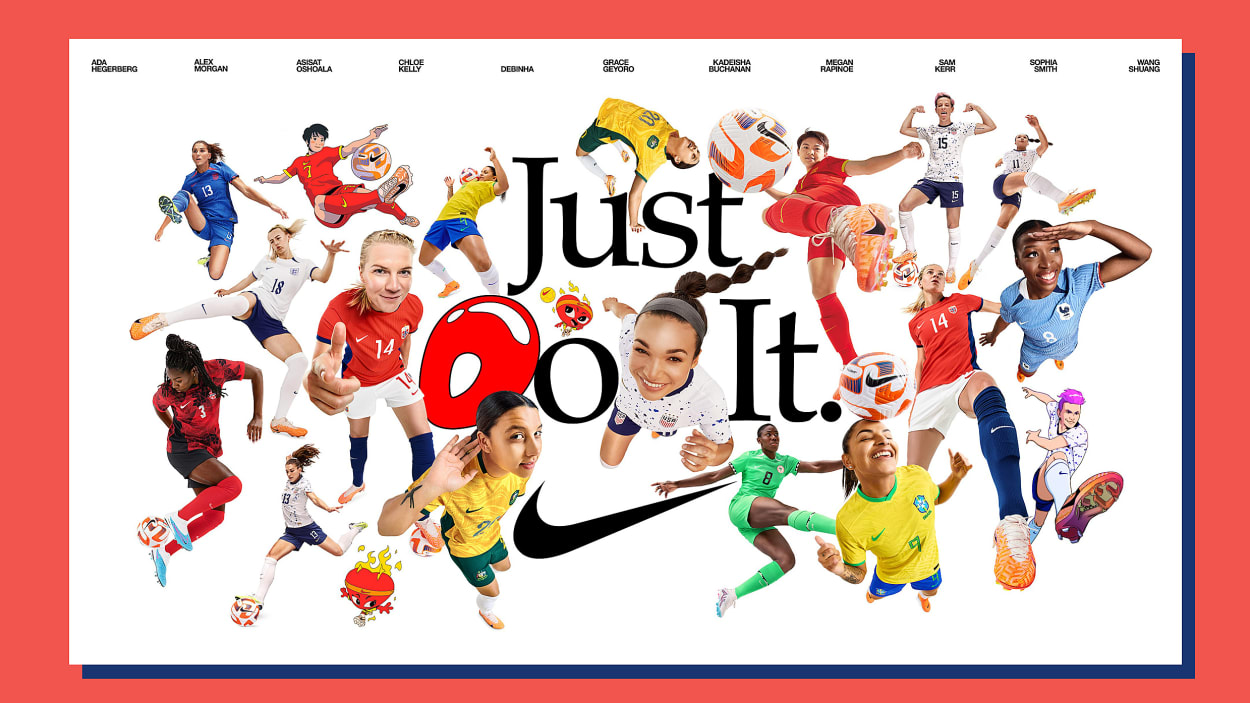
For instance, Nike released a commercial called “What the Football?” before the 2023 FIFA Women’s World Cup. The commercial ended with the slogan “Just Do It.” Nike also markets its brand with social media posts and sponsored athlete endorsements.
This case study reveals some of the elements of successful integrated campaigns. These components include:
- A clearly defined message
- Multichannel approach
- Social proof through appearances from athletes
- Consistent visual elements and slogans
- Engagement with current events
- Compelling storytelling
Continuous improvement in integrated marketing
Keep close tabs on your campaign’s performance, even if you’ve met your goals. That way, you can keep improving and catch problems early.
Say you notice that your recent Instagram posts have half as much engagement as ones from last year. This drop could mean that your audience’s preferences have changed. Or maybe you haven’t maintained a consistent brand. You can investigate the cause and take action to improve future content.
A/B testing can also provide valuable insights into your content’s performance. This process involves sharing two versions of content with segments of your audience. For example, you could use an A/B test to learn which email subject lines get the best response. Use software to track which version gets the most engagement and adjust your content strategy.
Advanced integrated marketing tactics
Many integrated marketers have adopted emerging technologies. Artificial intelligence (AI) is one of the trendiest innovations right now. You can use AI tools to create and adapt content for different channels.
Businesses can also boost engagement with personalization and automation. Marketing software can automatically customize content based on the user’s data. For instance, you can include a client’s name in the email subject line.
Common challenges and solutions
Cross-channel marketing often produces an overwhelming amount of data. You can solve this issue by focusing on KPIs related to your goals. Data visualization tools can also help you spot patterns in data quickly.
While this strategy can be time-consuming, it can help you market across many channels. Use marketing automation tools to streamline repetitive tasks and save time.
Optimizing your integrated marketing campaigns for the future
Changes in consumer behavior will likely drive future trends in integrated marketing. Customers increasingly care about brands’ environmental and social policies. Marketers can respond to this change by creating ethical and transparent campaigns. Innovations like AI can also help companies stay ahead of the competition.
More resources and tools
Constant Contact’s digital marketing tools can help you create effective integrated campaigns. Communicate across channels with our email, SMS, and social media marketing solutions. These tools let you schedule content, automate workflows, collect data, and more. They also integrate to streamline campaign management.
A customer relationship management tool lets you track customer data and personalize content. Constant Contact offers a CRM and lead generation solution.
Get started with integrated marketing
An integrated digital marketing campaign lets you share a consistent message across channels. It’s one of the best ways to build your brand and engage customers.
You can jumpstart your integrated marketing campaign by researching your target audience. Find out which channels they engage with most and tailor your content to appeal to them. As you gain experience, you can branch out into more channels until you’re an integrated marketing master.
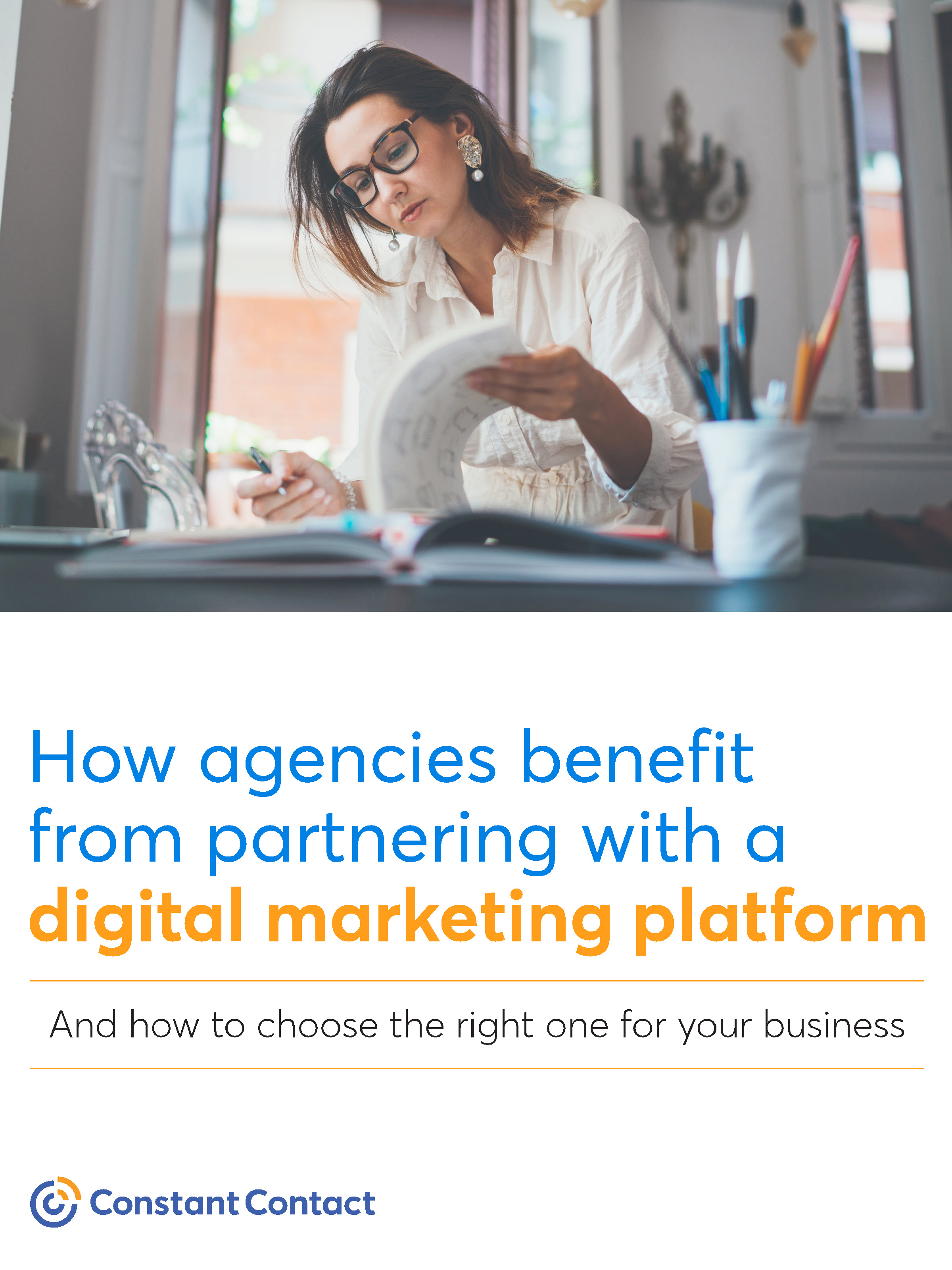
Let’s face it: Customers can be a fickle bunch. Competition for customer loyalty is tough, and there’s always something new and shiny to distract them.
So, how do you keep your customers faithful? You stay faithful — with a regular email marketing newsletter.
A monthly newsletter is just what it sounds like — an email that informs subscribers of news about your organization or shared interests. It’s a great way to generate a devoted following with your audience. Sending a monthly newsletter helps develop stronger connections with your subscribers, increase sales, and drive more traffic to your website.
Publishing a monthly newsletter is among the best tools for increasing subscriber engagement. If your time allows — and you have enough relevant information to share — you can write a weekly newsletter. You can also consider a quarterly newsletter if it’s more appropriate for your business model.
Creating an engaging monthly newsletter
To make the most of your newsletter emails, consider these factors.
Five elements of a monthly newsletter
There are several key aspects that your monthly newsletter should include.
- A clear and compelling subject line: Your newsletter’s subject line is usually the first thing people see. Writing a compelling subject line that captures people’s attention is crucial. The more compelling your subject line is, the more likely they will read your email.
- An interesting preheader: Your email’s preheader is a blurb that appears after your sender’s name and subject line. It summarizes the content of your message so readers know what to expect if they open it.
- A beautiful newsletter design: An appealing newsletter has a clear format and is easy to follow. You can experiment with various monthly newsletter templates, color designs, fonts, graphics, and other elements to find a layout that fits your business.
- Relevant content for your audience: Your newsletter should contain information pertinent to your subscribers’ interests. Include topics that appeal to their wants or needs and align with your organization’s business model.
- A call to action (CTA): A CTA encourages readers to take some form of action. The action might be visiting your website, purchasing, booking an appointment, offering feedback, or some other activity. Make sure your readers can easily spot your CTA and that it’s easy to follow.
Generating high-quality, targeted content
Creating compelling content starts with defining your newsletter’s purpose. What do you want to accomplish with it? Do you want to build anticipation in your company’s products and services, or are you sharing information that fits your audience’s interests?
Once you know your newsletter’s purpose, you can create content that aligns with it. Some examples of content you might include are news about your company, upcoming industry events, new product features and reviews, educational information, and other relevant details.
Designing a user-friendly newsletter interface
Your newsletter interface should be easy to interact with, meaning its format is clear and straightforward to follow. Include your company’s logo, clear images, and headings to separate different sections of your newsletter. Your CTA should grab the reader’s eye and include specific directions so they can act on it if they want to.
Drafting and finalizing subject lines for high click-through rates
The subject line is the first thing readers judge in your newsletter, so create one that grabs their attention. Some of the best subject lines encourage a sense of urgency and curiosity among readers. For instance, you might inspire subscribers to open your newsletter using terms like “important” or “act now.”
Personalizing your newsletter’s subject line is also an excellent way to inspire the recipient to open the email. You might personalize your newsletter by including the recipient’s name or other identifying details.
It’s a good idea to draft several subject lines. You can test them among a small segment of your subscriber base to see which ones generate the highest open rates, then use the leading performer as your final subject line.
Choosing the right newsletter design
Your newsletter’s design is one of its most essential components. Select a design with a simplistic interface that’s easy to follow no matter what device you view it on — a smartphone, tablet, or computer. If your newsletter contains multiple sections, use headers and body text to separate each segment.
Deciding what type of content to include
The content you include in your newsletter should reflect its purpose. If you aim to keep subscribers informed of organizational updates, include them in your content. If your newsletter is product or service-oriented, share clips of your newest items or feature offers. Educational or interest-related newsletters may incorporate blogs or articles relevant to subscribers’ needs.
Using wireframes and design elements to collaborate on the design
Wireframes form the basic structure of your newsletter. They include a header section, logo, menu, and body content. Design elements help distinguish each part of the newsletter, such as its layout, navigation bars, and interactive buttons or links.
You can design a wireframe or use a pre-designed monthly newsletter template. Constant Contact’s email marketing tools include a variety of wireframe designs you can choose from to create your newsletter.
Scheduling and deploying the newsletter for optimal engagement
Sending your newsletter at an optimal time — when subscribers are most likely to check their inbox and open your email — can improve open and read rates. You can determine the best time to send with the help of your email analytics tools, which will indicate when people are most likely to read your communications. Some email marketing tools will recommend optimal sending times based on prior sent messages.
Planning and production process
To create an effective newsletter, adopt a thorough planning process:
1. Gather ideas
Schedule time to develop the content strategy for each newsletter you produce. Use the time to identify what you want to share with your subscribers and what you hope to gain from your message. Outline each topic you’ll cover in your newsletter. Your email will likely include a range of topics, from product descriptions to blog snippets to company happenings. Think about the most important updates to keep subscribers informed. After, define your CTA — whether that’s promoting customer loyalty, directing subscribers to visit your website, or making a purchase.
2. Establish comprehensive planning strategies
A comprehensive newsletter planning strategy goes beyond idea generation and sets the stage for your short and long-term email marketing newsletter goals. It assesses how often you’ll send subscribers a newsletter, your objectives, and how to measure the results.
3. Use efficient production techniques
Once you understand the goals and purpose of your newsletter, you can establish a production routine. Your newsletter’s production includes the templates or wireframes you’ll use for your emails, sending consistency, and how you’ll create your content. Other aspects of production include any consistent graphics or images you’ll use — like your company’s logo — and user interface/user experience (UI/UX) design.
4. Test protocols
Before sending your newsletter en masse, it’s good practice to do some initial testing among a small portion of your subscribers. You can change various elements of your newsletter, like your subject lines, CTAs, and images, to see which combination generates the best results among your testing base.
Aside from A/B testing, thoroughly reviewing your content is a good idea. Check for spelling and grammatical errors and make sure all links and other user elements function correctly.
5. Curate your content
Creating a steady flow of content for your monthly newsletter can be time-consuming, especially if you have many other tasks. If you’re creating content yourself, schedule a time to devote to content curation.
There are a couple of ways you can cut down on your work while still achieving results:
- Share existing content: Your newsletter doesn’t have to consist entirely of new content. You can use pre-existing content from blog posts, infographics, news, press releases, and other sources to fill out the bulk of your newsletter.
- Use pre-designed templates: Some email marketing platforms include pre-designed templates with sample text you can use for inspiration. The sample text is helpful for subject lines, short blurbs, and other brief messaging.
Measuring success and continuous improvement
You’ll want to use analytics and metrics to evaluate your newsletter’s performance. Analytics and metrics will show your newsletter’s success over time and help you understand where your campaign is succeeding and where improvements may be necessary.
A few metrics to monitor include the following:
- Click-through rate: Your click-through rate represents the percentage of email recipients who clicked on your links. It helps you understand how subscribers engage with your newsletter.
- Open rate: Your open rate is the percentage of subscribers who open your email. It tells you how many recipients open your message. However, it can be a little misleading since some email service providers only report an opened message if the images are fully downloaded.
Read now: How Apple’s Mail Privacy Protection Impacts Email Marketing
- Conversion rate: Depending on your newsletter’s purpose, you may want readers to take a specific action. You can use the conversion rate to track how many recipients take that action.
- Bounce rate: Your bounce rate includes both hard and soft bounces. A hard bounce indicates that your emails go undelivered, while a soft bounce indicates a temporary delivery problem. Keeping a low bounce rate is essential to maintain your email sender score.
While these are some of the most common newsletter performance metrics, you can establish other benchmarks to monitor newsletter performance.
Past campaign performance can inform future newsletters
As you embark on your newsletter campaign, store your analytics to compare performance over time. Regular campaign evaluation can help you baseline your newsletter expectations and identify areas where improvements may be necessary.
Common mistakes to avoid in email newsletter creation
There are a few typical pitfalls to consider when developing your newsletter. They include:
- Not providing content your subscribers want to read
- Sending newsletters too frequently
- Failing to have a distinct CTA
- Using boring subject lines
- Not reviewing your newsletter’s content and interactive elements before sending
- Disregarding feedback from subscribers
- Using non-responsive templates that don’t display on all types of devices
Be sure to follow proper newsletter development protocols to avoid errors.
Inspiration and examples
Looking for monthly newsletter ideas? Take a look at these monthly newsletter examples from top brands.
1. National Geographic

2. CROSBY Studios
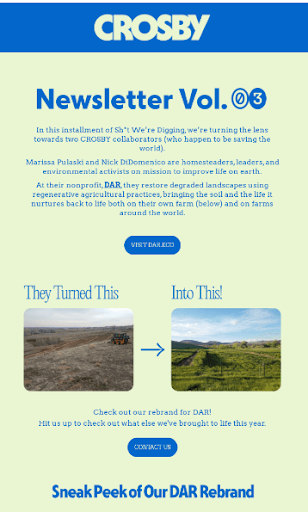
3. Zeus Jones
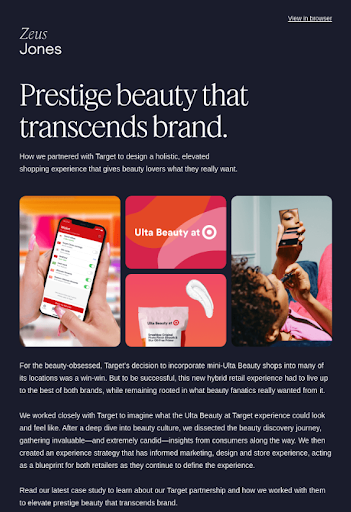
Technical aspects and tools
A well-crafted newsletter requires practical tools. While you can certainly craft a newsletter within your email service provider’s messaging system, you’ll get professional results from a dedicated email marketing service like Constant Contact.
Through Constant Contact, you can design well-crafted newsletters with pre-designed templates. We offer many email marketing services, including subscriber management, automatic delivery pathways, robust analytics, and a mobile app so you can work on your newsletter from mobile devices.
Keep in mind that tracking your newsletter campaign’s performance is crucial. Monitor your analytics and set benchmarks to evaluate the success of your campaign.
Extra tips
Here are a few additional tips to consider as you develop your newsletter strategy.
How to effectively manage your email list for a monthly newsletter
Your email list contains all the addresses of people who subscribe to your newsletter. Regularly assess it for hard and soft bounces and inactive subscribers, and remove them — especially hard bounces — when necessary. Keeping your bounce rates low will help you maintain a strong sender score.
How often should you send your newsletter for maximum engagement?
The sending frequency of your newsletter can be weekly, monthly, quarterly, or any other timeframe. Once you determine the right frequency for your organization, it’s essential to stick with it. Choose a frequency that allows you to provide quality content without being overbearing.
How do you ensure effectiveness in reaching the target audience?
Building a subscriber base of people who want to read your emails is vital. Avoid purchasing bulk email lists or sending unsolicited newsletters. Instead, grow your email list organically and receive recipient consent before sending your newsletter.
Email subject line strategies that sell
Captivating monthly newsletter subject lines makes the difference between an opened and unopened newsletter. Consider recipients’ needs when designing your subject line if your newsletter is sales-focused. Choose a subject line you think will attract them. For instance, you might highlight your brand-new product or a one-time deal in the email’s subject line.
Monthly newsletters: a great way to build customer connections
Your monthly newsletter can help strengthen customer relationships, boost sales, and increase website traffic. Start by determining your newsletter’s purpose and planning your content strategy. Use practical email marketing tools — like Constant Contact — to manage your subscriber list and create professional newsletters that are appealing to read.
To learn more about email marketing newsletters, check out some of our additional resources:
- How To Write a Short Newsletter
- How to Create a Modern Newsletter Email Template
- 11 Nonprofit Newsletter Ideas
- A Guide to the Best Newsletter Ideas for Your Business
When it comes to communications, many companies focus primarily on crafting their messages to customers. However, internal communications are equally important to your business success. The company newsletter, in particular, is a valuable tool for keeping your employees informed, engaged, and on the same page.
Drafting a successful company newsletter isn’t as tricky as it sounds, especially when you have the right tools. Discover company newsletter examples to learn what works best in these communications and how to craft your own.
What is a company newsletter?
Most employees have probably received a company or nonprofit newsletter at one point, but they may not even realize that’s what it was. So, what is a newsletter and what are some examples?
A company newsletter is a type of communication typically shared by email that relays relevant information with the business’s internal team. These newsletters go out to everyone in your organization rather than specific departments or individuals. Communicating the same message to every member of your organization allows you to break down information silos and ensure everyone is informed.
This could include things like a company update, helpful tips for the workplace, or even internal opportunities.
Objectives of company newsletters
Companies have several reasons for sharing newsletter content with their employees. Some of the objectives of company newsletters include:
- Inform employees: If something is happening in the company that all employees need to know, sending out a newsletter is an ideal way to share that information.
- Keep employees engaged: Staying up-to-date on company happenings through the newsletter helps employees feel more connected.
- Strengthen company culture: Sharing a newsletter with all employees contributes to a more inclusive, collective company culture.
- Reduce email volume: Sending one newsletter with all the key updates employees should know allows companies to reduce the number of emails sent back and forth, which distracts employees.
Your reasons for sending a newsletter can vary. You may want to establish or reinforce your brand with consistent internal messaging. Or, perhaps you’re interested in opening up important dialogue with your employees. Whatever your objective is for sending company newsletters, you need to ensure it’s both informative and engaging for the best results.
What makes a good company newsletter?
A “good” newsletter is hard to define since different styles and types of newsletters are well suited for different objectives. Still, the best company newsletter examples have some qualities in common. These are some of the elements of effective employee newsletters:
- A concise, simple message
- Relevant and interesting information for your employees
- Images that complement the message you’re sharing
- An eye-catching design that does not distract from the message
- Involvement from your employees (i.e., quotes, images, etc.)
- Calls-to-action prompting readers to take the next steps when applicable
- Links to other relevant company communications, such as a blog or social media profiles
Also, make sure to maintain proper email etiquette in your newsletters. Proofread each message to avoid mistakes, stick to your brand voice, and format your newsletter to appear clearly on desktop and mobile devices.
Ensuring consistency between your newsletters will further strengthen your internal brand. You can use the same general newsletter email template whenever you send the newsletter and update the message with the most current information.
25 company newsletter ideas
What do you write in a company newsletter? Here are some newsletter content ideas to keep your employees engaged.
1. New team member announcement
When a new employee joins your team, consider announcing their hiring in the next company newsletter. Making the announcement this way will provide a warm welcome to the new employee and allow the rest of the team to learn a little bit more about them.
2. Personal anniversaries and celebrations
Announce work anniversaries to celebrate employees who have been with the company for many years. If someone reaches 10 years with the company, for example, mention this in the newsletter to highlight their commitment.
3. Recommendations and must-sees
If you have any recommendations that would interest your team members, a list of those must-see items would make a great addition to any company newsletter. Include books, videos, or articles related to your business or professional development.
4. Special day events
When special days like the winter holidays and Employee Appreciation Day come around, announce them in the newsletter. These announcements help employees know what events are on the horizon.
5. Competitions and contests
Contests and competitions foster engagement and company spirit among your employees. Announce them in the newsletter or, in the case of puzzles and other digital contests, run them entirely through the newsletter.
6. Surveys
Get employee feedback on any topic with surveys in your company newsletter. This allows for quick, actionable insights on a variety of topics you may want to gather more data about.
7. New job postings
If you have an open job position and would like to hire internally, a great way to share that information is in the company newsletter. Share some basic details about the position and include the next steps interested candidates should take.
8. Training opportunities
Companies often offer training opportunities for employees to strengthen their skills. Share these opportunities in your newsletter so everyone knows they’re available.
9. Free resources and tips
You can also use your newsletter to share resources and tips to help employees with their work. This provides value and keeps team members interested in new content.
10. Doing good and giving back
Corporate charitable efforts are important to employees and customers. Share how your company is doing good and giving back in your newsletter.
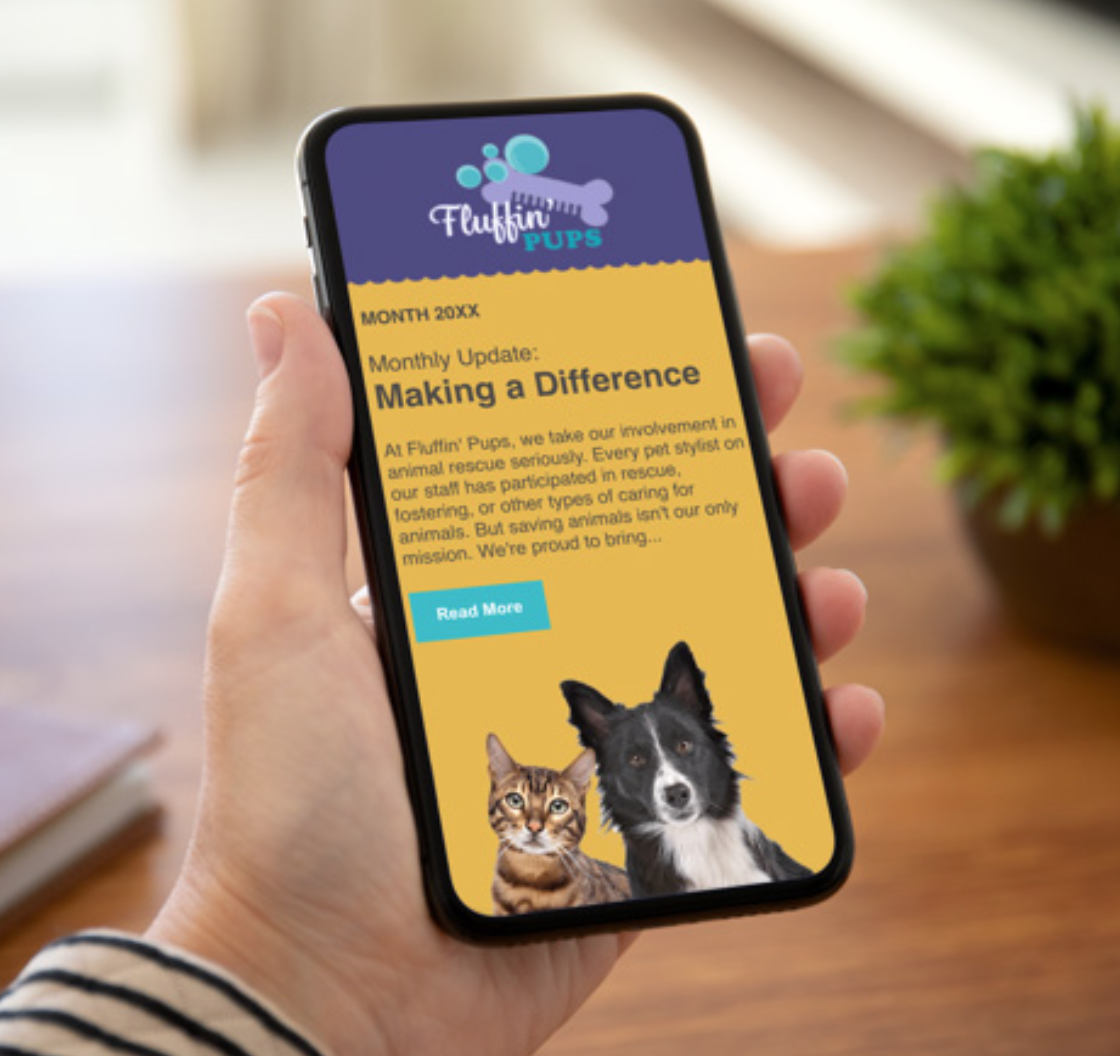
11. Industry updates and company news
Make sure your employees are all up-to-date on any industry and company updates with a newsletter. This is a great place to share any product and service development updates, departmental shifts, and legislative or fiscal changes.
12. Messages from the Board or CEO
You can send messages from your company board or CEO in separate emails, but why not include them directly in your newsletter? This ensures the information goes to all employees and keeps everyone on the same page.
13. Sharing company history
Newer employees may not be familiar with all of your company history. Include fun facts and important details so they can get to know your brand better.
14. Changes in leadership
If company leadership changes, alert your staff in the newsletter.
15. Customer reviews and feedback
Strong customer reviews and feedback are encouraging for the whole company. Highlight some top reviews in the newsletter to boost morale and emphasize success.
16. Just for fun activities
The newsletter doesn’t need to be all serious business communications. Share some fun activity recommendations or opportunities to keep employees entertained.
17. Employees’ milestones
As employees hit important milestones or accomplishments, highlight them in the newsletter. This is also a great opportunity to showcase team and group achievements.
18. Employee of the month
It’s not a plaque on the wall, but getting an employee of the month shoutout in the newsletter will still help motivate and reward employees.
19. Employee stories
Take the opportunity to know your employees on a more personal level and share their stories. This may include their hobbies, interests, and accomplishments outside of work.
20. Executives in the spotlight
Don’t hesitate to highlight your executives, especially when they’re making headlines or gaining positive attention outside the company.
21. Infographic newsletters
Infographics are a great way to make data accessible and engaging, so include some in your newsletters when possible.
22. Pets at work
People love pets. Sharing some pictures of employees’ furry friends in the newsletter can be a great way to cheer everyone up. This is a great bonus if you have a pet-friendly office or employees work from home and their companions join them at work!
23. Ask the CEO
Invite participation from your employees with an “Ask the CEO” section where they can ask any questions they may have.
24. Health and wellness tips
In many company email newsletter examples, you’ll see health and wellness tips for employees. Including these tips shows you care about your employees and want them to be well.
25. Sustainability and CSR initiatives
Be proud of your company’s sustainability and corporate social responsibility (CSR) efforts. Share them in the newsletter, so your team members know how you’re contributing to your community.
How to create a company newsletter
What should be included in a business newsletter? To write your own company newsletter, follow these steps:
1. Define your goals and audience: What are the employees at your company like? How formal is your work culture? What do you want your team members to know?
2. Choose an email marketing platform: Platforms like Constant Contact make sending emails a breeze.
3. Create a visually appealing template: Choose a template that includes your company colors and a variety of photo and text options to create a visually engaging design.
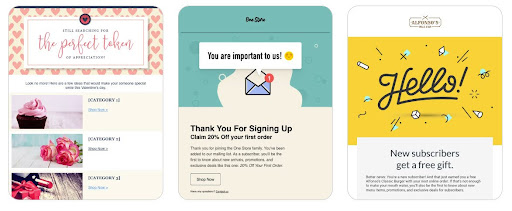
4. Craft compelling subject lines: Boring email subjects will get lost in your employees’ inboxes. Grab their attention with a snappy headline.
5. Write engaging and informative content: Employees won’t want to read content if it’s uninteresting or irrelevant. Make sure it provides value and keeps them coming back each time you send new content!
6. Incorporate a clear call-to-action so readers know what to do next: Whether it’s filling out a survey or signing up for volunteer opportunities, make sure team members have clear instructions when they finish reading!
7. Proofread and test your email to be sure it appears without errors in recipients’ inboxes: You don’t want to distract from your content with typos. Clean, error-free content allows teams to enjoy the message!
8. Send the newsletter and track performance: Make sure it goes to everyone at the company. Then, see what works well and where you can improve.
9. Continuously improve your newsletter: Over time, you’ll learn what kinds of content engages employees the most. You can use this information to write more interactive content!
Possible issues with newsletters and their solutions
While sending a newsletter has many benefits, especially if you follow company email newsletter examples, you may still encounter some problems. Here are some of the most common issues with newsletters and ways to address them:
- People aren’t opening the newsletter: You may be wondering, “How do you introduce a company newsletter?” If your employees don’t open your newsletter, you won’t reap the benefits of sending one. To solve this problem, make your newsletter more engaging with a dynamic format. Include images, videos, humor, and highly relevant content to get employees to open the email.
- Using jargon or highly specific terms: Remember that your newsletter goes to everyone, so you should only include language that is accessible to everyone. Write messages that every member of your team can engage with and understand.
- Struggling to find enough content: If you have a set schedule for sending a newsletter, you may not always have enough new information to share each time. Either put more time between your messages or reach out to employees for ideas on what they’d like to see in the newsletter so you can diversify content.
Newsletter names: Catchy and memorable titles
A fun idea to help your newsletter stand out is to give it a catchy and memorable title. You can customize this title to be a play on your company name or another recognizable detail about your business. Or, use a more general but still clever name like one of these employee newsletter ideas:
- “The Conversation Corner”
- “Keeping Up with the Company”
- “Buzzworthy Business News”
- “The Weekly Update”
- “Insider’s Guide to the Company”
- “Scoop of the Day”
Having a newsletter name will also help your employees identify the newsletter in their inboxes so they don’t miss it.
HR internal newsletter ideas
While newsletters generally cover all relevant company news, some businesses send an internal newsletter specifically related to HR topics. Some internal company newsletter examples dealing with HR topics include:
- Upcoming days off
- Staff events
- Changes to HR policies
- Open positions in the company
- Anniversaries celebrating employees who have been at the company for years
- Employee spotlights
- HR-related deadlines
- Tips for filling out HR forms
How to use software to enhance newsletter’s effectiveness
You can manually draft and send out your company newsletter, but that isn’t the most efficient or effective way to do things. Instead, use software to enhance your newsletter’s effectiveness. Email marketing software like Constant Contact can help you improve many aspects of your newsletters.
This software includes drag-and-drop HTML email builders, so you don’t have to create your newsletter from scratch — just customize an existing template. You can also use merge tags within the software so each subject line is customized to the recipient. Other valuable features of Constant Contact’s email software include:
- Emoji reactions so team members can share feedback on the newsletter
- Mobile-friendly formatting so recipients can read the newsletter without issue on their mobile devices
- Video and GIF embedding tools to make your newsletters more engaging
- Pulse surveys for even more quick feedback from team members
- Email tracking and analysis software
- AI tools that help you draft your newsletter content
Using Constant Contact can be the difference between a mediocre newsletter and a newsletter that truly makes a positive impact on your business.
Pointers for writing better company newsletters
It’s easy to make mistakes when writing company newsletters, especially if you’re new to it. Try these pointers to make your newsletter writing as strong as possible:
- Use an attention-grabbing newsletter name and subject line
- Proofread multiple times to eliminate any errors
- Try to include at least one image or graphic per newsletter
- Use headers, subheaders, lists, and short paragraphs to break up the text
- Write in the first person (I or we) for a more personal message
Conclusion
An internal newsletter is a must-have for keeping your employees informed and engaged in your company. Use company monthly newsletter examples for inspiration as you draft your own and focus on creating content that speaks to your employees. And don’t forget to take advantage of email templates from Constant Contact for an even more successful company newsletter.
There are many ways to spread the word about your business, but SMS marketing ranks among the best. When you incorporate SMS into your marketing strategy, you can reach customers through their mobile devices. And there’s an extremely good chance that subscribers will read your message. In fact, SMS open rates average a hefty 98% — increasing the likelihood that clients will see your content.
SMS marketing ranks among the most valuable advertising strategies simply because it lets you connect with subscribers one-on-one. You can use it to share product updates, solicit client feedback, and provide real-time shipping notifications, among other uses. While email marketing offers a similar connection, there’s a lot of competition among your subscribers’ inboxes, and open rates tend to be lower.
You can incorporate SMS marketing into a multichannel strategy that complements your other techniques. For instance, you might use social media to showcase your products and SMS to provide shipping updates when a client orders one. You could use email to request a customer’s evaluation after they receive your product.
Legality and ethics of SMS marketing
There are lots of laws concerning marketing text messages, including the TCPA and the CAN-SPAM Act. The regulations aim to protect consumers from unsolicited text messages and spam. They require that organizations receive a customer’s written consent before sending marketing texts and that brands don’t take advantage of subscribers by sending messages at odd times or selling their personal data.
Before you embark on an email and SMS marketing strategy, it’s crucial to understand these regulations and how they apply to your campaign. Speaking with a qualified legal advisor can help you learn what your business is responsible for to help you stay in compliance.
Benefits of SMS marketing
Engaging in SMS marketing provides numerous advantages that can benefit your brand. Here are a few reasons why text message marketing is so advantageous.
SMS marketing is cost-effective
Sending an SMS message is one of the most inexpensive ways to reach your audience compared to other marketing channels. A single text typically costs just a few pennies to send. Other marketing strategies — like online ads, commercials, and curated social media posts — can run into the thousands of dollars to create. Since SMS marketing is so economical, it is a useful tool for nearly any organization, regardless of its budget.
Direct communication with customers
SMS marketing is one of the best ways to connect directly with your audience. Since messages go straight to your subscribers’ cellphones, they receive individual communications from your brand — something that other channels, like social media and online ads — can’t offer. You can personalize your SMS texts directly to individual clients or send targeted messages to specific audience segments.
Real-time updates and high open rates
SMS messages boast significantly higher open rates than email. An SMS marketing text has a 98% chance of being read, while email open rates hover around 24.7%. Since people typically keep their cell phones on hand, they’re more likely to see messages when they’re immediately delivered. Brands can use SMS messages to give subscribers real-time updates, like appointment confirmations and package delivery notifications.
Ability to drive sales and customer engagement
SMS marketing messages are an excellent way to boost revenue and client engagement. You can use them to notify customers of flash sales or recommend complementary products based on their prior purchases. They’re also an easy way to request customer feedback or solicit opinions via surveys and polls.
Strategies for building an SMS subscriber list
Before you can send SMS marketing texts, you need a base of willing subscribers who want to receive your messages. Here are a few techniques that can help you build and support your audience.
Ethically incentivizing opt-ins
Sometimes, customers need a little motivation to subscribe to SMS texts. After all, they’re providing you with their personal phone number and trusting that you won’t take advantage of it. You can prompt them to sign up with an incentive. For instance, you might describe the value of subscribing, such as access to exclusive deals or promotions.
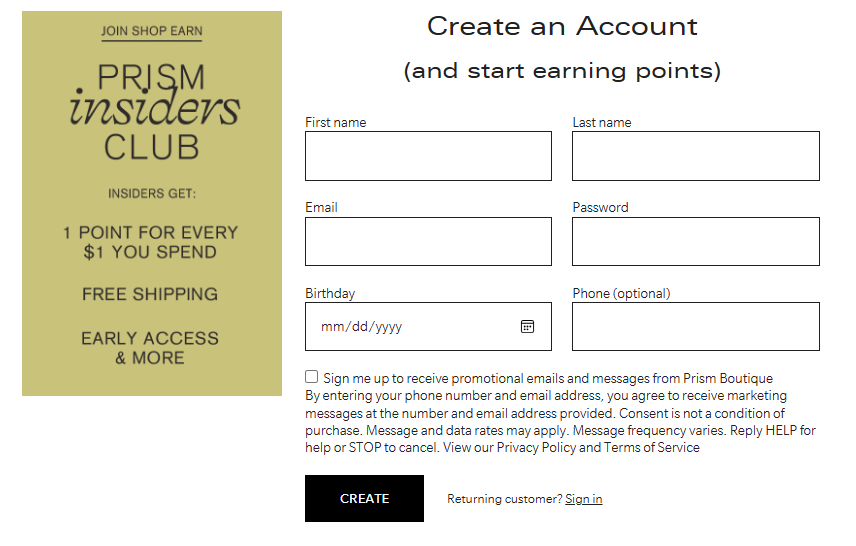
Creating an effective SMS welcome automation
Once a subscriber signs up to receive SMS texts, it’s good practice to welcome them to your list. Consider setting up an automated process that sends them an immediate text when they join. You might also ask them to verify their subscription by quickly replying to your message. You can describe what they can look forward to in your future SMS texts and allow them to set preferences, such as how often you want them to hear from you and what type of content they’d like to receive.
Expanding your SMS list and using checkout experiences
Your subscriber list will gain momentum over time, especially if you use every opportunity to promote it. One of the best ways to gain text message subscribers is during the sales checkout process. Once someone buys from you, they’re already familiar with what you have to offer. Whether they buy online or at your physical storefront, you can encourage them to sign up for your SMS texts when they purchase.
Targeting email subscribers for SMS opt-ins
If you already have an email subscriber base, use it to promote your SMS list. You can send an email to your audience telling people what to expect if they sign up for your SMS texts and how it differentiates from your other marketing channels. You can also include a simple and clear CTA so your customers can quickly sign up if they want to.
Designing your SMS marketing campaigns
As your SMS marketing gains steam, you must decide on strategies that compel your subscribers to engage with your content and continually attract new audiences.
How to create SMS marketing campaigns
Designing an SMS marketing campaign requires some planning. You don’t want to start sending SMS texts without addressing a few key elements first, including the following:
- Your campaign goals: What are you hoping to achieve through your SMS texts? Do you want to build a loyal following or boost sales? Are you hoping to learn more about your customer base? Do you want to use SMS texts to promote new products or services? Defining your campaign goals can help you establish a clear SMS business marketing strategy.
- Identifying your audience: Define the traits and characteristics of your target customers. Learn what motivates them to subscribe to your marketing messages and why they want to hear from you. Knowing their demographics, interests, and purchasing behaviors can help you cultivate tailored content.
- Establish a campaign timeline: Determine how frequently you’ll send SMS texts and when they’ll be delivered. Remember that time zones may vary across your customer base, so ensure you send messages when your clients are most likely to engage with them.
Best practices for SMS campaign design and timing
Understanding the best practices of successful SMS campaigns can help you avoid faux pas that hurt your results. Here are a few to be aware of:
- Provide valuable content: Any time you text a subscriber, ensure your message is relevant to their motivations and interests. Avoid sending texts that don’t apply to their needs. Otherwise, your audience may complain or unsubscribe.
- Include a clear CTA: Unless your text is informational — such as a shipping notification or update to your store hours — provide a CTA that tells recipients what you want them to do. Providing links and shortcodes can help you engage with subscribers.
- Personalize messages: Include elements that personalize your message content, such as your subscribers’ names, location, or connections to a recent brand interaction.
- Integrate your SMS campaigns with other marketing channels: Chances are, your SMS campaigns aren’t the only marketing channel you have. Integrate your texts to coincide with your other channels. For instance, you might use email to promote a new product line and then send an SMS text receipt if a customer places an order.
- Promote special offers: SMS texts provide a great platform to promote flash sales or one-time deals that your subscribers can use.
- Automate SMS marketing for efficiency: You can ensure your subscribers receive timely messages from you through automation. Use automation for welcome texts, shipping notifications, and other similar content.
- Evaluate performance: Use KPIs to monitor the effectiveness of your campaign. For instance, you might set benchmarks for open rates, conversions, and click-throughs, then compare them to your actuals. If your results don’t meet expectations, find ways to improve your SMS campaign.
Advanced SMS marketing techniques
When you first begin SMS marketing, you’ll put new skills to the test. You’ll learn how to build a subscriber list, develop an effective SMS marketing automation strategy, and evaluate results. As you become more confident in your abilities, you can try out some advanced techniques to enhance campaign performance.
Using two-way SMS for customer engagement
Not all of your SMS texts have to be one-directional. Instead, work on developing relationships with your clients through two-way SMS texts. For instance, you might send an SMS text asking clients to rate a recent product they bought and provide a short review. Their feedback can help you learn more about how they feel about your brand.
Personalizing messages with targeted segments
As you would with your email messages, develop a segmentation strategy for your SMS texts. Categorize your subscribers based on their buying motivations, demographics, location, and other factors. Instead of sending text blasts with the same content, vary your messaging to cater to each segmented group.
Improving customer loyalty through tailored SMS programs
A tailored SMS messaging strategy can enhance customer trust and loyalty. Consider offering clients something they’ll appreciate when subscribing to your texts. For instance, you might recognize a subscriber’s birthday with a special message and one-time offer or reward them with loyalty points they can use toward future purchases.
Supporting post-purchase experience with SMS
After customers buy from your brand, use SMS to learn about their experience and solicit feedback. For instance, you might send them a customer service survey to find out what they thought about their purchase. Or, you could use SMS to recommend other products they might like.
SMS marketing software solutions
An effective SMS marketing campaign requires software with supportive features. You can choose from several different solutions, including Twilio, Omnisend, Klaviyo, and Constant Contact. Here’s a breakdown of how they compare.
| Twilio | Omnisend | Klaviyo | Constant Contact | |
| Channels | SMS, MMS, WhatsApp | SMS, MMS | SMS | SMS |
| Special features | One-way and conversational texts; customizable API | Pre-built automation workflows; list-building tools | Automation, segmentation, data tracking, and templates | AI content generator, built-in link shortener, A/B testing, list-building tools |
| Reach | Over 180 countries | All countries | U.S., Canada, United Kingdom, Australia, New Zealand, Germany, Netherlands, Ireland | U.S. only |
| Pricing | Pay as you go; $0.0079 for inbound and outbound SMS texts | $0.015 per SMS credit; Pro subscribers receive free SMS credits | Depends on the plan and the number of credits chosen | Starts at $10 per month; Premium plan includes 500 free SMS messages |
| Analytics | Track links and performance for an additional $0.015 per text (First 1,000 SMS texts are free) | The pro plan includes advanced reporting tools | Built-in and customizable reports | Includes reach and engagement reporting tools |
| Free trial | Yes | Free trial on Free and Standard plans; Pro plan offers a demo | Offers free plan with 150 SMS and MMS credits; demos available for more robust plans | Yes |
Constant Contact’s SMS marketing plan includes built-in features designed to support all marketers. Unlike some other platforms, you don’t need to be a software expert to get started. You can begin developing SMS texts immediately after subscribing and use an AI content generator if you need a little messaging inspiration.
Pairing SMS marketing with other digital strategies
Think of digital marketing cohesively. It’s not simply email marketing or SMS texting; it includes other strategies like social media and ecommerce advertising. When combining your SMS texts with other marketing strategies, find ways to complement them so you’re not simply repeating the same information in every channel.
For instance, you might use email to provide news updates on your business and social media to display your newest products. You can use SMS messages to follow up with clients after they order a product or to provide shipping status updates.
A solid SMS marketing strategy can reap huge benefits
There’s no doubt that SMS marketing can bring tremendous value to your business. It provides an opportunity to form stronger client relationships and is extremely cost-effective compared to other marketing strategies. To get started on your SMS marketing campaign, define its purpose and your goals, and start building an organic subscriber list. Remember to integrate SMS best practices, including personalization, automated workflows, and integration with your other marketing channels. As you become more comfortable with SMS marketing, you can try more advanced techniques, like two-way SMS and segmented texts. To learn more about SMS text marketing, check out our guides to SMS for Retail and SMS Text Message Marketing for Small Businesses.
Email marketing is an essential part of any digital marketing strategy. With it, you can reach your target audience, share impactful promotional content, and drive conversions.
Implementing direct email marketing will help you get ahead of your competitors who overlook this powerful marketing method. Learn what direct email marketing is and how to leverage it to grow your business.
Introduction to direct email marketing
What is direct email marketing? Direct email marketing is the practice of sending promotional emails directly to your customers and potential customers. The message goes straight from the business to the target audience, making it a “direct” marketing channel.
What is a direct marketing email?
The content of these marketing emails varies. Some may provide educational content related to the brand’s products or services. Others may introduce new product developments or special deals. Any promotional content businesses send via email to targeted groups of customers is a direct marketing email.
Effectiveness of direct email marketing
Before investing in this marketing strategy, you may ask yourself, “Are direct email marketing campaigns effective?” The simple answer is: Yes, email marketing is incredibly effective.
According to a Litmus report, more than 90% of marketers believe email marketing is important in their company’s success. Email marketing provides an excellent return on investment (ROI), averaging $36 for every $1 spent. That’s a 3,600% return. Very few other marketing channels are as cost-effective as email marketing.
Direct email marketing is not without its drawbacks, however. For example, companies using direct email marketing may run into issues with spam filters that prevent their emails from reaching customers. Designing and writing effective marketing emails is also challenging, especially for brands venturing into email marketing for the first time.
Luckily, none of these challenges are insurmountable. With the right strategy and direct email marketing solution, you can make this channel work wonders for your business.
Creating a strategy
Getting started is the hardest part of email marketing. Step one is to develop your strategy. To create a successful direct email marketing strategy:
- Determine your goals: The most effective strategy is tailored to your brand’s specific goals. Do you want to increase brand awareness? Increase your upselling and cross-selling? Improve your customer retention? Your goals will inform your email marketing practices.
- Build your email list: You need a strong email list to reach the right people with your email promotions. This list is full of customers and potential customers who have already agreed to receive emails from your business.
- Segment your customers: One of the main strengths of email marketing is that it allows you to easily segment your customers into smaller groups by shared characteristics. For example, you can create a segment of customers who have spent $500+ on your products and send them a thank-you email to recognize them.
Four types of email marketing messages
Your strategy depends on the type of email marketing you plan to use. What are the four types of email marketing? They cover several key areas:
- Transactional emails: Confirm customer purchases
- Promotional emails: Keep customers aware of your special deals and discounts
- Email newsletters: Build brand awareness with updates and other engaging information
- Retention emails: Help you engage and keep existing customers
Key direct email marketing metrics
Tracking and evaluating metrics is a key part of any marketing strategy. These metrics will tell you what’s working and what you can improve in your campaigns. Here’s how to measure direct email marketing success with key metrics:
- Open rate: Your open rate is the percentage of all recipients who open your email. You want this percentage to be as high as possible. One way to increase your open rate is to write more compelling subject lines.
- Click-through rate: The click-through rate (CTR) on your marketing email is the percentage of recipients who click on a link in the message. If you send 1,000 emails and 100 people open a link in those emails, your CTR for that email is 10%.
- Bounce rate: The bounce is the percentage of emails you send that do not reach the recipient’s inbox. Emails can bounce for several reasons, such as invalid recipient email addresses, full inboxes, or spam filters. Watch your bounce rate for any unusual spikes that may indicate an issue with your emails.
- Conversion rate: The conversion rate on your emails is the percentage of messages that result in a customer completing a desired action, like making a purchase. Divide the number of customers who completed this action by the total emails you sent to get your conversion rate.
- Email list growth: Hopefully, you will continue to grow your email list over time so you can reach more and more customers. Track your email list numbers to know if the growth slows or even stops. A welcome email and email retargeting can help keep your list numbers up over time.
Direct email marketing best practices
If you’re not careful, it’s easy to make costly mistakes in your promotional emails. Keep these do’s and don’ts of effective email marketing in mind:
Do: Personalize your emails
Email is a marketing channel that allows you to personalize your messages easily. Try to incorporate a personalized greeting for each customer, make personalized recommendations for each customer, and reference previous interactions they’ve had with your brand when possible. Direct email marketing services like Constant Contact include convenient tools to help with this personalization.
Don’t: Leave out a call-to-action (CTA) in each email
You should have a clear goal of what customers should do after reading each email you send. Take that desired behavior and create a corresponding call to action that prompts the reader to take the next step. The CTA should be large, distinct, and easy to click so the readers don’t miss it.
Do: Use an email builder for better email design
It’s tricky to get your email design right when you do it manually, but an email builder can help you create stunning messages with ease. Direct email marketing companies like Constant Contact offer tools like pre-designed email templates for simpler email creation. You can drag and drop email components like text, images, and buttons in Constant Contact’s email editor to have a professional email ready in moments.
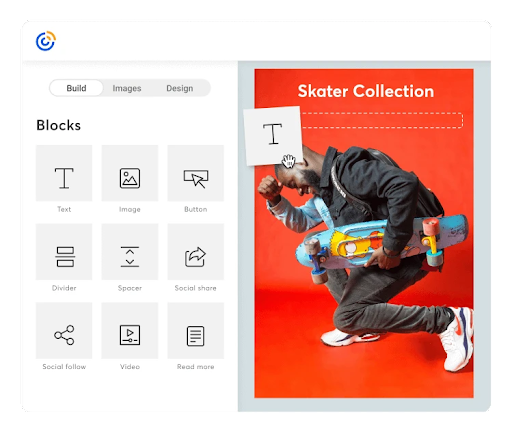
Don’t: Forget to proofread your messages
There’s nothing more unprofessional and offputting to customers than a brand email with errors. Proofread each email until you’re sure there are no typos or other mistakes in your message. Run the message through an online grammar checker to be safe.
Do: Write a compelling subject line
When an email arrives in a customer’s inbox, they use two main pieces of information to decide whether to open it: the email sender and the subject line. The stronger your subject line is, the better the odds are your recipients will open and engage with it. Think about the best subject lines that would entice your target customers to open your message.
Avoid “click-bait” phrases that mislead the audience and focus on catching their attention honestly.
Don’t: Forget to follow through or be inconsistent
Follow-throughs ensure you don’t leave any leads hanging and keep customer interest over time.
You also want to ensure consistency — in the timing and delivery, style, voice, and all other areas of your email. This way, readers know what to expect and won’t be confused by varying styles.
Targeting and segmentation
Part of any great direct email marketing strategy is a focus on audience segmentation and targeting. Audience segmenting is all about breaking down your customers into smaller groups based on common attributes. For example, you may segment your audience by location if customers in different areas have distinct needs and preferences. Segmenting by age and gender is very common.
Segmenting allows you to create email messages that are more tailored to the recipients rather than sending the same message to everyone. Another example of segmenting in email marketing is separating your email list into prospective and existing customers. That way, you can create specific messages for returning customers and different messages to entice new customers.
Segmenting and targeting work best when you have a large audience. Follow these creative ways to grow your email list so you have plenty of people to email. As your list grows and you have more interested customers to contact, you increase your odds of making conversions.
Email testing
Don’t expect the first version of every strategy and message to be perfect. Email marketing requires testing and monitoring for continuous improvement. For instance, run A/B tests and send out two similar but distinct versions of the same email in small batches. Comparing the performance of these two emails will help you determine what works best with your audience, and you can proceed with the better email.
Goals and stages of direct email marketing
Brands use email marketing to accomplish many different goals. What is the direct mail method of marketing? Some of the main goals of direct email marketing include:
- Increasing brand awareness
- Generating and nurturing leads
- Driving web traffic
- Retaining customers
- Increasing sales
- Creating upsell and cross-sell opportunities
- Building brand loyalty
Develop an email marketing strategy tailored to your business goals. For example, if you want to create cross-sell opportunities, segment your customers by their previous purchases and send emails recommending complementary products. Send special offers to individuals to drive sales and engagement.
You don’t have to choose just one goal to focus on, but understanding your goals can help you focus your efforts.
Performance measures and examples
The best email marketing campaigns don’t just deliver a strong open rate or click-through rate — they deliver tangible results that help your business grow. Design your emails to drive conversions and sales.
You may be wondering: What is a direct email with an example? Use these case studies of the best direct email marketing examples for inspiration.
Beardbrand
To reengage customers and get them interested in new products, Beardbrand sent an email with the latest best sellers. The call-to-action in this message, “check out what I’ve missed,” is especially strong since it plays on the reader’s fear of missing out on something great. Bright, clear product images help to engage the audience further.

Starbucks
Starbucks shared this promotional email exclusively with members to alert them to a special deal available that week. It’s simple but effective, with colorful graphics and a straightforward call to action.
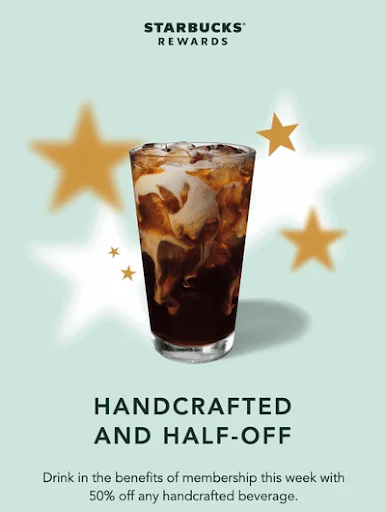
Additional considerations
Some additional considerations to consider while implementing email marketing include:
Email marketing and customer service solutions
Email marketing goes hand-in-hand with customer relationship management. With that in mind, you may want to integrate your email marketing efforts with your CRM. Combining the two will strengthen both. For example, you can use data like customer purchase history from your CRM to better customize your email messages. Direct email marketing tools can make this process a breeze.
You’ll also want to use an omnichannel strategy and ensure consistent messaging across all channels so consumers see you as a cohesive brand.
Avoiding email marketing pitfalls: honeypots and spam traps
The better your email delivery, the more effective your email marketing campaigns will be. So, what is email deliverability? Email deliverability is the percentage of your messages reaching your intended recipients. This goes down significantly if you get caught in spam traps. Follow email best practices to avoid getting caught in honeypots — decoy email addresses meant to catch spammers — and other spam traps.
Conclusion and further learning
Direct email marketing is a powerful tool for any business, especially with the help of the right email direct marketing tool. Use email marketing to connect with your target audience, segment your customers into groups, and send personalized promotional messages that convert. Learn more about generating email leads and upholding legal and ethical standards in your marketing campaigns before you get started. And keep in mind that email marketing, like digital marketing overall, is constantly evolving. In the future, brands will likely emphasize artificial intelligence (AI) and direct email marketing software even more to help them with their campaigns. To stay competitive, you’ll need to combine email marketing best practices with the strongest tools and resources available. Get started today with a free trial of Constant Contact.

Crafting a great email subject line is an important part of building a successful email marketing campaign. The subject line is subscriber’s first encounter with your email campaign, and it’s what gets them to open it.
Without a good email subject line, your email marketing campaign could get lost in inbox! No need to worry — you’ve come to the right place to learn how to write subject lines that get your email noticed.
In this article, you’ll learn what a subject line is and why it’s important. Then, we’ll dive into how to create the best email subject lines (that get people to actually open your emails!), plus we’ll see some great email subject line examples.
What is the subject in an email?
The subject in an email is the main purpose and goal of the content. The subject line of an email supports the intention and goal of your email in the inbox. This one line of text can often determine whether an email is opened or sent straight to the trash, so ensure it’s optimized for your audience.
Spending a little extra time on your email subject lines will help you get more customers to open your emails, get your message in front of the right people, and help you avoid the spam folder. Plus, good email subject lines help lead subscribers to take the action that generates the most value for your business: click-through rate.
What makes a catchy subject line?
A catchy subject line is what will pique your subscribers’ interest and entice them to open your email. As you sit down to write your next email marketing campaign, you’ll likely ask yourself: what makes for a catchy subject line? A couple of factors influence that 40-character advertisement.
Content: With limited real estate in subscribers’ inboxes, your subject line needs to be informative and personal without giving everything away — sometimes teasing your email’s content is what will get people to open it. Whether it’s a regular newsletter, an update about a product, a confirmation, or a request for a survey, let your subscribers know what kind of value they will gain from reading your email.
Tone: Tone helps you to inject emotion into your content. Think about what sort of emotions are going to help your subscribers take action and what tone will trigger those emotions. Emails about sales might have subject lines with an urgent tone. On the flip side, emails about an upcoming product launch might be informative yet coy enough to tease the email’s content to the subscriber.
Style: Like tone, the styling of your subject line is going to inform your subscriber’s response. Credible subject lines are styled to match your brand voice and avoid spam filters. Youthful brands might lean into using emojis in their subject lines while brands geared toward a male-dominated audience might opt for fewer exclamation points.
Best Catchy email subject lines
Professional email subject lines
From expert tips to peer updates, craft email subject lines that inform subscribers about the value they stand to gain for their careers and professional advancement.
- “DC networking round-up: March update”
- “SEO best practices 2024 – download the guide”
- “Hints & tips for a better resume”
- “Learn: a new playlist went live for “Design”
- “Check out these expert tips to build better emails”
- “Bonjour! Your first class is on us”
Funny email subject lines
As the classic “Singin’ in the Rain” said: Make ‘em laugh. Use witty and humorous subject lines to get people excited to open up your email.
- “This just in: nothing – there’s nothing good in here [winky face emoji]”
- “Your fridge said you’re not being creative enough”
- “Sisterhood: we’re double-cuffing now [jeans emoji]”
- “There are not enough sticky notes on your desk”
- “The Earth’s 70% water and you’re parched”
Cold email subject lines
Cold subject lines give the information to the reader directly, no fills.
- “Discover the secret to [desired outcome]”
- “Boost your [goal] with [offered solution]”
- “Your [product/service] success starts here”
- “New insights on [relevant topic] inside”
- “Get ahead of the curve: [prospect’s industry] trends”
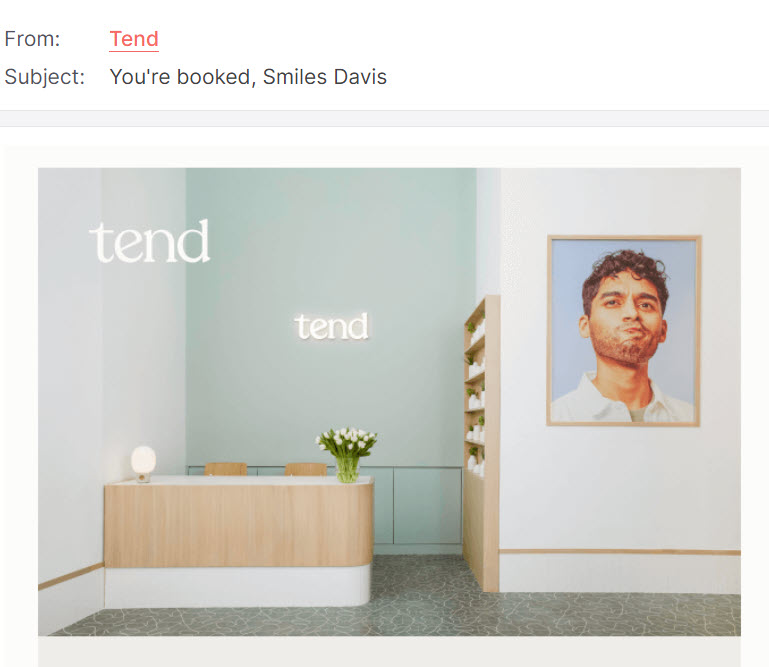
Welcome email subject lines
Similar to introduction email subject lines, welcome email subject lines invite subscribers into contact with your business. Welcome email subject lines should help solidify a bond between subscriber and business.
- “Thank you for joining [company name]! Here’s what we have in store for you.”
- “Welcome to [company name] – Let’s make great things happen together.”
- “Welcome [name]! Your success story begins here.”
- “Unlock endless possibilities with [company name]. Welcome aboard!”
- “You’re in! Here’s a little something from [company name] to help you get started.”
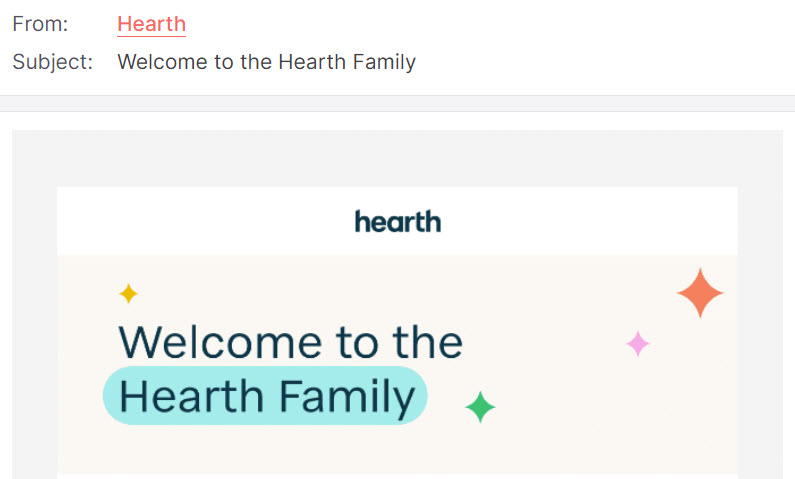
Newsletter email subject lines
Newsletter subject lines serve to intrigue readers with interesting news/valuable information.
- “Exciting updates from [company/industry]”
- “[Company name] Newsletter: Packed with insider tips and trends”
- “Get inspired: Learn from the success stories of [industry expert/customer]”
- “Just released: Our ultimate [resource/guide] to [topic]”
- “Your [month] roundup: Top [industry] insights”
Abandoned cart email subject lines
Remind your subscribers when they “accidentally” forget an item in their cart. Craft subject lines that generate a fear of missing out or even a playful guilt trip.
- “Forget something? This tote can’t fill itself”
- “You abandoned me” — what could’ve been a cute top”
- “These bath bombs are lying in wait”
- “Excuse my French, you forgot your macarons”
- “There’s ennui, and then there’s an abandoned cart”
Sales email subject lines
Sales subject lines are upfront and direct, they let the reader know the email is product/service focused.
- “Limited-time offer: save 50% on our best-selling product!”
- “Last chance to take advantage of our biggest sale of the year!”
- “Act now and receive a complimentary gift with your purchase”
- “Limited quantity alert: grab your favorite [product] before it’s gone!”
- “Just for you: enjoy a personalized [offer]”
Black Friday email subject lines
Black Friday is one of the busiest holidays of the year for most businesses. Prepare subject lines that will get your subscribers excited about upcoming sales.
- “Ready your hatchets: blockbuster deals start at midnight”
- “We’re slashing prices this season | Black Friday Deals”
- “Check out what deals are dropping at midnight”
- “Shop local this Black Friday”
- “Black Friday deals to help you ring in the holidays”
Survey email subject lines
Survey email subject lines ask recipients to provide their feedback. Make sure your audience knows you value their opinion of your business.
- “Help us serve you better! Complete our survey for a chance at [reward]”
- “Your opinion matters — take our quick survey and help us improve”
- “Your feedback matters. Share your thoughts and shape our future”
- “We’re listening! Take our survey and let your opinions be heard”
- “Your satisfaction is important to us. Share your feedback and help us excel”
Thank you email subject lines
Thank you email subject lines show gratitude, they remind your subscribers that their time, attention, and loyalty are important to a business.
- “A sincere thank you from our team”
- “Your support means the world to us”
- “A special thank you for your continued partnership”
- “Appreciating your awesomeness, [name]”
- “You’re amazing! Thank you!”
Introduction email subject lines
Introduction email subject lines should invite the recipient into conversation with your business. Let them know what value your business is going to provide the reader.
- “Introducing [company name]: Your solution to [recipient’s needs]”
- “Get acquainted with [company name]— your newest partner in [industry]”
- “Introducing [company name]. Here’s how we can help you”
- “[company name]: Your guide to [recipient’s desired outcome]”
- “[recipient’s name], meet [company name]: Your key to [industry] success”
Fundraising email subject lines
Fundraising email subject lines ask the subscriber to donate their time or money to an organization or cause. Use emotions and ethics to craft subject lines aimed at generating charitable donations.
- “Help us change lives: donate now”
- “Your gift transforms lives”
- “Unlock hope: donate today”
- “Together, we can make a difference”
- “Making a difference starts with you”
- “Empower the future: support our cause”
- “Every dollar counts: help our mission”
- “Your generosity can change the world”
- “Become a hero for our cause”
- “Changing lives, one donation at a time”
FOMO email subject lines
Fear of Missing Out, aka FOMO, is a common phenomenon — you can harness its power to help you generate opens for your email marketing campaigns.
- “Don’t miss out on tix to [insert band name]”
- “Last chance to sign up for [insert event name]”
- “Time’s ticking, download our [event name] guide to get ready”
- “Hurry! Our [name of sale] ends tonight!”
- “Adventure awaits! Book your tour now!
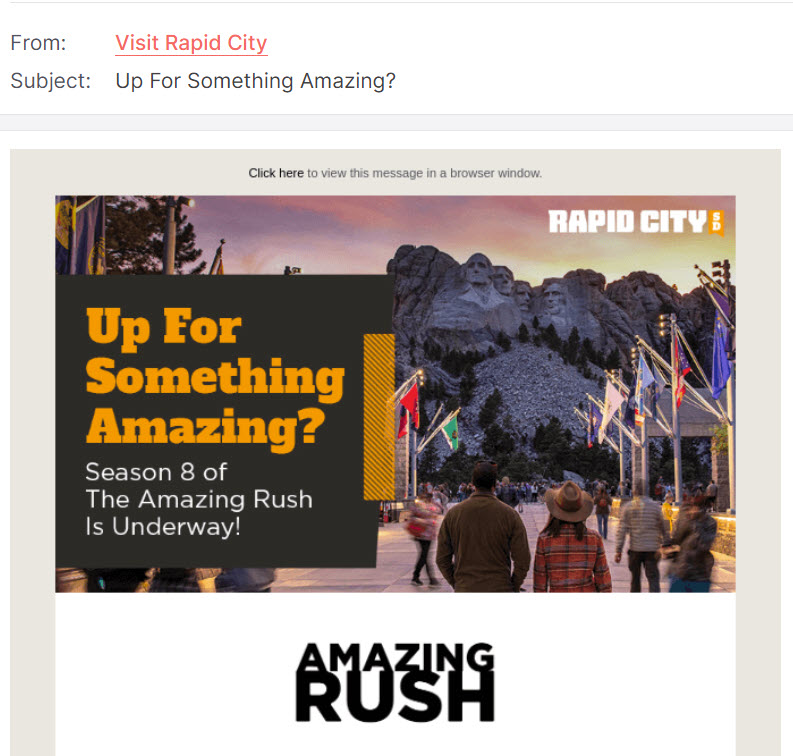
Events email subject lines
Event email subject lines let your audience know that your business is hosting an event and encourage them to RSVP.
- “Join us for an unforgettable evening: [event name] is almost here!”
- “Limited spots available. Register quickly for [event name]”
- “Last chance to secure your spot at [event name]—Register today”
- “Unlock new possibilities at [event name]—get your tickets now”
- “Polish your skills at [event name]: It’s an opportunity you can’t miss”
Best Practices for Email Subject Lines
The following are best practices to help you craft compelling email subject lines for your business’ marketing emails.
Grab their attention
Your email subject line should act as a mini advertisement for your content. In order to stand out in the inbox you want to instantly grab the attention of your audience — this could be through using a catchy piece of copy, including the name of the recipient in the subject line, and using pictorial additions like emojis to help separate your business’ subject line from the rest of the inbox.
Convey relevance
Email subject lines should offer information that is relevant to the recipient and give them a hint as to what content they can expect to find if they open your email. Emails meant to drive customers to a product should use subject lines that speak to the value or relevance of the product, like the importance of scheduling a check-up or a sale on shorts in the summer.
Create curiosity
As previously stated, you want to grab the attention of your audience, but you also want to make them curious. Email subject lines are short by design, you want to give the reader a taste and make them decide whether they want to invest their time in reading further.
Drive action
Think about the main goal and call to action of your email campaign. What action do you want your audience to take once they have finished reading what you have provided them? Do you want your audience to buy a product or service? Do you want them to sign up for an event? Make sure your subject line is clear about the desired action of your business.
Personalize when possible
People respond best when they feel that communication is personal and they are likely to take pause when they notice something familiar, like their own name, in the inbox. Use dynamic fields to auto-populate your subject lines with the name of the recipient.
Deep dive: Why you should personalize your marketing (and 7 ways to do it)
Keep it concise and compelling
Make sure you remember to keep your subject line concise to avoid it getting cut off in the inbox. Your subject line should be able to convey urgency, excitement, intrigue, feelings of welcomeness, or whatever the goal of your email message is in a few short words.
Use a familiar sender name
In the same vein as why people pause when they see their own name, your audience is likely to open emails that have a sender name that is familiar to them. Selecting a regularly occurring sender name to represent your business will help build trust with your audience, increasing their likelihood of opening.
Create a sense of urgency or exclusivity
Generate urgency in your subject line to capture the attention of your audience and encourage them not to wait to open your business’s email. Craft an exclusive air in your subject line to promote feelings of specialty.
Don’t use all caps
All caps can trigger readers’ instinct that the email they are looking at could be spam. Avoid using all caps when possible, and if you do decide to use all caps in your subject line keep it to one or two words.
A/B test your subject lines
In order to figure out what your audience responds to positively, consider A/B testing your subject lines. Perhaps you will write subject line A to stress urgency and subject line B to express exclusivity. Send each email test to a small group of your audience (10-20% of your total audience for each group is a good rule of thumb), determine a timeframe and analyze your results once the timeframe has passed. Whichever subject group has the highest open rate will determine which subject line you will use for the rest of your audience.
Remember to tweak
As you work on email marketing ideas for your business, remember that you’re playing a long game. Besides A/B testing your subject lines, remember to try new styles to see what works and what can be improved.
Email open, click, and bounce rate by industry
Crafting good email subject lines serves to increase value metrics and help your business achieve marketing goals. Open rates, click-through rates, and bounce rates are all influenced by the quality of your email subject lines.
Email open rate: Measurement of how many times an email has been opened by subscribers versus how many times the email has been sent.
Email click-through rate: The measurement of how many people have click a link located within an email versus the number of opens. Clicks can be counted through hyperlinked content, linked images/graphics, or linked buttons. Using a call to action (CTA), which is a line of text that directs the reader to take the business’ desired action, will help improve click-through rate.
Bounce rate: The measurement of the number of emails sent versus the number of emails delivered.
Industry averages
Want to know how your business’ emails measure against industry averages? See the full list on our KnowledgeBase.
Final thoughts on email subject lines
With these tips in mind, you’re ready to write good email subject lines that will get your emails the attention they deserve.
But don’t rely on our advice alone.
Take a look at your own inbox and see which emails you’ve been opening. Putting yourself in your contacts’ shoes is one of the best ways to write a subject line that will get you noticed and boost your business.
To see which subject lines grab your audience’s attention, try A/B testing.
Text messages are a part of everyday life. We use them throughout our day, every day, to communicate with one another while we’re apart.
And while we all use text messages in our private lives, most of us also receive SMS marketing messages from companies and organizations that we do business with.
What is SMS marketing?
SMS stands for “short message service.” SMS marketing helps your business send text messages to customers or clients who’ve opted in to receive timely communications from your business or nonprofit.
Businesses use SMS to send marketing messages to subscribers about limited-time offers, sign-up confirmations, event announcements, appointment reminders, and more.
Is SMS marketing legal?
SMS marketing is legal when you obtain consent from your subscribers and your business upholds the following guidelines set forth by the Federal Communications Commission (FCC) and the Federal Trade Commission (FTC).
The FCC’s Telephone Consumer Protection Act (TCPA) requires that businesses gain consent before sending SMS marketing text messages. The act also requires SMS marketing text messages to include the following:
- Description of the program
- Shortcode or phone number messages will come from
- The phrase “Msg & Data rates apply.”
- The number of messages subscribers can expect to receive
- Instructions on how to opt-out
- A link to your terms and conditions or privacy policy
- Contact and support information
The FTC’s CAN-Spam Act helps to protect consumers from misleading information and poor business practices. The CAN-Spam Act instructs businesses to avoid the following bad business practices:
- Failing to identify a message as an advertisement
- Misleading or false information in subject lines, header content like sender information (To:, From:, Reply to:) and message body content.
- Falsifying business location
- Failing to inform subscribers how to opt-out
- Failing to honor unsubscribes
Comply with the TCPA and CAN-Spam Act to ensure your SMS marketing practices remain legal.
How to use SMS marketing
Use SMS to quickly get in touch with customers, answer questions, and direct them to take action.
To create and send successful SMS text messages for your business, make sure to follow these guidelines:
Character count and tone
While you want to be conversational, make every character count when you begin sending SMS marketing messages for your business. 160 characters (including spaces) is the standard for SMS marketing messages (70 when you include an emoji).
Be friendly and informative with your messaging, reinforcing your brand voice in the process. Have a business geared at younger clientele? You might sacrifice 160 characters for an emoji that says it all.
Respect sending times
No one wants to be bothered by marketing text messages at 2 a.m. Make sure to respect sending times — this means only sending SMS marketing messages between the hours of 8 a.m. and 9 p.m.
Frequency
Just like respecting quiet hours, you do not want to bombard your subscribers with too many messages. Send SMS marketing messages when it matters to keep subscribers informed without overwhelming them with updates.
Value
SMS marketing messages should provide your subscribers with value. From promo codes to confirmation information, clarify what subscribers will gain from your business.
Types of SMS marketing
From abandoned cart messages to appointment reminders, SMS text message marketing is no longer just for large retail businesses.
Here are some common types of SMS marketing:
- Appointment reminders
- Shipping confirmations
- Flash sales
- Product launches
- Discounts and exclusive offers
- Abandoned cart reminders
- Seasonal reminders and sale promotions
Benefits of SMS marketing for small businesses
SMS text message marketing helps your business get up close and personal with subscribers — driving your message right into the palm of their hand. Here are some of the major benefits of introducing SMS text messages into your business’s marketing strategy.
Building relationships
As a small business owner, your greatest advantage is the relationships you build with your customers. By combining SMS marketing with your other marketing channels, you can boost your company’s average user lifetime by 76% all while communicating timely information to your audience when and where they want to receive it.
Directness
The success of SMS marketing hinges on its ability to get important messages into the hands of your subscribers. It’s direct and immediate. With no spam folder and 80.5% of consumers checking their text notifications within five minutes, your marketing messages always get seen.
Cost-effective
SMS marketing allows businesses to reach a wide audience at a low cost, making it an attractive option for businesses with limited marketing budgets. Because of its newness in the digital marketing sphere, you’ll often find digital marketing software platforms offering SMS marketing services as an add-on feature.
Brand awareness
Connect your brand messaging to your subscribers instantly by building a conversation through SMS text messages. Send information about product launches, flash sales, and reminders to give value and reinforce your brand.
High open rates and conversions
With 91% of consumers interested in signing up for texts and open rates as high as 98%, SMS marketing is an impactful tool to get your message out to subscribers and encourage them to take action.
What a small business should be using SMS for
What can’t you use it for? From abandoned cart messages to appointment reminders, reservation confirmations, donation drives and flash sales, SMS is not just for large retail businesses anymore.
As a small business owner, your greatest advantage is the relationships you can build with your customers.
SMS text message marketing offers an additional way to build those relationships by communicating timely information to your audience when and where they want to receive it.
That’s why every business or nonprofit can benefit from using text message marketing as part of their marketing strategy, no matter how large or small.
5 industry-specific SMS marketing sequence examples
Still wondering how you can use text message marketing for your small business? Take a look at these examples:
Retail:
Retail and e-commerce businesses can use text message marketing to share promotional or sales notifications, send abandoned cart reminders, build anticipation for new and seasonal products, welcome and nurture new customers, and even ask for reviews after a purchase.
Real estate:
In real estate, you can use SMS to grow your client base and deepen connections. Use SMS marketing to welcome and nurture new leads, share information on new area listings, provide invitations and reminders for open houses, alert clients to price and status changes, and even ask your client to leave a review online.
Plus, you could send a text invitation and reminders when you’re running a client appreciation event.
Nonprofit:
SMS is a great way to keep your community informed, active, and growing. Your nonprofit can send messages around your fundraising events, such as save-the-dates, registration updates, and even a thank you message after your event is complete.
SMS is a great opportunity to alert members when you’ve sent an important email or newsletter update that requires a timely response. Plus, you can send alerts and notifications about your cause, welcome new subscribers, raise emergency funds, and share updates on your progress.
A few other ideas include sharing inspirational messages around your cause and even reminders for healthy habits like drinking water, working out, and meditating.
Services:
SMS is practically made for the service industry. Use text marketing to confirm appointments and cancellations, send appointment reminders, notify customers of last-minute openings and missed appointments, announce product sales or service discounts, or send reminders to check email for service contracts or receipts.
B2B:
If you’re in the business-to-business (B2B) world, you can use SMS too.
Consider sending event invitation reminders, appointment reminders, alerts on new downloads and helpful content, company announcements, order management, or product and service updates.
What are the most important features of a text message marketing platform?
There are plenty of platforms on the market to consider. Your needs will of course vary depending on your industry but make sure that you’re getting these features from the platform you decide to use.
Compliance and consent management
Will the platform ensure that you will be in compliance without you having to think about it?
Make sure that the SMS text marketing platform you’re looking at does the following:
- Requires recipients to opt in
- Has automatic quiet hours
- Requires an easy opt-out option with every text
Easy-to-use editor
Text message marketing is desirable because it’s fast. If you’re having trouble figuring out the editor, you’re losing time writing texts that resonate with your audience. Your editor should give you the options to personalize messages and easily create an opt-out phrase.
If you’re planning to send bulk messages to multiple customers at once, find a platform that makes it easy to manage your customer database. It should give you the option to create lists and market segments.
A good editor will have a dashboard that’s easy to navigate with clear headings for each section. Use a program that offers templates for various message types so that you can write your texts quickly with language that’s more likely to convert. These templates are also great for writing automated responses.
Mobile keywords and shortcodes
Dedicated keywords or shortcodes like “YES” to opt-in and “STOP” to opt-out are examples of mobile keywords that can trigger automated actions like customer opt-ins and follow-up messages.
Personalization options
You want your business’ marketing messages to feel safe and trustworthy to the individual receiving them. Personalization options, like including a dynamic field to feature the name of the recipient, will help make your subscribers feel comfortable and special to your business.
Text-to-join and lead generation landing page
Investing in a platform that includes a text-to-join feature will help business’ to easily opt-in subscribers to their marketing text messages. Provide potential subscribers with a phone number to text in order to be added to your business’ SMS marketing list. Invite customers who are subscribed to your business’ text message marketing to join your email list by sending a link to a lead generation landing page.
Dedicated phone number
To save time and money, you may be tempted to use your personal or business cell phone number to send and receive SMS messages. But this makes it harder to manage once you start sending out messages in bulk.
Look for a text message marketing service that provides dedicated toll-free and local phone numbers. With these services, you can manage your messages in one spot — the same dashboard you use to compose your texts.
Contact management
A contact management tool makes it easier for you to send bulk messages, segment your contacts, and personalize your messages. For example, if you want to send an automated happy birthday coupon to members of your loyalty program through SMS messages, you can program each member’s birthday into the system and generate an automated message.
If you’ve segmented your list, a contact management tool offers reports that can help you see your most valuable segments. When you’ve identified your MVPs, you can engage them with special offers. Or you can switch up your messages to underperforming segments and see what gets them to engage.
Automation
Speaking of automated messages, any good text messaging service will let you create and send automated messages.
At the very least, set up an automated welcome series of messages thanking customers for subscribing to your text messages. These messages would be triggered by anyone who opts in to receive texts from you.
Add value to your list immediately by including a one-time discount or offer to people who sign up for your texts.
Other automated text messages include personalized promotions that send around birthdays, anniversaries, and holidays.
Use the automated message feature to create abandoned cart texts to notify customers who have been shopping on your site without completing their purchase. If you’re managing a restaurant, you can also use the abandon cart principle when a customer doesn’t finish booking a reservation or making a takeout order.
Integrations
Depending on your business, your SMS marketing platform will offer different integrations. If you’re running a nonprofit, you may integrate your SMS with your donation software, so people can click a link or text a code to make a simple donation.
SMS platforms can integrate with scheduling and conferencing apps, updating your calendar in real-time whenever someone texts you to make an appointment. This keeps you from accidentally double-booking and makes it easy for your clients to choose a time that works for them.
Find a tool that integrates with your preferred customer relationship management (CRM) software to track different interactions with each customer.
Reporting
Measure the analytics of each communication channel to gauge its effectiveness. Look for a tool that generates reports on how many people opened your text and for how long they engaged with your landing page if they clicked on the link.
You can also look at other reports like how many people opted out after each campaign, how many new customers signed up in a given period, and how your subscribers found you. Some platforms let you measure a campaign’s success in dollars, tracking revenue attributed to promotional offers using a specific landing page.
Scalability and reliability
You want your list to text message marketing subscriber list to grow over time, make sure the platform you select can grow with your business. Take note of platforms subscriber thresholds and reliability. You do not want to invest in a platform your business will outgrow to quickly or one that cannot successfully deliver messages to your subscribers.
Why email, SMS marketing, and social media are better together
Using SMS doesn’t mean you should drop the use of other marketing channels such as email marketing and social media. In fact, customers prefer it when their favorite brands use more than one marketing channel to engage them.
In particular, SMS and email marketing are more effective when combined because they’re both permission-based marketing channels.
When people sign up to receive your messages, they’re not just giving permission for you to send them marketing messages; they’re asking you to send them. They’re showing that they’re interested in your business, and they want to receive more information from you.
Whether it’s the latest news on industry trends or a flash sale on cat toys, it’s up to you to send timely, targeted messages on the channels your subscribers prefer.
Doing so will ensure you get the best results possible. And, because not everyone likes to receive the same messages the same way, it’s important to use your marketing channels both separately (omnichannel marketing) and together (cross-channel marketing).
The trick is to know the unique aspects of each channel and how to use them.
Email marketing gives you ownership of your list and your ability to connect with your audience. It allows you to send personalized, targeted messages on your terms. It’s perfect for regular newsletters and messages with enticing images and intriguing snippets that lead back to your website, blog, or online store. However, you also have to compete for your reader’s attention in the inbox.
Social media allows you to reach new people and share beyond your existing email list. But, algorithms can limit your reach, and the social media channel can control how, when, and if you can communicate with your subscribers. And, because social media success relies on your action and interaction, it can be time-consuming. However, social media is perfect for building brand awareness and growing your list.
SMS marketing is much like email marketing; it also gives you ownership of your list and your ability to connect with your audience, as well as allowing you to send personalized, target messages on your terms. However, these messages are more immediate than email and require clear and succinct messaging. This makes text message marketing perfect for sending exclusive messages that require a timely response.
Just remember, no one wants to have their phone pinging all day long, so be careful not to abuse this connection, or you’ll turn people off.
When planning your marketing strategy, keep in mind that even though you should be using these channels together, you don’t want to repeat the same message on every channel.
While we recommend occasionally mentioning what’s going on in other channels or with your campaign, you’ve got to have a reason to be there, and you must pay attention to how you’re using each channel — individually and together.
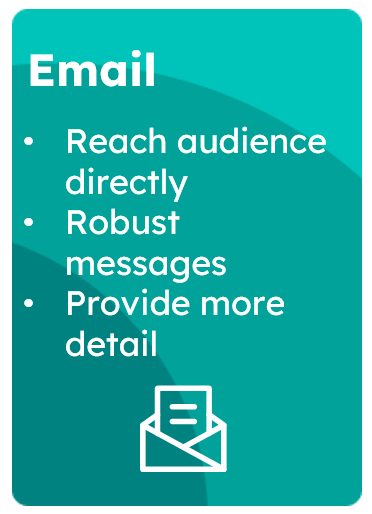
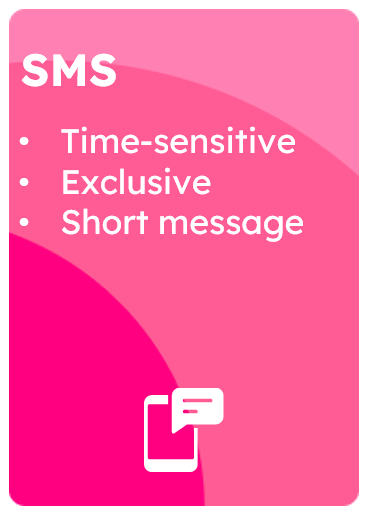
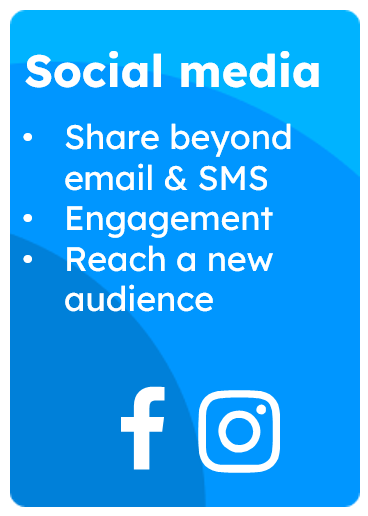
SMS best practices
Growing your SMS marketing list is just as important as growing your email list and social media connections. After all, the power of your digital marketing efforts lies in reaching your customers and customizing your message to their wants and needs.
Start by announcing the new communication channel to your email recipients and include a call to action (CTA) with a link that directs them to your landing page or sign-up form, where they can enter their mobile phone number. Be sure to tell them what they’ll get out of it — from a special discount code for joining to early or exclusive access to sales or industry information.
Set achievable goals for your SMS campaigns
As with all marketing efforts, without setting a goal for your text message marketing, your messaging will lack focus, and you won’t know if your actions are working. So, always set a goal for every campaign. Whether that’s to get 100 opens or to increase sales on a specific item by 10%.
Make data-driven decisions
This goes along with setting goals. Once you know what your goal for a campaign is, set KPIs (key performance indicators) to check your reports against.
If you start out your first campaign to get 100 recipients to read your message, check your report to see the open rates. If the report says that you had 100 opens, then you reached your goal. If it’s less than 100, see if you can figure out why.
Pay attention to when you send and how often
While you want to keep your subscribers informed, respect sending times as per federal guidelines and test frequency to prevent future dropoff from your SMS contact list.
Send updates in real-time
Use SMS marketing messages to send real-time updates to your subscribers. Having a flash sale or a inclinement weather for an event? Quickly send a text to keep your contacts in-the-know.
Revise and repeat
If you don’t get the results you’re looking for in a campaign, don’t chuck it. Take a hard look at your campaign and your reports and see where the weak link is.
Were your open rates low? Maybe you need to try writing a better headline.
Were open rates high but click-through rates low? Double-check the link in your message. Was it working properly? Was it clear what they needed to do to get the offer?
Did sales underperform? Was the offer clear to your subscribers? Was your offer something your recipients would really be interested in?
When you use your reports to find the weakness in your campaign, you can work to improve that part of your campaign and then try again.
SMS text message marketing in Constant Contact
Just like with email marketing, using a trusted platform can help take the guesswork out of regulatory requirements — and even some best practices.
With the SMS marketing feature within Constant Contact, many of the best practices outlined above are taken care of automatically, so you don’t have to worry about them, including:
- Restricting SMS messages to the appropriate hours of communication
- Identifying your company in each and every message
- Utilizing a dedicated local number rather than a toll-free or out-of-area number for best engagement
- Giving your recipients required disclosures, as well as opt in and opt out information
- Shortening links for clear, succinct marketing text messages
Using a trusted platform also has the advantage of using proven tools — like landing pages and sign-up forms – to help you build your SMS subscriber list.
By managing your SMS and email marketing within the same tool, you have the ability to superpower your new SMS marketing campaigns with the information you already have about your loyal customers and your interested prospects.
Finally, once you have launched your first SMS marketing campaign, you can see the outcomes alongside your other marketing reporting for a full picture of when, how and why your customers are engaging with your messaging.
Armed with this information, you will be ready to refine, relaunch, and continue to improve your marketing messages for the best results.
How to get started with SMS text message marketing
Getting started with SMS marketing is easy as long as you know three key things: your brand, your message, and your audience.
With any marketing effort, knowing your brand and your brand voice is critical to creating on-brand, authentic, and meaningful communications with your customers.
Whether your business aims to be a serious thought leader or a fun and friendly community member, sticking to your brand when starting SMS text campaigns will help the rest fall into place. Stay true to what your customers already know and love about you when you start creating your first text campaign, and you’ll be well on your way to success.
So what to send first? As outlined above, text marketing works best for particular types of messages: ones that are timely, succinct and exclusive to SMS. Sales, event reminders, and product sneak peeks are all good examples of the types of messages that work well over text. Consider what you already know about your customers and what motivates them, and start from there.
This is where knowing your audience comes into play — and can make a significant difference between a text campaign that is “wow!” and one that is “meh.”
Just as you would with an email campaign, customizing your SMS marketing messages to your audience is key. Whether sending a text wishing a customer a happy birthday or reminding them a product they frequently purchase is back in stock, a customized message can show your customers how much you value their support.
Armed with a good grasp of your brand, your message and your audience, you’ll be ready to start growing your SMS list and sending messages in no time. Text message marketing doesn’t have to be hard — it’s just one more way to ensure you’re communicating authentically with your customers in the ways and places they prefer the most!
Knowing what platform you want to use can help tie it all together. A trusted platform like Constant Contact helps you stay on top of regulations, follow best practices, and manage your online marketing efforts all in one place. If you are a current customer, follow this tutorial on setting up SMS in your Constant Contact account. If you’re new to Constant Contact, check out our package offerings to choose the plan that’s right for you.
*This content is not meant to replace legal advice or full regulatory guidelines around text message marketing.
You’ve just had a potential customer express interest in your product or service. They’ve filled out a form on your website, downloaded some content, or asked for more information. But they’re not quite ready to make a purchase yet.
So, what do you do? Do you push for a sale right away, potentially scaring them off? Or do you ignore them, hoping they’ll come back when they’re ready?
Neither of these approaches is ideal. The key to converting this potential buyer into a loyal customer lies in the art of lead nurturing.
Lead nurturing is a critical component of the sales process, centered around building relationships with prospective customers. It can revolutionize your sales process and should be standard in your sales and marketing strategy.
Here’s how to develop your lead nurturing program.
Introduction to lead nurturing
Lead nurturing plays an integral role in successful sales, but it’s easy to overlook because its returns are often indirect.
What is lead nurturing?
Lead nurturing is the process of building relationships with potential customers who aren’t ready to buy yet. Rather than converting today’s buyer, lead nurturing sets up a future sale.
It aims to understand the customer’s needs, provide valuable information, and maintain regular communication until they’re ready to make a purchase decision.
What is the nurturing stage of a lead?
The nurturing stage of a lead begins after a potential customer first expresses interest in your product or service, and it continues until they are ready to buy.
During this stage, your job is to answer potential questions and develop a connection.
The role of lead nurturing in B2B sales
In B2B sales, lead nurturing takes center stage. Unlike B2C sales, where decisions are often made quickly, the B2B buying process typically involves longer sales cycles with multiple stakeholders.
Through consistent and personalized communication, businesses can stay top-of-mind throughout this process, gradually moving prospects through the sales funnel.
How lead nurturing impacts sales funnel efficiency
Lead nurturing best practices allow your sales team to identify the prospects with the highest potential and focus their efforts accordingly.
Moreover, providing leads with relevant and valuable content throughout their journey can speed up the sales cycle and inspire larger purchases.
Developing lead nurturing strategies
Turning leads into loyal customers is a bit like gardening. You can’t just plant a seed and expect it to grow into a full-fledged tree overnight. It requires consistent care, nourishment, and time.
How do you create lead nurturing?
An effective lead nurturing strategy requires careful planning and execution. You’ll need to understand your buyer’s journey and provide what they need at each stage.
Understanding your buyer’s journey
The first step is understanding your buyer’s journey. Create a customer journey map that charts the typical path your leads take from the moment they first encounter your brand to the point of purchase.
Identify key touchpoints along the path. Where are your best opportunities to engage with your prospects and provide them valuable content and support?
Creating targeted content for different sales stages
The next step is to create targeted content for each stage and touchpoint. Consider the best type of content as well as the best channel. Each piece should have a clear goal.
For example, your brand could produce educational blog posts for people in the awareness stage, case studies and webinars for those in the consideration stage, or product demos for those in the decision stage.
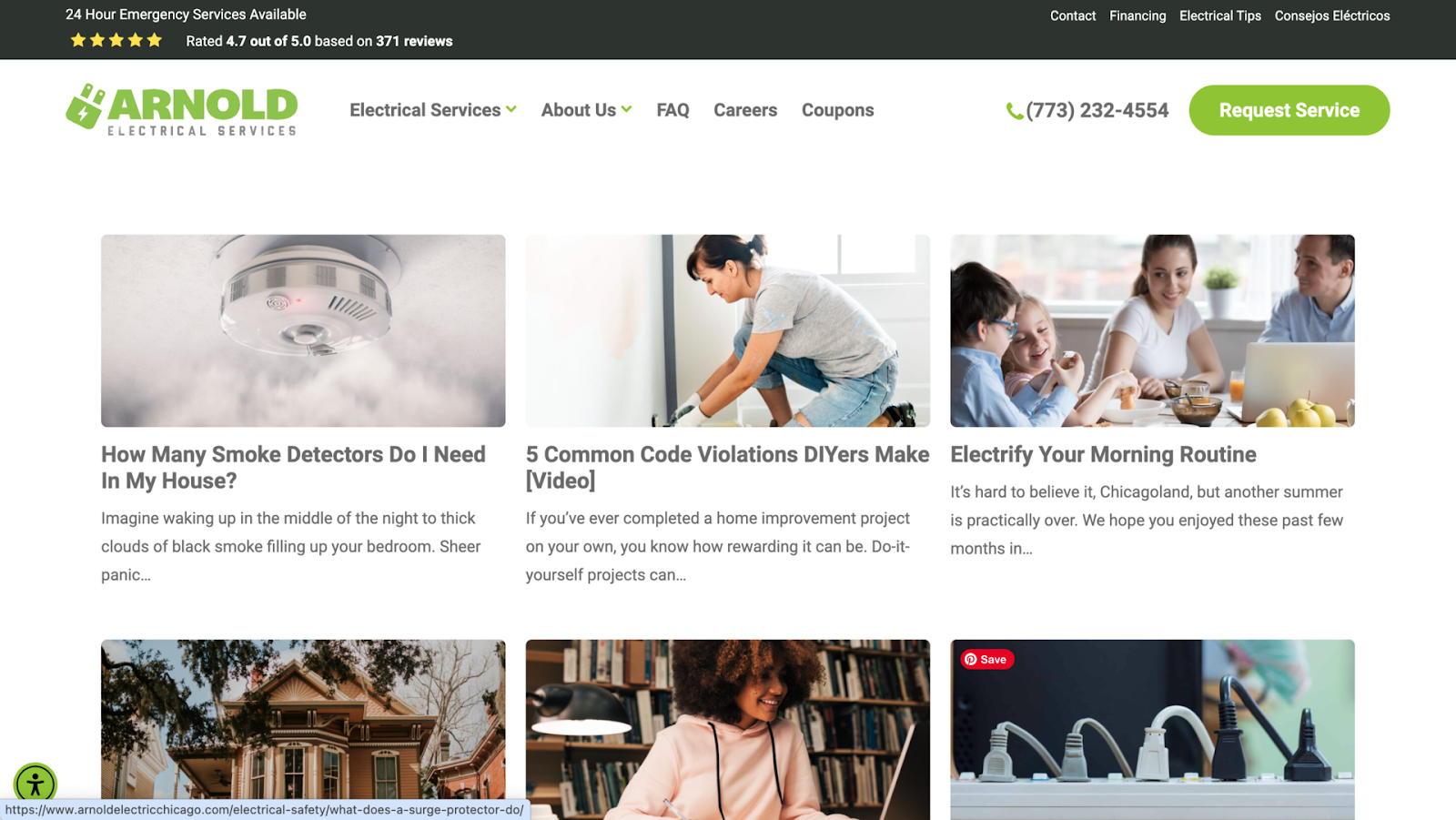
Personalization and its importance in lead nurturing
In one Statista study, 29% of businesses report that more than half of their customers expect some degree of personalization. An additional 11% report that more than 90% of their customers want content specifically geared toward them. Provide your leads with content that caters to their needs and interests.
To nurture leads toward a sale, it helps to segment your email list based on various criteria such as industry, role, or behavior. For example, a B2B business might want to create both a detailed report for their main contact at a company and a digest for other stakeholders.
Using multi-channel nurturing techniques
The best strategies leverage multiple channels to engage with leads, such as email, social media, and website content. Meet your leads where they are to increase your touchpoints and opportunities for engagement.
Integrating sales and marketing efforts for coherent strategies
Sales and marketing should always be close partners rather than independent silos. Aligning their efforts allows these teams to ensure a coherent approach to lead generation and nurturing.
Consistent messaging and seamless movement between sales and marketing touchpoints improve the overall customer experience.
Best practices in lead nurturing
Employ these best practices when communicating with prospective customers for better nurturing and higher conversion rates.
Effective communication and follow-ups
Effective communication doesn’t mean bombarding your leads with sales pitches. Instead:
- Provide them with valuable information
- Answer their questions
- Maintain regular, meaningful contact
- Ensure consistent follow-ups
If a lead has expressed interest in your product or service, don’t let them slip away. Keep the conversation going and remind them of the value you can offer.
Leveraging automation for timely interactions
Take advantage of marketing automation for lead generation and nurturing. Automated email campaigns, for example, ensure that your leads receive timely and relevant content that responds to their interactions with your brand.
How important is a speedy reply to customers? Extremely important. Over half of the customers in one survey hired the first business to respond to their request, even if it was more expensive.
Scoring and segmenting leads for targeted nurturing
Not all leads are created equal. Differentiating qualified vs. unqualified leads lets you identify the people with the appropriate interest and the power to make a decision.
You can further score and segment your leads so you can devote more time to people closer to purchasing and tailor your communications to address groups at different stages.
What is the best way to nurture leads? Provide them with relevant, valuable content that speaks to their present needs.
Multichannel distribution tactics
There are many benefits to multi-channel marketing, so don’t limit yourself. Using multiple channels helps you respect different preferences and diversifies the type of experience you provide each lead.
Nurturing channels
Direct mail, social media, and retargeting are three effective channels for nurturing.
- Digital mail: Direct mail can be the touch that lets you stand out in a digital world. For instance, you could send customized information packets to prospects or stay in touch with holiday postcards.
- Social media: Platforms like Facebook and LinkedIn allow businesses to interact directly with their audience, fostering relationships and building trust. Respond to comments or messages to show people you’re paying attention.
- Retargeting: Retargeting is one of the most powerful lead nurturing best practices. Targeting ads to users who have previously interacted with your website or email content reminds them of their interest.
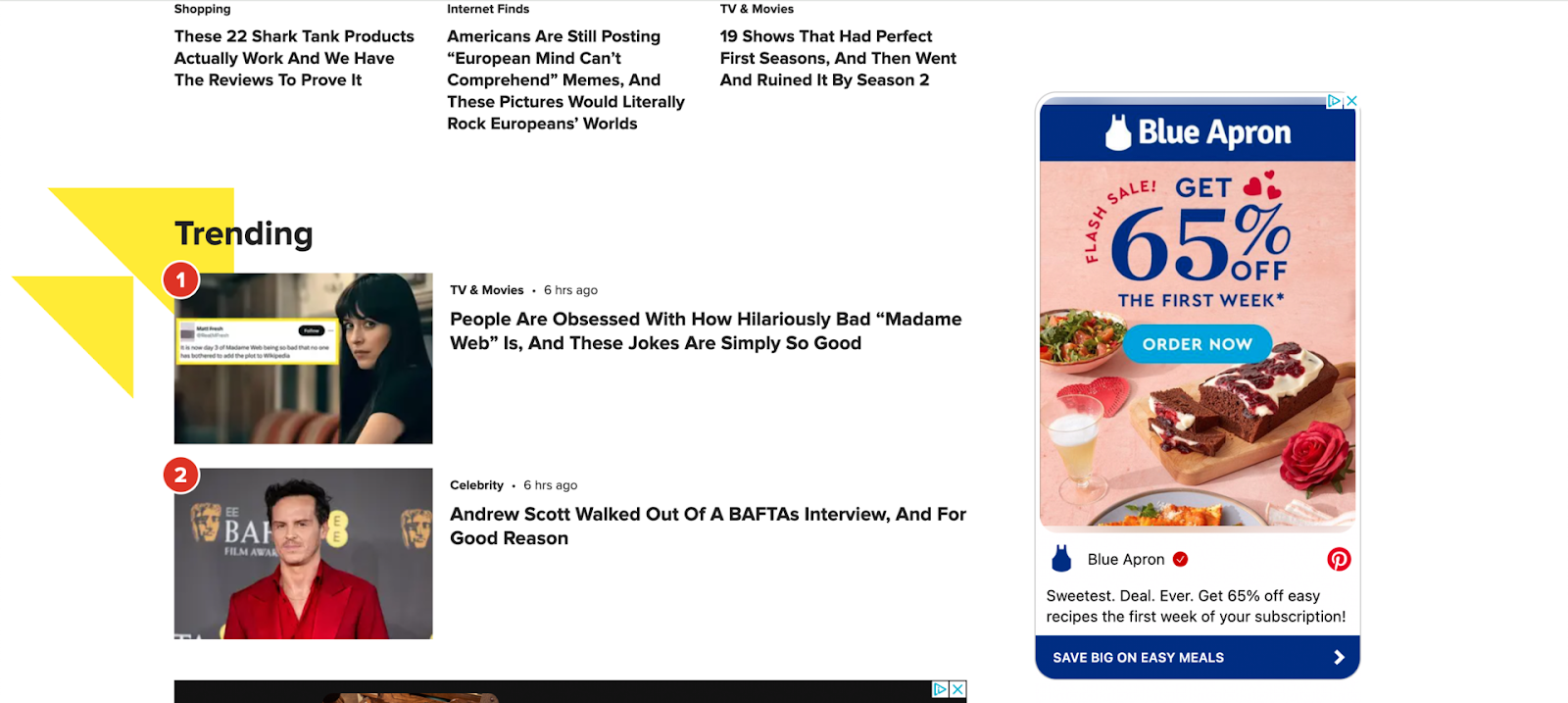
What is an example of nurturing?
Suppose a lead downloads an ebook from your website. A dedicated nurturing strategy might involve sending them a series of follow-up emails with additional resources related to the ebook topic, inviting them to a related webinar, or offering a free consultation.
Continuous testing and optimization of nurturing campaigns
Lead nurturing requires testing and optimization. Monitor your campaigns, measure their performance, and adjust your strategies. This approach will ensure that your efforts remain effective and yield the best possible results.
Lead nurturing techniques that work
It’s time to focus on some proven lead nurturing techniques and the different styles available.
How to build and optimize a lead nurturing campaign
Once you understand your customer’s journey and develop an overarching strategy, you can create the campaigns that execute your vision.
First, position your campaign within the lead nurturing process and set clear, related objectives. Then, plan and develop associated content.
After you execute your campaign, monitor your reports, test different approaches, and refine your lead nurturing strategy.
Empower sales reps with lead intelligence
Knowledge is power, and lead intelligence is crucial to sales outreach.
The term refers to the information collected about potential customers, which guides sales representatives in their interactions. In addition to verified contact information, this could include their:
- Behavior on your website
- Demographic details
- Responses to previous communications
With this information, sales reps can personalize their outreach, predict potential issues a lead may face, and propose solutions proactively.
High-touch vs. low-touch nurturing approaches
There are two main approaches to lead nurturing: high-touch and low-touch.
- High-touch nurturing: Involves personalized, one-on-one interactions with leads. It’s labor-intensive but effective for high-value leads and is a mainstay of real estate lead conversion.
- Low-touch nurturing: Involves automated communications such as email campaigns or social media posts. It’s less personal but can reach a larger audience and is more scalable.
These days, 75% of B2B buyers prefer buying experiences that don’t include sales reps, underscoring the importance of including low-touch interactions in your strategy.
Re-engage lost leads and no-decision opportunities
Sometimes, leads go cold, or opportunities end in a no-decision. But that doesn’t mean they’re lost forever. With the right techniques, you can re-engage these leads and revive these opportunities.
To start, understand why the lead went cold. Was it a matter of timing? Budget? A change in priorities? Use this insight to tailor your re-engagement strategy.
Next, reach out with lead nurturing emails. Acknowledge the previous interaction, provide new value, and invite them to re-engage.
Tools and technologies for lead nurturing
From marketing automation platforms to AI-powered intelligence tools, there are impressive options available to help you guide your leads through their buying journey.
Choose the right marketing automation platform
A marketing automation platform automates repetitive tasks such as sending emails, posting on social media, and tracking user behavior, freeing up time for more strategic activities.
When choosing a platform, consider factors like:
- Ease of use
- Scalability
- Integration capabilities
- Level of customer support provided
Constant Contact’s marketing automations improve lead nurturing initiatives by allowing you to set up emails to send contacts after they engage your contact. You can even set up email series spread out over time or integrate SMS and email communications for multichannel nurturing.
The importance of CRM integration in nurturing
Customer relationship management (CRM) integration is another crucial aspect of lead nurturing. You either need to choose an all-in-one solution that provides marketing, communication, and CRM functionality or integrate your marketing automation platform with your CRM software.
This combination provides a complete picture of your leads’ behaviors and preferences and improves your ability to personalize your interactions.
Advanced tools like AI for lead intelligence
Artificial Intelligence (AI) is revolutionizing the world of lead nurturing. AI-powered tools can analyze vast amounts of data to identify patterns and trends, providing valuable intelligence about your leads. For example, AI can predict which leads are most likely to convert based on their behavior, allowing you to focus your efforts on these high-potential leads.
Measuring success in lead nurturing
It’s important to evaluate your lead nurturing success at each stage of the buying journey. Regularly look at your email marketing metrics and lead-related KPIs.
Key performance indicators for nurturing programs
KPIs evaluate the success of a strategy or activity. For lead nurturing, these might include:
- Conversion rate: This is the percentage of leads that become customers. A high conversion rate indicates that your nurturing strategies are effective at guiding leads through the buying journey.
- Time to conversion: This is the average time it takes a lead to become a customer. A shorter time to conversion means your nurturing process is efficient and effective.
- Lead scoring accuracy: Lead scoring ranks leads based on their likelihood to convert. If your lead scores accurately predict conversions, it’s a sign that your scoring model is working well.
Monitoring these KPIs reveals possible areas for improvement.
Lead nurturing’s ROI and its influence on business growth
One crucial KPI is the return on investment (ROI), the profit generated by an activity relative to its cost. In the context of lead nurturing, to calculate ROI, you can compare the revenue generated by converted leads to the cost of your nurturing program.
Improving your lead nurturing process (and thereby increasing your ROI) can drive greater business growth. For instance, optimizing your content strategy might help you attract more qualified leads, and refining your lead scoring model could help you focus your efforts on the most promising leads.
Next steps in evolving your lead nurturing
Lead nurturing is an ongoing process that evolves with your business. It requires a balance of strategic thinking, creative content creation, and data-driven decision-making.
The essential elements of lead nurturing revolve around providing value through tailored content and maintaining consistent and timely engagement.
But it all begins with understanding your customer’s journey. Try diagramming its steps and listing associated actions and common questions. Then, you can tailor your lead nurturing program to their needs.

If you’re like most small business owners, reaching new customers is an ever-present challenge. You want to grow, but finding that broader audience can take time, especially when you’re working with a limited budget.
That’s where online marketing for small business comes in. With the right tools, you can reach almost anyone, and with a good strategy, you can reach your target audience.
The power of online marketing for small businesses
Almost 94% of the U.S. population is online, and that number is growing. By 2028, it will be an close to 98%. Whatever you sell, your potential customers are out there on social media sites, checking their email, and Googling your industry.
Small business internet marketing connects you with those audiences. It sets up channels for people to discover your business and to get to know you, all without significant expenses on your part.
It’s something you don’t want to miss out on. Here are the top digital marketing tips for small businesses to get you started.
Key strategies for successful online marketing
Getting started with online marketing for small business can seem like a lot. The good news is that it consists of multiple smaller, more approachable strategies that any business owner can implement in their business model. Here are some of the most important ones.
Search engine optimization (SEO)
According to a 2022 consumer survey, people find new brands via search engines versus any other channel or medium. A Google search is even more popular than asking a friend for a recommendation.
The higher you rank on a search results page (SERP), the more clicks you’ll get. Digital marketers call this the click-through rate, or CTR — essentially, how many web searchers click on your link after seeing it on a SERP. As you’ll see in the chart below, you get more traffic as you climb the page:
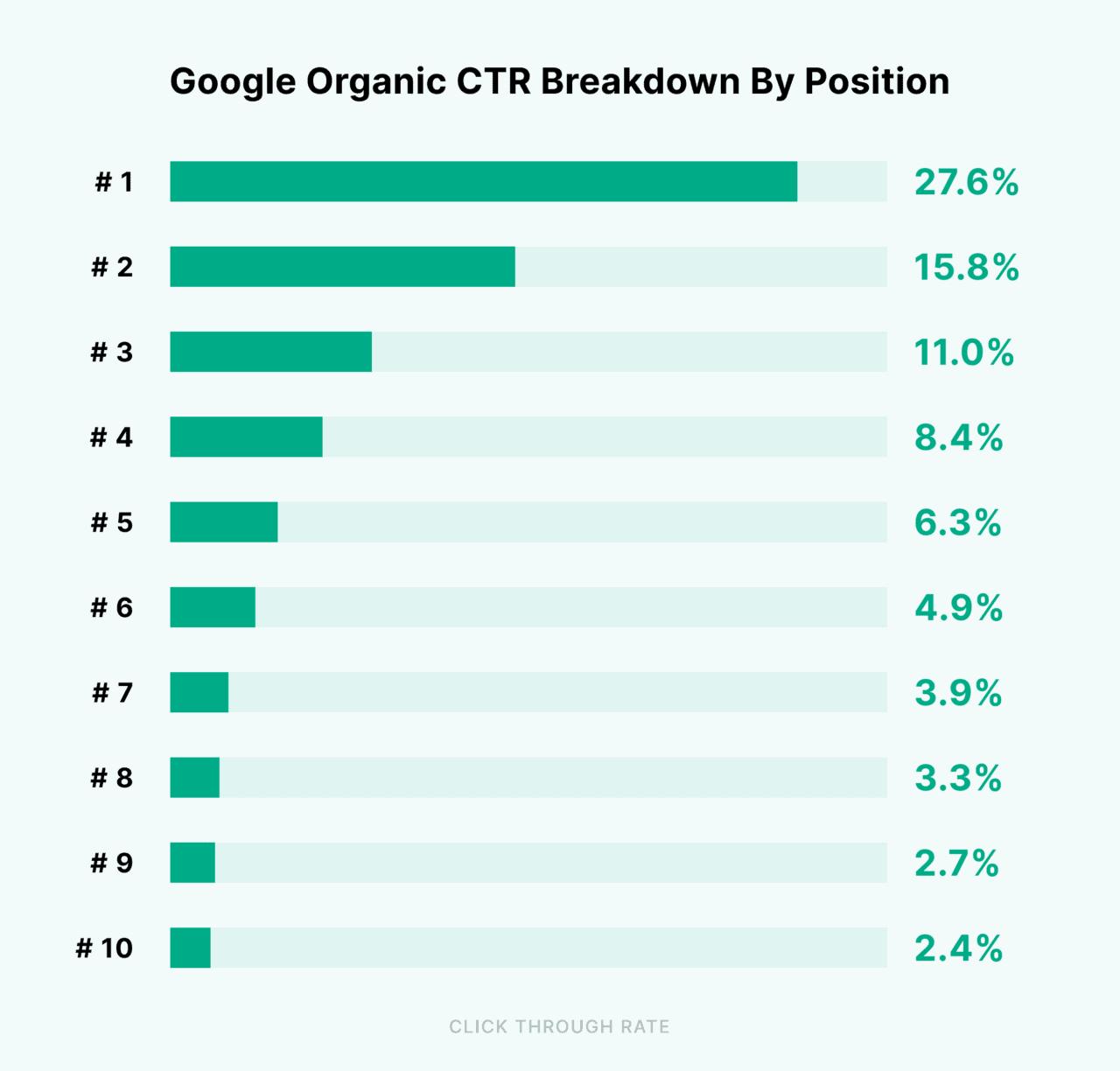
According to Backlinko, moving up one position in search engine ranking increases your CTR by more than 32%. You make that happen by optimizing your site for search engines — or doing SEO, as digital marketers say.
SEO improves your website’s design, structure, and content to impress search engine algorithms. If search engines like Google see your site as a relevant and high-quality match for a search term, they’ll put your business higher on the SERP.
To improve your SEO, start by working on one of the following key elements:
- Keyword optimization: Make sure your content includes the words and phrases you want that page to rank for on the SERP.
- Organization: Each page should have a clear title, and pages with multiple sections should have headers to organize them.
- Mobile-friendliness: Your content should be accessible and responsive on mobile devices.
- Variety: Provide both text-based and visual content.
- Functionality: Pages should load quickly, and all links should work.
Make sure to connect your website to your Constant Contact account so you can track your SEO success. SEO often takes time to show results, so be patient!
Content marketing
Like SEO, content marketing is an essential element of online marketing for small business. It engages audiences who might not already know about your business — people at the top of the sales funnel, to use a popular marketing term.
Content builds relationships by offering valuable information without pushing a sale. While ads go straight for the pitch, content eases people into the relationship by helping them and providing a good user experience before asking them to buy.
How to craft high-quality content
Google identifies quality content as “helpful, reliable, [and] people-first.” That means the content does all of the following:
- Provides original information or analysis
- Offers a comprehensive view of the topic
- Adds value to any content it draws from
- Organizes data into sections with descriptive headings
- Aims to be error-free and well-written
- Includes the input of subject matter experts
For best results, use this checklist on every project in your content strategy.
Social media marketing
Social media is an essential component of online marketing for small businesses. More than 80% of the U.S. population have accounts on at least one platform, and the average user visits 6.7 different social platforms per month.
Social media marketing gives you two effective ways to reach those audiences. One is to create an account on your chosen social media channel and post for free. Marketers call this organic social to distinguish it from paid advertising.
The second is paid social media advertising, which lets you promote your business to broader audiences. You create an ad and specify the user groups you want to target. For example, if you have a child care center in Cleveland, you might tell Facebook to show your ad to parents of children ages 0 to 5 in that area.
Whether you choose organic social or paid advertising, you can follow the same social media marketing tips for small businesses. For example:
- Create a content calendar. Decide in advance what you want to post and where so you don’t repeat yourself or miss a topic.
- Interact with your followers. Social media is a place to build relationships with your audience. Encourage people to comment and respond to what they say.
- Use analytics to guide your strategy. Major channels such as Instagram and Facebook give you metrics to guide your posts’ success. Monitor and analyze them so you can do more of what works.
- Dedicate time to social media management. Block off time every week to develop content, respond to comments, and check results.
The last thing to consider before you start is how often to post on social media. Consistency is vital, so don’t spread yourself too thin. Start with one social media channel and establish a regular schedule. Then, expand when you can.
Email marketing
When it comes to keeping in touch with existing audiences, you can’t beat email marketing for small businesses. It lets you create personalized content for different segments of your audience so each person feels a genuine connection with your business.
With tools such as Constant Contact, it’s easy to divide your audience into groups based on their needs and preferences. From there, you can develop customized campaigns that feel personal to every recipient.
Relevant, personalized emails keep your business top-of-mind with your audiences and reinforce your business as an industry expert. They’re also an effective channel for publicizing promotions and sales, sharing company news, and increasing demand for your products.
You don’t need any experience to get started with email marketing. All you need is a list of contacts, an engaging message template, and something to say. As with social media, analytics will help you improve your messages over time.
Pay-per-click advertising (PPC)
Pay-per-click (PPC) advertising, also known as search marketing, is a cost-efficient way for small businesses to advertise. Instead of paying a large lump sum upfront as you would for TV or billboard advertising, you pay a small amount every time someone clicks on your ad.
Let’s focus on Google, where most search advertising happens. Google displays ads at the top of a SERP so users see those results before the organic listings.
When advertising on Google, you choose the keywords you want to bid on. If someone searches using those keywords, Google compares your ad with others bidding on the same terms. Relevant ads with high-quality landing pages have the best chance of “winning” the bid and appearing on the SERP.
Keyword selection is also crucial when you’re doing PPC for small business. Relevant keywords help you get more clicks and improve your conversion rates.
Influencer marketing
Influencer marketing is one of the most overlooked strategies in digital marketing for small businesses. It’s easy to think of them as too expensive or out of reach, but there are influencers out there for any size business.
Micro-influencers — those with between 1,000 and 100,000 followers — are often the best fit for small businesses. They reach enough people to be worth the effort, but not so many that your message will get lost in the noise.
Micro-influencers tend to have niche followings, which is excellent for smaller businesses. They’ll promote your brand to people who already trust them. Plus, if you choose the right influencer, their following will closely match what you offer.
How to build relationships with influencers
The right match is critical to a successful influencer strategy. If you’re on social media, look for posts that promote products or services. Someone you follow might be an influencer without you even knowing! Here’s one example:
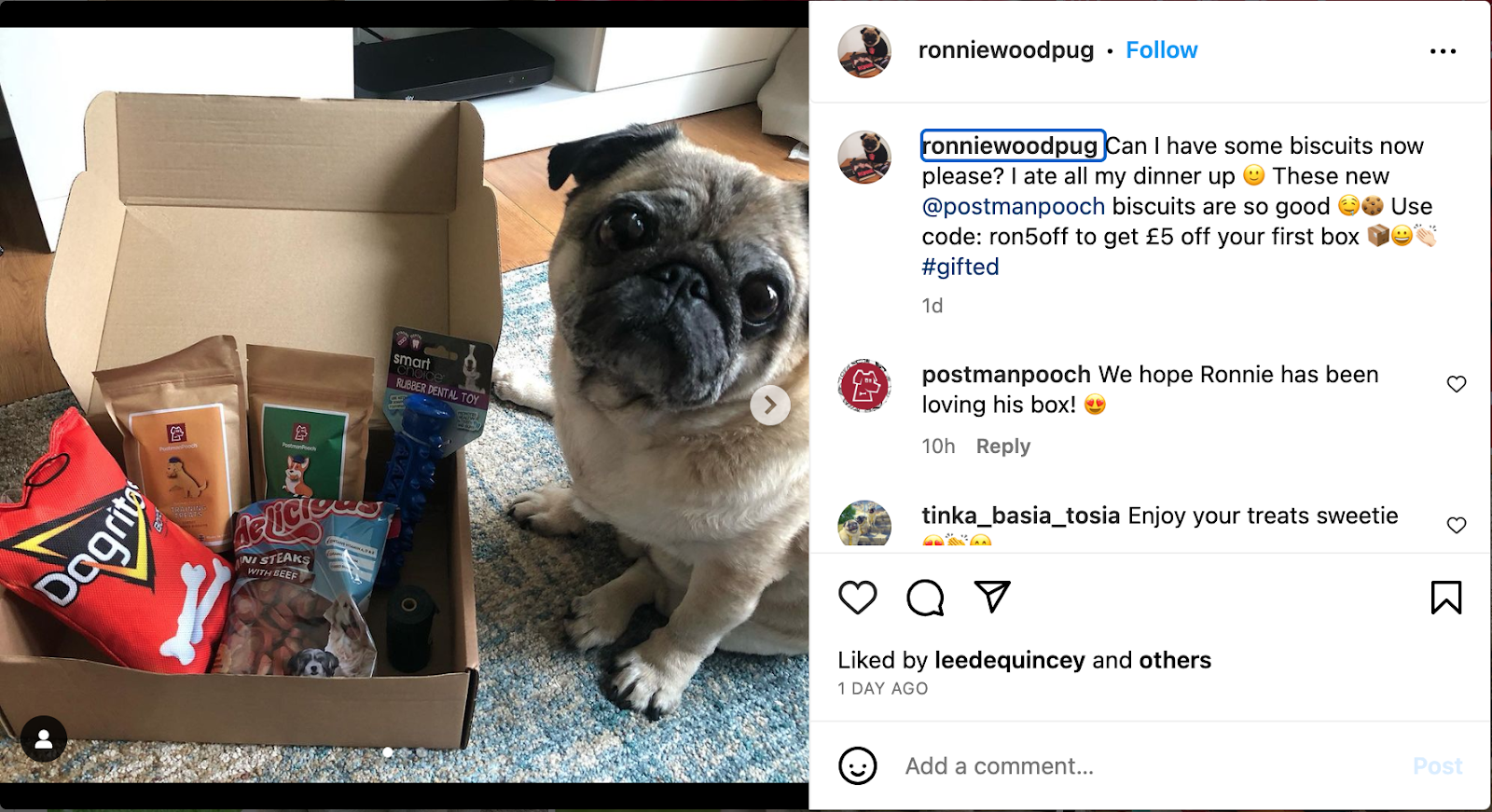
If you find an influencer that could be a good match, reach out. Ask how they do brand partnerships. Some expect payment, while others do product or service exchanges.
Online listings
Online listings are an essential part of local marketing for small businesses. People use them to search for a nearby business or browse customer reviews for a place they’ve heard about.
One popular example is Google Business Profile, which integrates into SERPs. If you Google something related to a local business, such as “coffee shops near me,” the first results you’ll see will be listings like these:
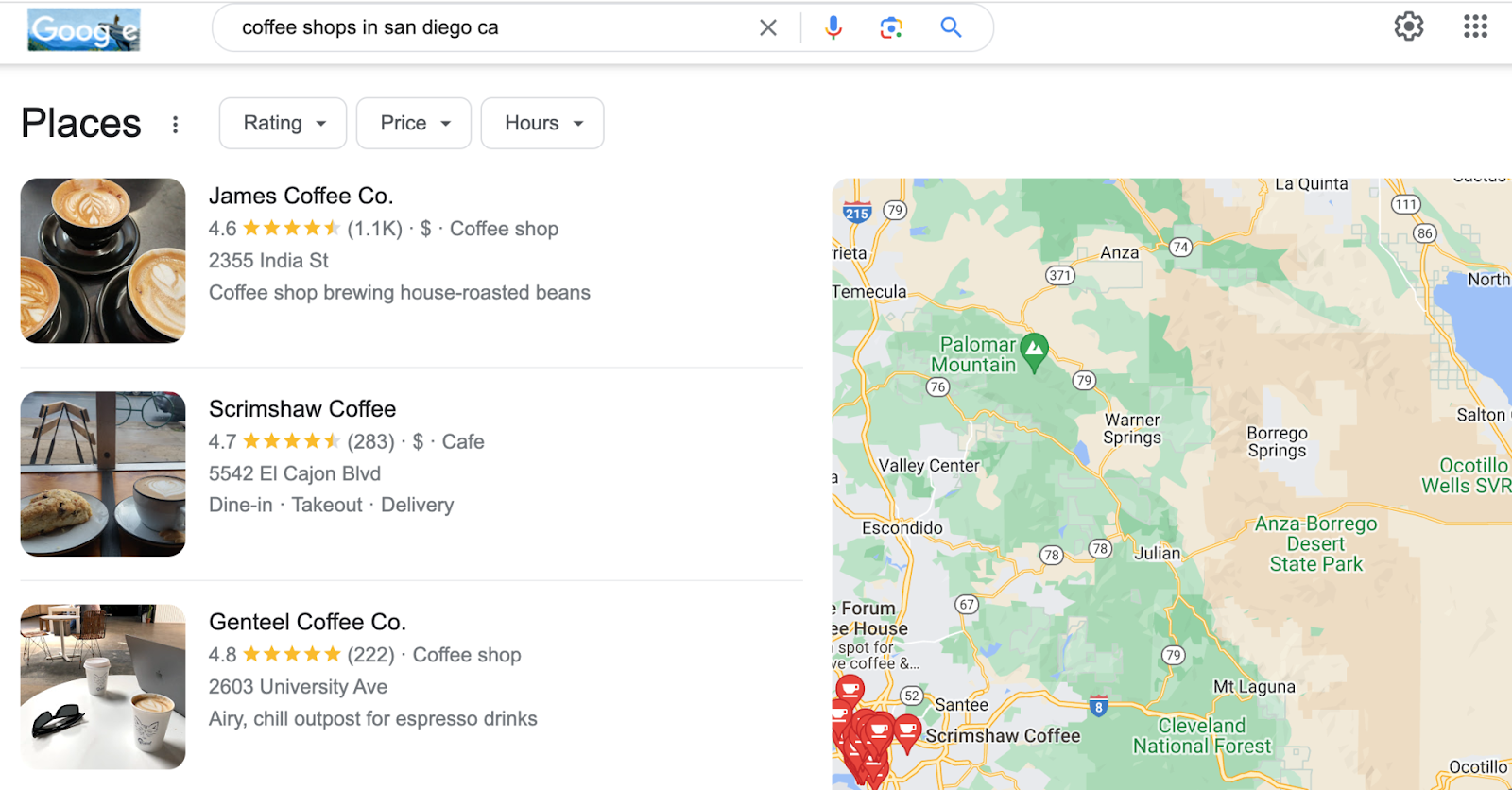
Google is the best place to start building a profile. According to BrightLocal, 87% of consumers go there to check out local businesses. Once that’s complete, you can move on to other popular sites, such as Yelp or Yellowpages.com.
Finally, set aside time for online listing management. That includes keeping your information up-to-date and responding to reviews. BrightLocal also pointed out that 88% of consumers are likelier to choose a business if they respond to all reviews.
Budget-friendly tips for small businesses
Internet marketing for a local business can feel expensive. When that’s the case, consider these budget-friendly ways to do online marketing for small business.
Partner with other businesses
Chances are, you’re not the only local business that wants to market on a budget. An exciting solution is finding a non-competing but related company and launching a joint campaign.
For example, a roofing company might create an arrangement with a general contractor or gutter cleaning company. A hair salon might partner with a wedding planner or dress shop.
Once you have your partnership, discuss how you want to promote each other. You might set up a referral arrangement, mention each other in your email newsletters, or link to each other in blog posts.
Host events and workshops
Running a workshop, seminar, or other special event lets you offer value and build face-to-face relationships at a low cost.
If you have a brick-and-mortar presence, on-site events are the perfect way to meet your community and get people in the door. If not, online events serve the same purpose and offer a wide reach.
Think about topics that interest your target audience. Consider how you could teach that topic in a way that generates interest in your services without being overly promotional.
Offer discounts and promotions
Combining promotions with no- or low-cost digital marketing, such as organic social and SEO, is a fantastic way to get more from your online business marketing. The key is to offer discounts related to your goals so the business you earn will far outweigh any minor cuts to your profit margins.
For example, if your goal is to attract new business, create a coupon code for 10% off first-time orders. Or, if you’re trying to grow your audience, send the code when people sign up to receive messages. You can promote the code online, including your website and social media accounts.
Get started on boosting your online presence
By now, you’ve heard about 10 different ways to do online marketing for small business. You’ve learned about SEO, social media, content marketing, and more. You’ve even collected some strategies for keeping your budget under control.
Now comes the exciting part: getting it off the ground.
First, ensure you have the five online marketing tools you need to run campaigns. That includes a website, primary social account, up-to-date listings, and a way to send email.
Next, get your guide to online marketing essentials. This guide offers a more detailed description of the elements you’ve learned about, plus actionable tips to help you get started.
You don’t have to do it all at once! Start with one strategy — perhaps a blog to boost your SEO or your first PPC campaign. Launch it and see how it performs, then tweak it to see if you can do even better.
Before long, you’ll be ready to move on to the next type of small business online marketing.
You may have heard that it’s much more expensive to acquire a new customer than it is to retain an existing one — and numbers don’t lie. It costs between five to 10 times more to bring in a new customer than to sell to a current customer. Because of this, companies are highly incentivized to foster brand loyalty. Retaining existing customers is much more cost-effective and offers an excellent return on investment.
One of the most popular methods to generate brand loyalty is offering a loyalty program to your customers. Implementing or enhancing a loyalty program will help boost your customer retention and business growth.
Understanding loyalty programs
So, what are customer loyalty programs? A loyalty program is when businesses offer their existing customers incentives like discounts and free products to encourage them to make another purchase. There are many different forms of loyalty programs, but points-based programs are the most common.
Whatever form they take, the main goal of customer loyalty programs is to enhance customer retention as part of lifecycle marketing. These programs make it more appealing to shop with your business and less beneficial to buy from your competitors to improve customer retention.
If a customer can buy the same exact product for the same price from Companies A and B, but Company B also offers a free gift with purchase through its loyalty program, the customer will naturally buy from Company B.
The psychology behind loyalty programs
Loyalty programs tap into the psychology of customers to help companies retain their business. For one thing, they offer positive reinforcement in the form of a reward for customers who purchase from your business. Over time, this positive reinforcement creates a habit of buying from your brand over competitors.
Loyalty programs also emphasize loss aversion — people’s inclination to avoid loss or FOMO (fear of missing out). If a customer buys from another company, they won’t get the benefits of the loyalty program. Loss aversion convinces them to shop with your business to avoid missing out.
Keep these psychological factors in mind when building your own loyalty program, and don’t forget the three R’s. What are the 3 R’s of loyalty programs? They are rewards, relevance, and recognition.
- Rewards: Your loyalty program must offer customers rewards that have genuine value. Discounts, points, free products, or special offers all make great rewards.
- Relevance: The rewards must also be relevant to the customer receiving them. Offering free baby food to customers who aren’t parents, for example, won’t make an effective loyalty program — but offering those rewards to new parents will.
- Recognition: A great loyalty program recognizes and rewards a business’s best customers instead of treating them as just numbers.
The benefits of loyalty programs
Fostering brand loyalty benefits both brands and their customers. With a strong loyalty program in place, customers get rewards for their shopping, and brands get more return business. So, what are the three benefits of loyalty?
- Improving retention, reducing churn, and strengthening brand affinity
One of the best things you can do for your business is improve your customer retention. Loyalty programs help accomplish that goal.
Offering rewards through a loyalty program encourages customers to keep choosing your business over competitors. Rewards make shopping from your brand more appealing because customers get additional value beyond the products or services they buy.
With a strong program, your customers are more likely to prioritize your brand, thus improving customer retention and reducing churn (the percentage of customers who stop shopping from your business after a given period).
- Boosting revenue and customer lifetime value
Improving customer retention boosts your average customer lifetime value (CLV) and total revenue. Customer lifetime value is the total amount a given customer spends on purchases from your business over the life of the relationship.
Loyalty programs entice customers to keep making purchases at your company, boosting CLV. As CLV increases, so does revenue.
- Turning customers into brand advocates and motivating consumer behavior
Loyalty programs focus on customer retention, but they can help you generate leads and acquire new customers as well. An excellent loyalty program excites customers and makes them more likely to talk positively about your brand to their friends and family. When you pair a loyalty program with referral bonuses, customers are even more inclined to act as brand advocates and help bring in new customers for your brand.
Offering rewards gives customers more motivation to do specific actions, like:
- Make purchases
- Refer to friends and family
- Engage with your brand
This is boosted when you offer exclusive access, perks, and personalized experiences that otherwise would not be available. With the right rewards, you can shape customer behavior in your brand’s favor.
Types of loyalty programs
When you create your own loyalty program, there are many different structures you can use. Here are some of the top types of loyalty rewards programs:
Points-based loyalty programs
Points-based loyalty programs are the most common form of enterprise loyalty programs. In these programs, customers earn reward points for repeat purchases or otherwise being loyal customers of your brand. The customers can then redeem their points for rewards like:
- Free products
- Discounts
- Special offers
- Cashback
These programs are so popular because they are inherently flexible. They include multiple ways to earn and spend points and allow customers to personalize their own rewards.
Tiered loyalty programs
Tiered loyalty programs rank customers into different groups and provide them with rewards based on those tiers. Typically, companies using these programs rank customers according to the total amount spent at the business, years as a customer, engagement level, or other key metrics. As customers rise through the tiers, they obtain more exclusive, valuable rewards.
Some loyalty program examples that fit the tiered model include American Express’s loyalty program, Elf’s Beauty Squad program, and the Hyatt Hotels loyalty program.
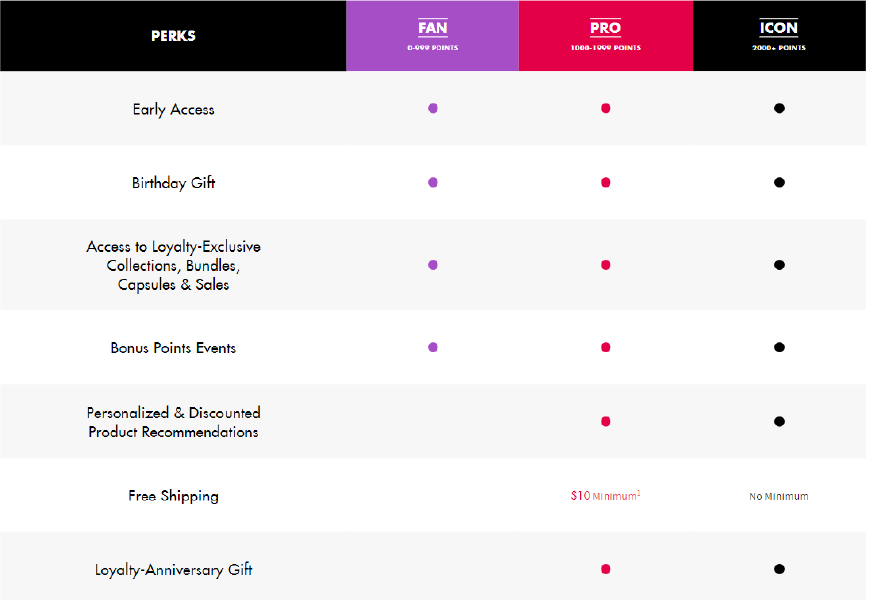
Paid loyalty programs
Sometimes, the rewards from a loyalty program don’t automatically come free with a repeat customer’s purchase. In paid loyalty programs, customers pay a participation fee to access the program’s benefits.
Amazon Prime is one of the most popular loyalty programs and has been hugely successful for the company, with over 200 million members.
Value-based loyalty programs
Instead of tangible rewards like freebies, some loyalty programs offer customers rewards in line with their values. Value-based loyalty programs persuade customers to buy from your business because you’ll donate to a charity that aligns with their values with each purchase. These may also be known as mission-based and community programs.
The shoe company TOMS has gained company loyalty over the last nearly 20 years since they
began their One for One model. In this program, for each pair of shoes a customer buys, they give away another pair. Customers like knowing their dollars go to more than just the company — and they go back into a community or a larger mission.
Points-based programs also combine well with value-based loyalty programs. You can give customers points with each purchase and then allow them to cash out those points to a charity of their choice. These programs don’t directly benefit the customer making the purchase, but they do benefit society in a way that’s meaningful to the consumer.
Refer-a-friend programs
Many brands employ programs that not only reward customers for making additional purchases but also for recommending the brand to their friends and family. In a refer-a-friend program, the customer receives some reward — typically a discount or cashback — every time they refer someone to the business.
Airbnb, for example, offers customers a travel credit every time they refer a new member to the site. For an added incentive, the new member also gets a free credit upon signup.
Examples of successful loyalty programs
Many businesses have loyalty programs in place, but they aren’t all equally successful. So, what is the best example of a loyalty program? Here are some examples you use for inspiration:
Starbucks
The coffee giant has an incredibly effective loyalty program that keeps customers coming back for more. With every Starbucks purchase made on the app, customers earn loyalty stars to redeem for free products like food, drinks, and merchandise. The app makes accumulating points easy and accessible for customers, two features of any successful loyalty program.
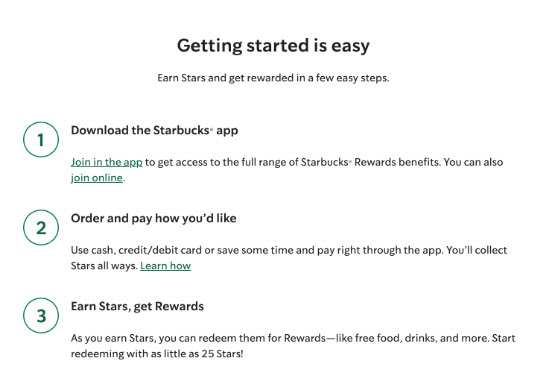
Sephora Beauty Insider
Sephora also has a points-based program, but it’s a hybrid-tiered one. The more customers spend at Sephora, the more points they earn and the higher tier they reach. At the highest rewards tier, customers get bigger discounts and gain invites to exclusive events. Customers can cash out their points for beauty product samples or other merchandise.
Part of what makes Sephora’s program special is that program members become part of Sephora’s Beauty Insider Community. Customers share advice and tips within this community and talk about their favorite products. The community helps foster an emotional connection to the brand, which is one powerful strategy to improve customer retention.
Creating your loyalty program
Understanding the different loyalty programs is just step one to creating your own. Consider these factors when developing your loyalty program for small business or large enterprise:
- Determine your goals: A key step when developing any program is to think about your goals. Do you want to increase customer retention across the board? Is it your goal to raise the average order value? Tailor your program according to the specific business metrics you want to impact.
- Consider your industry: Different industries are suited to different types of loyalty programs. A referral program is ideal for low-frequency purchases like large furniture and appliances, while points-based programs are better for retail businesses with high purchase frequencies like coffee shops.
- Understand your customers: Your program must address your customers’ needs and wants to be effective. Make sure you offer rewards that appeal to them.
- Market your program: There’s no benefit to having a rewards program that no one knows about. Raise awareness of your program through email marketing campaigns and other marketing channels.
Metrics and success measurement
It’s essential to measure the success of your loyalty program to ensure it works as intended. Track the following metrics to understand the success of your program:
- Retention rate: The percentage of customers who stick with your business over a given timeframe
- Reward redemption rate: The percentage of rewards customers are redeeming through the program
- Churn rate: The percentage of customers leaving the loyalty program over a given period
In addition to monitoring these KPIs, you should also track the:
- Cost of your program
- Return on investment (ROI)
- Program’s engagement rate
If the cost gets too high relative to your returns, you may need to change some details about your program.
Challenges and solutions
You may encounter some pitfalls when implementing or improving your loyalty program. For example, some customers may have unrealistic expectations of the kinds of rewards they’ll receive through the program.
To counter this issue, make sure you clearly communicate the program terms and what’s available to participating customers. You don’t want to mislead the customers about your loyalty program — that will backfire and drive customers to your competition.
Another issue some brands have with loyalty programs is a lack of clarity about the program’s performance. Even if you have access to data about the program, you still need to analyze that data and find actionable insights.
Loyalty program software can eliminate this issue. These software programs often include a dashboard that clearly shows the data about how effectively your program works and if anything needs improvement.
Implementing loyalty programs with technology
Today, the right software makes it easy to implement and run a successful loyalty program. This software tracks customer purchase data and automatically issues customers rewards according to the program details. Some of the software options also track other customer data to better offer personalized offers and rewards in the programs, making them more effective.
Examples of this software include Loyalzoo, a points loyalty program ideal for restaurants, and Loyalty Gator, which is geared toward businesses with physical locations.
You can also use other marketing software to increase the success of your loyalty rewards program. Email marketing software like Constant Contact, for example, includes tools that help you promote your loyalty program through effective, easy-to-create emails. Constant Contact even allows you to automate email messages, such as when a customer is eligible for a new reward! Reach out to Constant Contact to learn more about improving your email marketing efforts.
Conclusion: the future of loyalty programs
Loyalty programs have changed over the years, but they remain one of the best strategies to boost customer engagement and retention. In the future, expect brands to put even more emphasis on customer data and personalization to make their programs stand out. And don’t miss out on the growth opportunities you can gain with your own brand loyalty program.

Your business needs a steady stream of new leads to grow and stay ahead of the competition. In an ideal world, leads would magically appear at your door, ready to buy your products and services. But before your business goes viral (fingers crossed), you’ll have to put in the work to attract and nurture potential customers.
Focusing on marketing qualified leads (MQLs) can help you use your resources wisely. An MQL is a prospect who has already shown interest in your brand. Maybe they’ve shared your content on social media or come to one of your webinars. Or perhaps they’ve visited your website several times but haven’t bought anything yet. These actions suggest these leads are more likely to become customers than those who haven’t shown interest.
There are many benefits of harnessing MQLs for your business. Read on to learn how to identify and convert MQLs. You’ll also discover common challenges you may encounter and tools to manage this type of lead.
Introduction to marketing qualified leads (MQLs)
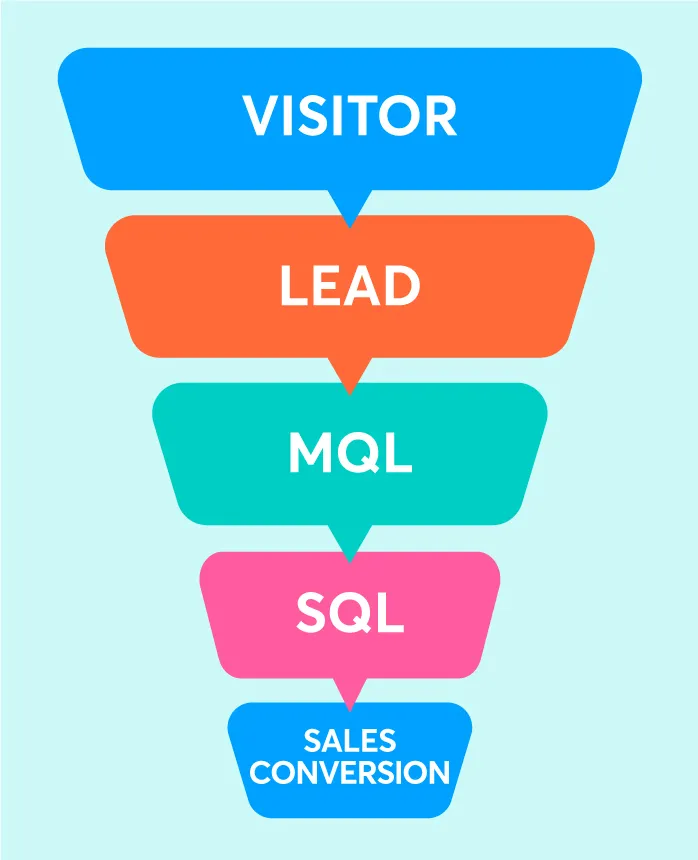
Potential customers move through a few stages before they become buyers. First, they learn about your brand through your website, social media, or another channel. Then, the prospects that fit your customer profile might consider becoming a client. Marketing experts refer to these people as qualified leads.
What is the marketing qualified lead stage? Marketing qualified leads take the next step in the buyer’s journey. These show interest in your brand with marketing engagement. This behavior suggests they’re almost — but not quite — ready to buy your products or services. As a result, MQLs are typically easier to convert to paying customers than generic leads.
Here are a few ways that MQLs can interact with your brand:
- Attend a virtual event
- Click an Instagram ad for your products
- Download an ebook
- Sign up for your newsletter
Some companies also track marketing accepted leads (MALs). This term refers to prospects who meet the minimum criteria your marketing team sets. For example, they may fit your ideal demographics or visit your website.
What is the difference between MQL and MAL? Unlike MQLs, MALs haven’t taken concrete actions to engage with your brand. That means you’ll probably need to nurture them more before they buy anything.
Benefits of MQLS for B2B companies
MQLs are vital in lead generation for business-to-business (B2B) companies. Here are three benefits of including these prospects in your marketing strategy:
- Increased efficiency: Target MQLs to streamline your marketing and sales processes. These prospects have already learned about your brand and expressed interest. That means you won’t have to spend as much time and energy converting them as you would if you started with cold leads.
- Improved collaboration: Your marketing and sales teams can work together to identify and nurture MQLs. This collaboration allows them to share resources and focus their combined efforts on the most promising leads.
- More impactful content marketing: MQLs help you learn more about your target audience’s interests and goals. You can analyze how they engage with your content to see which materials resonate most. This information lets you create more relevant and valuable content for your audience.
Developing a shared definition of MQL
Several departments often collaborate to nurture MQLs. If you ask different departments, “What type of leads are MQL?” the definition may vary depending on who answers. Creating a shared definition ensures that everyone targets the same types of leads. Otherwise, you might waste time on unqualified leads or work toward different goals.
Ask your teams to share their insights about qualified leads. Each department can list the traits they associate with these prospects, such as:
- Authority
- Behavior
- Budget
- Demographics
- Engagement
- Industry
- Level of urgency
- Pain points
- Timing
Discuss each of these criteria to create a standard definition of MQLs. For example, the marketing department might focus on engagement with content. Meanwhile, the sales department could insist that MQLs have decision-making authority. Draw on each team’s expertise to create the most comprehensive definition.
Identifying and qualifying MQLs
How can you tell the difference between marketing qualified leads and regular leads? Follow these simple steps to identify and qualify MQLs efficiently.
Understanding MQL vs. SQL
You may be wondering, “What is an MQL and SQL?”
It’s important to distinguish between MQLs and Sales Qualified Leads (SQLs). SQLs are at a more advanced stage of the buyer’s journey than MQLs. You’ve already nurtured these leads enough, so you don’t need to spend more time marketing your brand to them. Instead, they’re ready to engage with your sales team and take the final steps to become paying customers.
You can convert an MQL to SQL if you nurture the relationship sufficiently. Understanding the difference between these stages will help you transition leads between your marketing and sales funnels.
The buyer persona’s role in identifying MQLs
A buyer’s persona represents your target audience. This character has your ideal customer’s behaviors, characteristics, and pain points.
Suppose your company sells custom coffee mugs. One of your buyer personas could be Sustainability Sarah. She’s a thirty-year-old small business owner who wants to buy mugs with her company logo. She has a tight budget but prefers ethical and environmentally friendly products.
Buyer personas can help you define and identify MQLs. You can use these profiles to score leads and determine how likely they will convert. For instance, you could focus on millennial female customers who want affordable, environmentally friendly mugs. Buyer personas also let you tailor content more effectively and attract more MQLs.
Anecdotal feedback from sales and its importance
Your sales team is one of your most valuable assets for MQLs. After all, they typically have the most direct interaction with leads. This engagement allows them to understand their goals, needs, and preferences. Sales representatives also know which leads they can convert the fastest.
Consult your sales department as you develop marketing qualified lead criteria. Their insights will help you focus on the most valuable leads and align your marketing and sales. That way, you won’t waste time on bad leads.
Using firmographic and demographic qualification factors
Many companies gather firmographic and demographic data about their customers. This information can help you identify MQLs you may have overlooked. You can also use the data to score leads during the qualification process.
Consider this firmographic data when selecting MQLs:
- Budget
- Company size
- Industry
- Number of clients
- Revenue
This demographic data can also help B2B companies identify MQLs:
- Age
- Authority
- Department
- Geographic location
- Job title
Behavioral criteria for MQL qualification
MQLs stand out from other leads because they engage with your brand. However, not all engagement is equal. Behavioral data helps you identify the types of interactions that predict sales. You can use these insights to identify and focus on your most valuable leads.
Here are a few examples of behavioral data used to classify leads:
- Event attendance
- Marketing emails open rates
- Number of web pages visited
- Social media likes
- Downloaded content
- Newsletter subscriptions
Setting and forecasting MQL delivery targets
You don’t want to overwhelm your sales team with an avalanche of MQLs. But you also don’t want to waste your lead generation efforts because you fall short on enough MQLs to meet your sales goals.
Collaborate with your marketing and sales teams to set realistic targets. It may be helpful to initially define MQLs narrowly and start with a small pool of leads. As you ramp up your marketing efforts, you can expand this definition to generate more leads.
Adjusting MQL criteria and definitions over time
Your business and customers evolve due to changing market dynamics and other factors. Revisit your MQL criteria every quarter to make sure you target appropriate leads. Don’t be afraid to adjust your definition as your business goals or customer needs change.
Calculating and tracking MQLs
Analytics tools allow you to assess and track MQLs. You can use this technology to check how your marketing campaigns perform.
Many companies use marketing automation tools to track engagement. This technology monitors click-through rates, social media follows, and other interactions. You can also use predictive analytics software to forecast which leads will convert. This data can help you identify MQLs and improve lead generation.
Your marketing and sales teams should use the same methods to track MQLs and SQLs. This shared process will help you measure and optimize MQL to SQL conversions.
Examples and actions recognized as MQLs
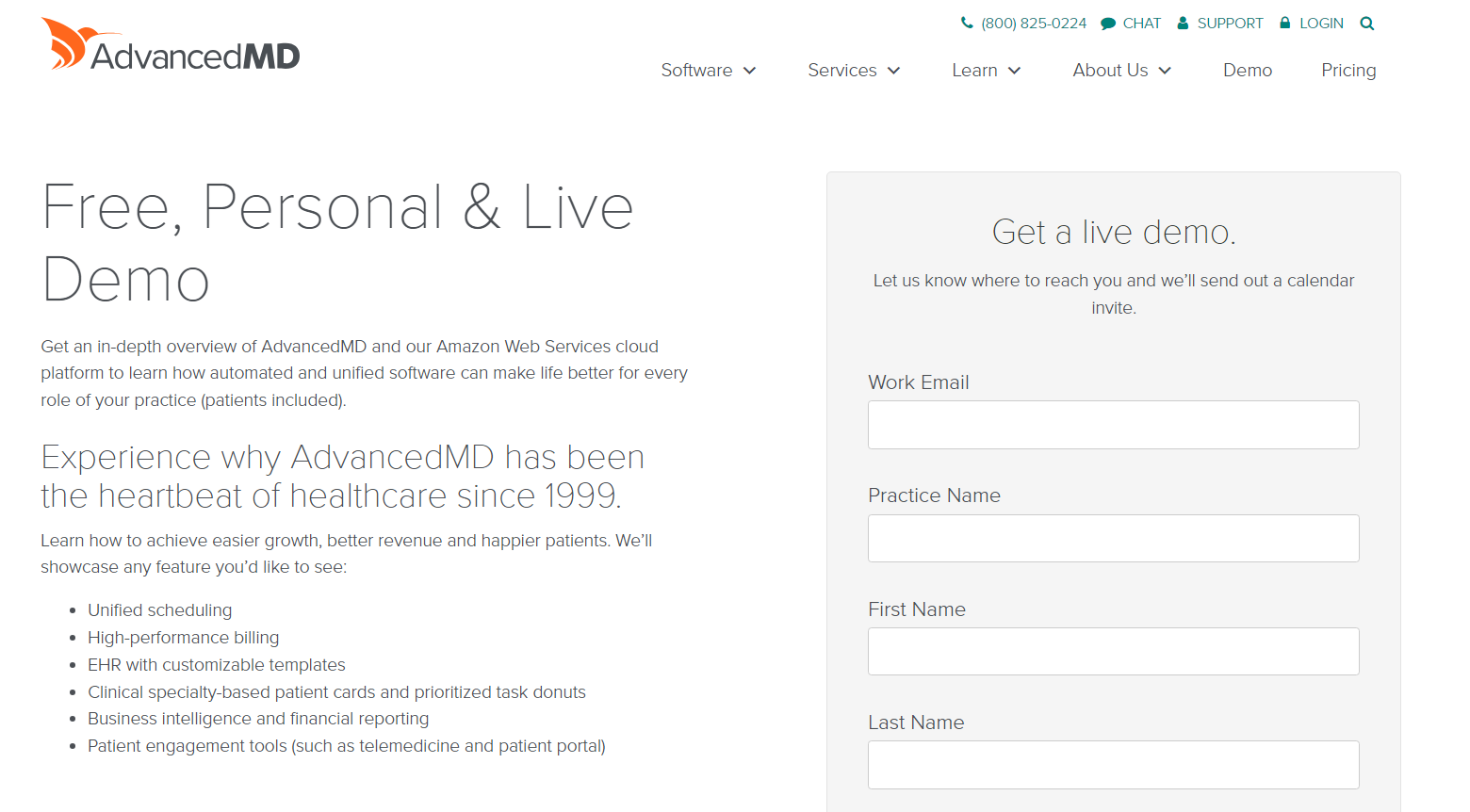
B2B companies use many strategies to attract and track MQLs. For example, consider the electronic health record company AdvancedMD. The company’s website gives leads several ways to engage with its content. Visitors can:
- Download a product flier
- Talk to a chatbot
- Request a free demo
AdvancedMD can use these digital touchpoints to identify MQLs and nurture these leads.
Here are a few more examples of MQL behavior:
- Download case studies and reports
- Share content on social media
- Complete a survey
- Click on links in your emails
- Register for a webinar
Setting criteria for marketing qualified leads
Establishing robust MQL criteria ensures you focus on the most promising leads. To start, collect data on your paying customers and how they engage with your brand. For example, you can use web analytics tools to track how clients use your website. You could also create surveys to learn why customers chose your business.
This information lets you identify common behaviors and traits associated with conversions. Your marketing and sales teams can use these insights to create a shared definition of MQLs.
You should also use metrics to measure the impact of your MQL strategies. Key performance indicators may include:
- Number of content downloads
- Cost per MQL
- Event attendance
- Lead-to-sale conversion rates
- Lifetime value
- Website visit duration
These metrics can help you refine your MQL performance over time. Say you notice that you have a high cost per MQL that outweighs the lifetime value. You could try new methods to reduce this cost, such as using more affordable marketing channels.
Challenges in MQL identification and conversion
It’s normal to experience challenges when you try a new marketing strategy. Many businesses struggle to align their MQL criteria with their goals. However, this misalignment can cause your marketing team to generate too many low-quality leads. Clear criteria for your target customer profile to overcome this obstacle.
Some companies also have unrealistic sales expectations, which can lead to disappointment. Use industry benchmarks to set reasonable goals. It’s also important to focus on quality over quantity. Remember, you’re building lasting relationships with potential customers, not trying to win a numbers game.
Using tools and software to manage MQLs
Technology can help you manage and track MQLs. Many companies use customer relationship management (CRM) systems to handle these tasks.
Constant Contact’s lead generation and CRM platform makes it easy to oversee MQLs. This solution allows you to score leads and nurture them with personalized content. Plus, you can measure your performance with built-in analytics tools.
With Constant Contact, you can also use marketing automation to nurture leads toward a sale. For instance, you can schedule regular messages to email leads to share information about your brand.
Improving MQL strategies
Demand generation strategies help you convert more people from cold leads and attract more MQLs. These methods aim to increase awareness and buzz for your brand.
Popular demand generation strategies include:
- Establishing robust content marketing
- Developing referral programs
- Marketing your brand on social media platforms
- Offering lead magnets
- Organizing conferences and webinars
- Investing in paid advertisements
Convert leads and drive sales with MQLs
Marketing qualified leads can streamline the B2B sales funnel. These leads have already interacted with your brand to express interest. That means they’re typically easier to convert to sales than cold leads. Prioritizing MQLs can increase revenue and efficiency, leading to huge gains for your company.
Get started by defining MQLs for your business and establishing clear criteria. Consider focusing on a handful of high-quality MQLs at first. As you refine your strategy, you can expand your criteria until you have a steady stream of MQLs.
It’s natural for your goals and dreams to evolve as you grow. You might have felt thrilled to land an internship at the beginning of your career. As you gain experience, you may set your sights on senior leadership roles. This ambition can drive you to reach goals you may have never thought possible.
Companies often have similar journeys. New businesses typically focus on selling products in their local area or niche. As they expand, they target bigger clients and diversify their offerings. Enterprise marketing can help you scale your business and effectively make this transition.
Enterprise marketing involves promoting your brand to large companies with many employees. Landing these big clients can help you expand your business and boost revenue. However, enterprise marketing requires strategies different from regular marketing.
This guide explores enterprise marketing techniques and tools to help you scale your business. We also discuss common challenges and best practices to overcome them.
Introduction to enterprise marketing
Enterprise marketing is the promotion of products and services to enterprise-level organizations.
Enterprise businesses typically share these traits:
- Hundreds of employees
- Many locations
- May operate on a global scale
- Generate $50 million or more in revenue
- Large budgets
- Overseen by a board of directors
Enterprise marketing is a bit more complicated than traditional marketing. Large companies have more complex decision-making processes than their smaller counterparts. Instead of impressing a single client, you must win over many stakeholders. These leads often have different priorities you’ll need to address in your marketing.
Enterprises typically have longer sales cycles than smaller companies. It takes time to nurture leads in different departments and understand their concerns. The process of negotiating deals and passing compliance checks can also take months. In other words, expect your enterprise marketing efforts will take time before you get tangible results.
But don’t get discouraged. Big companies often have large budgets and want to partner with reliable suppliers. That means your business has plenty of opportunities to grow and thrive. Enterprise marketing also lets you focus on a handful of high-value clients. This process is more efficient than marketing to hundreds of smaller clients.
Common challenges in enterprise marketing
Businesses of all sizes often face challenges in enterprise marketing. But you can overcome these hurdles with the right knowledge and tools.
Resource allocation
Resource allocation is one of the most common obstacles to encounter. It can be expensive to fund enterprise marketing campaigns. You may need resources like:
- Marketing automation software
- Data analytics platforms
- Other tools
Plus, enterprise marketing often requires more staff than traditional methods. These costs can add up quickly.
Executive buy-in can help you overcome this obstacle. Leaders who understand enterprise marketing are more likely to offer financial support. Small businesses can also use technology to conserve limited resources. For instance, artificial intelligence (AI) tools can help you brainstorm content, saving time.
Collaboration across departments
Some companies also struggle to collaborate effectively across departments. For example, your marketing and sales teams may have different goals or messages. This lack of teamwork can make it challenging to organize complex marketing campaigns. To solve this issue, create cross-departmental teams with shared goals.
Program management in a large-scale environment
Even the most experienced marketers can feel overwhelmed by enterprise marketing. You may need to juggle several leads, channels, and teams at once.
Project management techniques can help you stay organized. Create detailed marketing plans for every potential client. These plans should include goals, timelines, resources, and other information. You can also use technology to improve communication and collaboration. Platforms like Slack and Microsoft Teams make it easy for teams to stay in touch.
Vendor relationship management
Many companies rely on vendors for supplies and services. You can run into roadblocks if you don’t manage these relationships efficiently.
Say you agree to sell an enterprise a thousand custom office chairs. You won’t be able to fill this order if you can’t get enough fabric from your vendor.
Clear communication with your vendors can help you avoid this problem. Keep them in the loop about your enterprise marketing goals and timelines. That way, they can set aside resources to meet your needs. Vendor relationship management software also lets you organize documents and track performance.
Communication silos
Enterprise marketing often requires several departments to work together. You can run into trouble if these teams don’t share information effectively. Suppose your sales team has identified a few enterprises that fit your buyer persona. Your marketing team can’t target these leads if the sales team doesn’t communicate.
To overcome this hurdle, organize regular meetings between departments. Encourage teams to share data and work together to nurture leads. It’s also helpful to use customer relationship management software. This technology lets everyone access information about leads in one place.
Strategic enterprise marketing management
Many companies have dedicated managers for their enterprise marketing campaigns. These specialists develop marketing strategies, oversee teams, and check progress. They’re also in charge of managing budgets and keeping projects on track.
Here are a few essential skills for enterprising marketing managers:
- Communication
- Delegation
- Financial management
- Flexibility
- Leadership
- Problem-solving
- Project management
- Search engine optimization (SEO)
- Stakeholder engagement
- Strategic thinking
- Time management
Enterprise marketing techniques for success
You can use many strategies to market your brand to enterprises. Using several methods at once will increase your reach. Here are five leading strategies to help you get started.
Integrate word-of-mouth and user-generated content
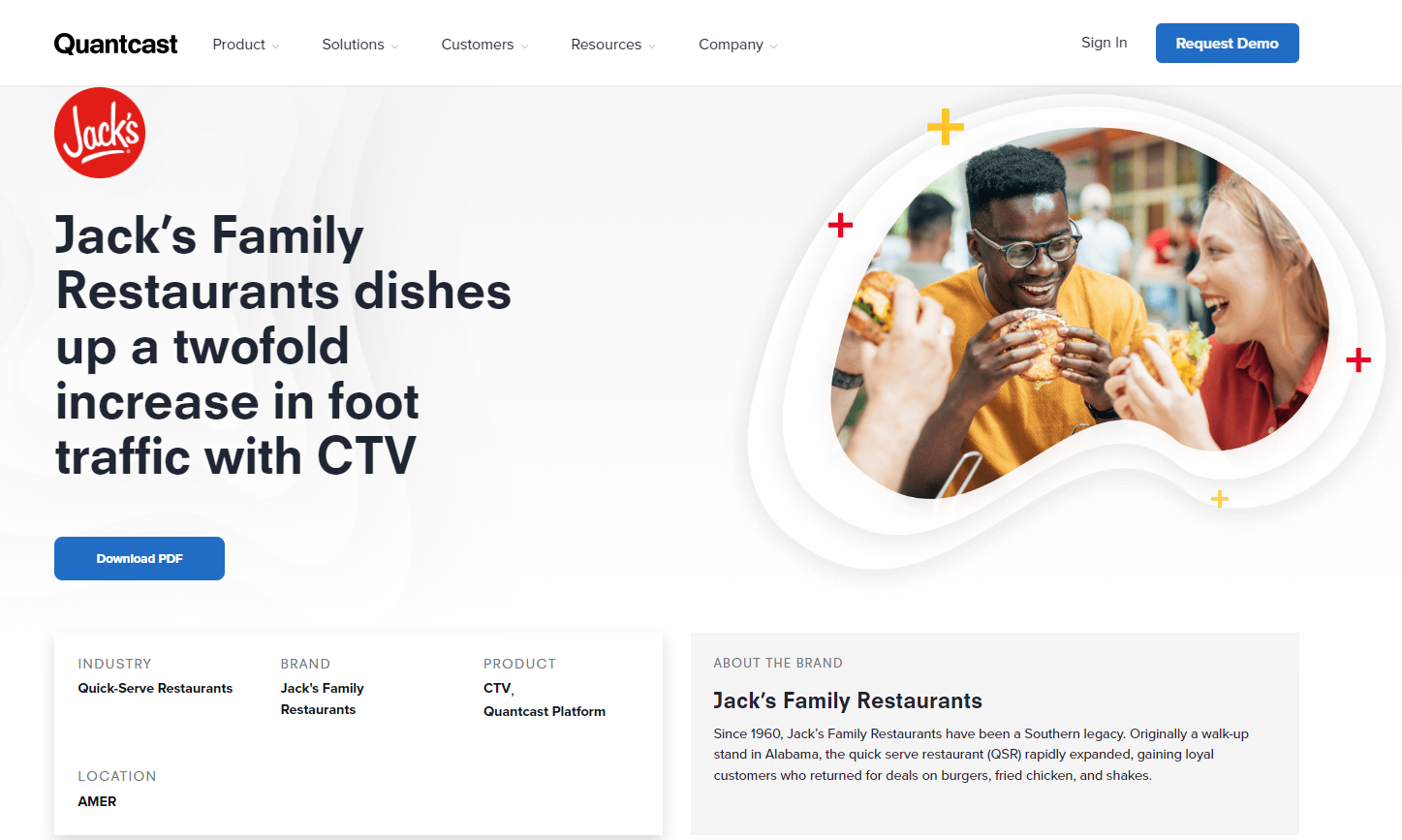
Word-of-mouth is one of the most effective ways to promote your brand. Leads are more likely to trust products and services that they’ve heard about from others.
Harness the power of word-of-mouth in your enterprise content marketing. Ask your current clients to support your brand with user-generated content. These materials can include case studies, testimonials, and reviews.
Use lead scoring for higher conversions
Lead scoring is the process of assessing and ranking prospects. You can use many criteria to score enterprises, including:
- Budget
- Company size
- Engagement
- Geographic location
- Industry
- Level of interest
- Timeframe
Lead scoring focuses on the most promising prospects, helping increase conversions. Imagine that Company A has requested a product demo and wants to buy it next month. Meanwhile, Company B has yet to engage with your brand and has a small budget. It makes sense to invest time in Company A because they’re more likely to convert.
Target international markets and deepen marketing penetration
Many enterprises operate in more than one country. Tap into global markets to connect with new audiences and expand your reach.
Enterprise search engine marketing is one way to reach global clients. This process involves targeted ads and keywords tailored to international audiences. You can also localize your content and adapt it to different cultures. For instance, you could translate a blog into Spanish to fit a local community.
These strategies can also deepen your marketing penetration. They build brand awareness and help you gain the trust of new customers. These methods allow you to attract loyal customers on a global scale.
Assess the diversification of audiences
Enterprise marketing lets you attract more diverse clients that may not have been a part of your original target audience. These audiences often have distinct goals and preferences. Segment these clients into different groups so you can personalize your marketing.
Invest in multi-channel marketing activities
Most large companies have many decision-makers with different communication preferences. Using many marketing channels will help you reach the most leads. For example, you could use SMS text message marketing for young decision-makers. Meanwhile, you can create a whitepaper on the same topic for people who crave deeper analysis.
Best practices in enterprise marketing
Follow these best practices to elevate your enterprise marketing campaigns.
Develop and maintain a consistent brand voice
Enterprise marketing usually involves large teams. Create a brand voice along with a style guide that describes your brand’s tone and personality to ensure everyone shares the same messaging with clients. This guide should also include examples of language to avoid.
Map goals and plan expansion
Your business plan should include goals related to your enterprise marketing efforts. For example, you might aim to convert three companies in the next six months. You should also map out how you will expand your marketing in the long term. This plan could include branching into new marketing channels and finding international leads.
Combine account-based marketing with other strategies
Account-based marketing focuses on individual companies. Marketers create custom content based on each account’s goals and pain points. Combine this approach with enterprise marketing tactics, such as multi-channel marketing.
Check performance and make strategic adjustments
It’s essential to watch how your enterprise marketing performs. That way, you can see what works and adjust your methods accordingly.
These metrics can provide insights into your performance:
- Click-through rate
- Cost per lead
- Customer lifetime value
- Engagement
- Event attendance
- Lead conversion rate
- Marketing return on investment
Use enterprise marketing software
Manage your campaigns with enterprise marketing software. Constant Contact’s Enterprise Program makes it easy to promote your brand. Your team can access libraries of approved assets and use digital marketing tools as you grow and scale your brand.
Enterprise marketing tools and technologies
Every enterprise SEO marketing company needs the right tools. Look for affordable and accessible technology that grows with your business. Choose software with these handy features:
- Ability to integrate with existing platforms
- Data analytics tools
- Marketing automation
- Mobile apps
- Reporting
- Secure databases to manage client information
- Templates
Constant Contact’s enterprise marketing automation software offers all these features and more. For instance, you can use this platform to send personalized emails to decision-makers.
Adapting enterprise marketing to scalability
Adapt your enterprise marketing over time to grow your business.
- Experiment with new methods to build brand awareness. For example, you can create new content like ebooks and podcasts. You can also organize conferences and webinars to promote your brand.
- Spend time creating authoritative content. These materials can include case studies, infographics, and whitepapers. Translate this content across several channels for the most impact.
- Implement lead scoring. Adjust your criteria as your goals and target audience change. You might narrow your criteria to focus on the highest quality leads or expand it to broaden your pool.
- Invest in a headless content management system (CMS) like Constant Contact. This technology lets you share content across many channels from one convenient hub.
Personalization and customer engagement
Personalize your content to appeal to decision-makers. First, identify and segment your audience. You can separate clients by pain points, industry, and other criteria.
Next, choose the right marketing channels for each audience. Some clients may prefer snappy emails, while others want to watch videos. Consider conducting surveys to learn about these preferences. It’s also vital to deliver valuable content to enterprise leaders. For example, you can create content about industry trends and everyday challenges. Prospects are more likely to engage with these educational materials.
Finally, embrace workflows for agile marketing. This approach lets you adapt content to different clients and respond to new trends.
Measuring success and ROI in enterprise marketing
Assess your marketing efforts often to ensure you’re on the right track. You can use many account-specific key performance indicators to measure success, such as:
- Customer acquisition costs
- Brand awareness
- Return on investment
- Website traffic
Choose accurate analytics and reporting tools so you can track your performance effectively.
Future of enterprise marketing

Enterprise marketing practices will continue to evolve as technology advances. One of the latest trends is using AI to generate custom content at scale. This tool can create personalized emails, blog posts, and more.
Some marketers also use augmented and virtual reality to promote their brands. This innovative technology enables you to showcase your products in new ways and helps you stand out from competitors.
Harness the power of enterprise marketing
Enterprise marketing focuses on converting large companies into clients. This approach lets you concentrate on high-value clients with big budgets. A single deal with a big company can significantly boost your revenue and reputation.
To get started, identify companies that fit your target audience. Research their pain points and create custom content tailored to their needs. Before you know it, you’ll be building relationships with key decision-makers.
Picture this: You’ve just finished a social media ad for your company. You run it for a few days and see a flurry of activity on your website. However, you don’t make any effort to capture information about your visitors, and once the ad finishes, your website goes quiet. Unfortunately, it’s a missed opportunity to learn more about your audience and what they want. You can avoid this situation with the right lead management tactics and ultimately generate more customer interest.
Lead management means attracting, qualifying, and converting potential customers. It uses tailored strategies to connect with your target audience and convince them to buy from you. With a well-designed lead management strategy, you’ll see increased sales and customer loyalty.
The lead management process exposition
Here’s what to know about the lead management process.
Overview of different lead types
There are two basic lead types most businesses recognize.
- Marketing-qualified leads (MQLs) show interest in your brand but are still deciding whether to buy. Examples of MQL-related activities include signing up for your emails or texts or downloading an ebook.
- Sales-qualified leads (SQLs) understand what your company has to offer and are very close to purchasing. They’re considered highly qualified leads. Examples of SQL activities include trying products out on the sales floor or asking to speak with a sales representative.
Detailed stages in lead management
There are five basic stages in the lead management process:
- Lead capture: The first stage of lead management is capturing leads. It involves gathering basic information from interested customers — like names and email addresses — from various sources, for example, an email capture landing page. Once obtained, the brand can store the client’s details and the sales campaign information in a single platform.
- Lead tracking: After capturing a lead, you move on to lead tracking, which aims to monitor your client’s interactions with your brand to learn more about what they want. Example activities include tracking website visits as well as email open and click-through rates.
- Lead qualification: During the lead qualification stage, marketers examine the client information they have to determine how close a client is to making a purchase. This stage considers client interest, buying ability, and whether your products or services align with the client’s needs.
- Lead distribution: Brands often have different sales reps handling various locations, products, or services. Marketers evaluate the lead qualification results in the lead distribution stage and determine which sales representative should handle them.
- Lead nurturing: The lead nurturing process focuses on retaining clients during and after they make a purchase. The goal is to develop strong relationships so customers return next time they need your products or services.
Lead generation techniques
There are many ways to generate leads. Virtually any activity that encourages a brand-customer interaction can generate leads. A few standard techniques that companies use to develop leads include email signups, content marketing, Facebook lead-generation ads, and in-person store visits.
Qualify and segment your leads
As you build your leads list, use the information you obtain to assess how likely they are to buy. Use segmentation to categorize leads according to demographics, behaviors, location, interests, and other elements.
Nurture leads to maturity
It may take some time for a new client to become a paying customer. You can encourage them through the buyer’s journey through nurturing campaigns. A nurturing campaign aims to develop stronger client relationships through content marketing and regular interactions. For instance, you might email leads with your latest products and video demonstrations to pique their interest.
Lead scoring methods
Lead scoring ranks your customer leads according to various factors, including their engagement and fit. People who receive higher scores are closest to buying with your organization. You can use lead scoring to identify and target key customers in your sales efforts.
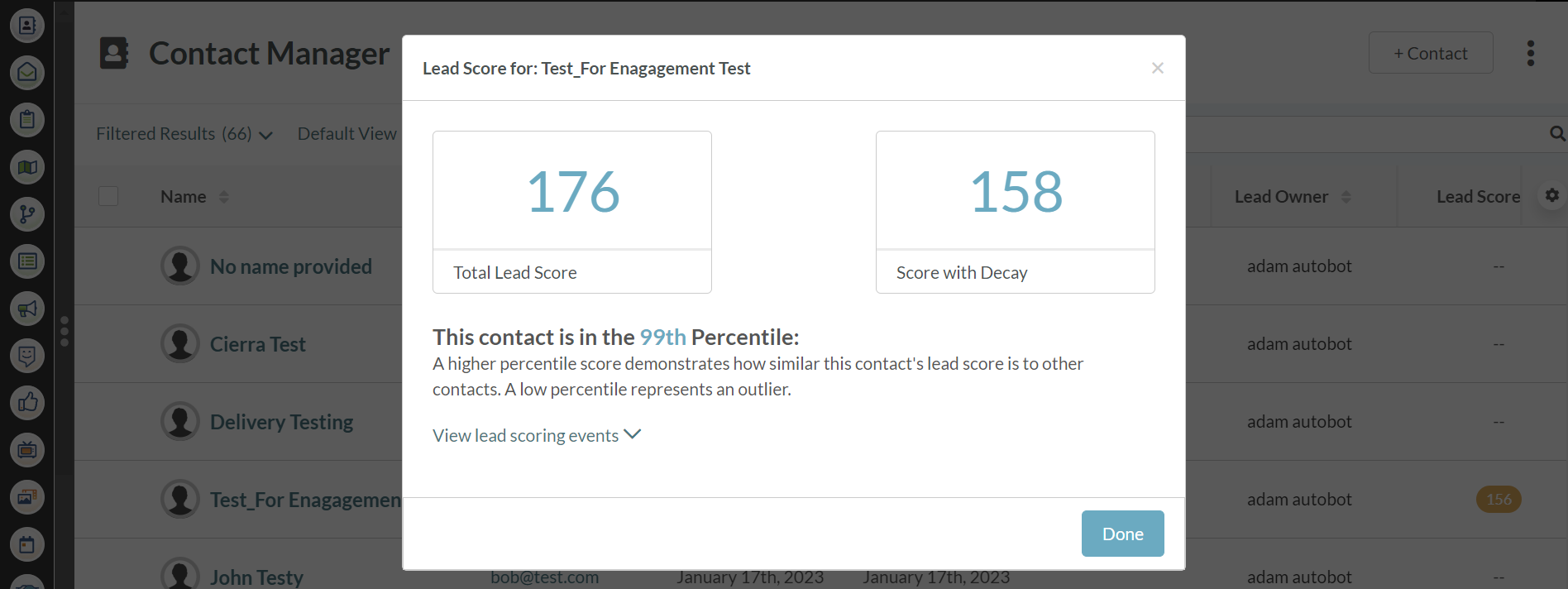
Distribute leads among the sales team
You can distribute your customer leads among sales team members as soon as you identify them. For example, you might assign sales leads based on the products customers are interested in or their geographical location.
Convert leads into paying customers
Not all leads will ultimately buy with your organization, but effective strategies can enhance your conversion rates. Focus on demonstrating how your products and services can serve clients’ needs and use marketing techniques to strengthen relationships and showcase industry credibility.
Track performance and make adjustments
As you initiate your marketing strategy, you can use your lead management system to track performance and evaluate results. It’s helpful to set benchmarks, which you can use to determine whether you’re meeting objectives or need to make adjustments.
Integrating lead management software
Trying to manage lead data manually is virtually impossible unless you have a small customer base. Instead, you can use lead management software programs to assimilate client details, monitor customer interactions, and score leads.
Types of lead management software available
There are two main types of lead management solutions:
- Customer relationship management (CRM) systems provide a comprehensive platform for all customer interactions. Common features of a lead management CRM include marketing channel management, sales automation tools, and sales pipeline administration.
- Dedicated lead management systems specialize in lead scoring, process management, sales forecasting, and analytics. They typically contain robust lead generation tools but may lack a CRM’s enhanced functionality.
Constant Contact’s CRM platform includes all the tools you need to manage your lead generation and marketing efforts. You can use its built-in marketing automation tools to create effective email and social media marketing campaigns. Plus, Constant Contact’s CRM includes lead scoring and lead nurturing features, making it easy to identify when it’s time to follow up on a sales prospect.
Selection of lead management systems
Deciding on a lead management system boils down to your needs. Consider the extent of your marketing strategies and where a platform can enhance your efforts. You’ll also want to consider the current systems you use, whether you plan to integrate them with your new software, and the cost and time of setting up a new platform.
Most lead management providers offer demonstrations or a product trial to help you assess their capabilities and alignment with your organizational goals. You can schedule a demo with Constant Contact to learn more about our CRM system and how it can positively impact your company’s marketing efforts.
Features to look for in lead management tools
As you evaluate your CRM and lead management options, you’ll see various features that can assist with lead generation to build your business.
Some popular lead generation features include:
- Lead scoring systems
- Email and social media marketing tools
- Lead capturing features
- Lead nurturing automation tools
- Integrations with various business operations platforms, such as email and accounting software
- Analytics and reporting tools
Lead management best practices
As you initiate your lead management efforts, consider a few best practices to enhance your results.
Setting clear lead management goals
Effective lead management requires clear-cut objectives. Start by identifying your short- and long-term goals. You can use the SMART process to define and work toward your goals.
SMART goals contain the following traits:
- Specific: A specific goal defines the objective, who is responsible for meeting it, and the steps to achieve it.
- Measurable: Your objective should include a quantifiable benchmark to evaluate your progress.
- Achievable: Your goal should be reasonable and attainable.
- Relevant: Your objective should align with the long-term vision for your brand.
- Time-bound: Setting a due date creates a sense of urgency to meet your goal.
Some examples of lead management goals include:
- Obtaining 100 new leads over the next two weeks
- Converting 50 new clients within the next month
- Establishing a comprehensive lead scoring system within the next month
- Improving your lead-qualifying efforts to generate higher-quality leads within the next six months
Mapping and organizing the lead management process
Lead management includes multiple steps, and you’ll want to outline your process for each. Some steps that might apply to your brand include lead capturing, tracking, qualification, distribution, and nurturing.
Define how you’ll approach each step in the process. For instance, what techniques will you use to capture leads? Once you obtain their contact information, what tools can you use to track their interactions with your brand?
The more complex your lead management process, the more detailed you want to be.
Keeping data clean and sales processes aligned
Your lead management system may include analytics to track your lead generation, lead scoring, and nurturing activities. Define which metrics you’ll use to evaluate your process, and ensure you understand how you’ll assess them. If your data is inaccurate, it can skew your results and make it difficult to determine whether your processes are working.
Adopting omnichannel lead tracking
Some companies use omnichannel marketing to interact with customers via separate channels, including social media, email, text, and their physical storefront. Omnichannel marketing connects with all channels by integrating customer interactions.
You can track your leads across various platforms using omnichannel marketing to deliver consistent messaging that seamlessly connects with your audience. For example, if your client visits your website and browses a product, you could use email to encourage them to buy that product and offer a special discount if they do.
Evaluating the impact of lead management
As you implement your lead management process, measure your results against your goals. If you’re falling short of your objectives, identify ways to improve your processes and try them out.
Optimizing lead management system
Once you implement your lead management system, there are a few ways to optimize it for the best results.
Monitoring lead generation campaigns
When you initiate a new lead generation campaign, establish benchmarks to help you monitor the outcomes. Examine each activity to determine which strategies work and which should be adjusted. Remember that some lead generation tactics may not be as effective as others, so it’s essential to identify which ones those are, as they may impact your lead scoring model.
Keeping data up-to-date
Most lead generation systems will automatically update customer interactions, especially electronic ones. However, it’s important not to rely entirely on your system. Your sales reps and other customer-facing employees may interact one-on-one with your clients, and it’s crucial to update your data to reflect those communications.
You’ll also want to monitor your customer base for clients who stop interacting with your brand’s emails, texts, and other messages. If you receive bounce notifications or clients unsubscribe from your company’s messages, remove them from your subscriber list to protect its integrity.
Aligning marketing with sales efforts
Marketing content keeps clients engaged with your brand but doesn’t always result in a sale. Establishing a sales pipeline helps identify where people are in the customer journey and when to deploy your sales reps to encourage them to take the next step.
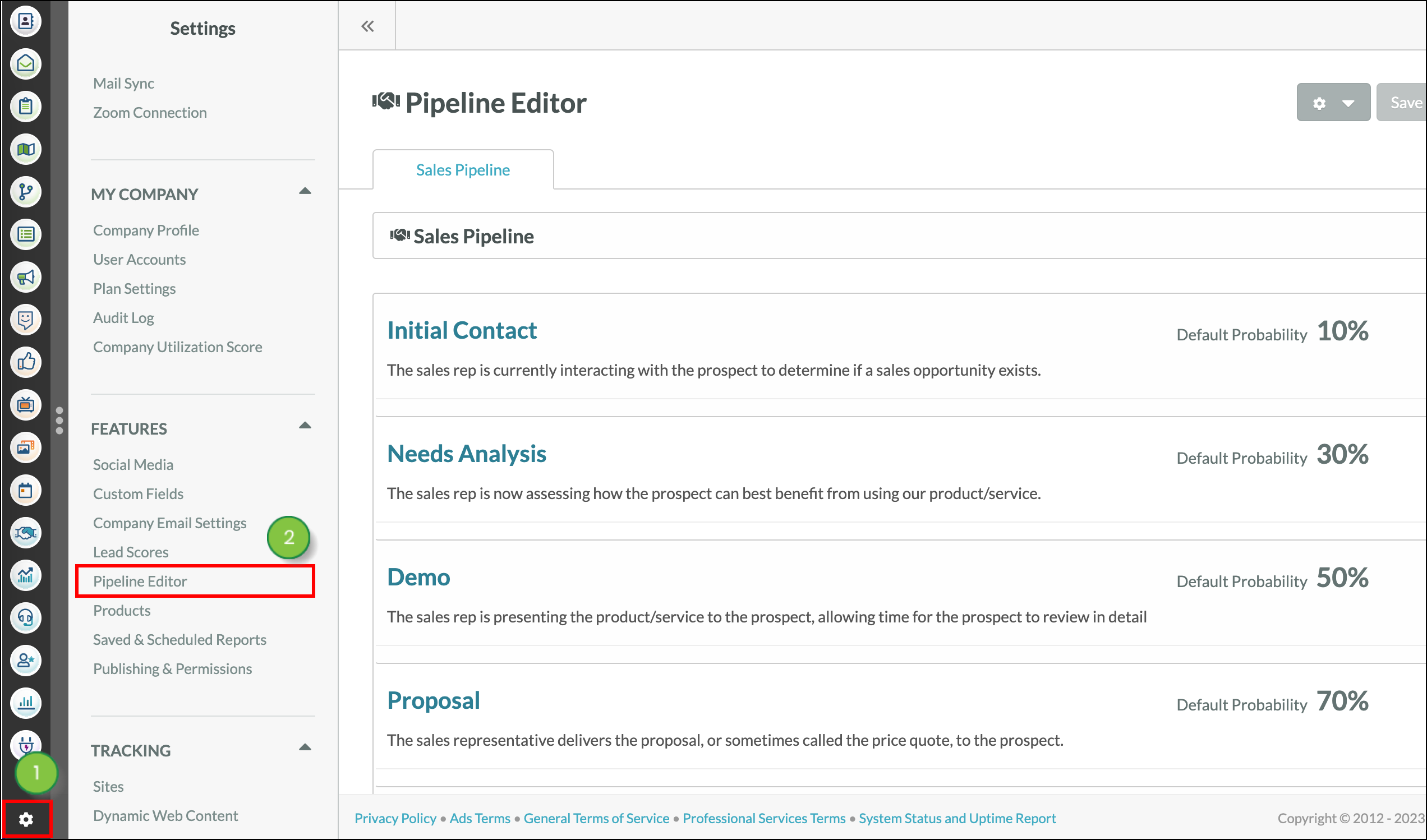
Collaborating between teams
Your teams should work together on the lead management process. Sales, marketing, and customer service should all collaborate to ensure a streamlined sales pipeline and lead nurturing process.
Using analytics for better results
Analytics use hard data to tell you exactly how your lead management process is working. Establish a few metrics to benchmark your progress.
Measuring success in lead management
Key performance indicators (KPIs) are individual metrics to evaluate lead management success. Some common KPIs that marketers use to assess their efforts include leads to sales conversion rates and sales cycles.
Determining leads to sales conversion rates
To calculate leads to sales conversion rates, use this formula:
(Number of sales/number of leads) x 100
For example, assume you acquire five sales from 100 leads. Applying the formula, your sales conversion rate is 5%, or (5/100) x 100.
Calculating sales cycles
Calculating the average sales cycle is a little more complex. Start by identifying the initial point when your client entered the customer journey and the date they decided to buy. The duration from start to finish is one sales cycle. You can take the same approach with other customers. Add all the sales durations together and divide by the total conversions to get an average.
Using metrics to refine lead management
Metrics can help you assess where your lead management processes are running smoothly and where you can make enhancements. Use different metrics to evaluate each stage of the lead management process.
The future of lead management
As you establish your lead management process, consider each stage and how it applies to your brand. Develop strategies to help you generate leads and move them through your customer journey. To maximize your efforts, consider implementing a lead generation system with features to manage your leads and track your results.
In the future, marketers will continue to benefit from technology development. Tools like automation, machine learning, and artificial intelligence can streamline the lead management process, especially in areas like data analysis and timely communication. Keep current with new technological developments, and consider implementing them if they can positively impact your brand.
While it may come at the end, your email footer shouldn’t be an afterthought.
Email footers need to check certain boxes, but a well-crafted footer goes beyond. It contributes to your brand and engages your subscribers.
The goal is to provide essential information, adhere to regulations, and make sure your emails end on a high note.
You want to optimize every element of your email campaigns. These email footer examples will help you get the most out of any template — down to the last word and pixel.
Understanding email footers
First, let’s cover the role of an email footer — where to find it and why it’s important for email marketing.
What is an email footer?
An email footer is a dedicated space at the bottom of your emails. It’s like a digital business card and includes crucial information such as contact details, legal disclaimers, unsubscribe links, and social media icons.
What is a footer example?
This footer from the brand Supernotes is a short and sweet footer example. It gives you an address, social links, and an opportunity to unsubscribe.

Why do email footers matter?
Email footers serve three primary purposes: communication, branding, and compliance.
An email footer delivers necessary information and helpful links in your brand’s established aesthetic, demonstrating your professionalism and boosting brand recognition.
Footers also help you meet legal obligations for email when you provide an unsubscribe option and state your business address.
Essential components of an Email Footer
There are several non-negotiable elements for an email footer as well as some strongly encouraged components.
Legally required footer elements
Certain elements are legally required to comply with laws like the CAN-SPAM Act in the U.S. or GDPR in Europe. Make sure the following items are easy to find:
Company information
Your company’s physical address is a must-have element in your footer. This could be your current street address, a P.O. box, or a private mailbox registered with a commercial mail-receiving agency.
Unsubscribe link
An option for recipients to opt out of your emails is also mandatory. Let uninterested parties go, abiding by regulations and improving email list hygiene.
Consider unsubscribe best practices, and make the process straightforward and user-friendly.
Suggested elements
These aren’t necessary for compliance, but it’s a good idea to include them regardless.
Preference center
Maintain a clean, engaged subscriber list by directing subscribers to a preference center.
Preference centers empower users to control what kind of emails they receive from you and how often they receive them. You can reduce unsubscribes and increase engagement with better-tailored content.
Social media buttons
Add social media buttons to your email footer, connecting your email strategy to social media marketing.
This encourages your subscribers to interact with your brand on various platforms, strengthening your online community.
App download links
If you have a mobile app, include a download link in your footer to drive more installations and engagement.
Unlike open marketplaces — where you compete with over 7 million apps — your email is a dedicated space for your content and products.
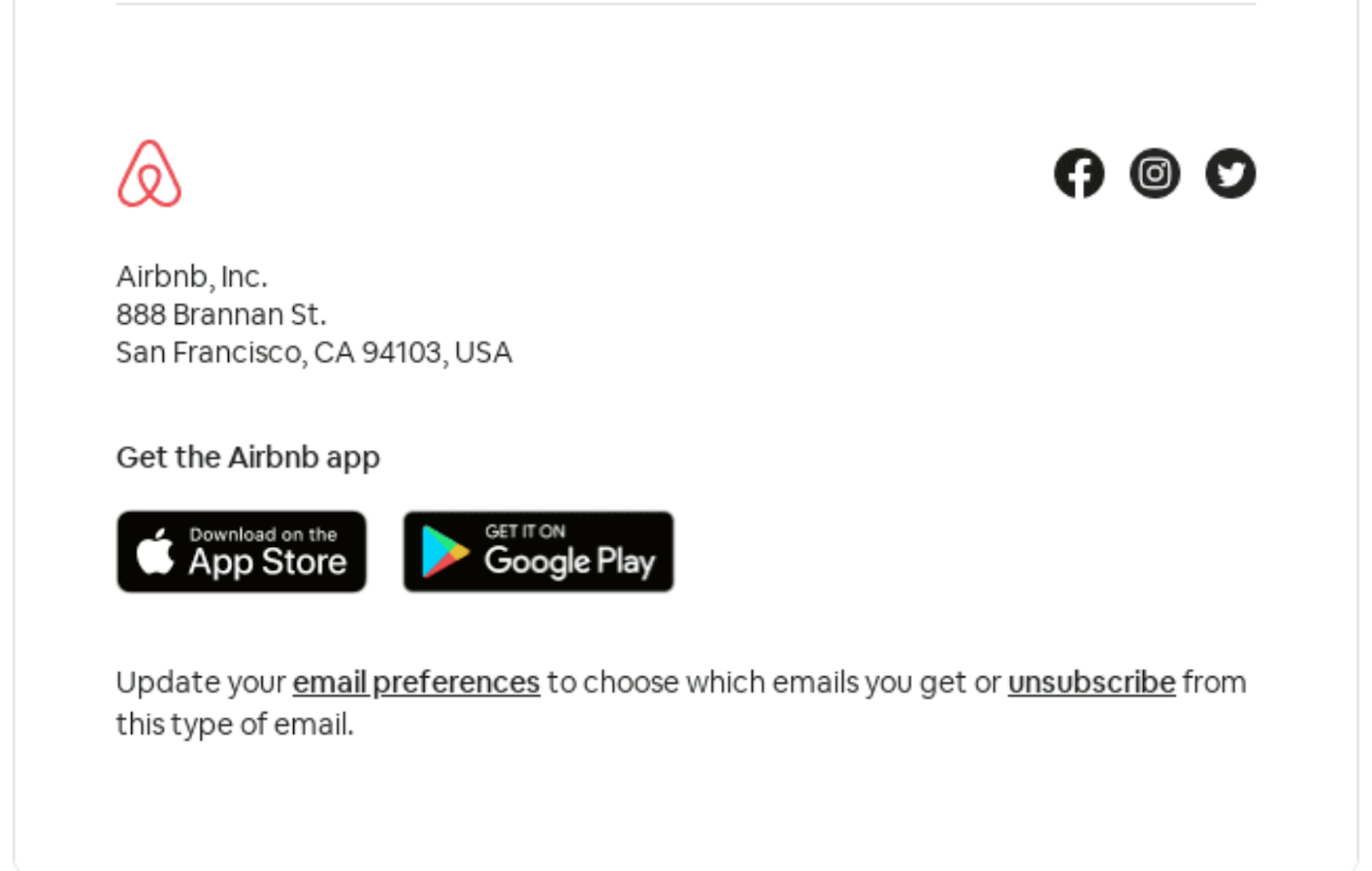
Interactive or dynamic content
Leave your audience with a personalized recommendation or update using dynamic content. Or solicit their opinions with interactive content such as a poll or a link to a survey.
Awards or credentials
Brag away! Remind your audience about why they trust you with identifiable award icons or listed qualifications.
The cruise line Royal Caribbean incorporates many of the above features:
- Awards
- Trademark information
- Links to unsubscribe or update email preferences
- Main address
- Link to customer support
- Privacy policy
Royal Caribbean is a great source of email header and footer examples because of the way the two elements work together in this message. A phone number and trackable navigation links are provided up top, supplementing the content in the footer.
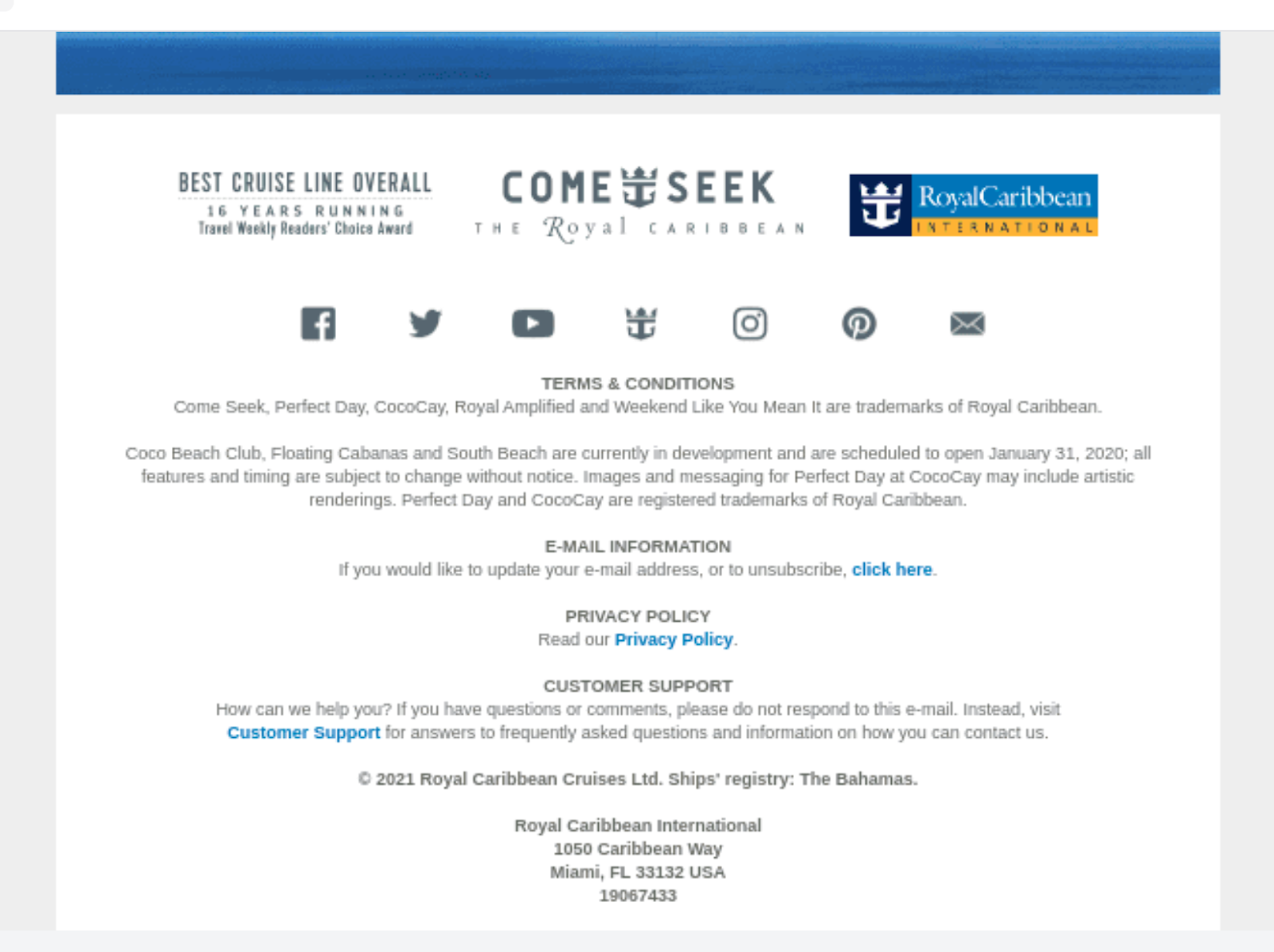
How to Optimize Email Footers for Engagement
Here are a few tips to use as you optimize your email footer to increase engagement and conversions.
Encourage readers to add you to their address books
Ask readers to put you in their list of contacts or approved senders. This ensures that your emails don’t end up in the spam folder and increases the chances of your emails being opened and read.
Promote offers and update subscribers
Think of your footer as an additional chance to communicate with your subscribers and drive more traffic to your website.
Try including links to your latest products or services, sharing discount codes, or providing updates about your business operations.
Optimize for mobile devices
Almost half of all emails are opened on mobile devices.
Every aspect of your email design needs to be mobile-responsive. Consider using larger fonts and more spacing between lines and links to improve readability.
Any images or graphics used in your footer should scale correctly and links should be easy to click on a mobile screen.
Periodically update footer content
Your footer content should be fresh and relevant. This could mean changing the offers or updates you’re promoting, updating your contact information, or refreshing the design.
Designing your email footer
Creating an effective email footer requires strategic planning, thoughtful design, and creativity. Pay attention to these considerations and best practices.
Best practices for creating an effective email footer
Your footer is a regular feature of your emails and should be clear, attractive, and true to your brand personality.
- Organize content for clarity. Arrange your information logically and use dividers or white space to separate different sections.
- Stay on brand. It’s hard to overstate the importance of brand consistency in developing audience recognition and loyalty. Use imagery, fonts, and colors that are consistent with your brand identity.
- Keep it simple. Avoid clutter and ensure your footer is easy to navigate.
How do I create an email footer?
Create your email footer in two easy steps:
- Outline the content you wish to include. Make a list of all legally required information and note optional links, information, and CTAs.
- Design your email fodder or choose a layout. Create your own custom email footer or simplify the process of creating email footers by using an email marketing service, like Constant Contact, which offers professional email templates.
Inspirational examples from top brands
Learning from successful brands often provides valuable insights. Here are some examples of top-tier email footers.
Apple: More is more
While Apple’s general design principle might be minimalist, its email footer takes a different approach.
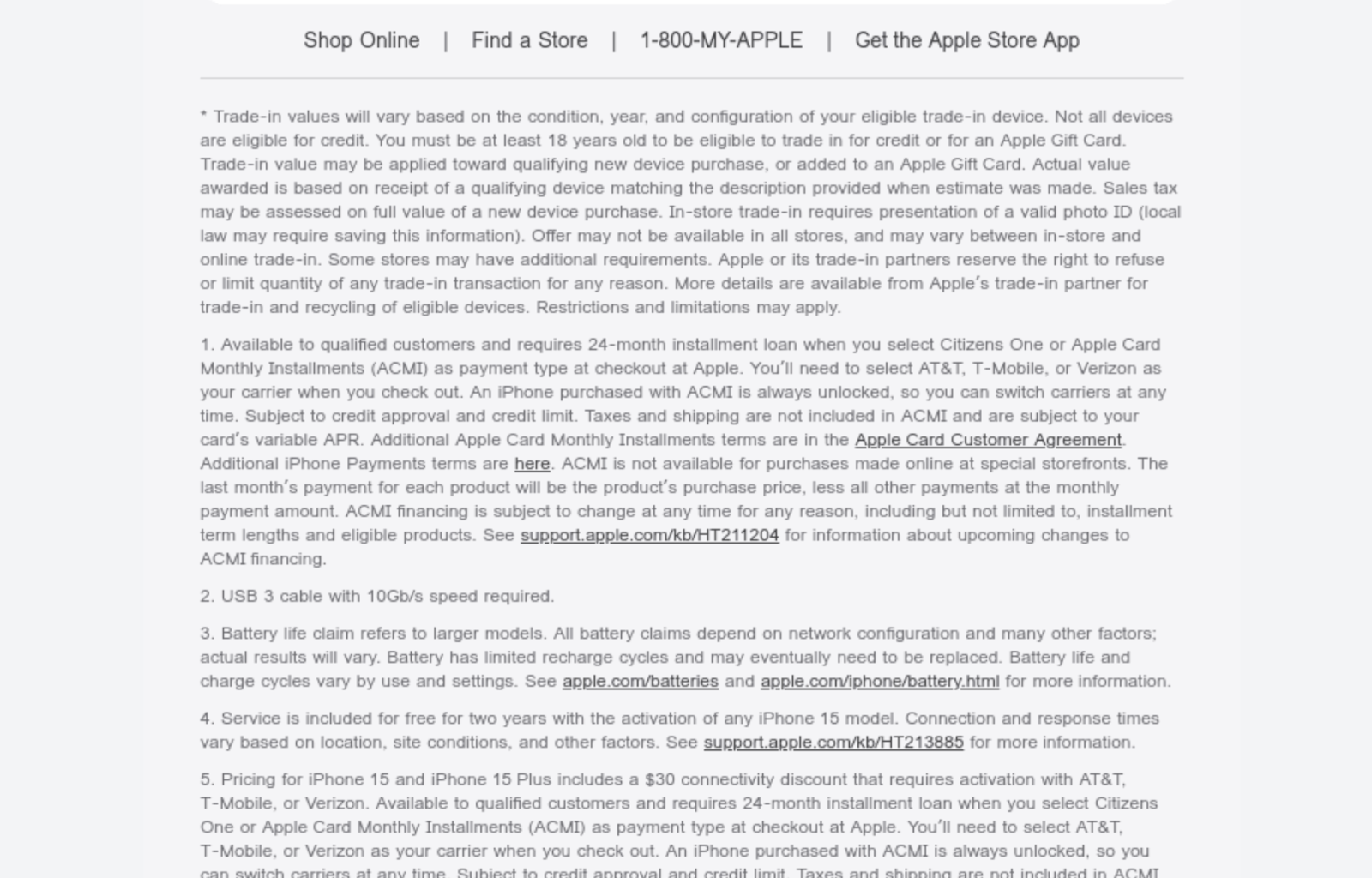
Apple provides one of the best email footer disclaimer examples. It demonstrates its commitment to transparency here. No matter what piques your interest in the body of the email, you can find all the legal qualifications and provisions below.
Takeaway: If your service or product is complex and requires legal disclaimers, adding this information to your footer can foster trust in your brand.
Patagonia: Share your values
Patagonia’s footer focuses on its commitment to environmental responsibility. Its centerpiece is an invitation to read an updated mission statement reflecting high-level changes to its business model.
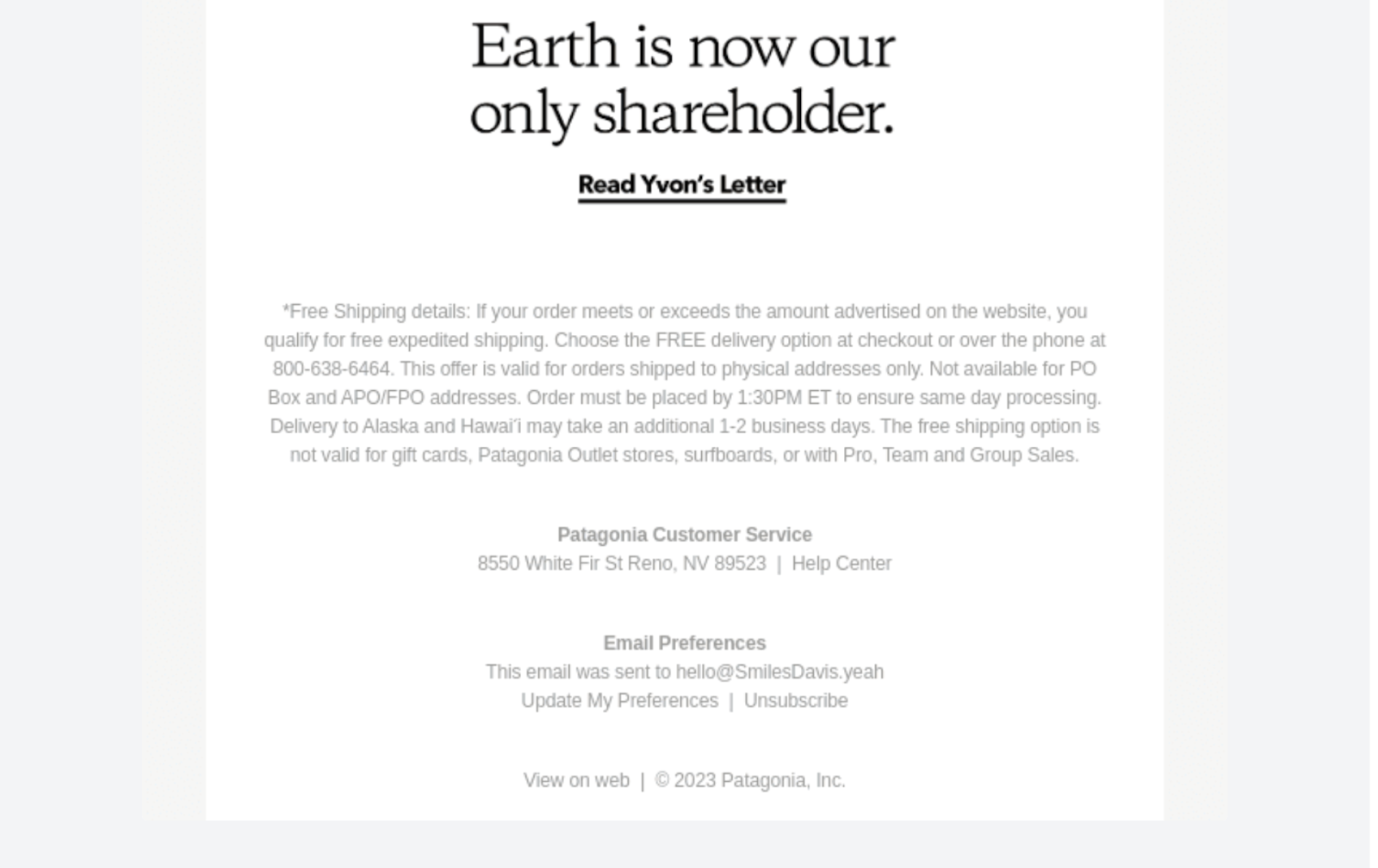
As business email footer examples go, this approach stands out for the way its design creates a visual hierarchy that reflects the brand’s central values.
Takeaway: Your email footer is an opportunity to highlight something central to who you are and what you do.
Dutch Bros Coffee: Negative space is your friend
This email from Dutch Bros. Coffee celebrates recipients by offering them a free drink on their birthdays and is one of the best marketing email footer examples I’ve seen.
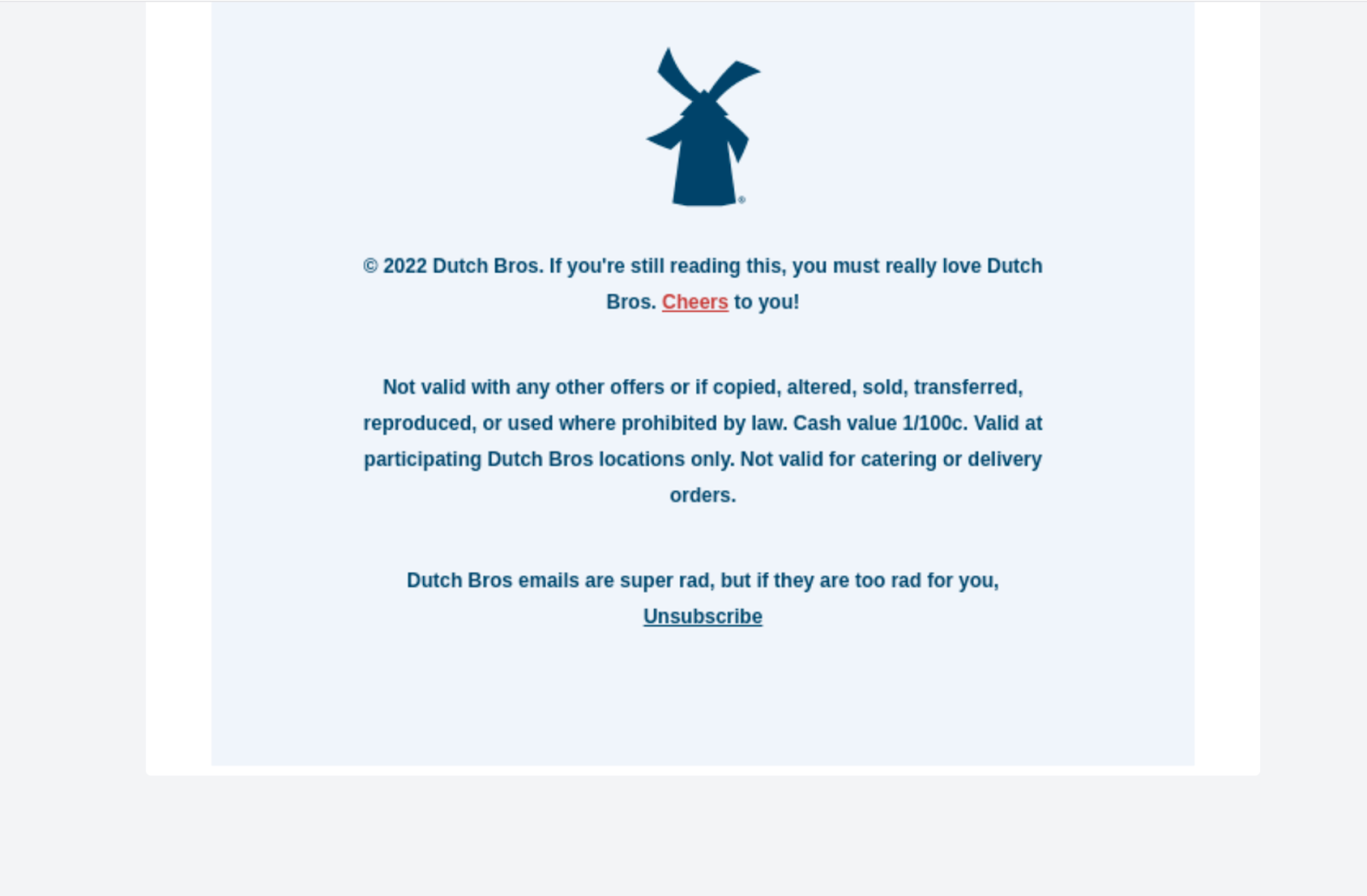
The footer is extensive, including:
- Dynamic content — a personalized reminder of the recipient’s current loyalty status
- Fine print for the terms of the offer
- Social icons
- The privacy policy and terms of use
- A link to their website
- A request that readers add the rewards program email address to their address book
- An invitation (and link) to email them with feedback
- The business’s physical address
- The logo
- A clear unsubscribe option
That’s a lot to ask of a footer, but clear organization and ample spacing keep it easy to read.
Takeaway: Don’t underestimate the power of a clean and clear design.
Technical tips for email footer design
Keep a few crucial technical considerations in mind when designing a footer.
Compliance
I repeat myself, but you must comply with email marketing legal standards. Include all necessary legal information, such as your company address and an unsubscribe link.
Accessibility
Follow web accessibility standards. Use a font size that is easy to read on both desktop and mobile and choose a color scheme with high contrast so text stands out.
Create alt text for any images in your footer, too. This ensures users with visual impairments can understand your content using screen readers.
Testing
Testing allows you to identify potential issues for readers.
Read a sample email on different devices. Ensure your footer displays and functions well on various screen sizes and check the links to make sure they work.
Overcoming common challenges
Good business email footer examples incorporate solutions to overcome common email marketing challenges.
Address high unsubscribe rates
There will always be a few people who choose to unsubscribe. The worldwide average unsubscribe rate is about 0.2%, but you’re doing fine if you can keep yours at or below 0.5%.
Here’s to use the email footer to combat a high unsubscribe rate:
- Offer a preference center. A preference center allows subscribers to modify their email preferences instead of opting out completely.
- Provide value. Use your footer to provide additional value to your subscribers. This could be in the form of useful links, social media buttons, or even a sneak peek into upcoming products or events.
- Ensure easy unsubscription. Ironically, making it easy for users to unsubscribe lessens the chance they will, giving them a positive impression of your brand.
Enhance email deliverability
Across Constant Contact clients, the average bounce rate is 10.28%, meaning that almost 90% of emails should reach the audience’s inboxes.
Hit or exceed this benchmark with the aid of your email footer. Including necessary legal information in your footer helps you avoid spam filters and reports.
Invite your audience to add you to their list of known contacts to guarantee that your biggest fans will receive your marketing.
Maintain brand consistency across devices
Build trust and awareness. Consistent logos and other style elements should appear in your footer across all emails, reinforcing your brand identity on all devices and with every send.
The significance of email footers
Your footer can play a pivotal role in shaping your brand’s image, building trust with your audience, and ensuring your emails reach their intended recipients.
The best email footer examples end a message with invitations to engage and opportunities to manage email preferences. They impact your brand’s professional reputation with leads and customers.
Take control of yours with a fresh design or update. Cover the essentials, and decide what else to add to provide additional value to your audience.
For more tips on crucial email components, check out these related posts:
- 12 Tips for Creating the Best Email Subject Lines (with Examples)
- Call to Action Ideas: Get Clicks — and Results
- Email Capture Landing Page: Your Conversion Blueprint
- How to Create Email Content That Gets Results
Since the invention of electronic mail (commonly known as email), people have been using the technology to send and receive important information from colleagues, humorous chain mail, and personal communications from friends and family.
Today, email is a major avenue for businesses to communicate with existing and potential customers. From welcome emails to reminders about abandoned carts, email keeps subscribers informed and engaged with the brands they love.
What is email marketing?
Email marketing is a marketing strategy that uses emails to generate measurable returns for your business.
Marketing emails differ in a few ways from a typical email you might send to a relative or coworker.
First, a marketing email is sent to a current or prospective customer. Second, while personal emails are often just relaying information, the goal of a marketing email is always to drive subscriber actions that benefit the business, such as signing up for an event or clicking through to a product page.
You’ll achieve your business goals by delivering value to your readers, often through engaging content, coupons, and exclusive offers.
Finally, while you may send out a personal email and move on immediately, marketing emails should be measured to see if readers are opening them and taking the desired action(s).
Advantages/Benefits of email marketing
One of the top benefits of email marketing is that it helps you to keep in touch with your customers. Whether a simple “Thank you for subscribing,” a cheery “Welcome on board,” or a sincere Happy Birthday email, email is the easiest and most effective way to let your customers know you value them. Customers love it when a business treats them as individuals.
That value should show in the emails you send, and the more value you provide to your customers, the more they’ll look forward to hearing from you. Getting them to engage with your call to action is more effortless when that happens.
Studies show that email marketing outperforms other digital marketing channels, including social media and paid search.
1. Boost engagement & loyalty
Email marketing is a powerful tool for boosting engagement and customer loyalty. By delivering personalized content and targeted email marketing campaigns, businesses can capture and keep the attention of recipients — driving higher open rates, click-through rates, and conversions.
In your search to boost engagement through email marketing, you’ll discover the best digital marketing tool to fit your needs includes the ability to automate email marketing campaigns. Automation allows your business to better tailor your customer’s experience with your marketing messages and gives you time back in your schedule.
Whether your user is extending their subscription or buying a new product, you can leverage email drip campaigns to engage customers during the renewal or new purchase process. Whenever a user leaves an unpurchased product in their cart, use email automation to send an abandoned cart email and let them know the product is still available for purchase.
2. Promote relevant content
Email marketing opens up a communication line with your subscribers, potential customers, and loyalists to receive content that keeps them up-to-date about what’s happening with your business. As you craft content, you’ll want to provide expert advice, promote a new product line, or share customer testimonials to lend credibility to your brand and reassure your clientele.
Remember, data is a friend to both your subscribers and your business. When you know where a customer fits into your email cycle, sending them content that’ll interest them and keep them engaged is easy. Email campaigns become especially handy when you are running a small business and have to be strategic about how you spend your time. Try targeting user segments based on which aspects of your service subscribers use most, recent purchases, or behaviors.
3. Help increase brand awareness
Email marketing is a great way to develop your brand identity because it gives you a direct line to customers and potential customers while showcasing your voice, style, and mission. You’ll have an edge over your competitors once you create valuable content for the customer.
Email marketing can also help you gauge subscriber and customer sentiment toward your brand. Use a survey to ask for feedback. Are customers happy with the content you’re providing? Would they like to learn something different?
Once you know what interests them, you’ll know how to provide valuable email content.
4. Boost sales
Email marketing offers equal opportunity to incite impulse purchases and drive careful consideration. Whatever your target audience looks like, you can use email marketing to encourage a first-time buyer to click “add to cart” or a long-time shopper to stay true to your brand.
For new customers, you might consider:
- Product overviews
- Expert opinions, awards, and customer testimonials
- Discounts and exclusive offers for first-time buyers
To shoot for a repeat customer, try:
- Sending follow-up emails featuring products similar to the purchased product or products bought in tandem
- Exclusive content about how to style/use a product (e.g., recipes, design recommendations, etc.)
- Create a special offer or discount for future purchases
What are the types of email marketing?
It’s important for businesses to choose the appropriate type of email marketing based on their goals, target audience, and the desired outcome of the campaign. Here are some common types:
- Promotional Emails: These emails promote specific products, services, or offers. They often include discounts, limited-time deals, or special promotions to encourage recipients to make a purchase.
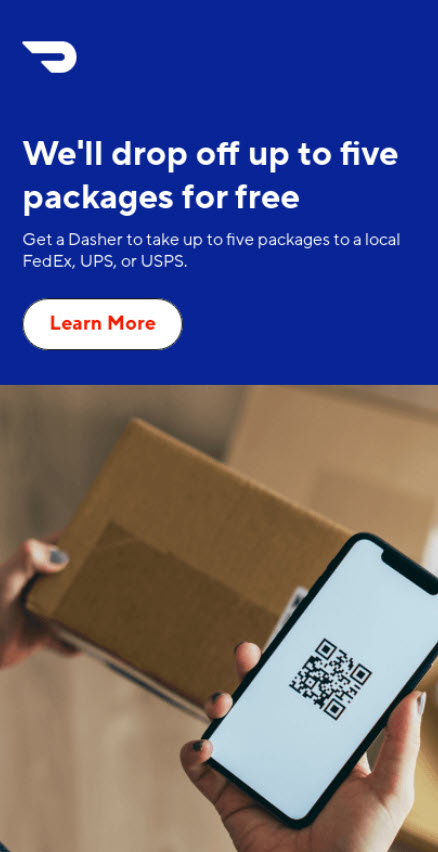
- Welcome Emails: Sent to new subscribers or customers, welcome emails aim to introduce the brand, set expectations, and provide valuable information. They can include a warm greeting, a brief company overview, and a call to action to encourage further engagement.
- Newsletter Emails: Newsletters are regular emails sent to subscribers to provide updates, news, and valuable content. They can include industry insights, blog articles, product updates, or curated content to keep subscribers informed and engaged.
- Abandoned Cart Emails: These emails are triggered when a customer adds items to their cart but doesn’t complete the purchase. Abandoned cart emails aim to remind customers of their unfinished purchases, offer incentives, and encourage them to complete the transaction.
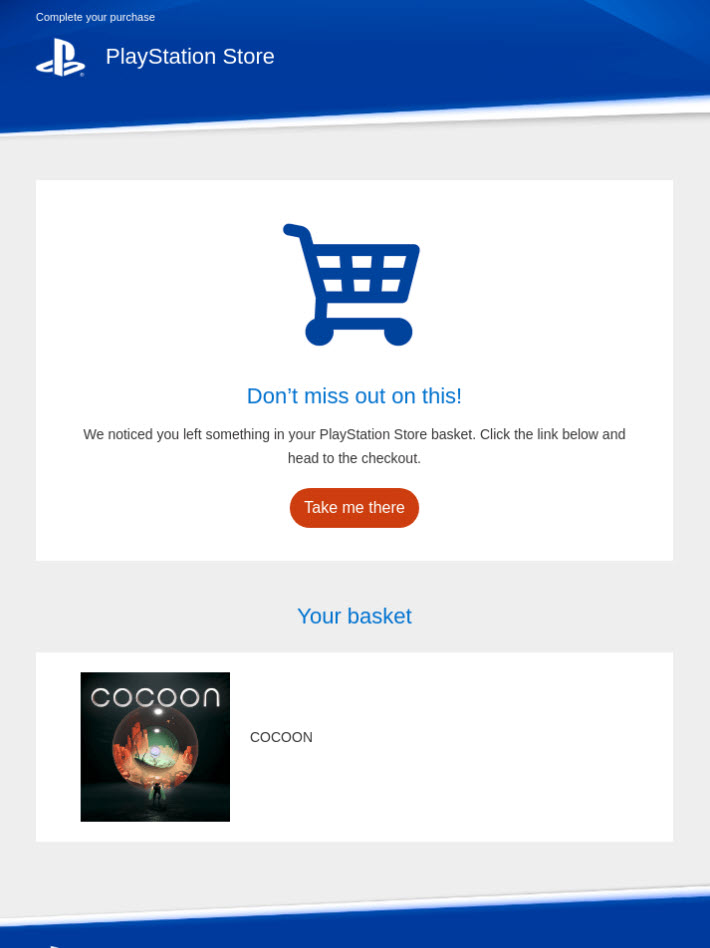
- Re-engagement Emails: Sent to inactive subscribers, re-engagement emails aim to win back their interest. They can include special offers, personalized recommendations, or surveys to understand their preferences better.
- Transactional Emails: These emails are triggered by specific actions or transactions, such as order confirmations, shipping notifications, or password resets. While primarily informative, transactional emails can also include personalized recommendations or cross-sell opportunities.
- Event Invitation Emails: Emails sent to invite subscribers to events, webinars, or workshops, these emails provide details about the event, registration links, and any special offers or incentives for attending.
- Feedback or Survey Emails: These emails are sent to gather feedback from customers or subscribers. They can include surveys, polls, or feedback forms to collect valuable insights and improve the customer experience.
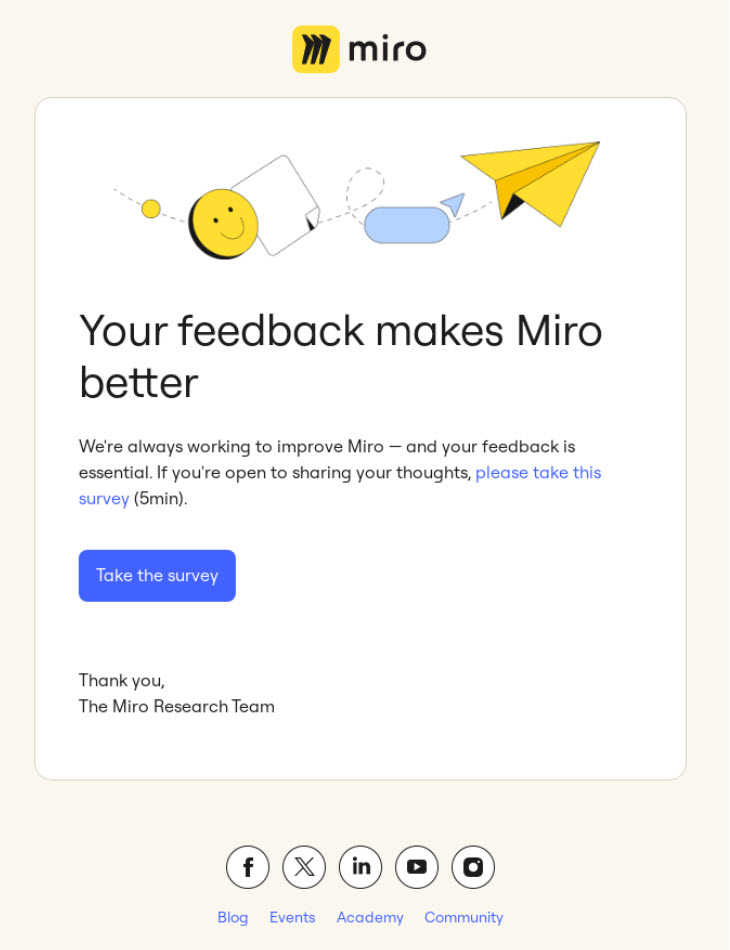
Key email marketing stats and cost-effectiveness
Email marketing is relatively cheap. Whether you do it yourself or through an email marketing provider, marketing to hundreds of customers via email will cost you peanuts compared to other advertising channels.
With email marketing, you can send targeted emails based on what you know about your customers – such as likes, dislikes, content preferences, age, location, and buying patterns.
A few key stats:
→ Email marketing has an average return of $36 for every dollar spent, so investing in email marketing can have some serious payoffs.
→ On average, abandoned cart emails have a 43.76% open rate, an 8.76% click-through rate, and a conversion rate of 10.7%
→ According to a 2022 Radicati Group study, there will be more than 4.48 billion email users by the end of 2024. In other words, over half of the people on this planet use email right now.
That sounds crazy, doesn’t it? But think about it: whenever you register with a new website or sign up for an account, you must have an email address. Yes, you can log in with a social media account like Facebook, but you still need an email address to sign up for Facebook.
Email is still the dominant form of communication, and smart businesses use email every day to turn prospects into customers.
What’s more, email results are easy to measure. Constant Contact customers have real-time access to metrics like open rates, clicks, bounces, forwards, social shares and more.
Expert tips to know about email marketing
1. Choose an email marketing service provider
If you’re serious about email marketing, you must work with an email marketing service provider. Working with a provider is the only way your business can leverage email marketing to deliver messages to large groups of contacts or subscribers effectively. You’ll also benefit from professional email templates, automation tools to help you expand, easy ways to manage and grow your email list, and tracking features showing how customers respond to your emails.
2. Gather contacts for your email marketing list
Most businesses have some existing contacts when they start a mailing list. Think of the customers and people you already have a business relationship with. Maybe they’re contacts you email regularly, or you could start with a few supportive friends and family members.
Don’t get discouraged, even if you’re building an email list completely from scratch. Start by putting a paper sign-up sheet near your register, adding an online sign-up form to your website, and encouraging your social media followers and loyal customers to sign up.
Whatever you do, don’t purchase an email list. Email marketing management is all about building and nurturing relationships; connecting with a smaller list of quality contacts is more impactful than blasting out emails to contacts who haven’t consented to receive marketing emails from your business.
3. Set up your welcome email
The first email a new subscriber should receive is the welcome email. Use your welcome emails to help your business build a relationship with your audience. Connect them to your brand voice, provide valuable content, and offer exclusive deals to set the tone for future customer experiences.
Consider automating your welcome emails. New subscribers will be added to your welcome email list and receive content in a timely manner.
4. Write persuasive messages
This tends to be one of the scariest steps for business owners. You don’t want to sound too sales-y or push too hard to get potential customers to buy your products, but at the same time, you want to convert them into paying customers.
When thinking of email marketing campaign ideas, it helps to follow a repeatable process and break your message down into three crucial sections:
- Headline: What are you offering?
- Message Body: How will it help the reader?
- Call to action: What should they do next?
This simple three-step formula helps you stay focused so you can write more effective messages.
5. Use personalization in subject lines
The subject line of your email is one of the first impressions someone gets from your brand, especially when you’re sending them an email for the first time. Using what you already know about the customer should be your first priority while sending email marketing campaigns.
Your subject line should be short and snappy — around 40 characters.
You can draw attention by asking a compelling question, including a deadline to increase urgency, or teasing your message.
6. Focus on customers, not your products
Have you ever received a marketing email that didn’t feel relevant enough? Yeah, that can get a little annoying.
An email cluttered with products or information that doesn’t provide the subscriber with value will cause them to lose interest in your email marketing and unsubscribe from your email list if the issue persists.
When you’re dividing your readers into segments, make sure to remember what stage of the customer lifecycle they’re in. For example, they’re a new customer or someone who’s left something behind in their cart.
A little extra effort when segmenting emails can go a long way.
7. Preview and test before you send
Make sure the content you’re sending is grammatically correct and free of styling errors. Use the preview function in your email marketing software to view your content, check links and promo codes, and send test emails. Catch errors when it counts so you can provide a high quality email experience for your subscribers.
8. Track your results
Email marketing doesn’t end with a send. You will want to track your open rate, click-through rate, unsubscribe rates, etc., and work to improve over time.
You need to know which metrics will help you create a perfect email marketing strategy. These aren’t the only indicators of optimal email performance, but they’re a good start. Remember to A/B test different emails with different segments to see what works and what doesn’t.
Learning from these metrics can help you define your goals and answer important questions like, “Are customers opening my emails?”, “Are they clicking?”, and “Do they care at all?”
Knowing what works and what doesn’t help you save time, effort, and money.
Start sending your emails with confidence!
Create an email marketing strategy that fits within your budget and helps you to attract new customers. Take the first step by crafting a welcome email to introduce your brand and begin building a relationship with your subscribers.
Frequently Asked Questions (FAQ)
How should I measure the success of my email marketing campaign?
While you might be inclined to focus on open rates, it’s not the only metric to look to when you’re measuring the success of your email marketing campaigns. Look to click-through rates and conversions, in addition to open rates, to help you determine if your email marketing campaigns were successful.
Learn more: Email Marketing Metrics: Measuring Success Beyond Open Rate
How do I make sure my marketing emails avoid ending up in the spam folder?
A couple of factors contribute to a high rate of email deliverability. From sender score to subject lines, you want to make sure your marketing emails are making it into the inbox and staying out of the spam folder.
Learn more: What is Email Deliverability?
What’s the best structure for a marketing email?
Typically every great marketing email has the following elements:
- A snappy subject line
- Informative preheader text
- An eye-catching header image or graphic
- Company logo
- Body text
- Additional graphics or images
- A call to action with a clickable link
Find out more about the anatomy of an email on our blog and download our free ebook “How to Create the Perfect Email”.
Building meaningful collaborations with other businesses can help you achieve growth. A partner program is one of the most effective ways to collaborate with others and expand your reach. This strategy involves creating mutually beneficial relationships with other businesses to achieve shared goals and grow your audiences.
Combining your talents and resources with a partner company unlocks new opportunities. Together, you can give customers more value and tap into new markets. This article offers an in-depth look at partner programs and tips to help you get started.
Introducing partner programs
A partner program is a formal relationship between two or more businesses. These companies agree to work together to achieve common goals. They also draw on each other’s knowledge, resources, and strengths.
For example, suppose you sell RV accessories. You could ask RV dealerships to carry your accessories at their locations. In exchange, you’ll give them a small percentage of each sale. These collaborations let you reach clients who may not find your business on their own.
Partner programs offer many benefits, including:
- Boosting sales
- Expanding into new markets
- Getting new revenue sources
- Growing your customer base
- Increasing leads
- Offering new product bundles
- Pooling knowledge and resources
- Raising brand awareness
Partnering with another company can also help you grow your business faster. You can tap into their existing customer base instead of starting from scratch. Plus, you can rely on their expertise for a shorter learning curve.
Types of partner programs
There are four main types of partner programs. Some companies use all four kinds, but you may only need one or two, depending on your goals.
1. Integration and technology partnerships
Clients often want all their technology to work together. Integration and technology partnerships can help you meet this demand. These programs combine products or services into one solution to create a more seamless user experience.
Businesses typically partner with technology companies that offer complementary services. For example, the Salesforce partner program helps companies integrate their programs with the Salesforce platform.
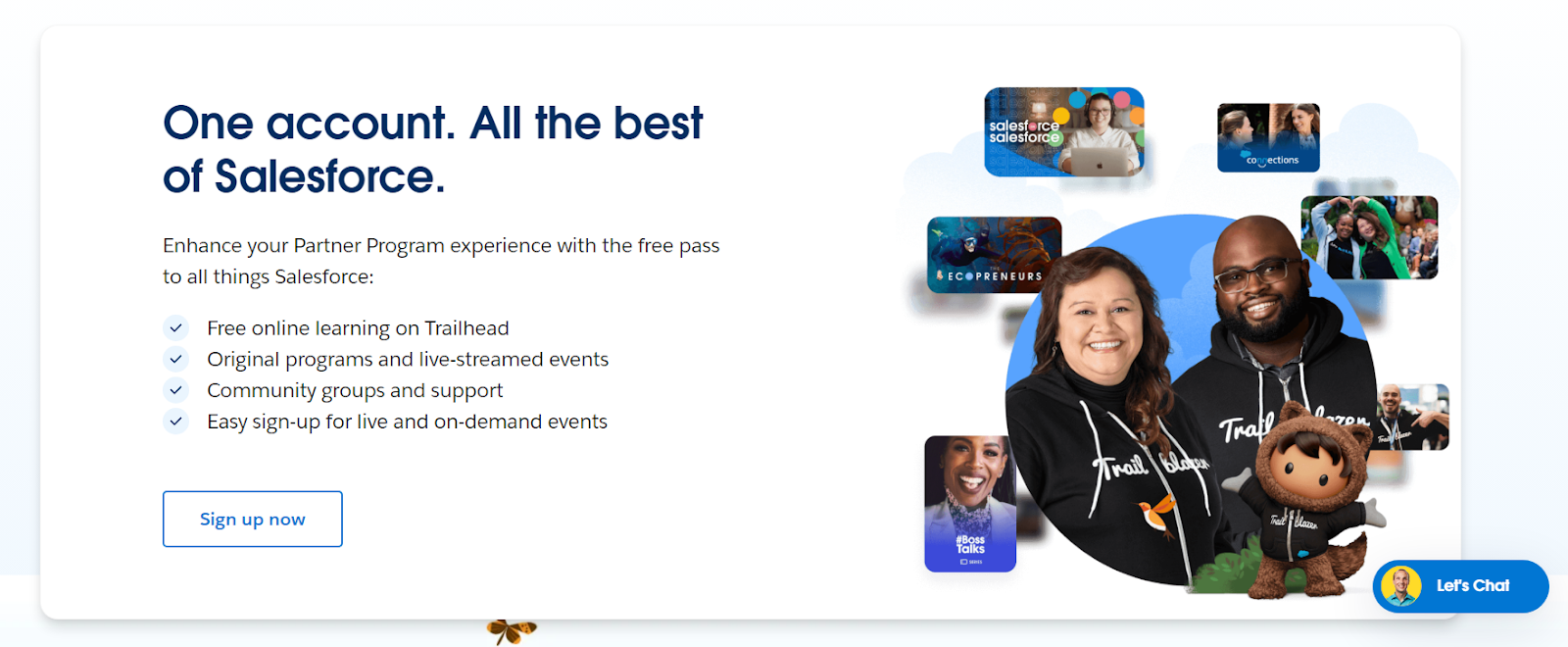
You may need to work with your partners to create shared databases, application programming interfaces (APIs), and other interfaces. These tools let you share data and build compatible systems. An experienced integration partner can guide you through this process.
2. Channel partnerships
A channel partner sells your products and services on your behalf. They receive a cut of the profits for every sale they make. Some people refer to these partnerships as indirect sales.
Channel partnerships let you expand into new markets with less investment. Your partner will advertise your products and services to their existing clients. That way, you can spend less on marketing. You also won’t need to set up new locations or hire new staff. Instead, you can rely on your partner’s existing resources.

In 1955, McDonald’s and Coca-Cola formed one of the most famous channel partnerships. McDonald’s agreed to exclusively sell Coca-Cola beverages in all its restaurants. In exchange, Coca-Cola promised not to sell its products to McDonald’s competitors at lower prices. The fast food chain has also operated out of global Coca-Cola offices as it expanded to new regions.
3. Strategic partnerships
Strategic partnerships are long-term relationships between two companies working toward the same goal. These collaborations can take many forms depending on the partners’ strategies. For example, you could collaborate to develop products or marketing campaigns. Some companies also form community partner programs for charitable causes.
In 2018, Nike partnered strategically with the nonprofit organization Girls Inc. This group offers services for girls ages six to 18 across the United States and Canada. Nike supports Girls Inc.’s Sporting Chance program to encourage girls to participate in sports and get active.
4. Brand affiliates
Brand affiliates are individuals who promote your products or services. They typically post ads for your brand on their social media or websites. These ads have tracking links that let you see how many clients visit your website and buy something. You’ll pay a flat fee or commission for every sale or lead your affiliates net.
Affiliate marketing is more informal than channel partnerships. You may have dozens or hundreds of affiliates who share your products. However, they work independently and don’t help companies reach common goals. In other words, they’re short-term contractors, not long-term business partners.
Tens of thousands of affiliates take part in the Amazon partner program. They share products and earn up to 10% commission from qualifying purchases.
Establishing a successful partner program
There’s no one-size-fits-all approach to setting up a partner program. It’s important to tailor your approach to fit the goals and needs of you and your partners. Still, these basic steps can help you create a strong foundation.
Find the right partners for business growth
In many ways, a partner program is like a marriage. You and your partner have a shared vision for your future and are committed to supporting each other. Your partner can also affect your finances and reputation. That’s why it’s essential to pick your collaborators carefully.
Ask yourself these questions as you consider potential partners:
- Do we have compatible business goals and values?
- What is their customer base?
- Do they have a positive reputation?
- Has this company successfully collaborated with other partners before?
- Are they eager to invest time and money into your partnership?
- Are they financially stable?
- What resources do they have?
- Does their staff have strong communication and project management skills?
Don’t hesitate to turn down partnerships that seem like the wrong fit. Like in marriage, it’s better to hold out for your ideal partner than get stuck in a bad relationship.
Build win-win relationships
Like any good relationship, a partnership program should benefit both parties. That way, each partner will feel valued and invested in the success of the collaboration.
Create a win-win scenario by working with your partner to develop shared goals. These goals should fit both businesses’ strategic priorities.
Examples of shared goals include:
- Cross-sell products and services
- Improve the customer experience
- Expand into new markets
- Build brand awareness
- Organize industry events together
- Launch a shared marketing campaign
Develop formal processes
Create formal processes at the beginning of your partnership so everyone is on the same page.
You can start by creating clear communication channels between your businesses. You could choose a point person for your partner to contact if they need information or help. You should also ask for regular progress reports to make sure everyone stays on track to meet your goals.
It’s also essential to standardize procedures and workflows. Work with your partner to create common guidelines and templates, such as standard contracts for new clients and data-sharing policies.
Additionally, you may need to train your partner so they can represent your business effectively. For instance, you could give them brand guidelines to use in marketing. You could also create an online webinar to teach their sales team how to pitch your products.
Offer ongoing support
Successful partnerships are long-term investments. You need to offer continuous support if you want your collaboration to thrive. It may be helpful to create a dedicated support team for your partner. You should also help your collaborator overcome challenges and offer resources as needed.
Planning your partner program
These preliminary steps can help you plan successful collaborations after you’ve found partners.
Optimize for common customer segments
Account mapping helps you and your partner compare clients and opportunities. You can use this process to find overlapping customer segments.
For example, suppose you and your partner have a large audience of teenage girls. You can target this demographic to cross-sell your products and increase sales.
Define timeframes and revenue expectations
Partnership programs often don’t achieve overnight success. After all, it takes time to build meaningful relationships and develop shared processes. As a result, you may not see success for a year or longer.
Work with your partner to define clear timeframes and milestones. You can also use predictive analytics software to set revenue expectations. These steps help make sure everyone has realistic expectations for the program.
Secure executive buy-in
Executive buy-in ensures you have the time you need to build relationships. Set clear expectations upfront and explain your timeline. You should also give frequent progress reports. These updates will help your leaders understand the value of your partnerships.
Implementing partner management software
Partner program software will help you reach your goals and improve your collaborations.
Constant Contact offers many tools to streamline partnerships:
- Our Enterprise Program lets you create consistent branding for your partnerships. You can also track performance with our data analytics tools.
- Our Business Partner Program lets partners earn revenue or give their clients discounted access to the platform.
- Our Agency Program simplifies client management for digital marketing agencies and freelancers. You can develop marketing campaigns, share revenue, and collect data.
Constant Contact’s email marketing automation software lets you communicate with your partners. For instance, you can send regular emails with updates and industry news. You can also create shared email lists to reach clients.
Building and launching a partner program
These simple steps can help you turn your partner program from an idea to a reality.
Defined program structure and goals
Creating shared goals is the first step to developing a successful partnership. These goals could include:
- Boosting sales
- Generating new leads
- Improving customer satisfaction
- Building brand authority
- Making an impact on the community
- Integrating technology
Your goals can help you determine the best structure for your program. If you want to integrate your software, you might work together to create a shared ecosystem. Or, you might prefer a channel partnership to reach new markets.
Application processes and terms setting
Some companies allow other businesses to apply to become their partners. This process lets you choose from interested applicants instead of cold-calling potential collaborators. Add an application form to your website for contact information and other details.
You should also create clear terms for your partners. Be sure to outline expectations, performance metrics, legal requirements, etc.
Software selection and asset creation
Streamline your collaborations with partner program software. Look for a platform with the features you need. For example, data analytics tools will help you track your performance.
You’ll also need to gather assets for your partners. These resources could include training programs and branding guidelines.
Outbound partner search and partner support
Networking can help you find new partners. Consider attending industry conferences and other events to make connections. You could also browse LinkedIn and company websites for leads.
Finally, you’ll need to support your partners. Offer onboarding so they can learn about your company’s expectations. You can also send regular emails with advice and updates.
Ensuring a win-win scenario
Work with your partners to create strategies that benefit both of you. Focus on shared goals that help both companies grow.
Additionally, it’s essential to provide value for your partner. For instance, you could pay a commission for sales from your referral partner program. Or you could promote their brand in your social media and email marketing campaigns.
Finally, you can use case studies as inspiration for your programs. The alliance between Barnes & Noble and Starbucks is one famous success story. Barnes & Noble lets the coffee chain operate inside many of its bookstores. Customers are more likely to read and buy books when they can sip coffee during their visit — meanwhile, Starbucks benefits from increased sales.
Future directions in partner programs
Partner programs can help you grow your reach and achieve your goals faster. There are several types of partnerships, including channel and strategic collaborations. Choosing the right structure will help you get the most out of your partnerships.
Get started by selecting a partner who sells complementary products or services. For example, if you sell workout gear, you could partner with a gym franchise. If you run a small farm, you might collaborate with local restaurants. These partnerships can open new opportunities and connect you with new clients.


